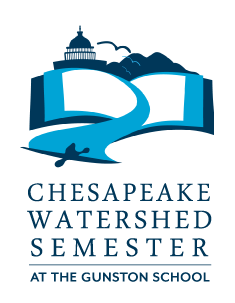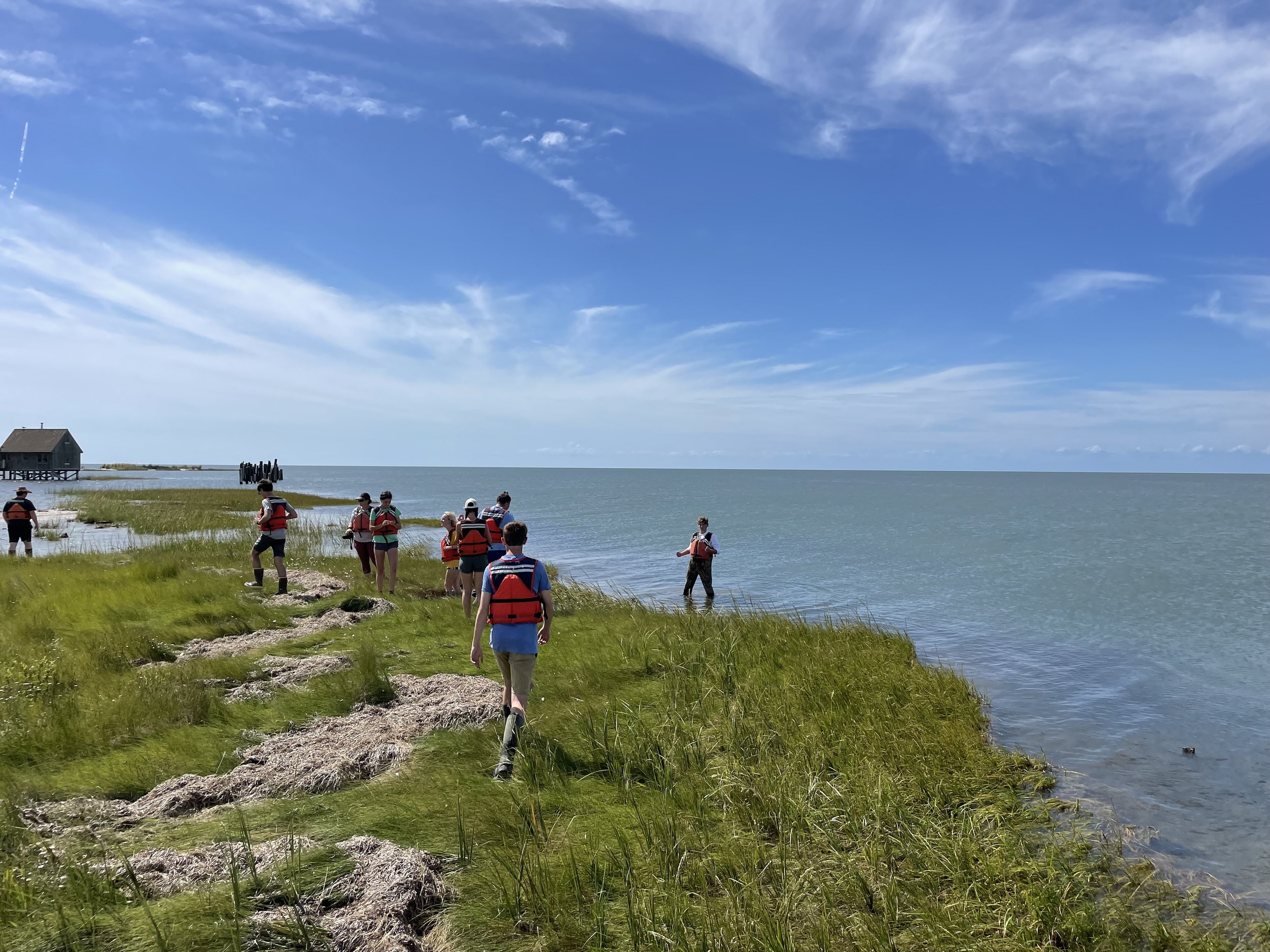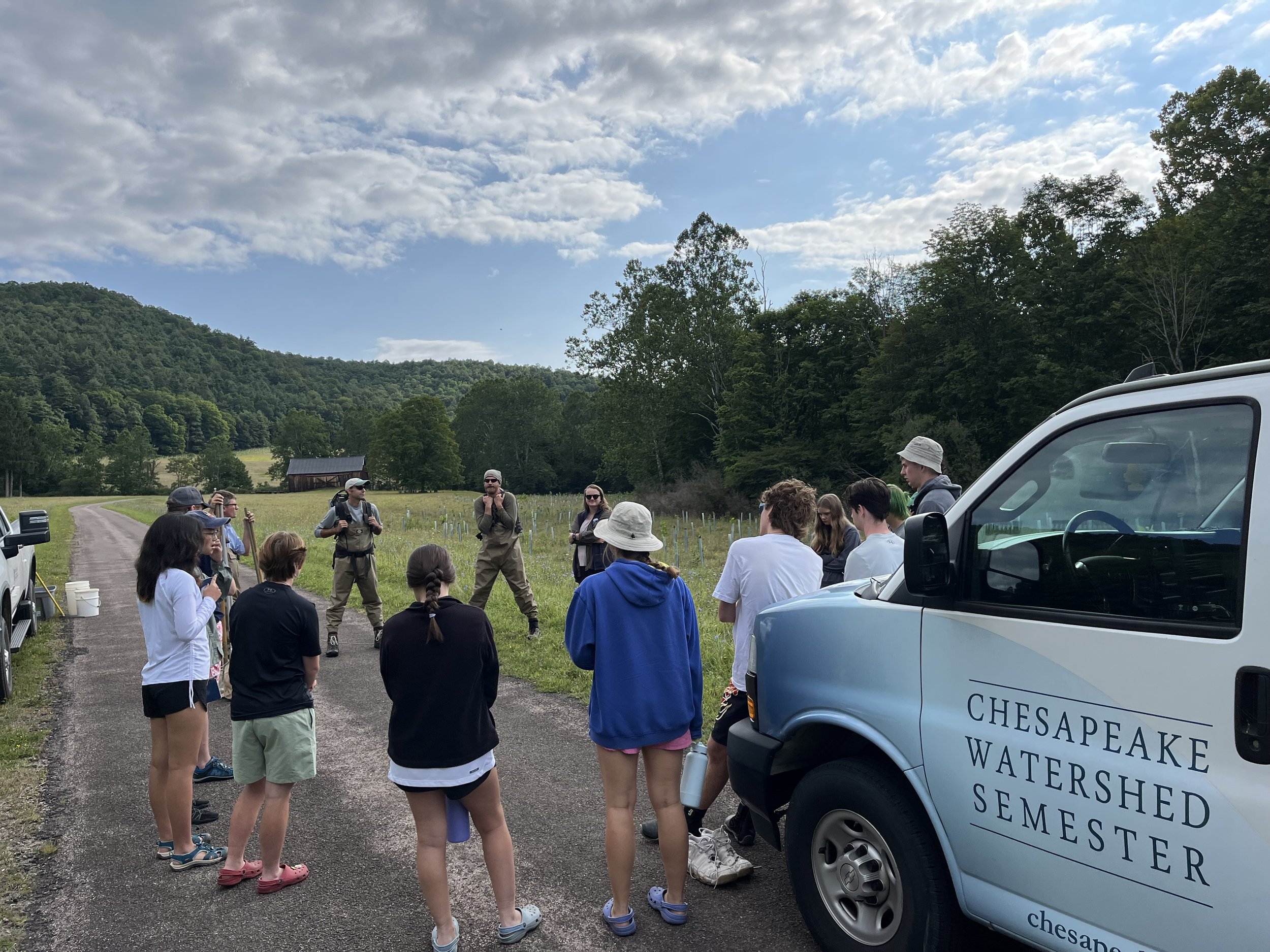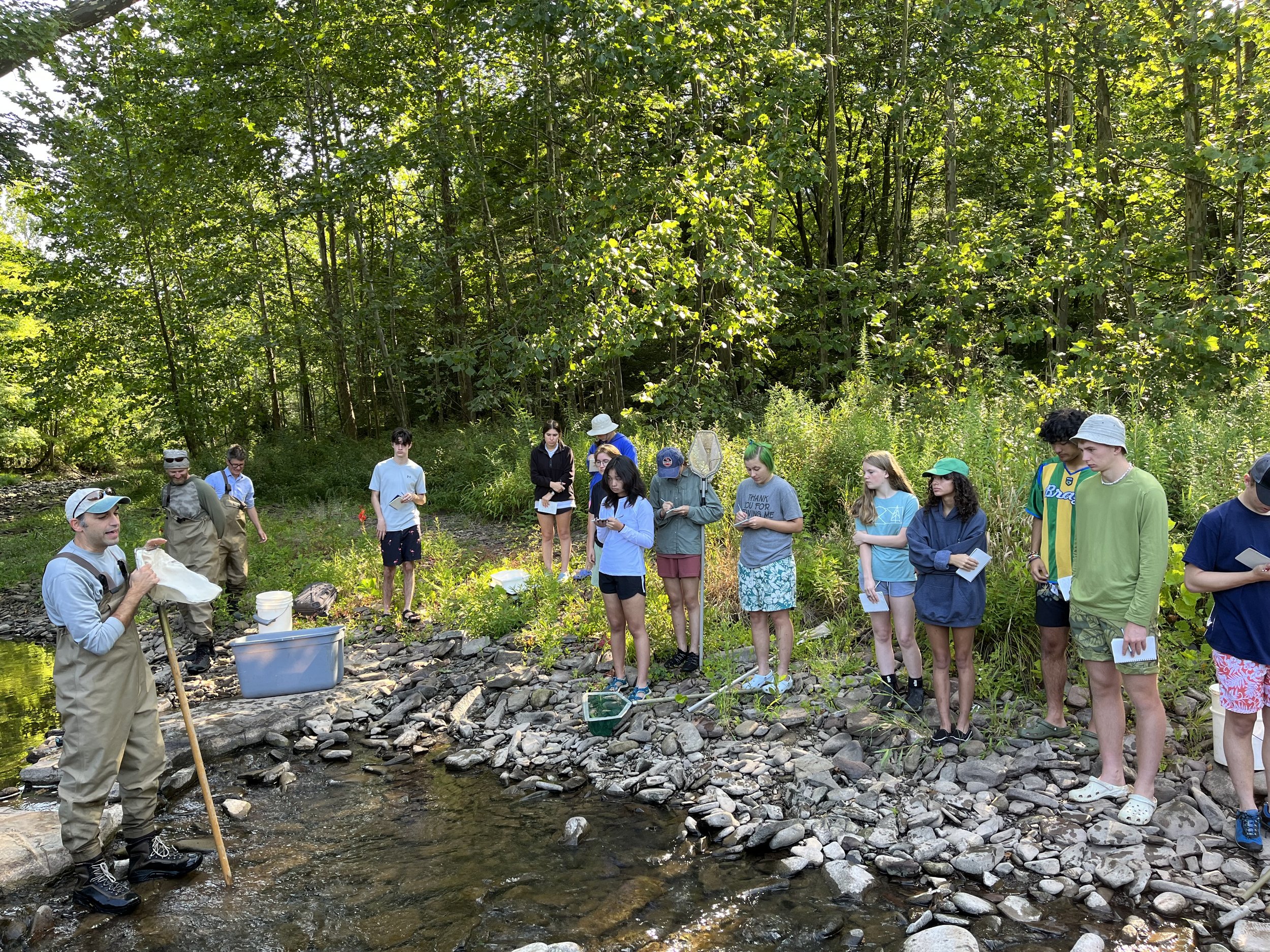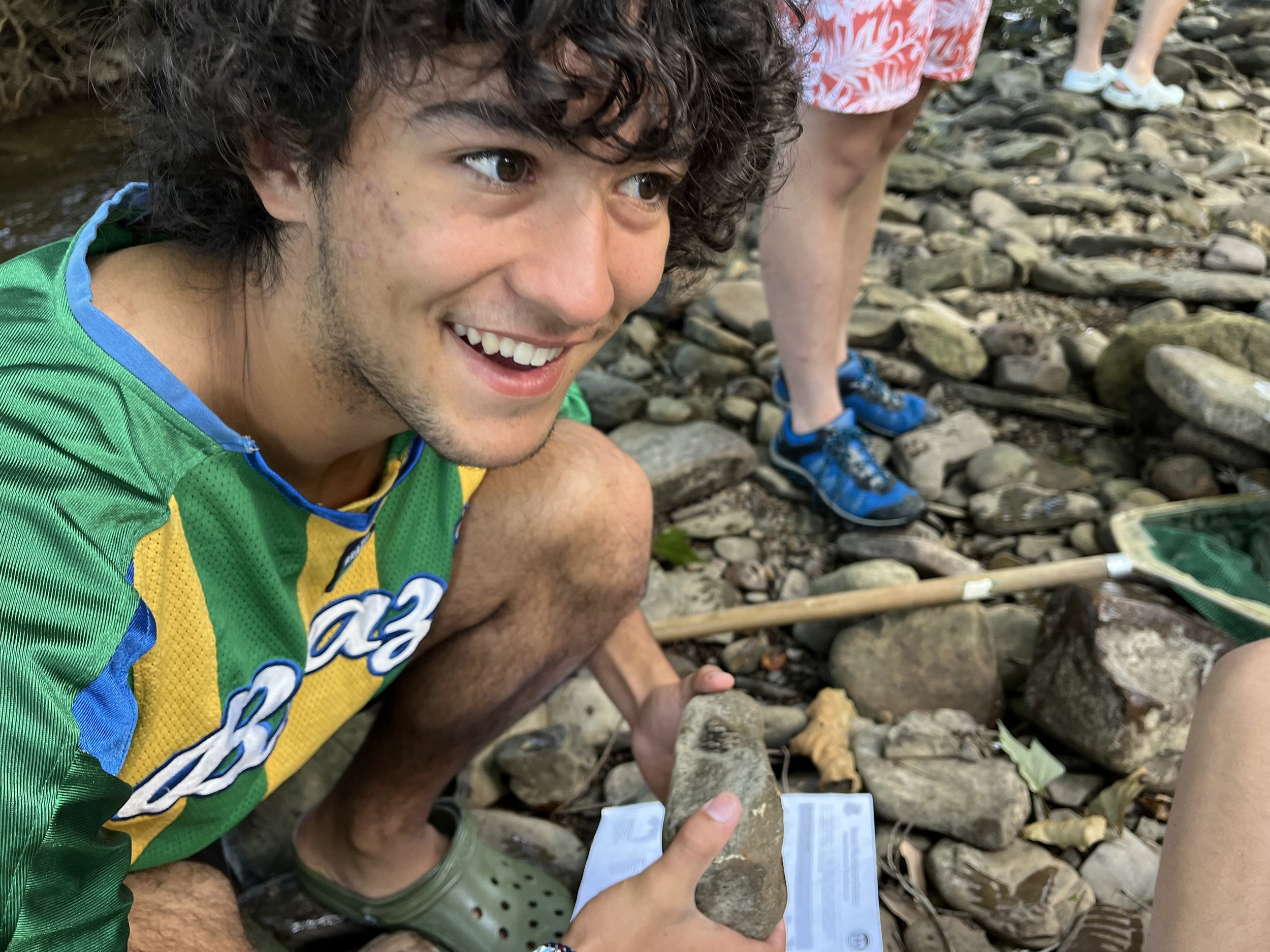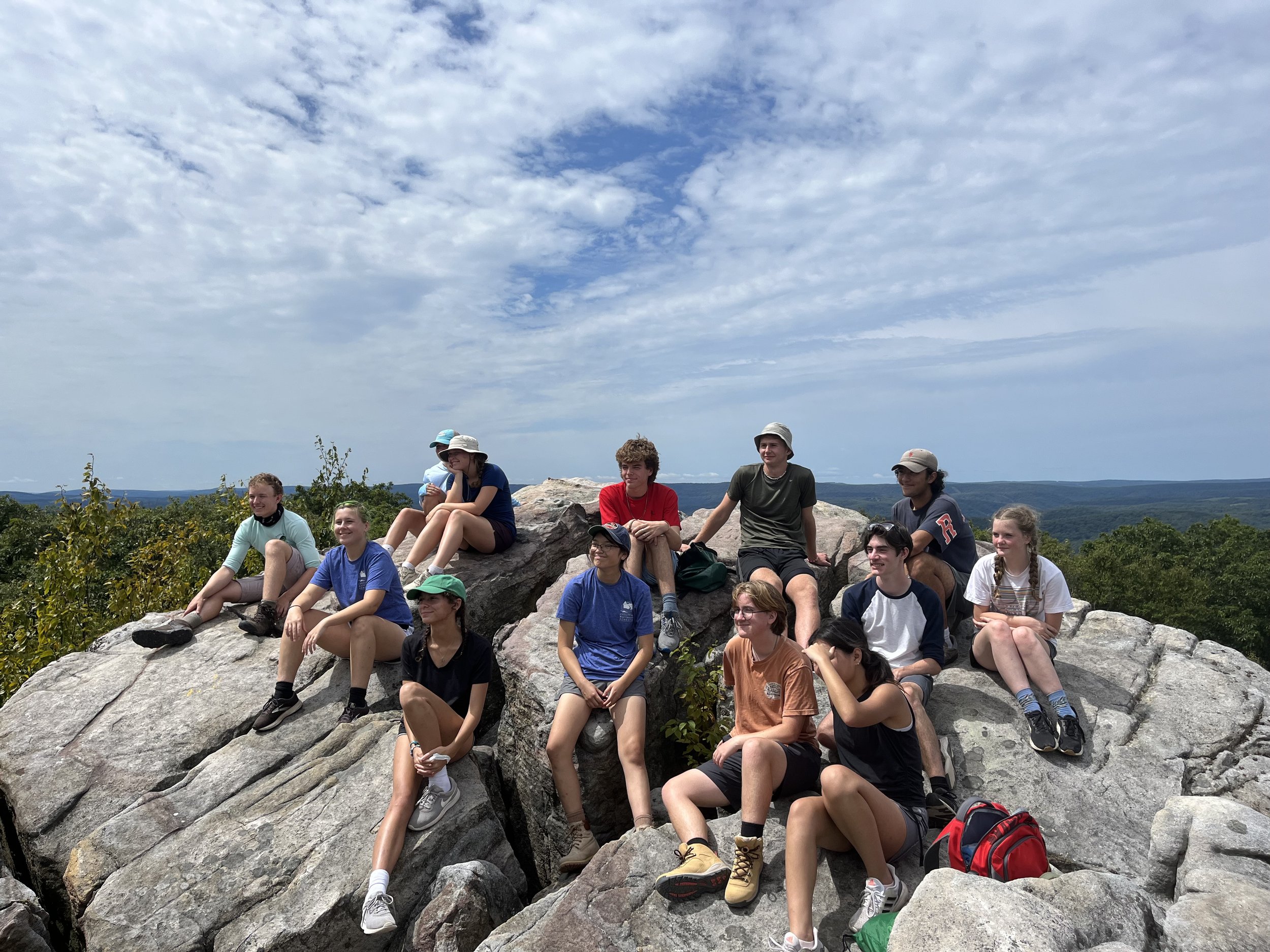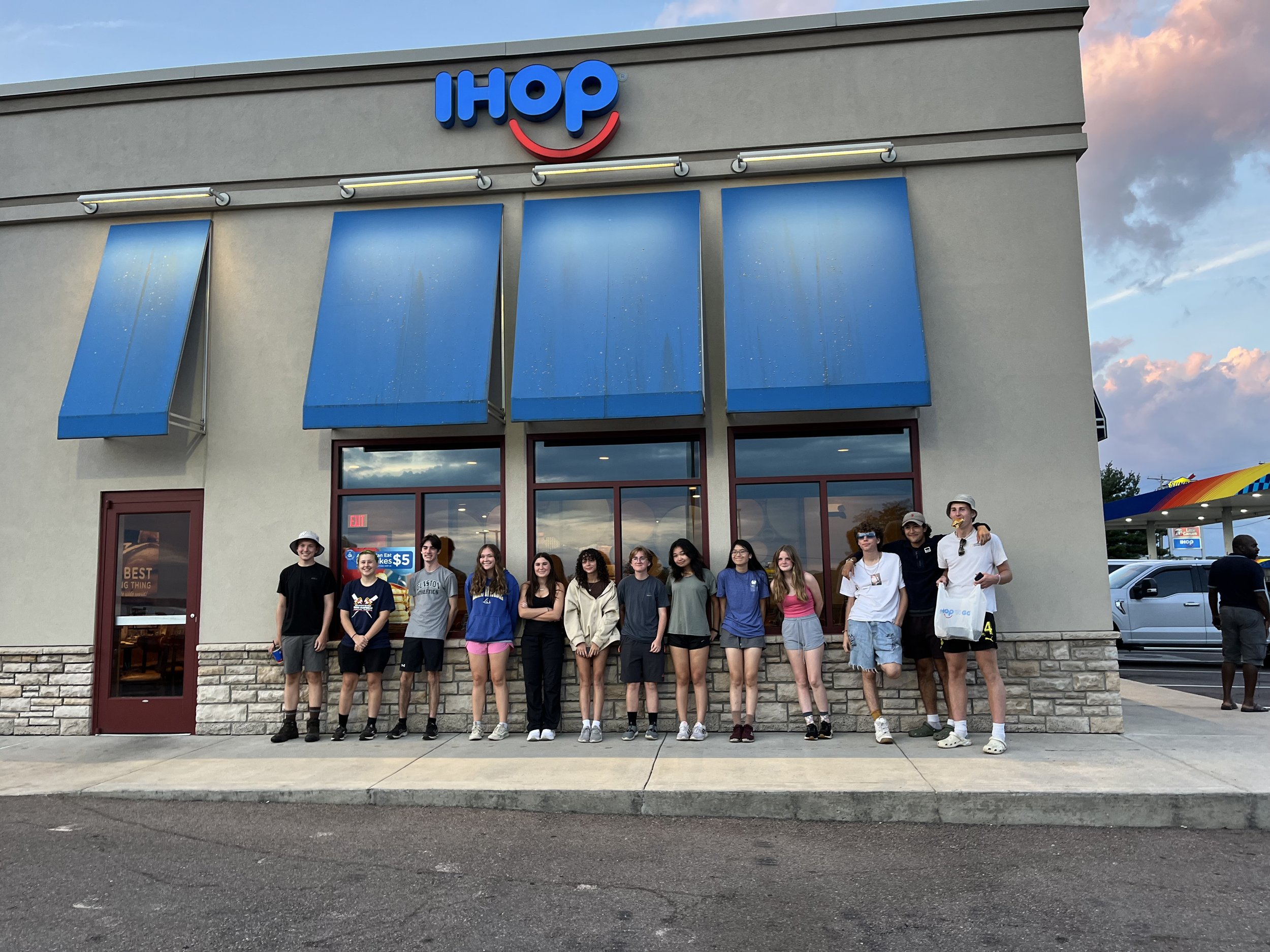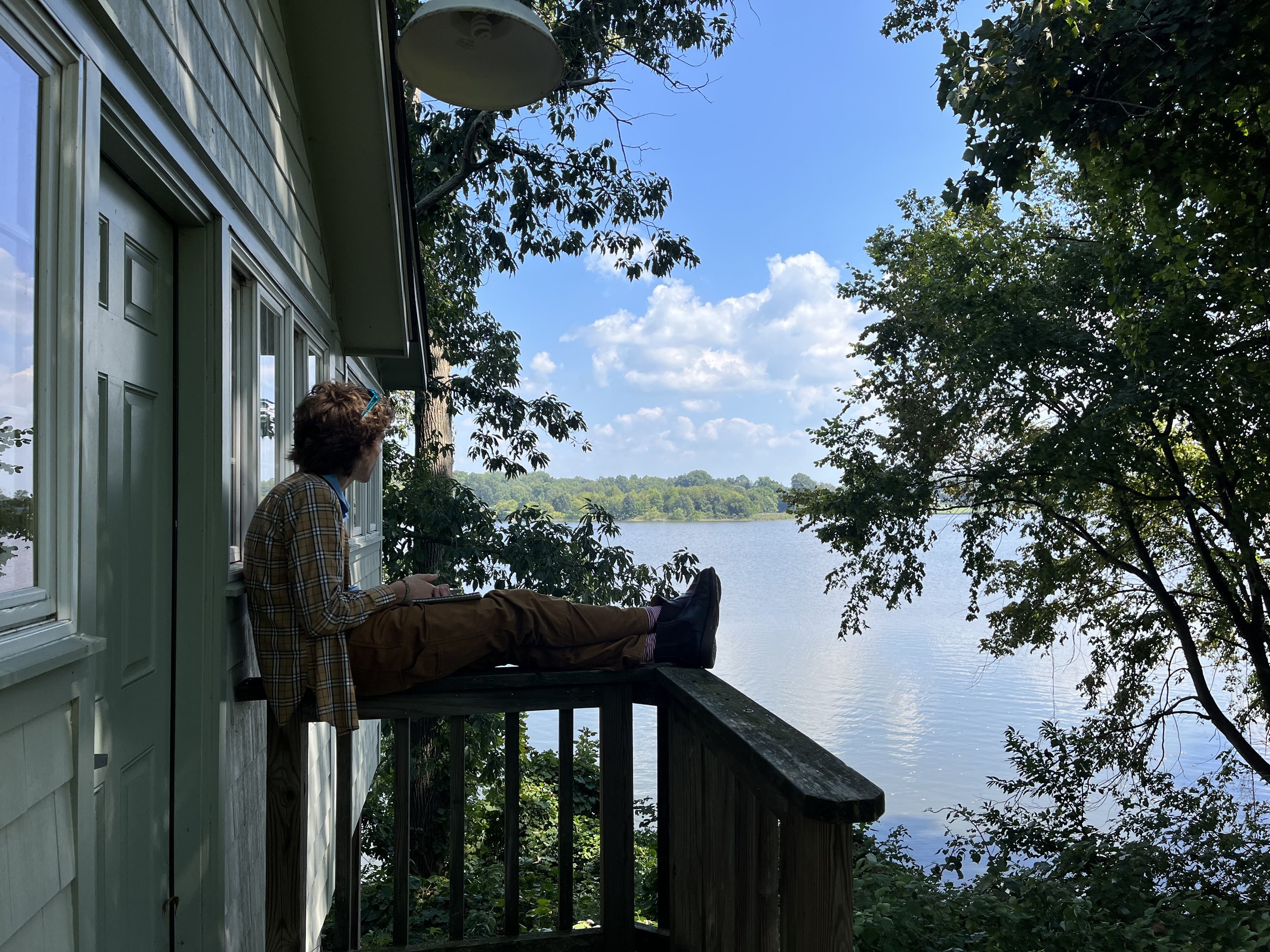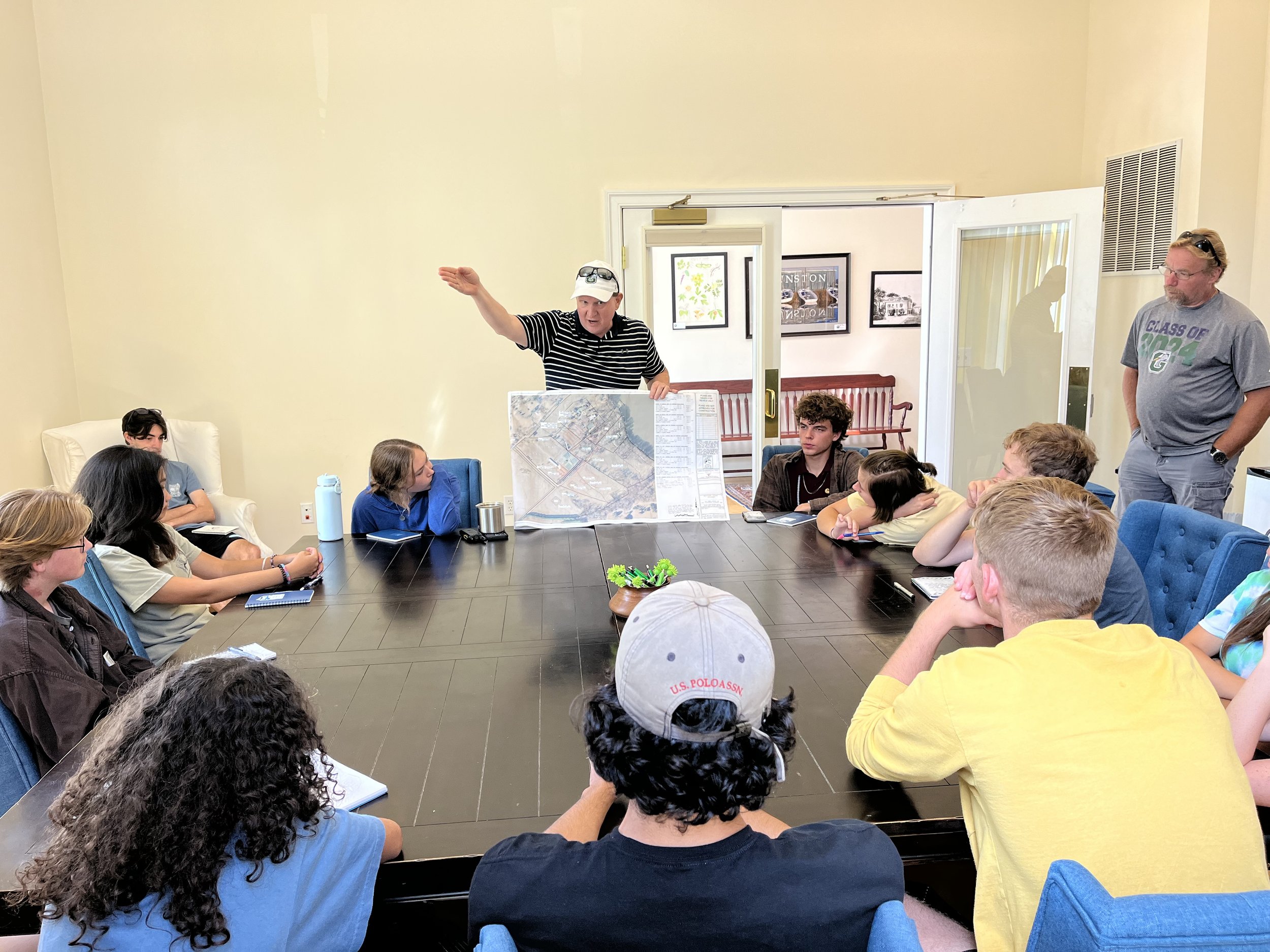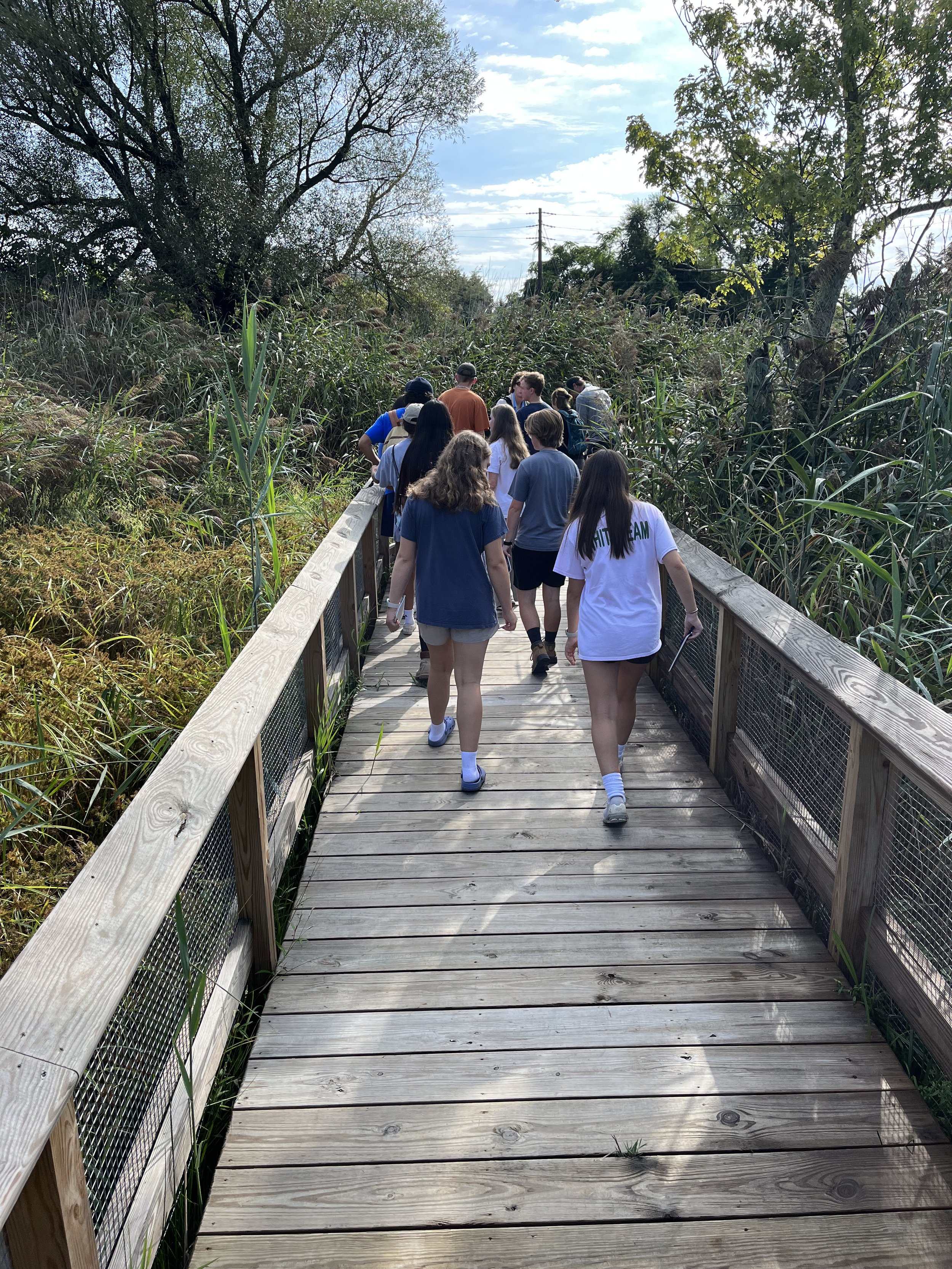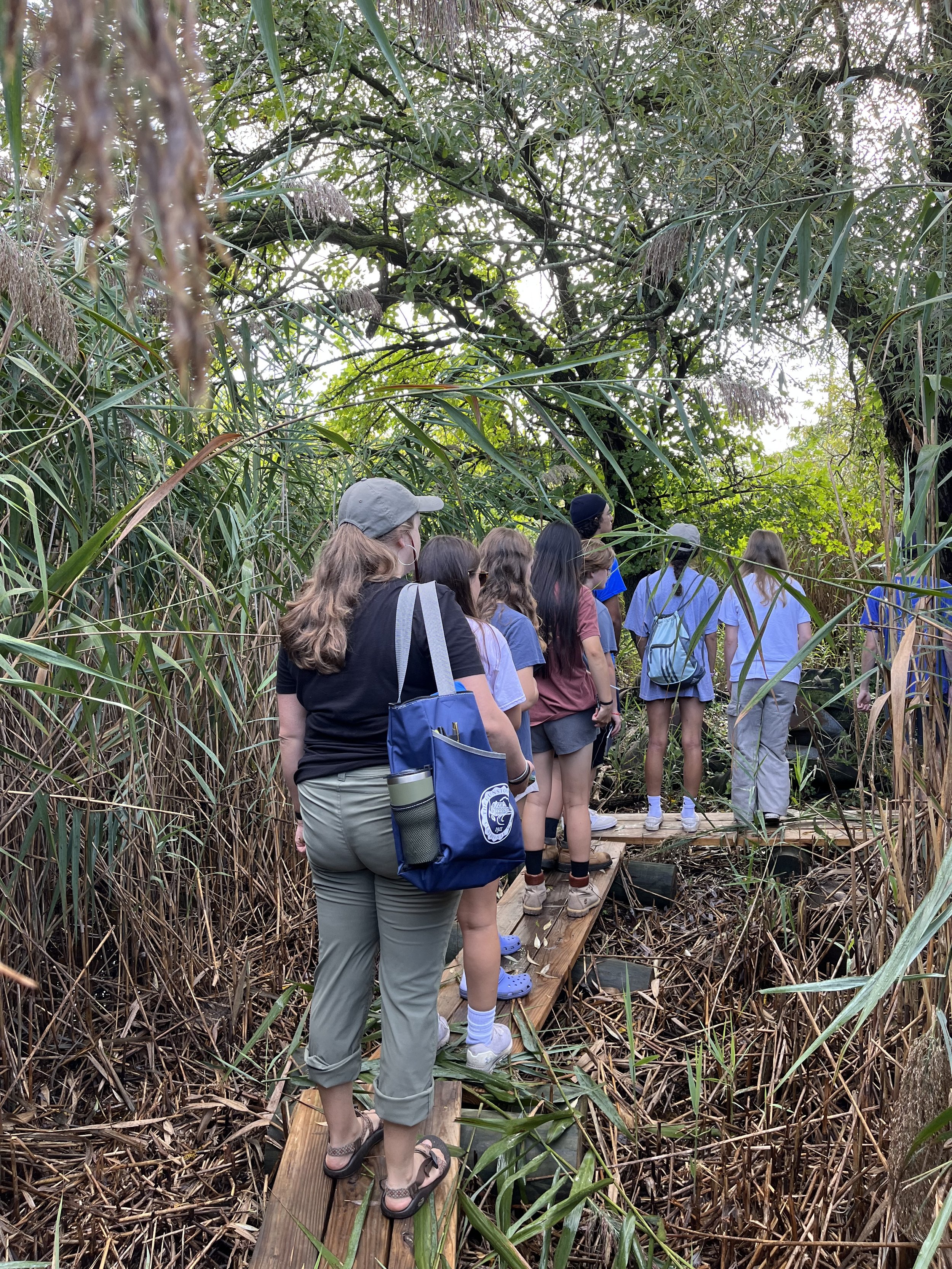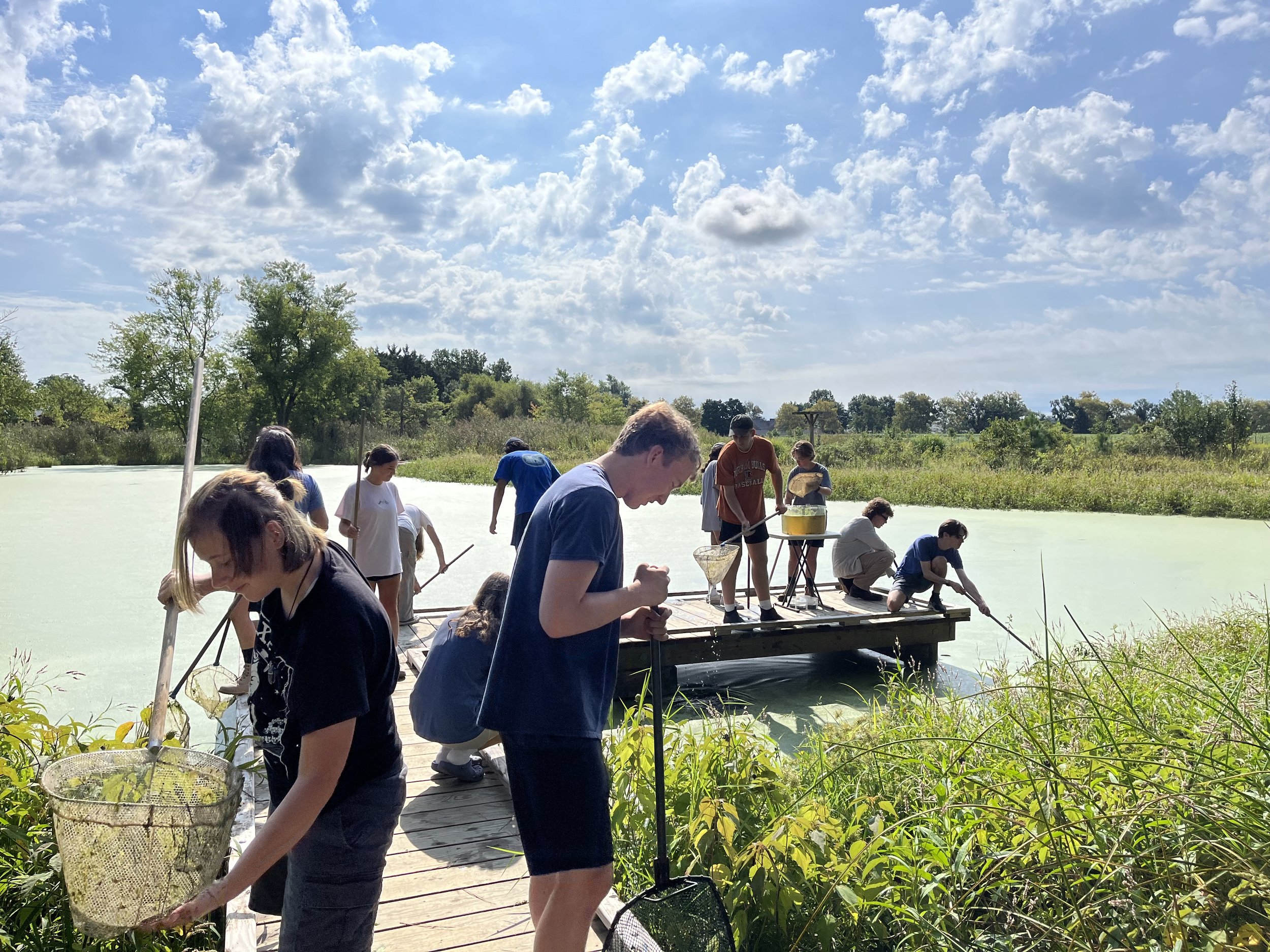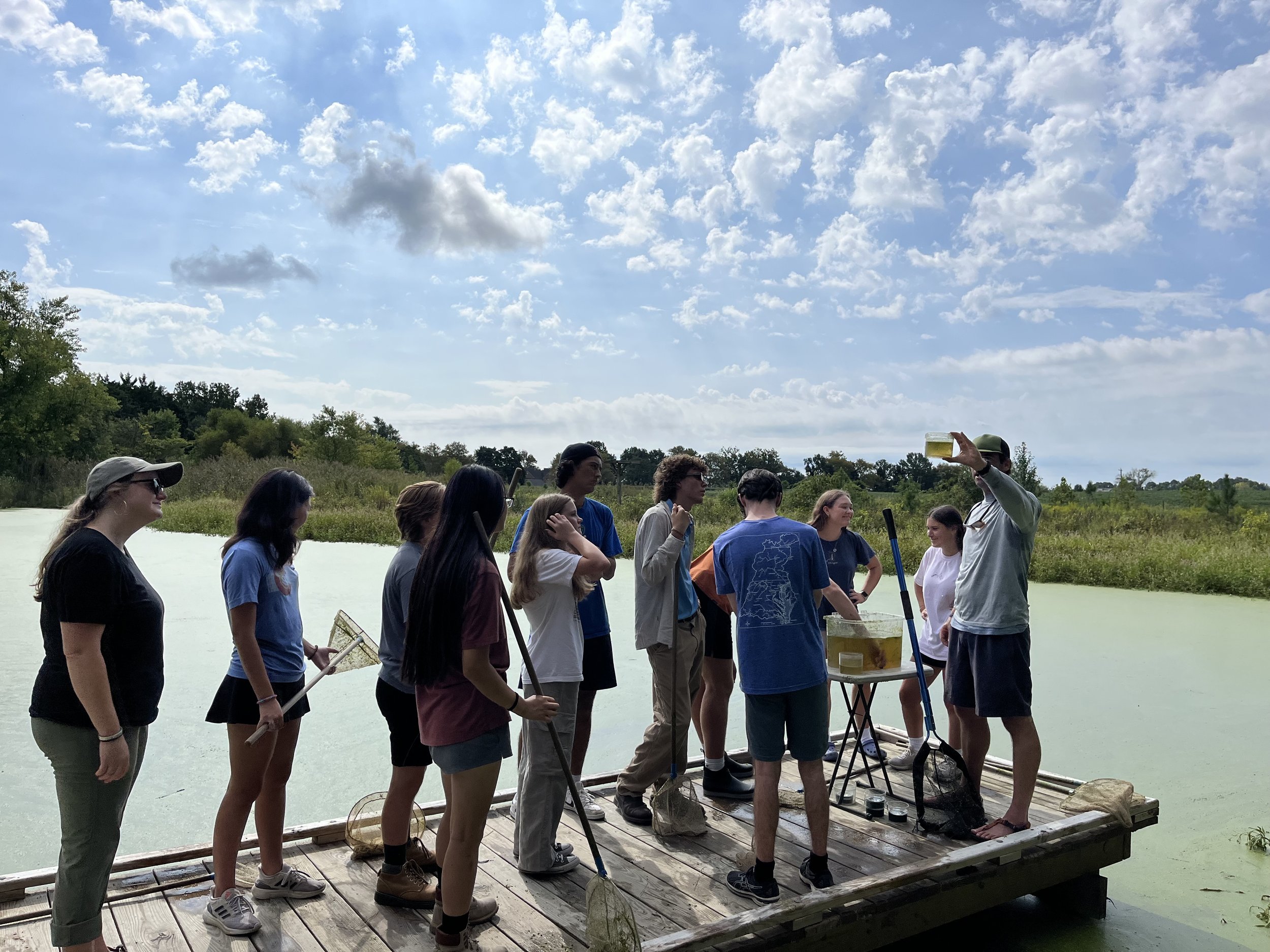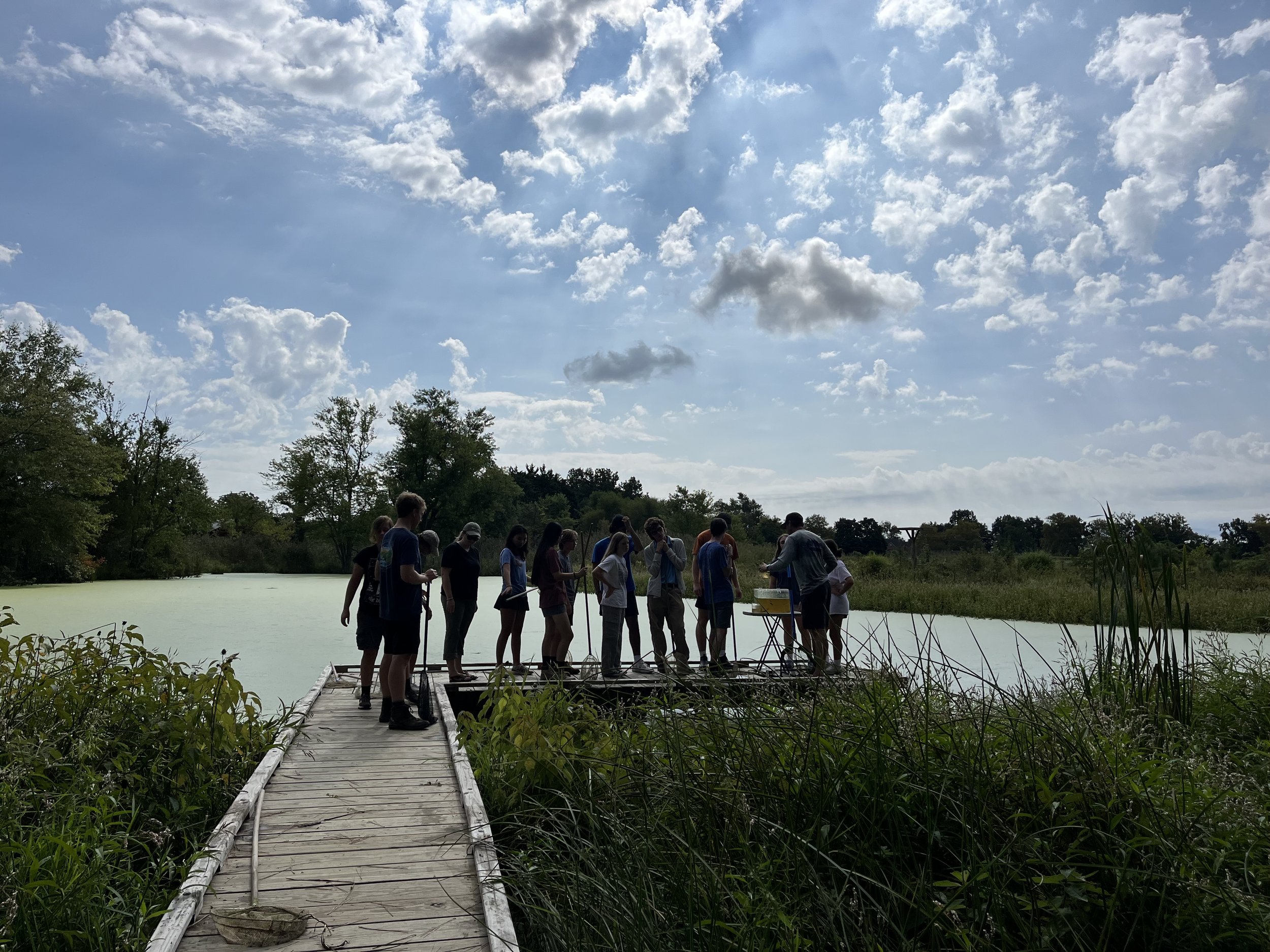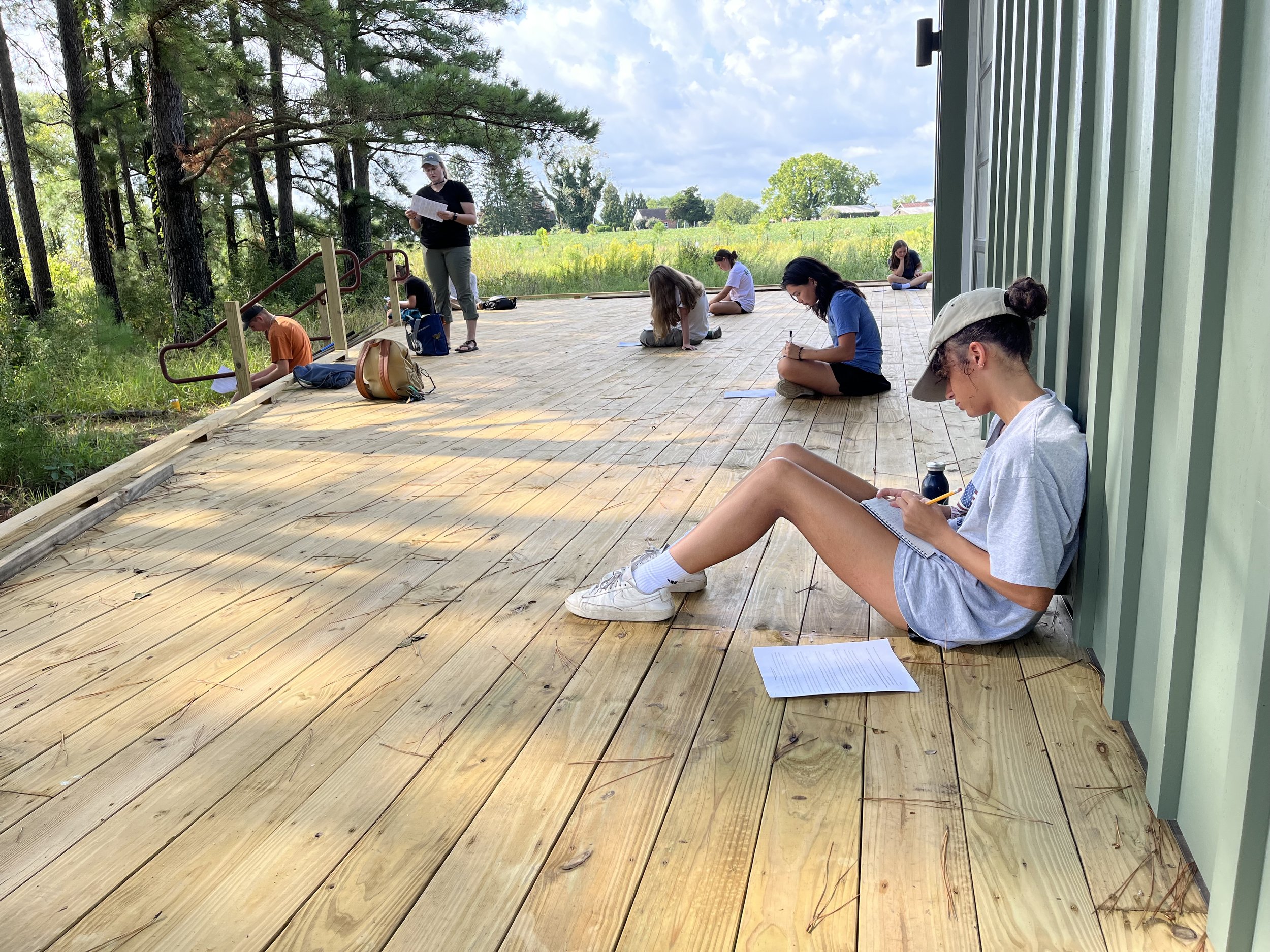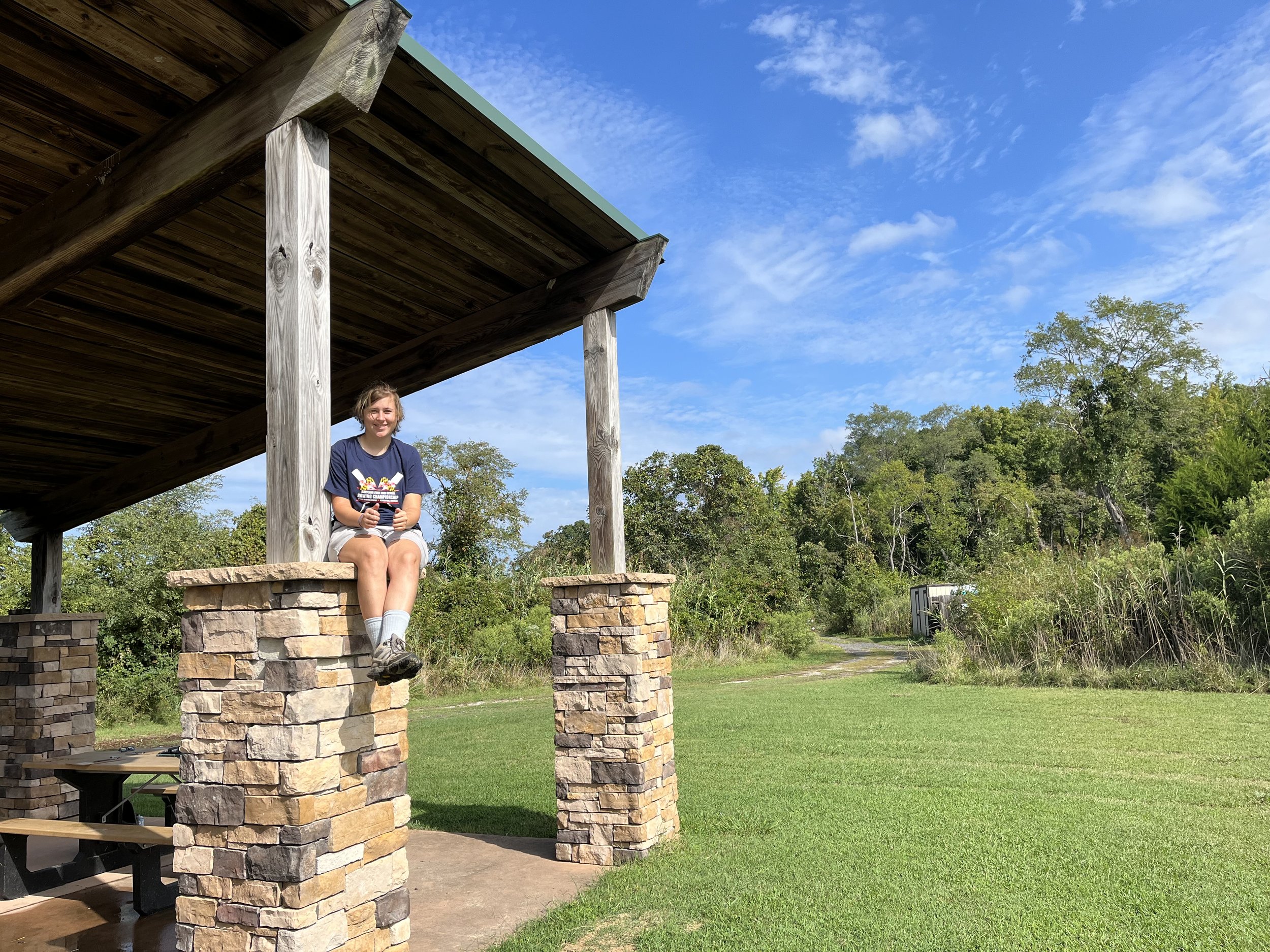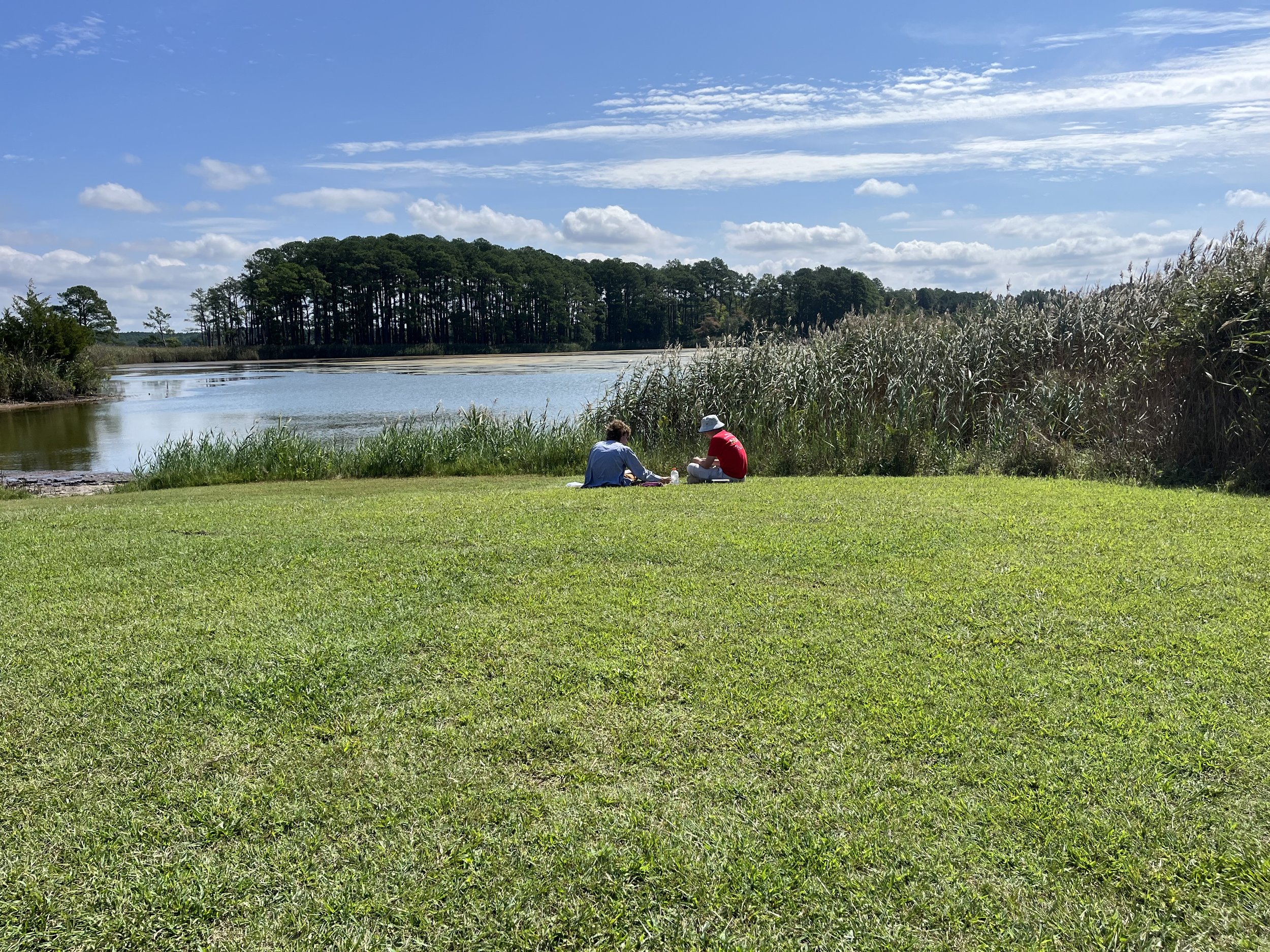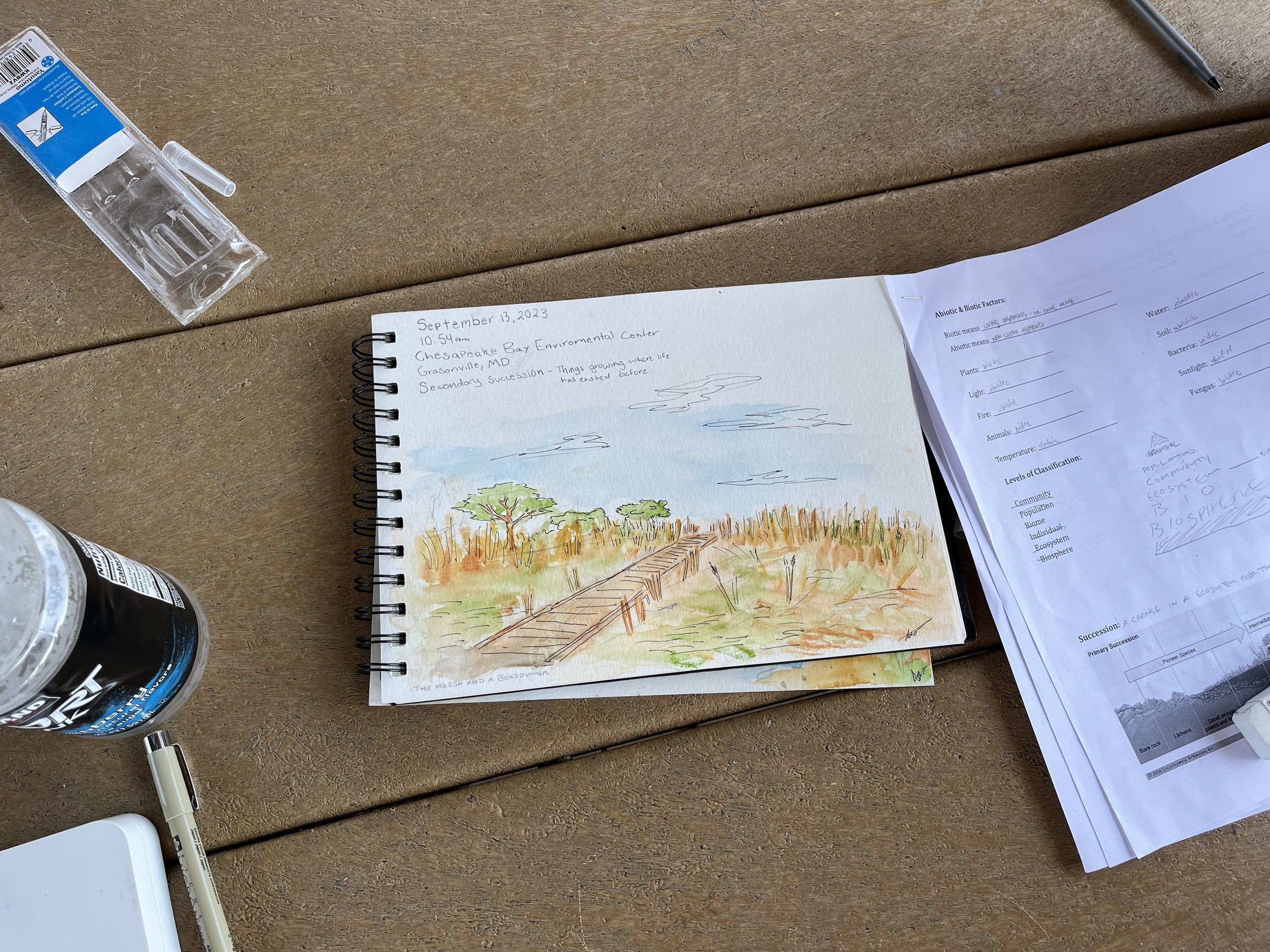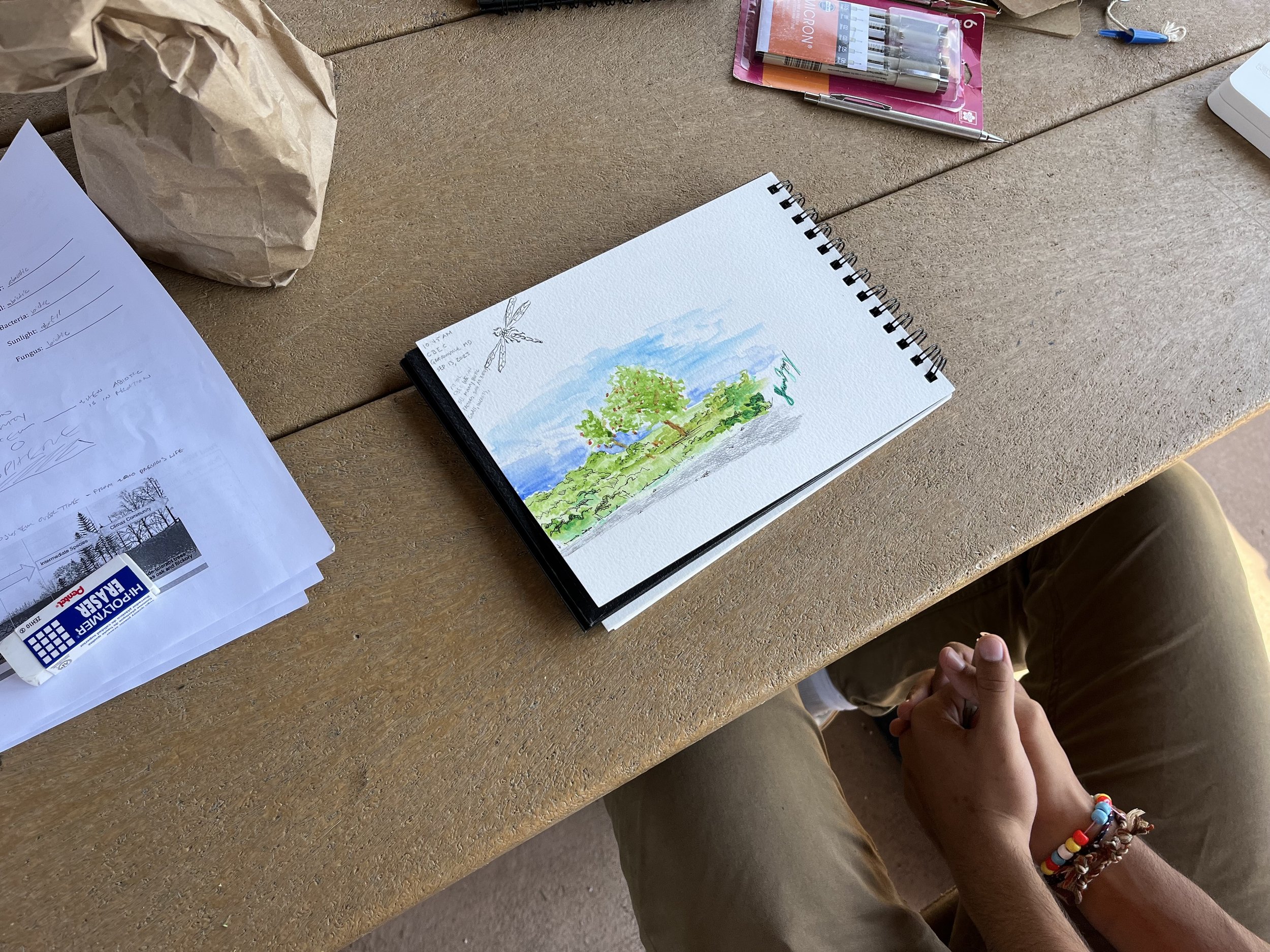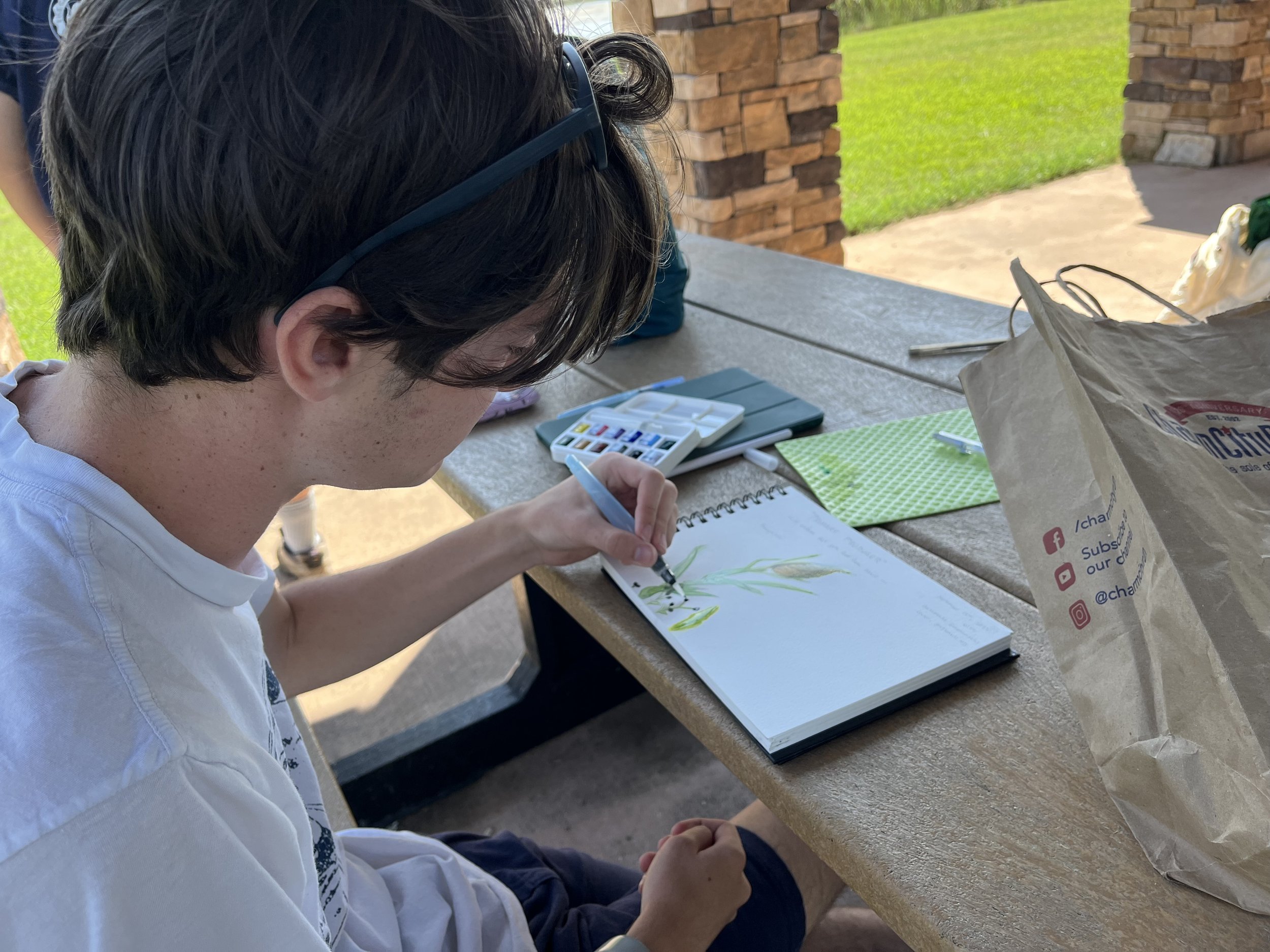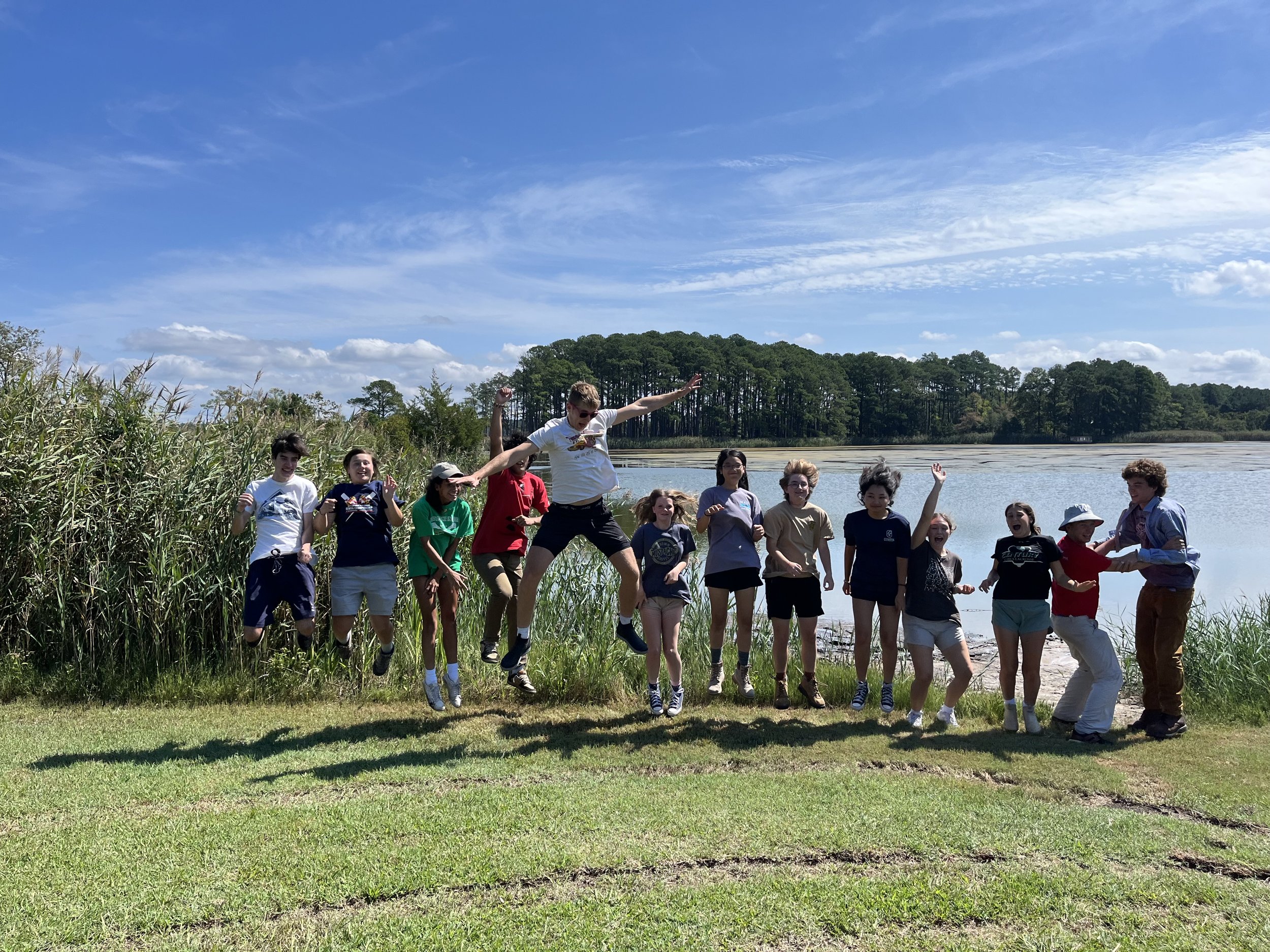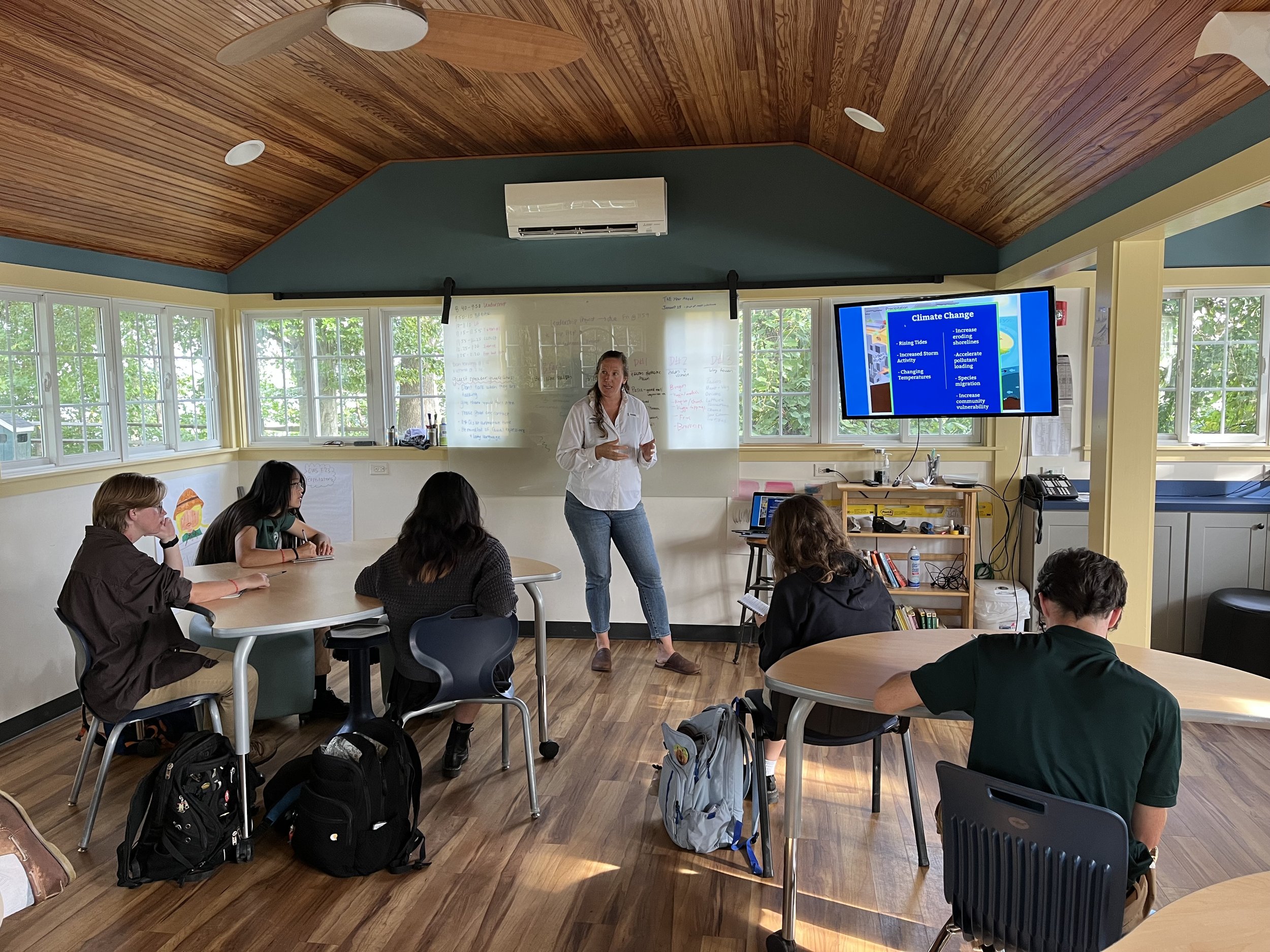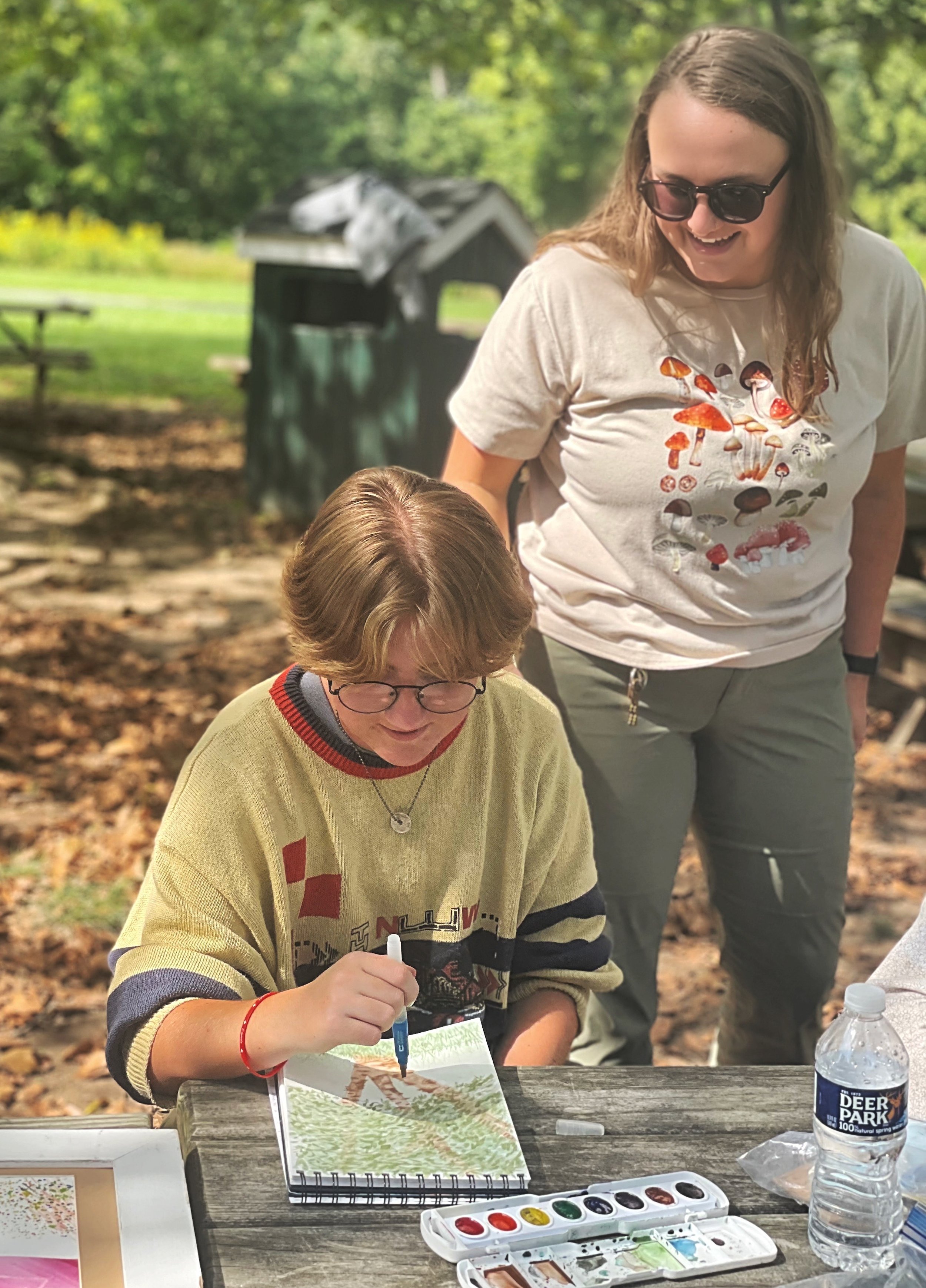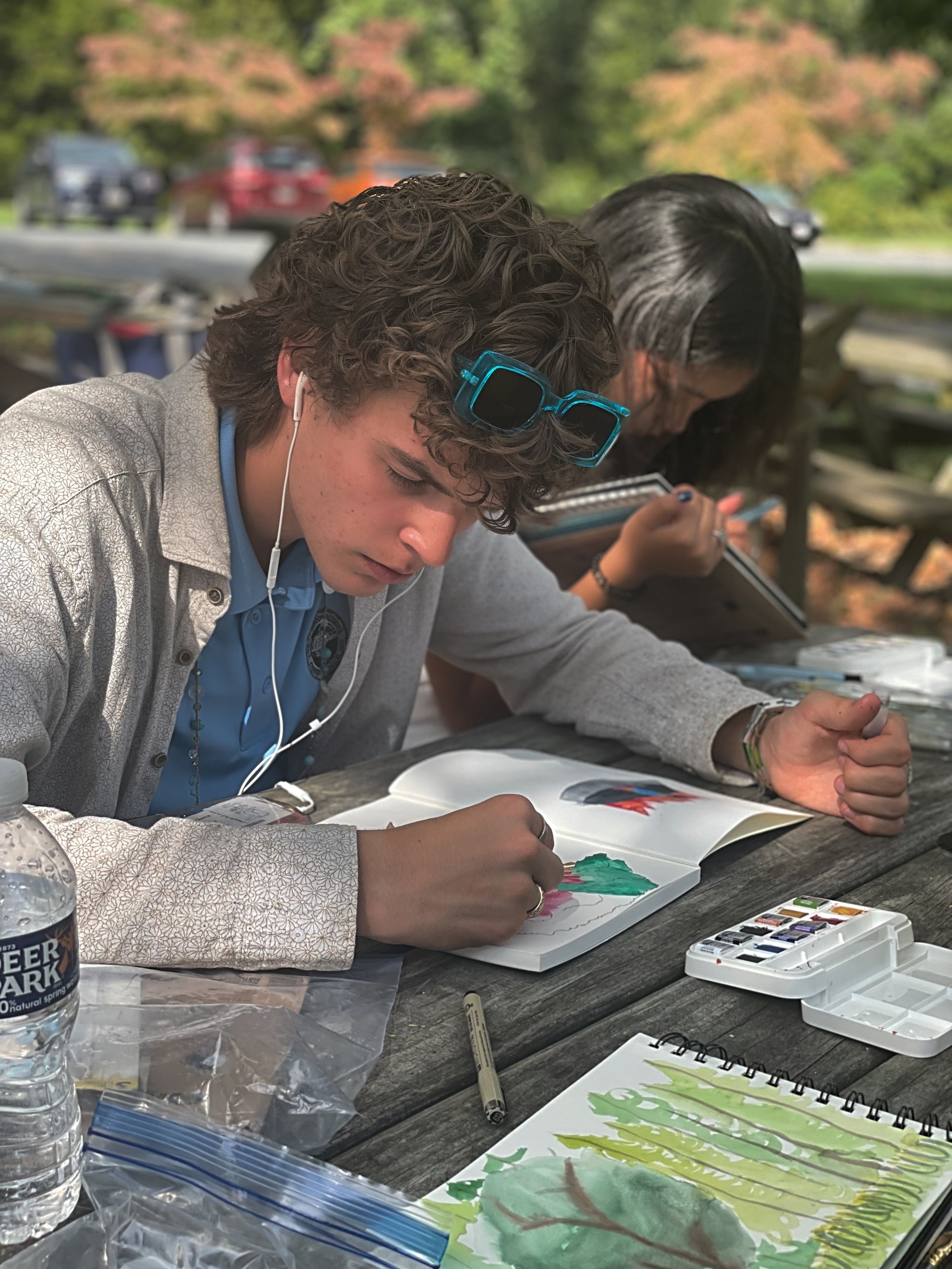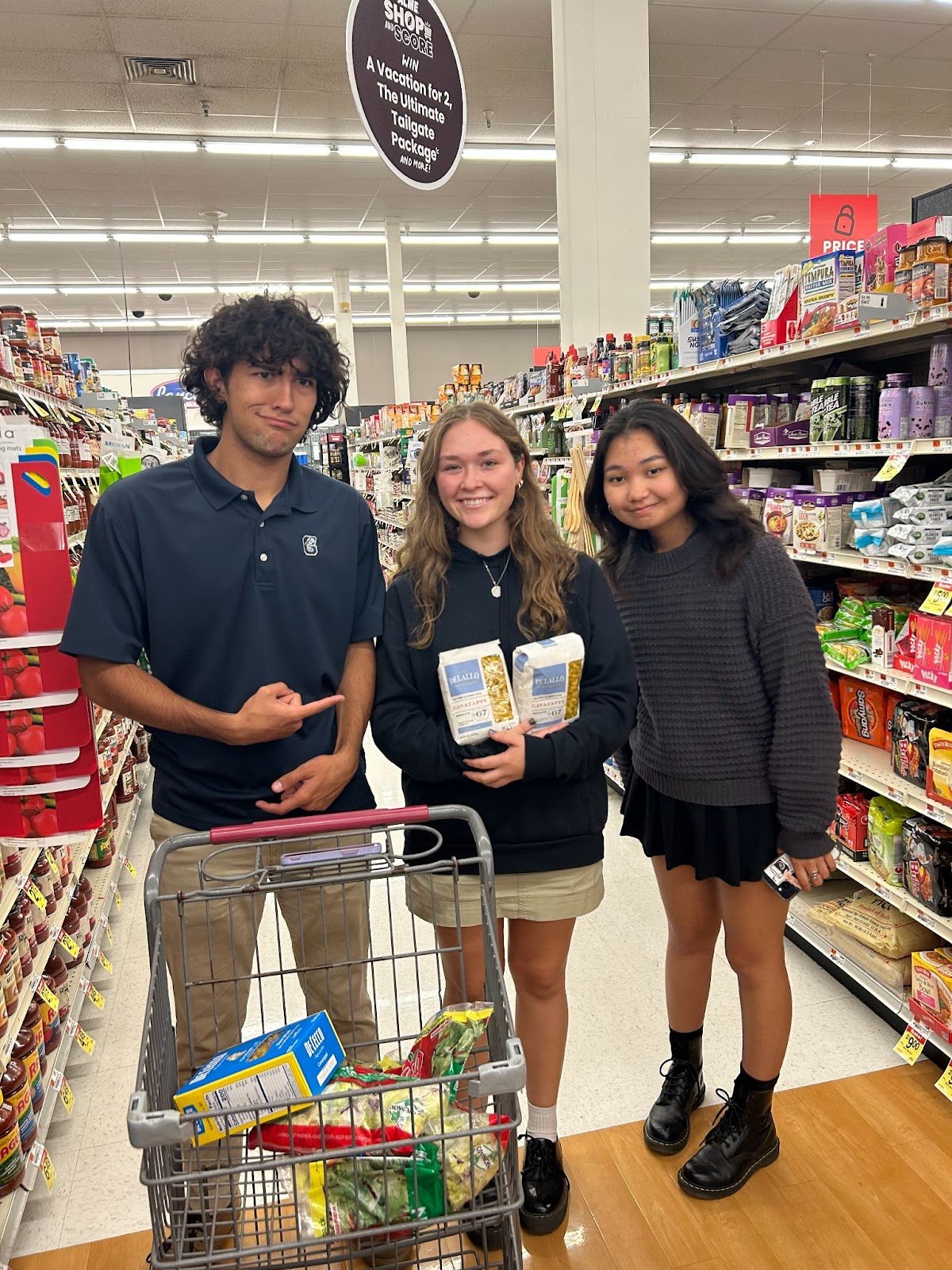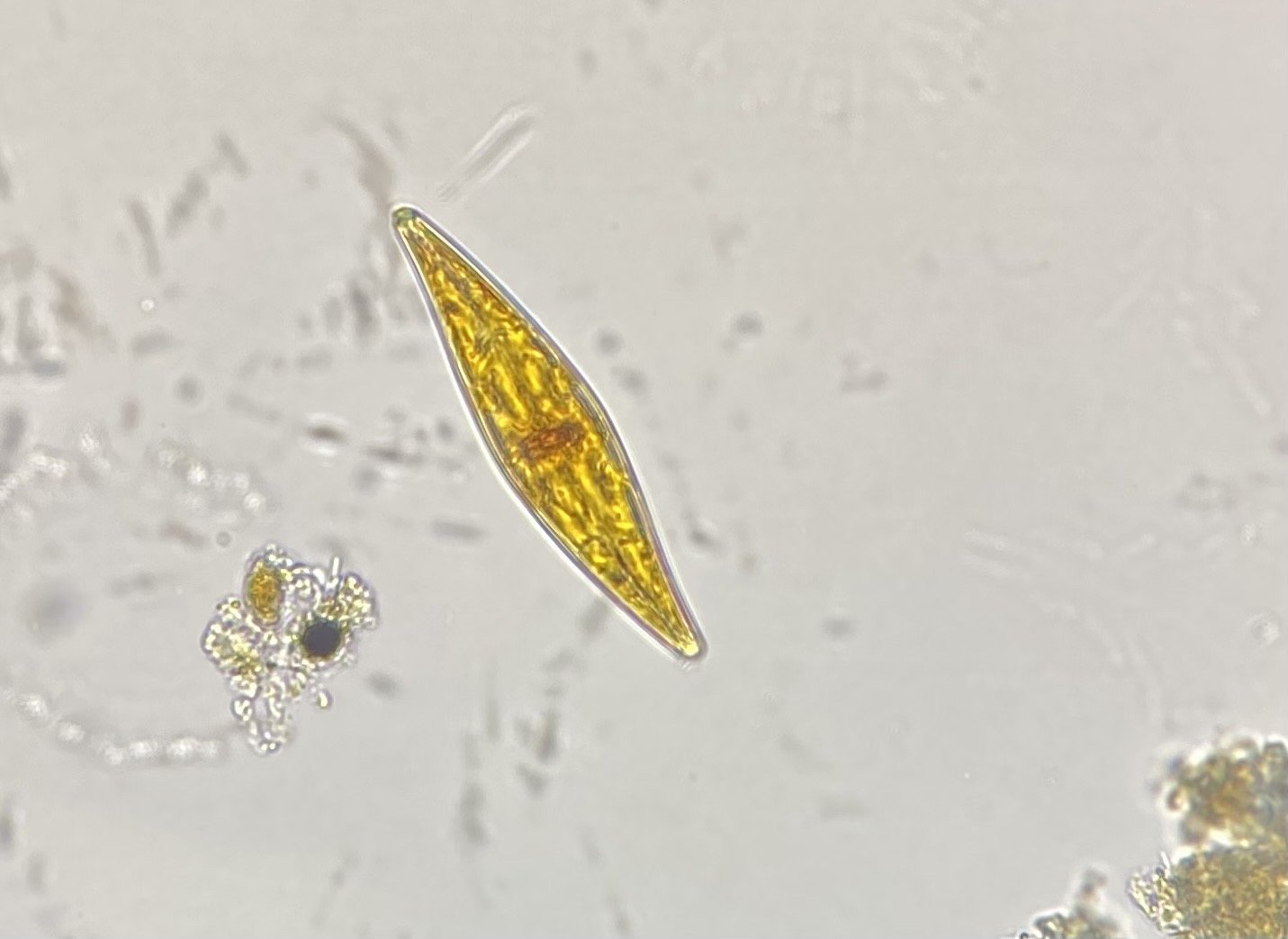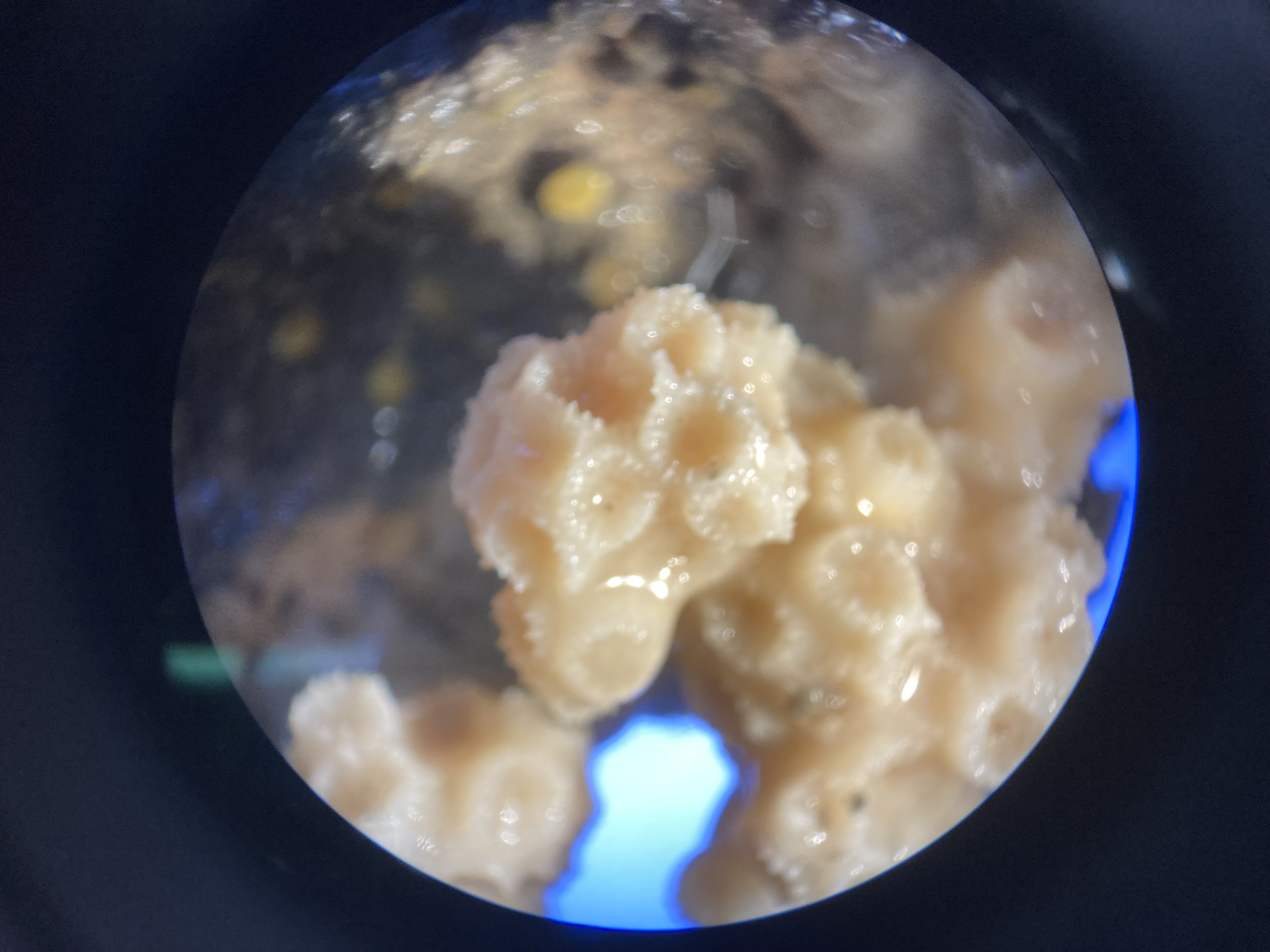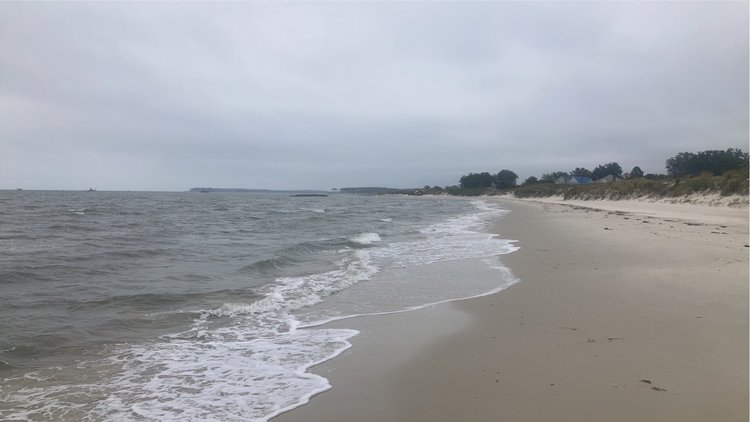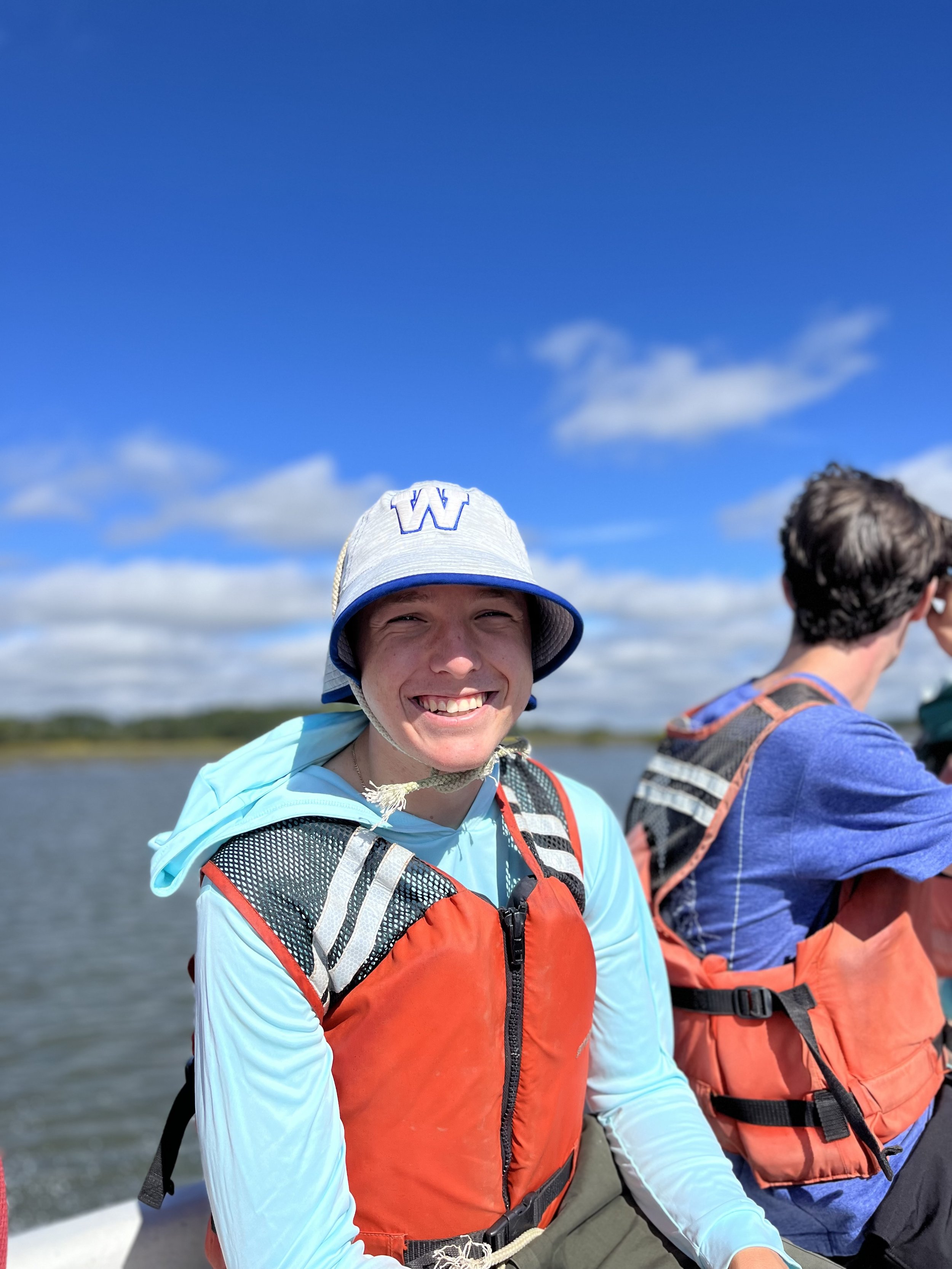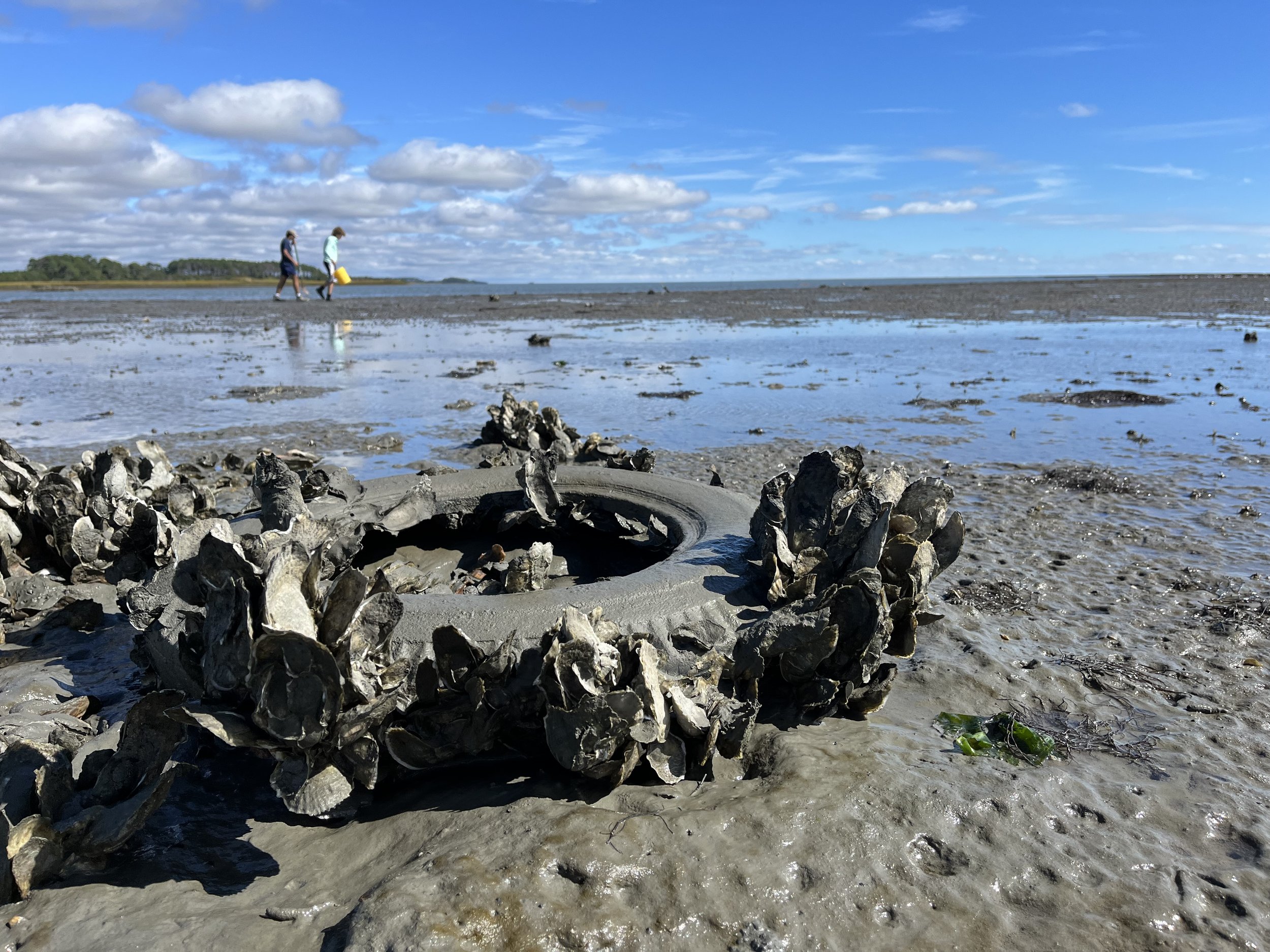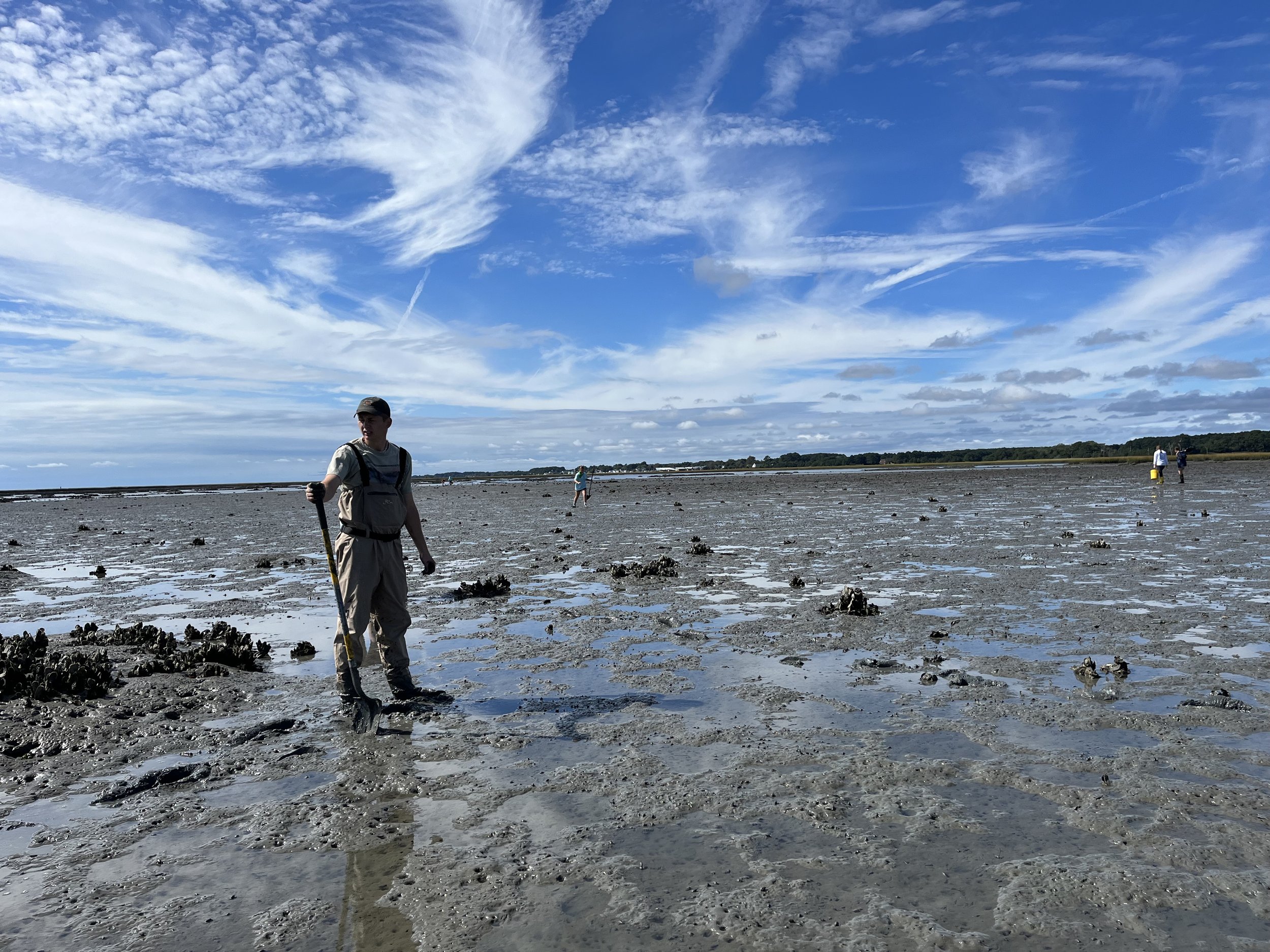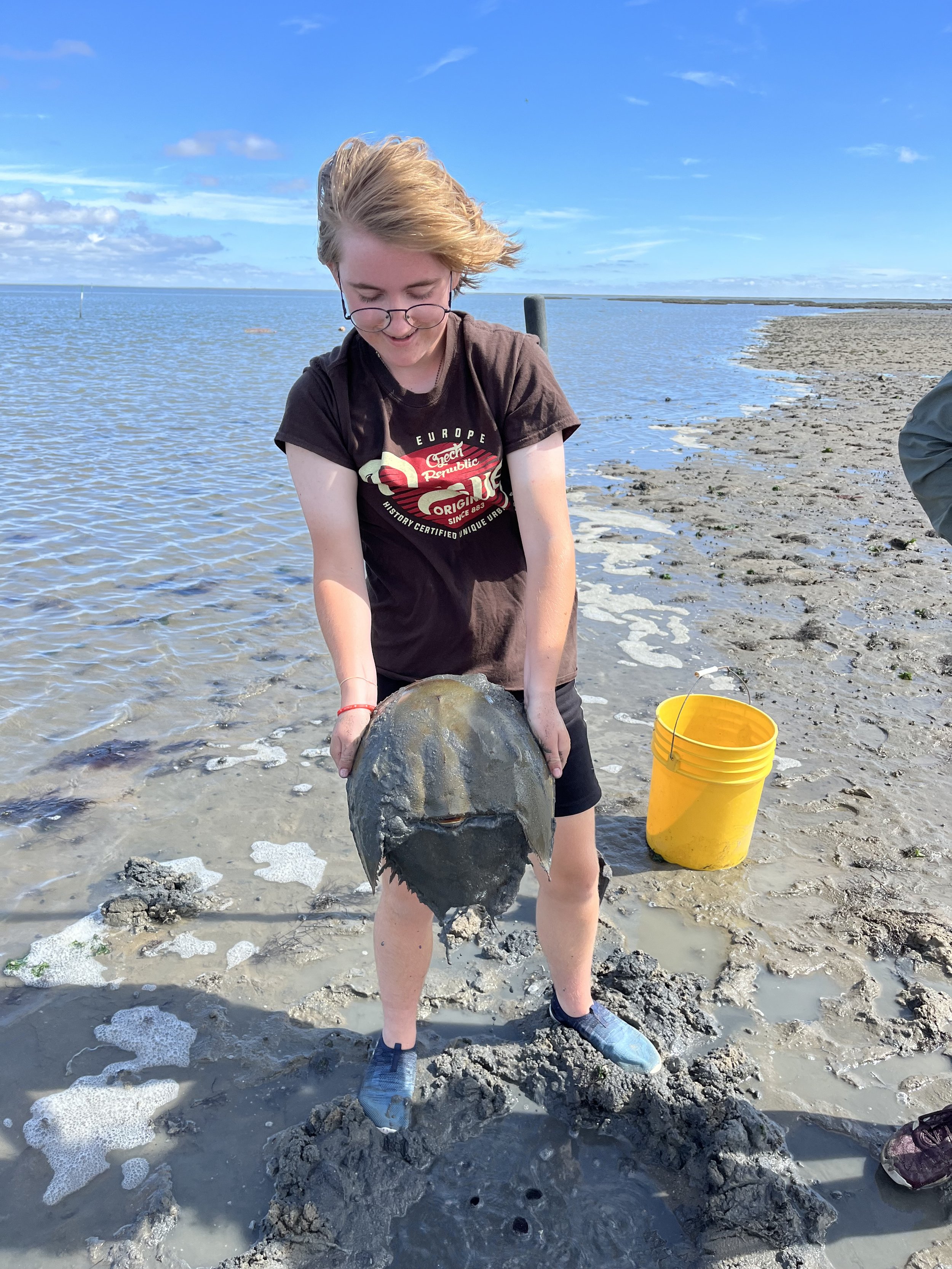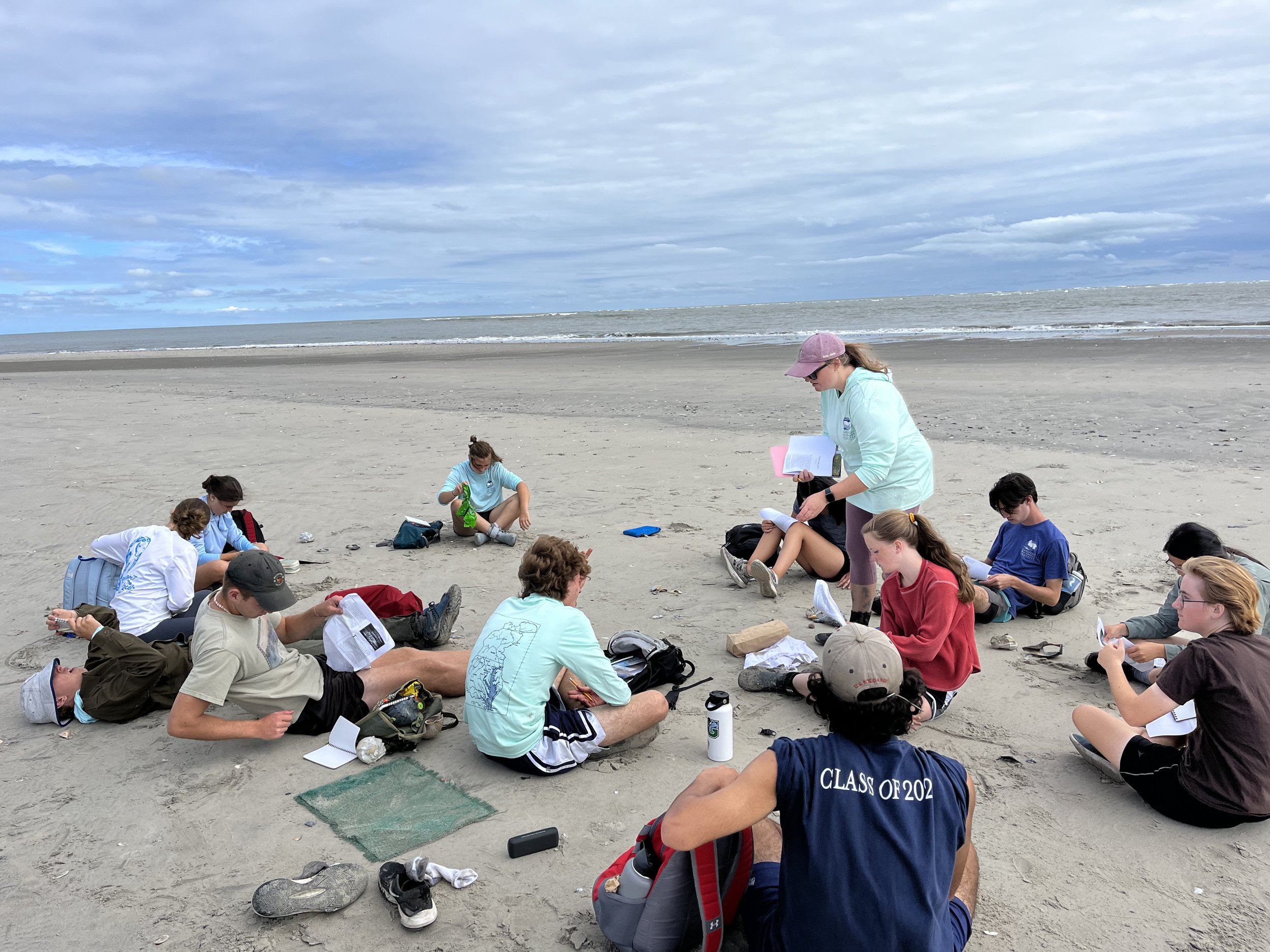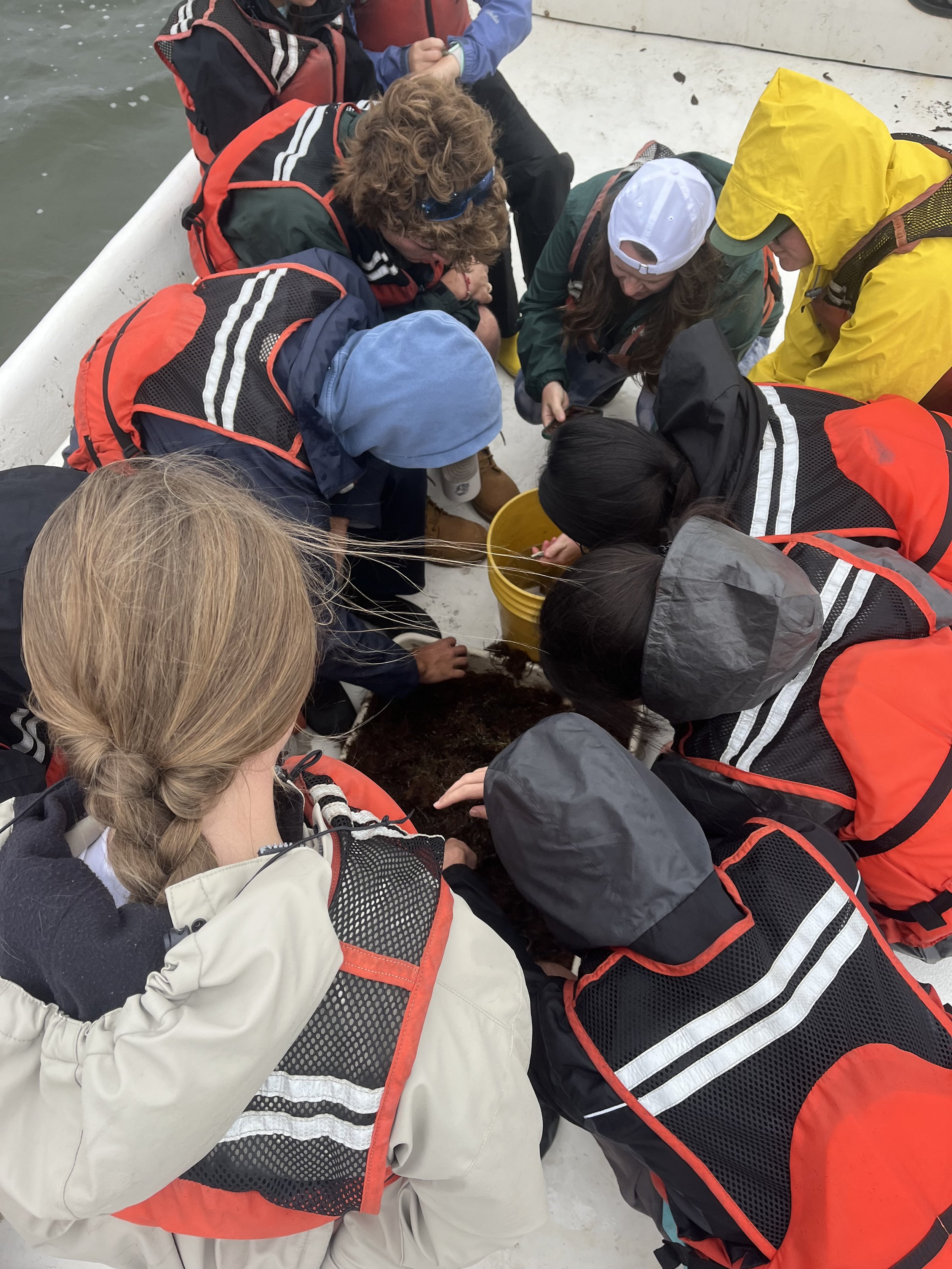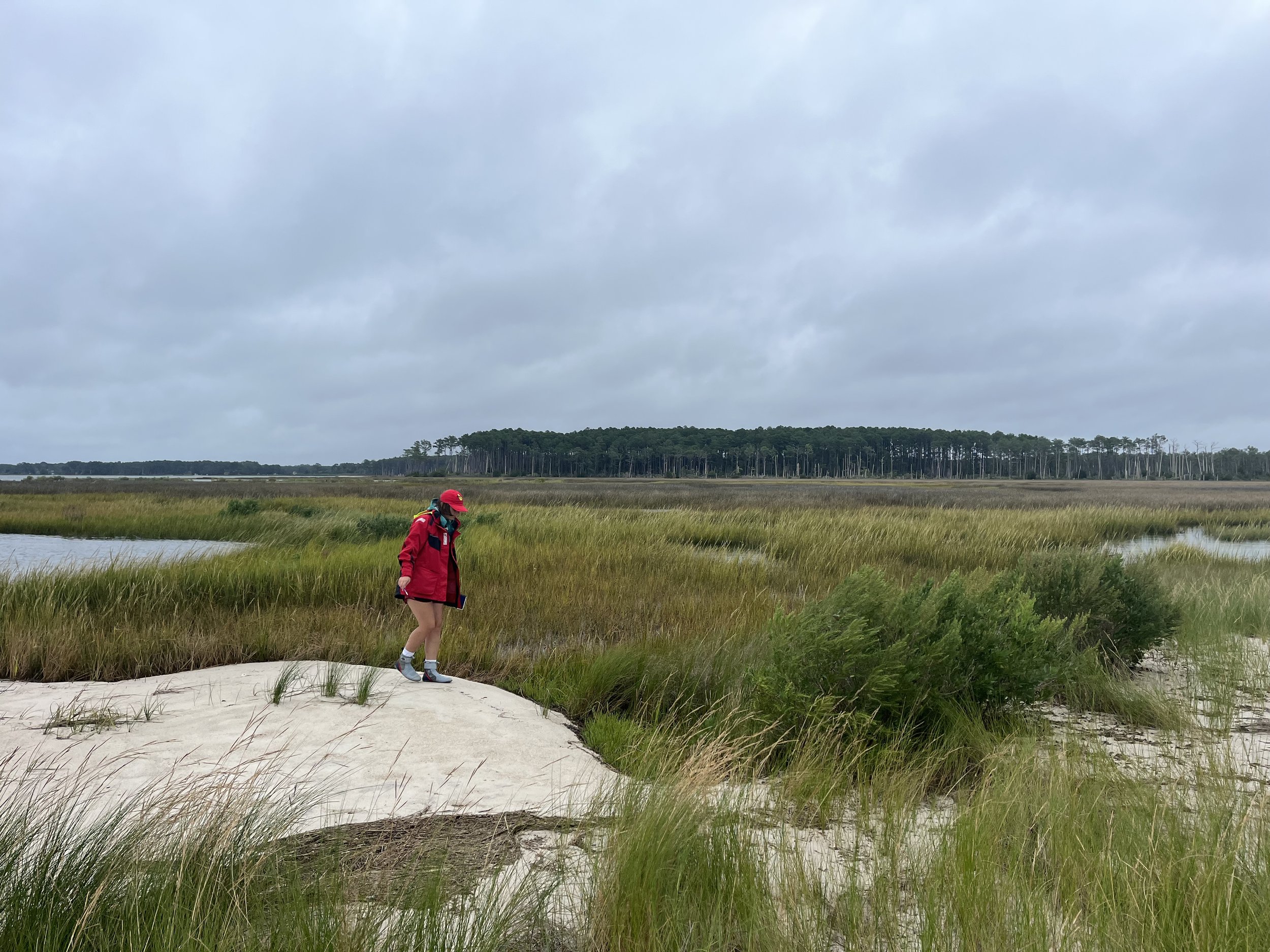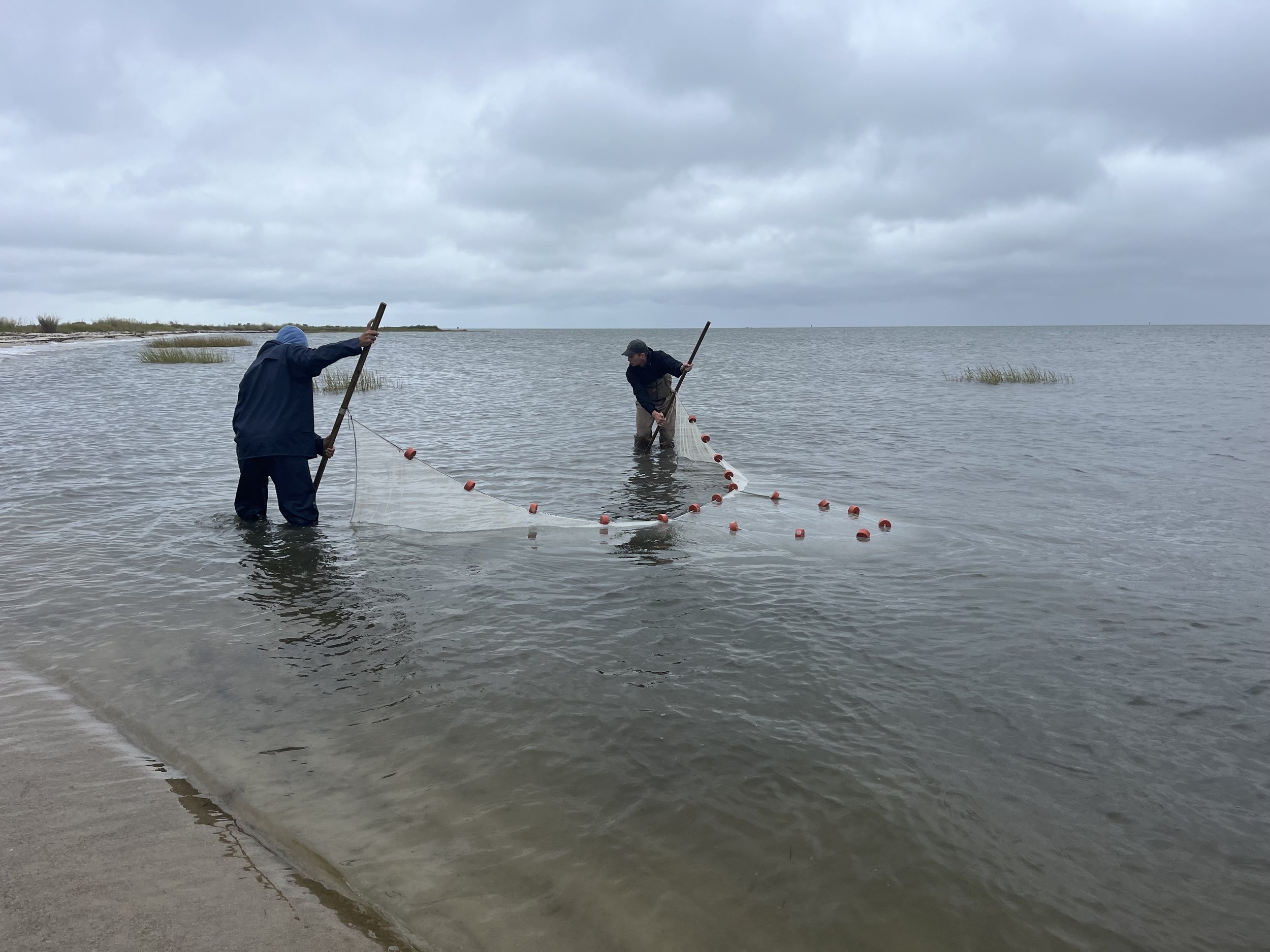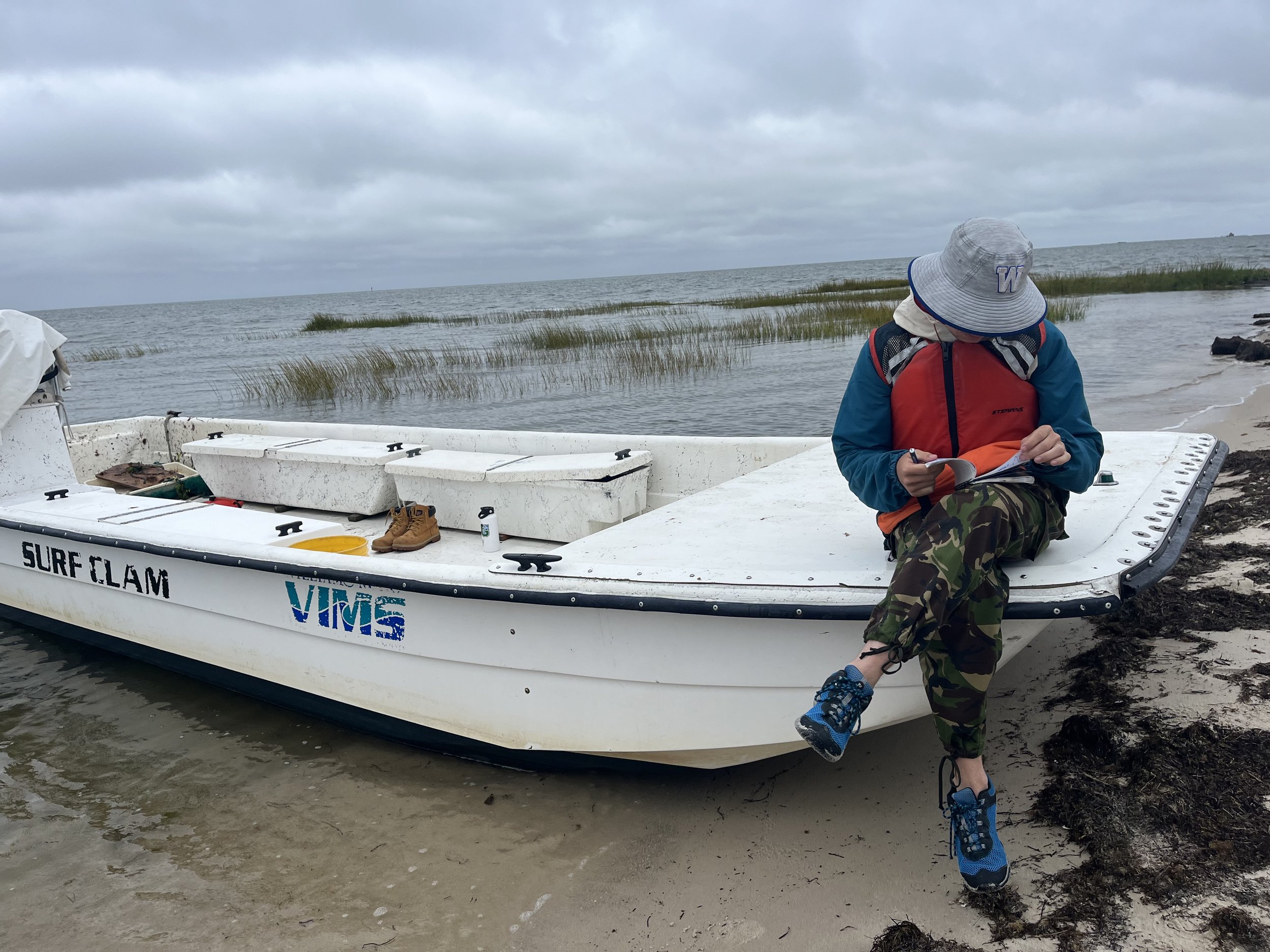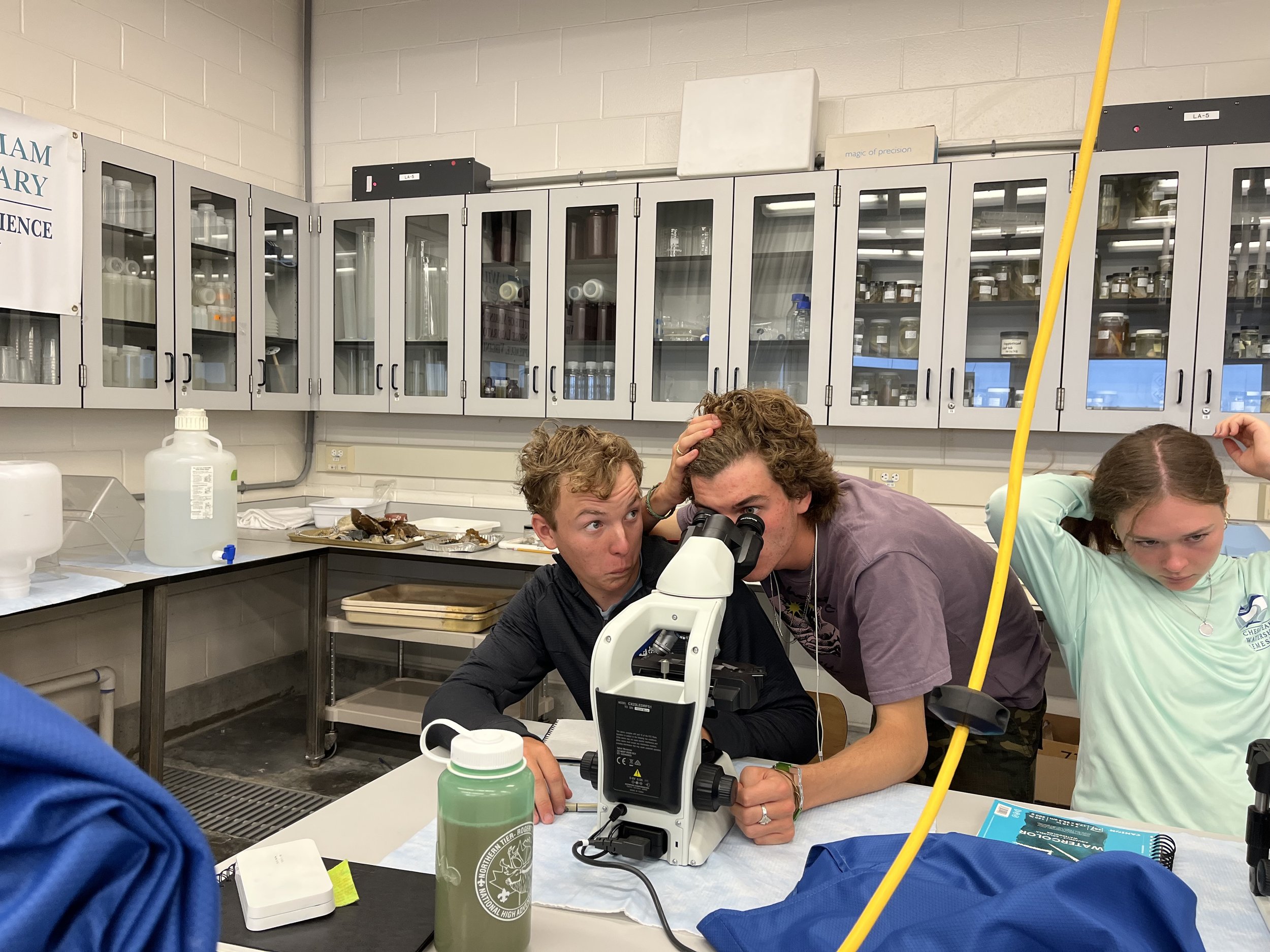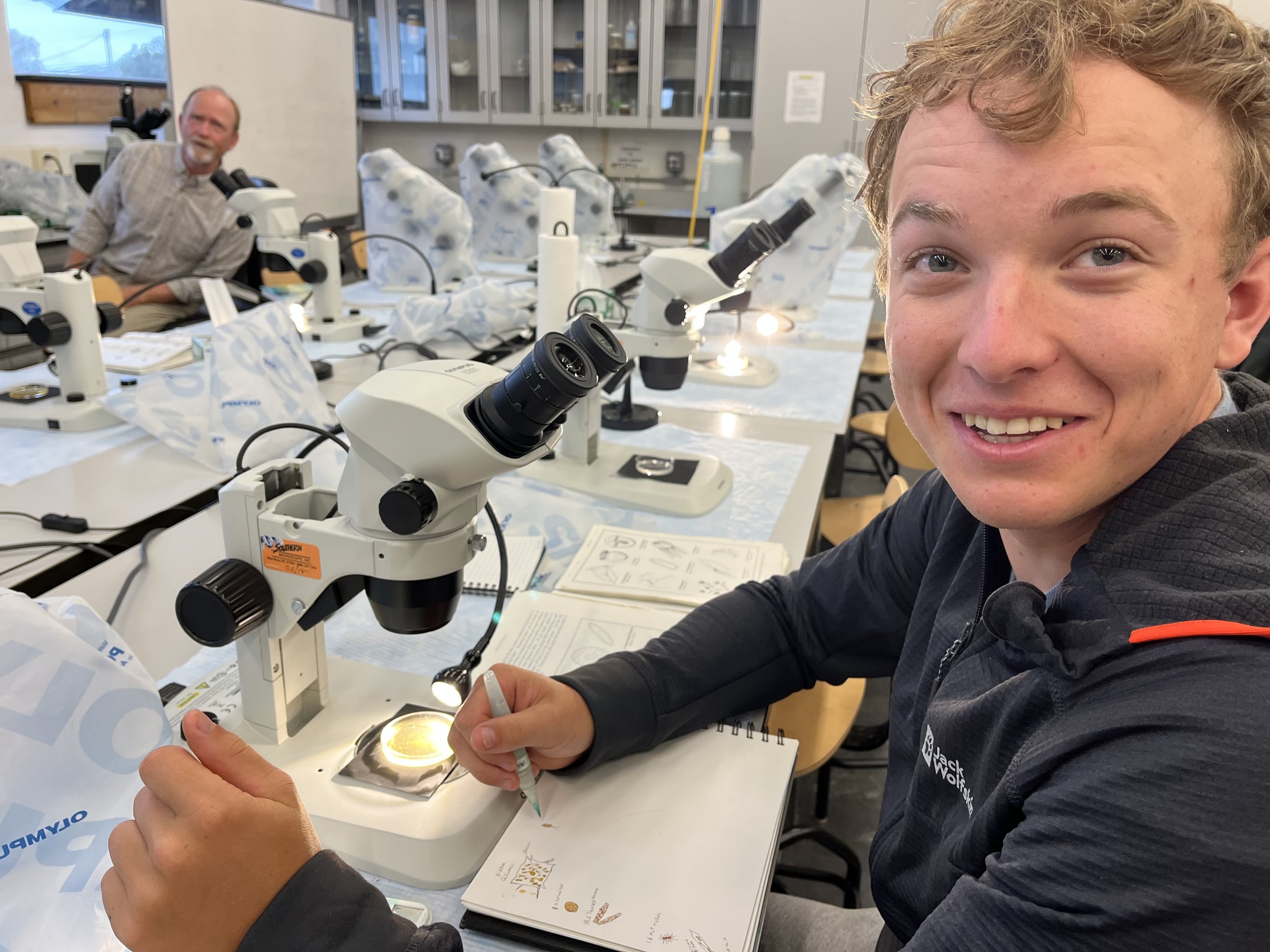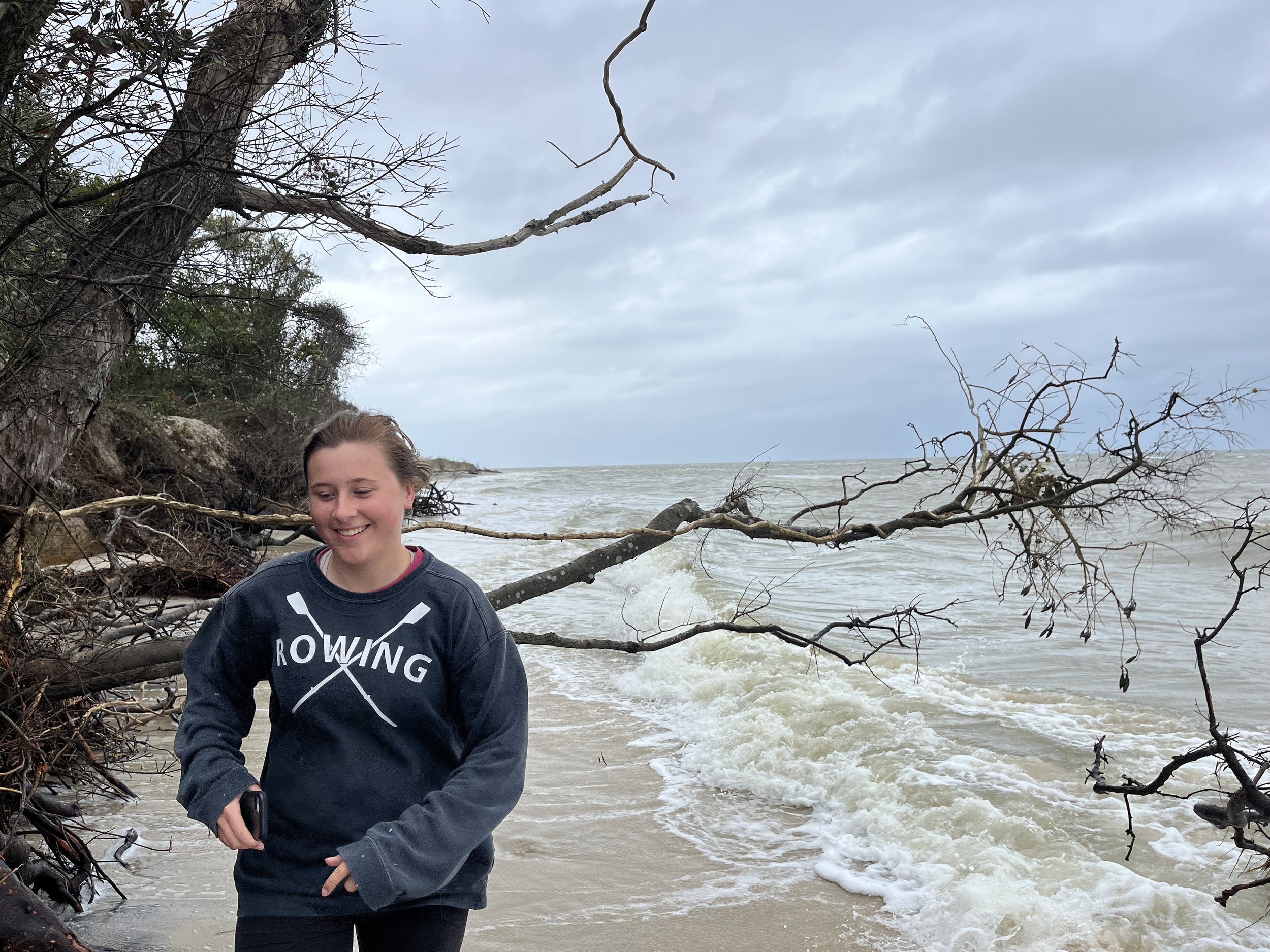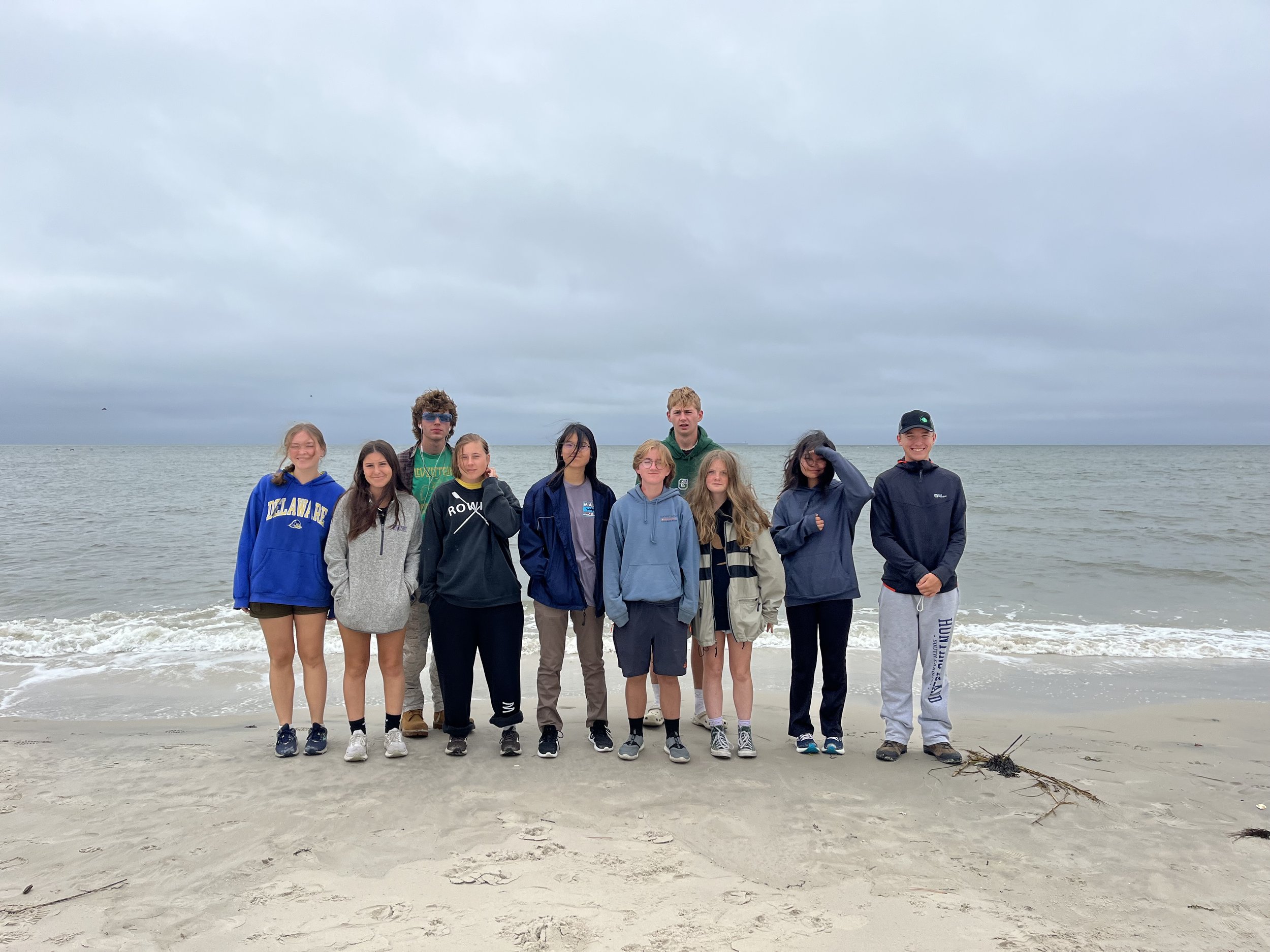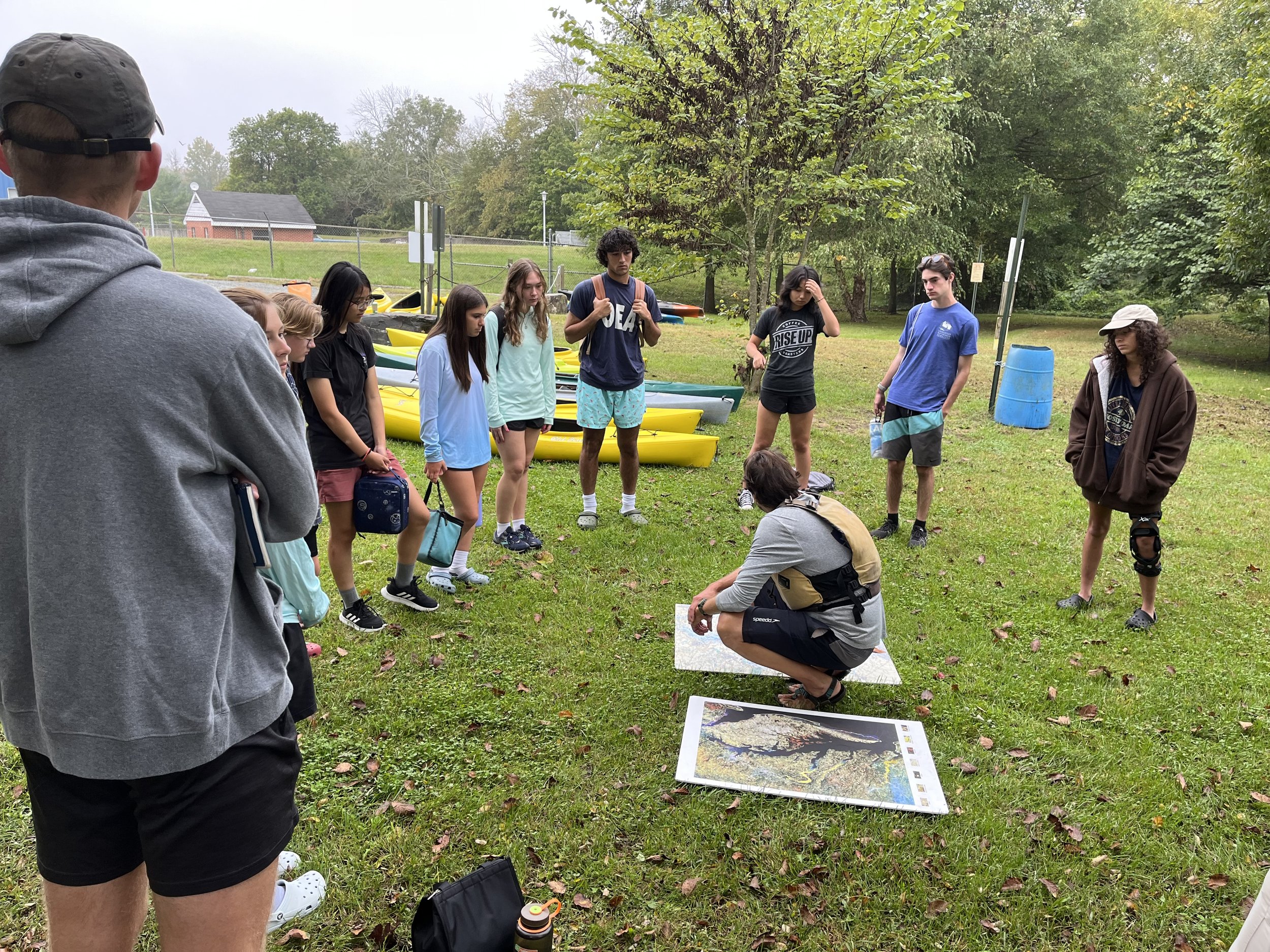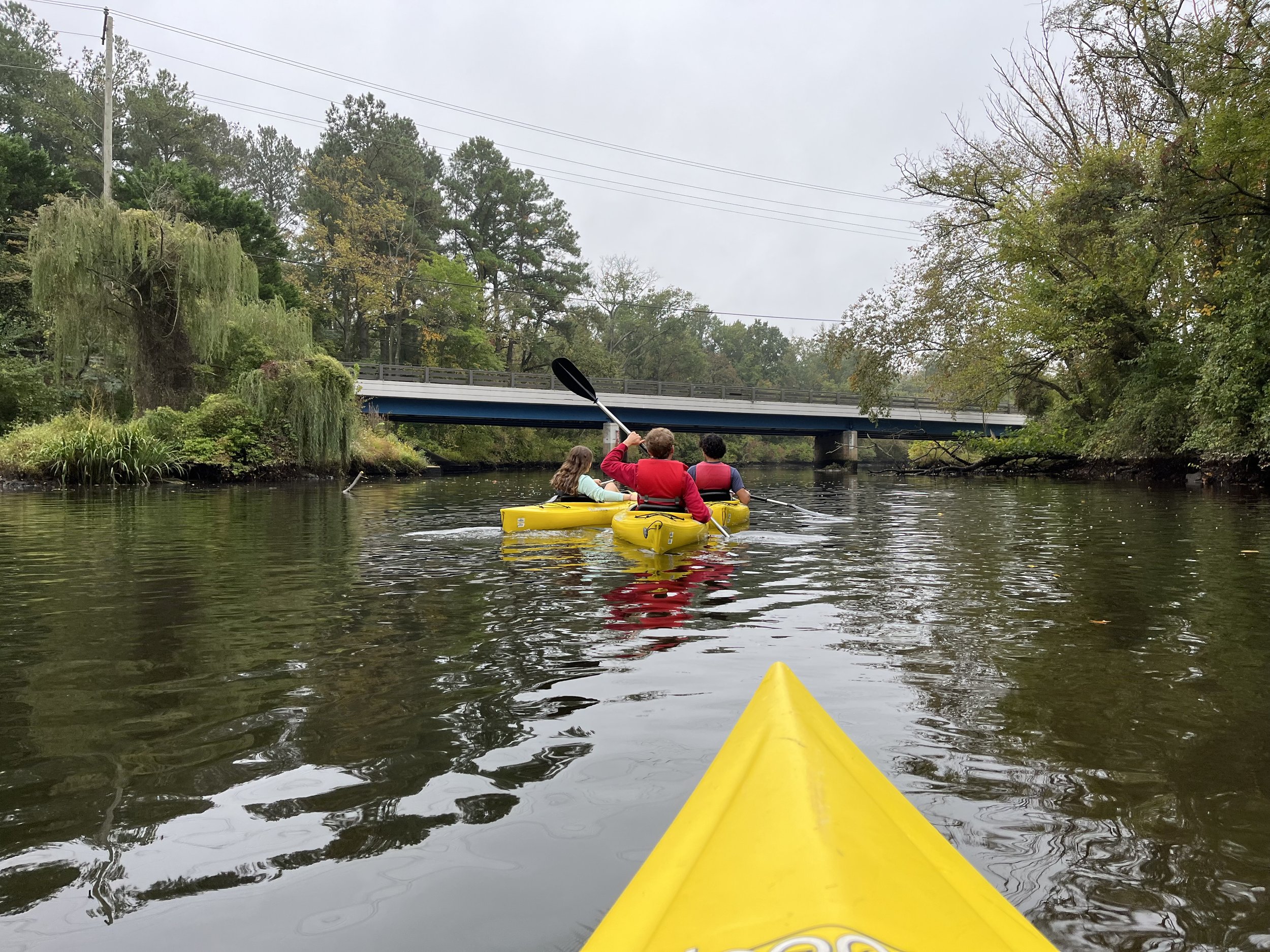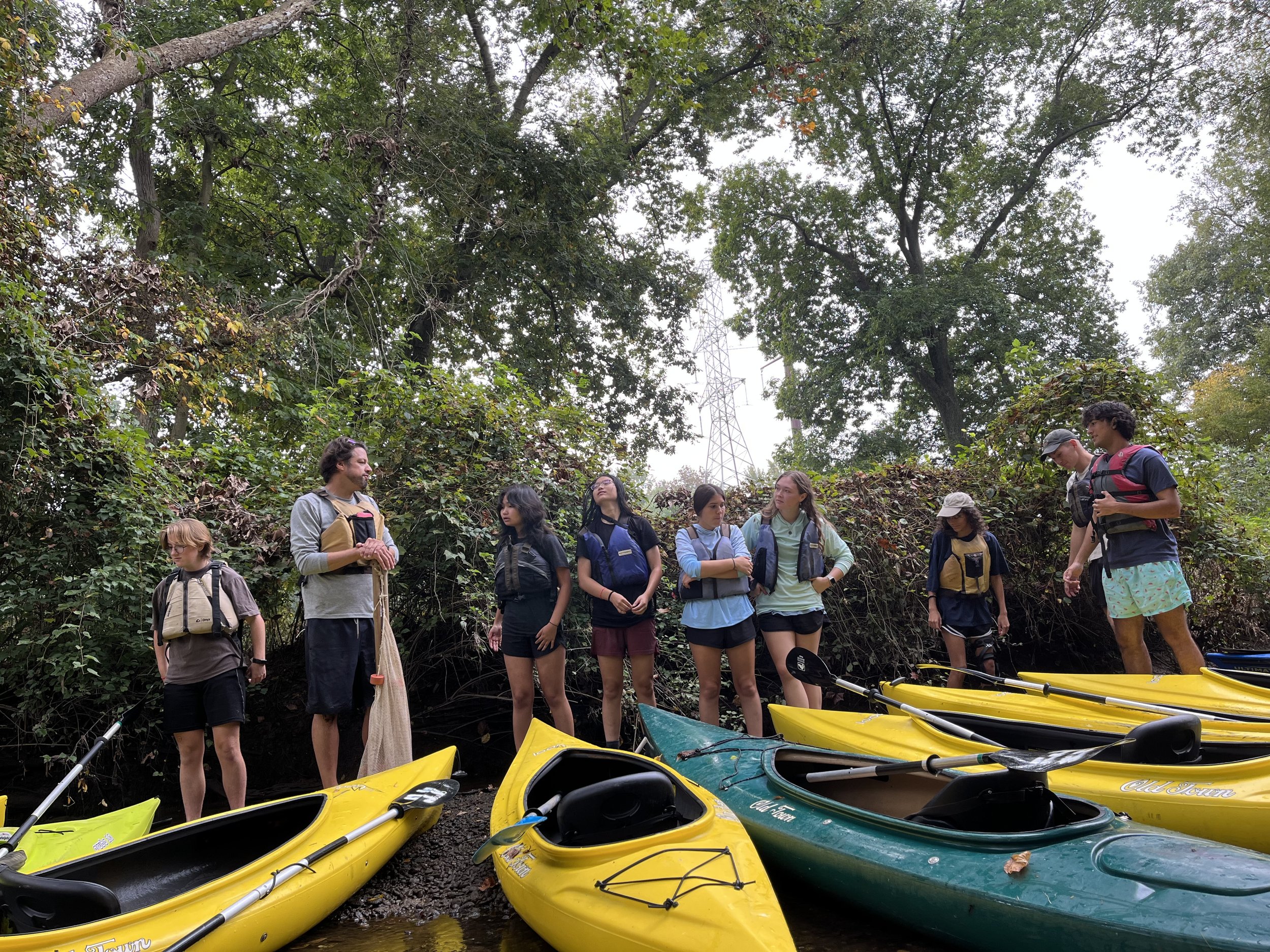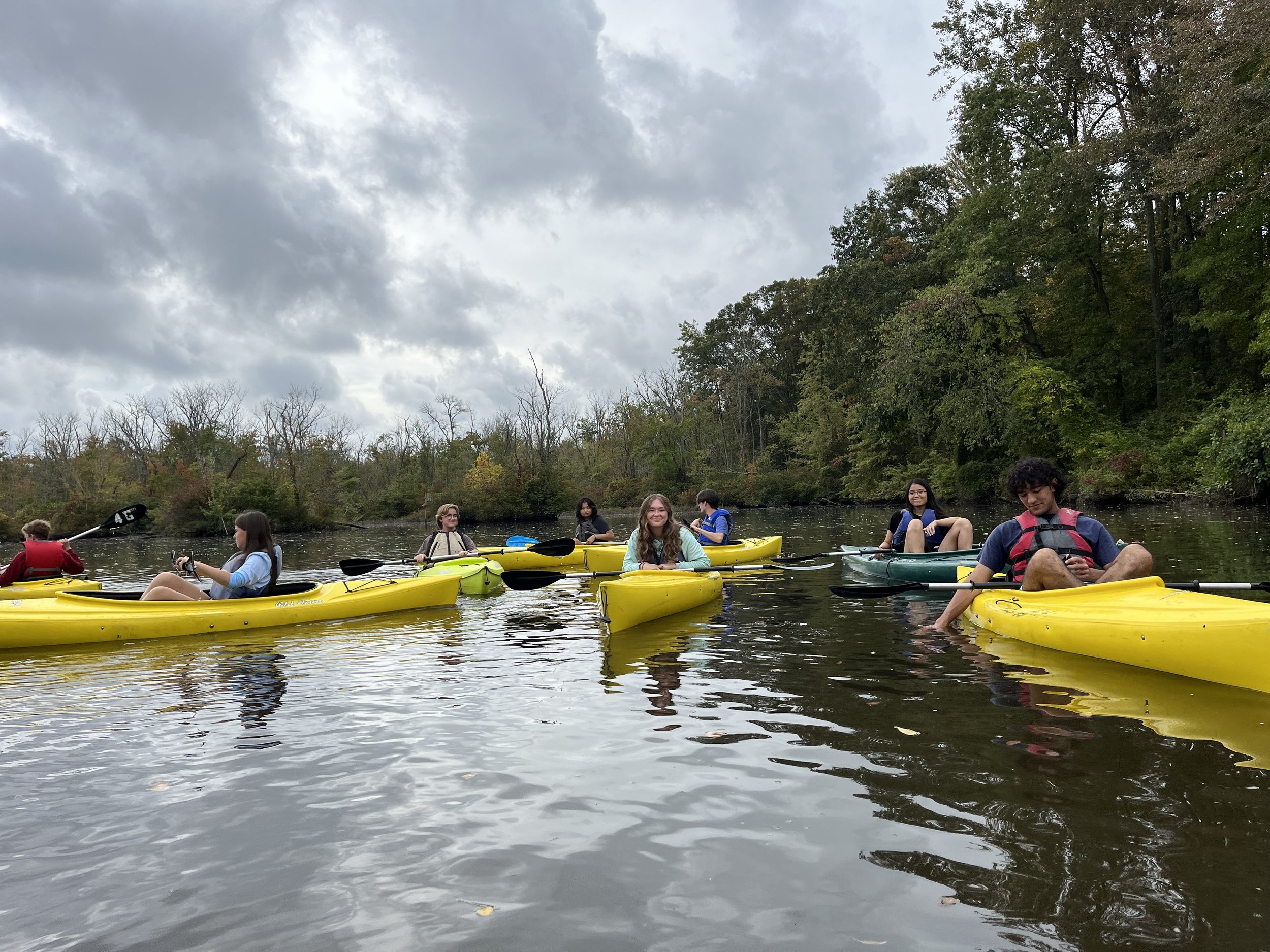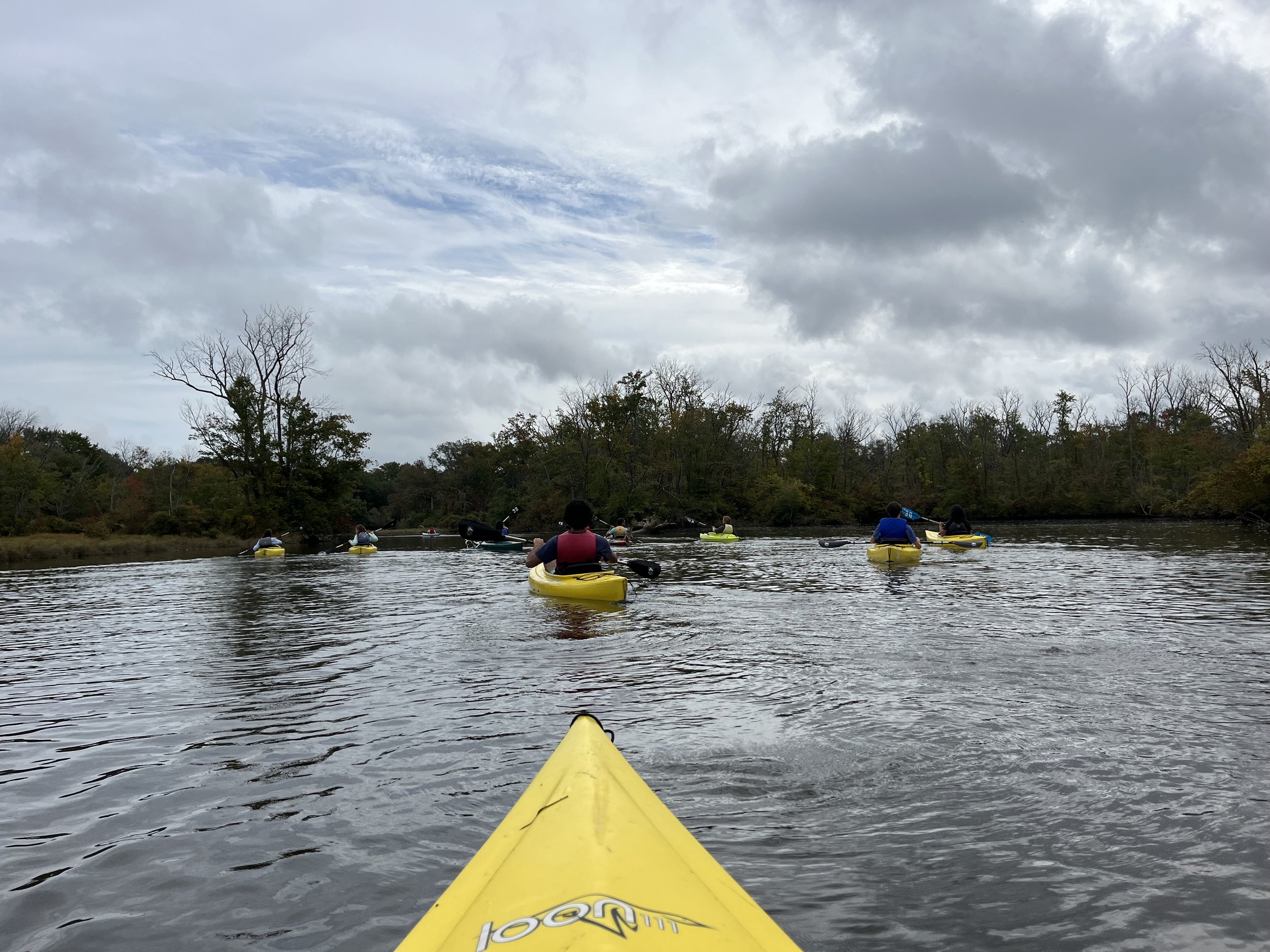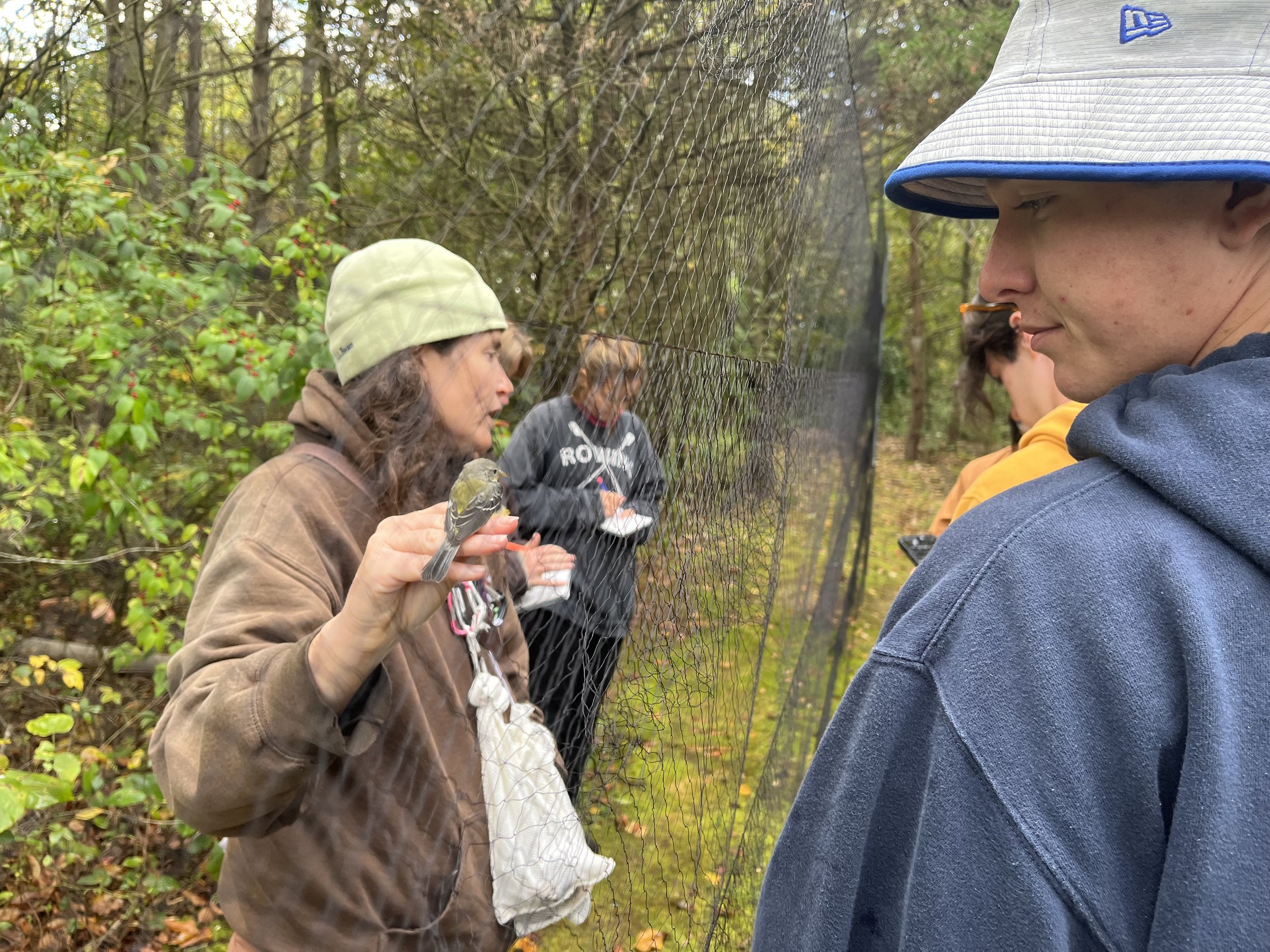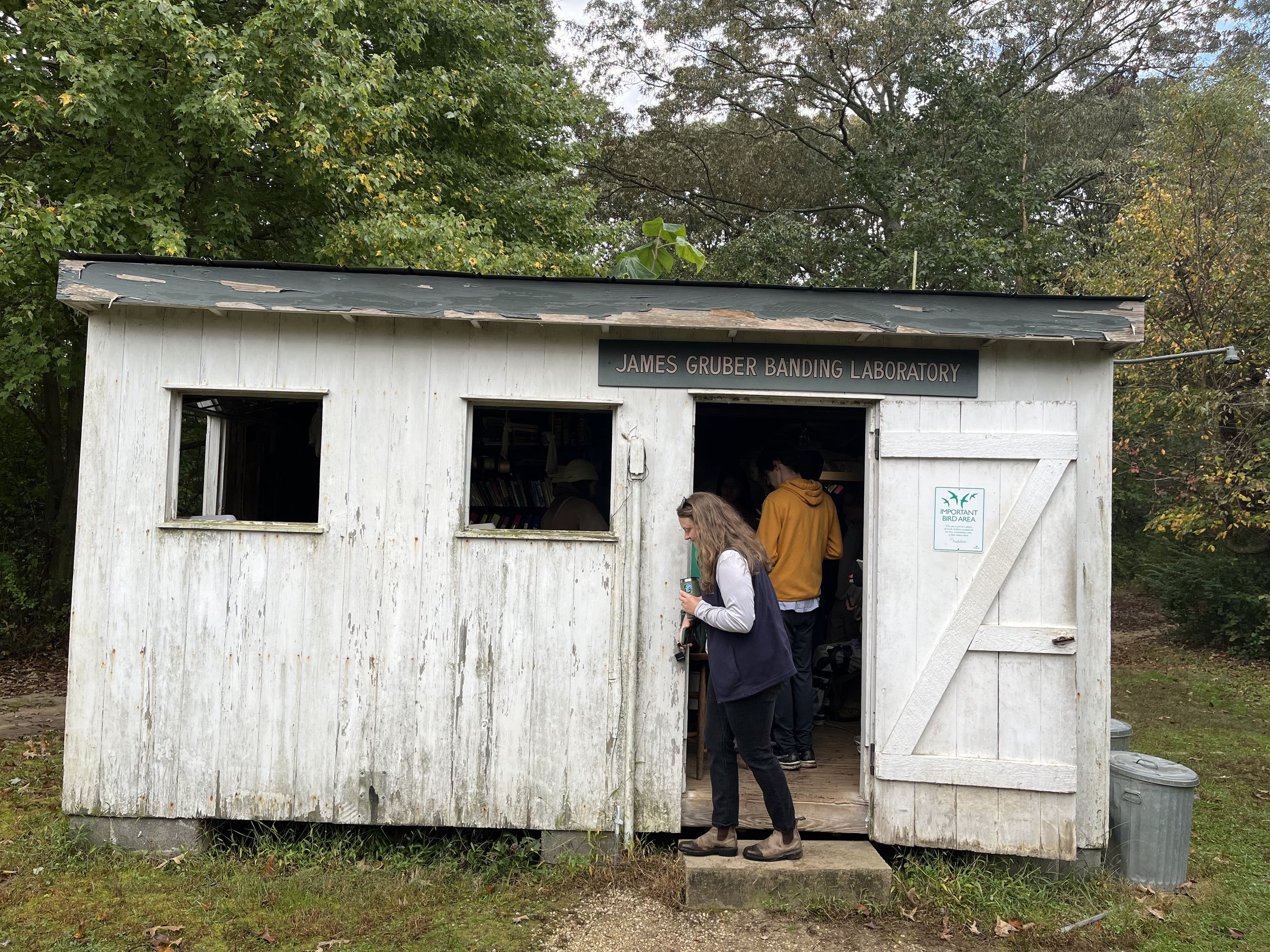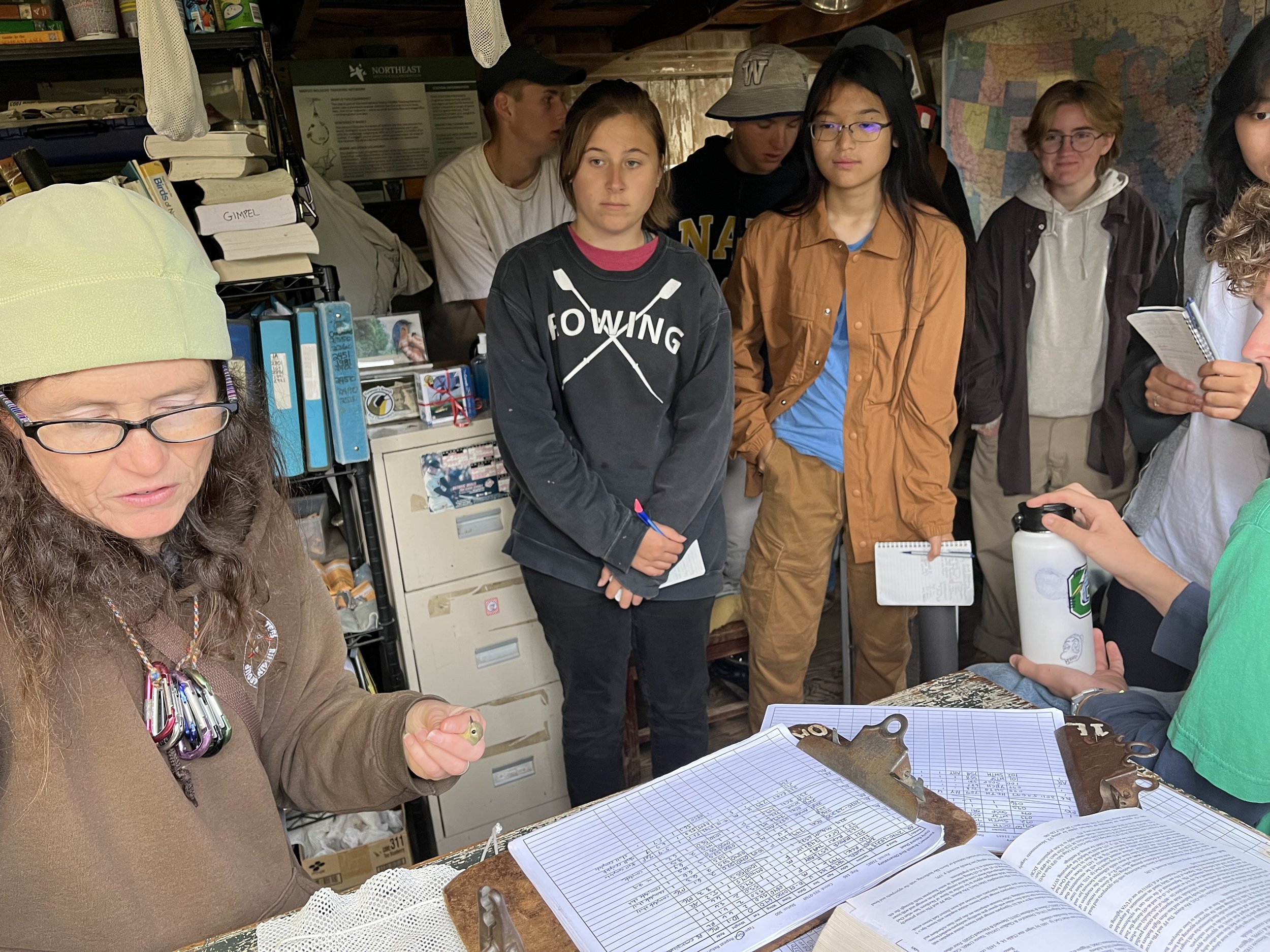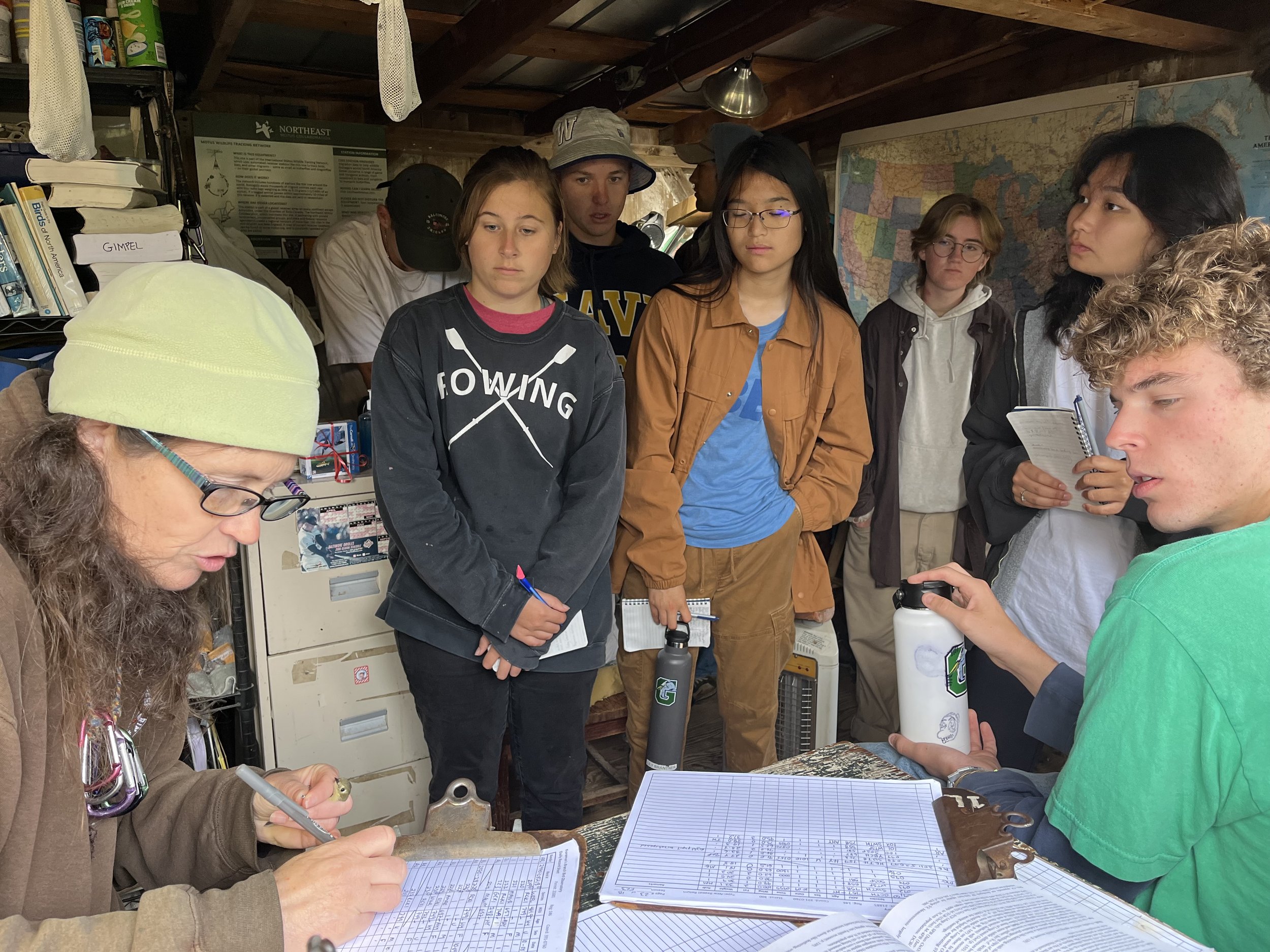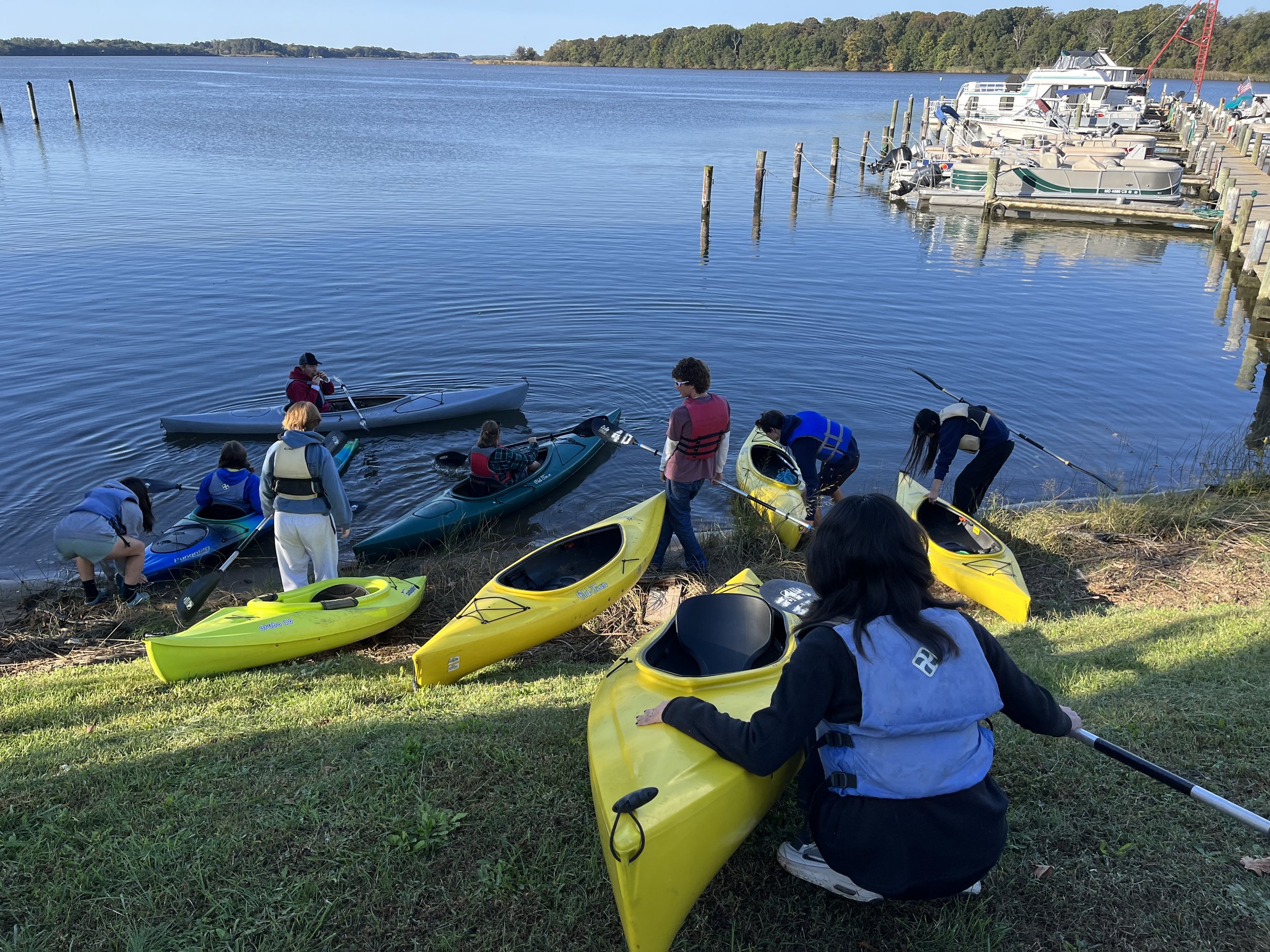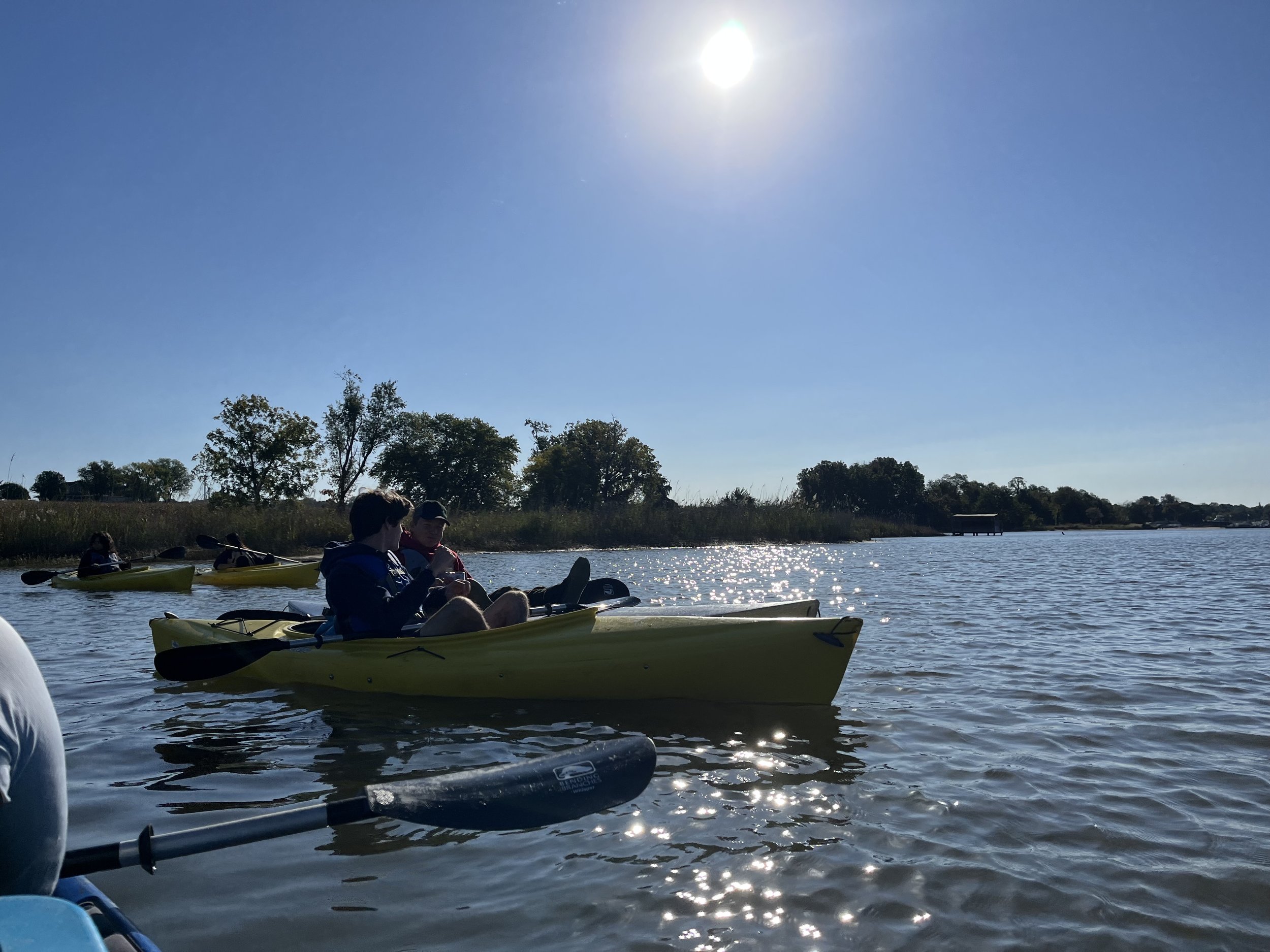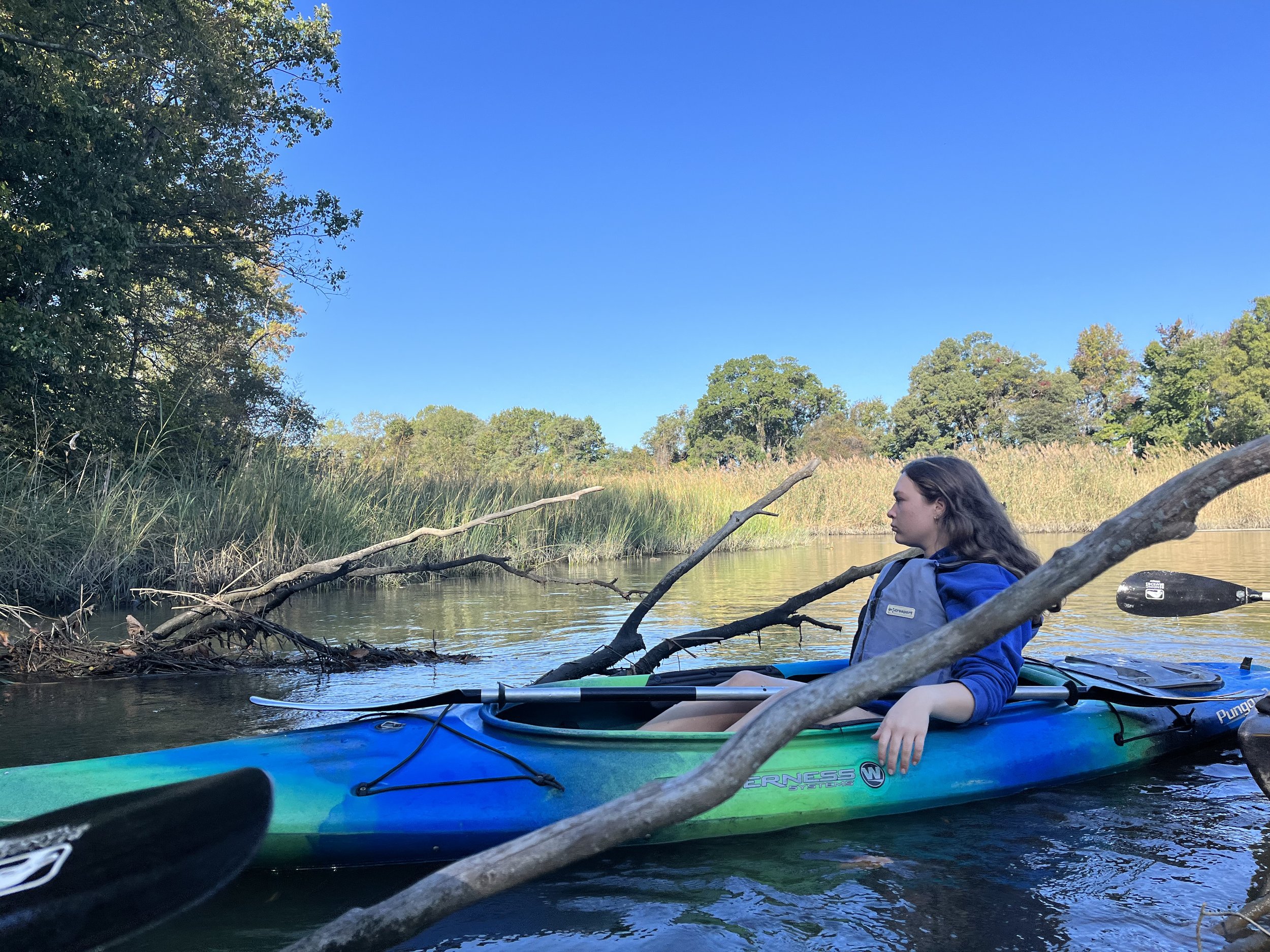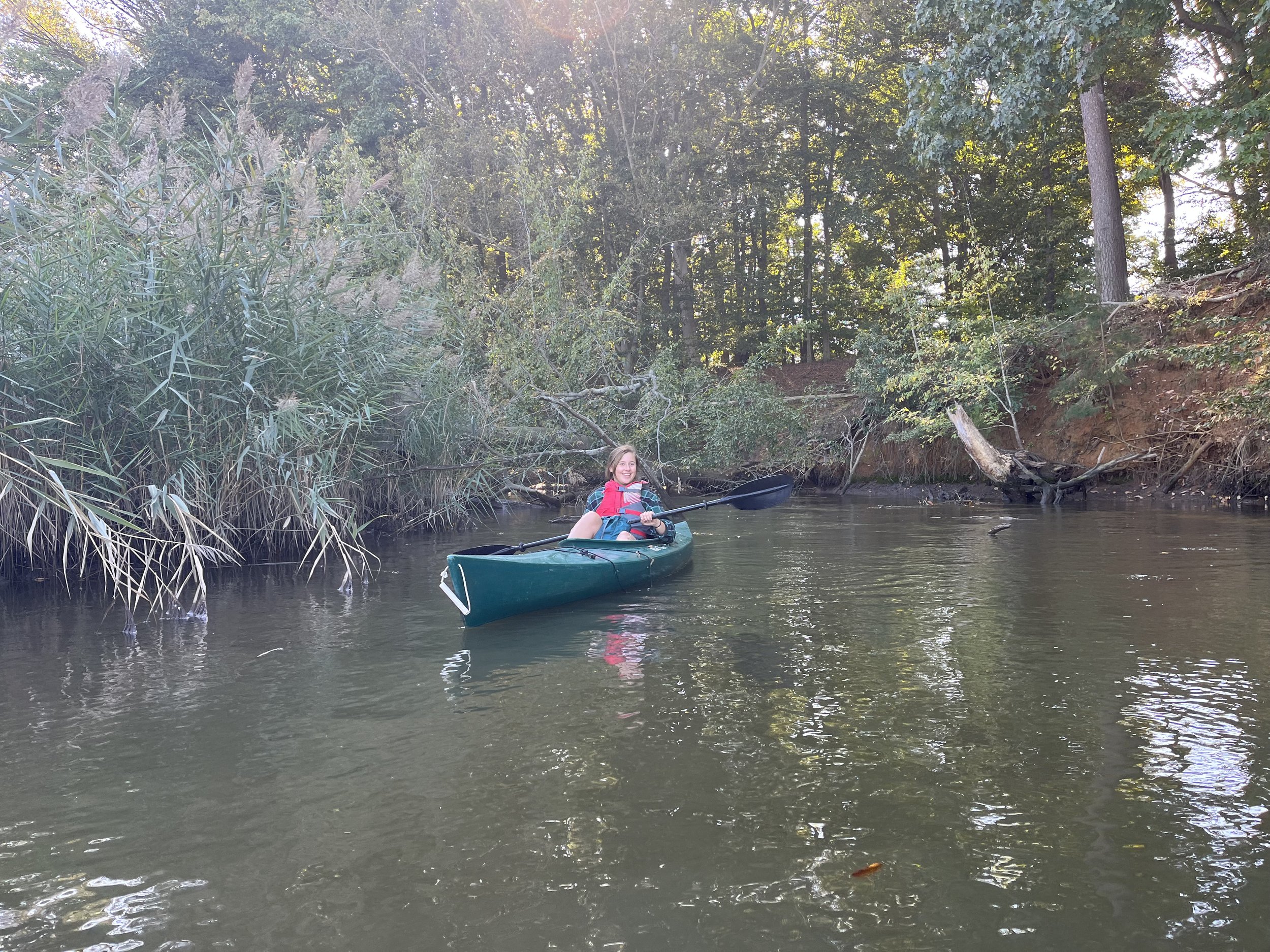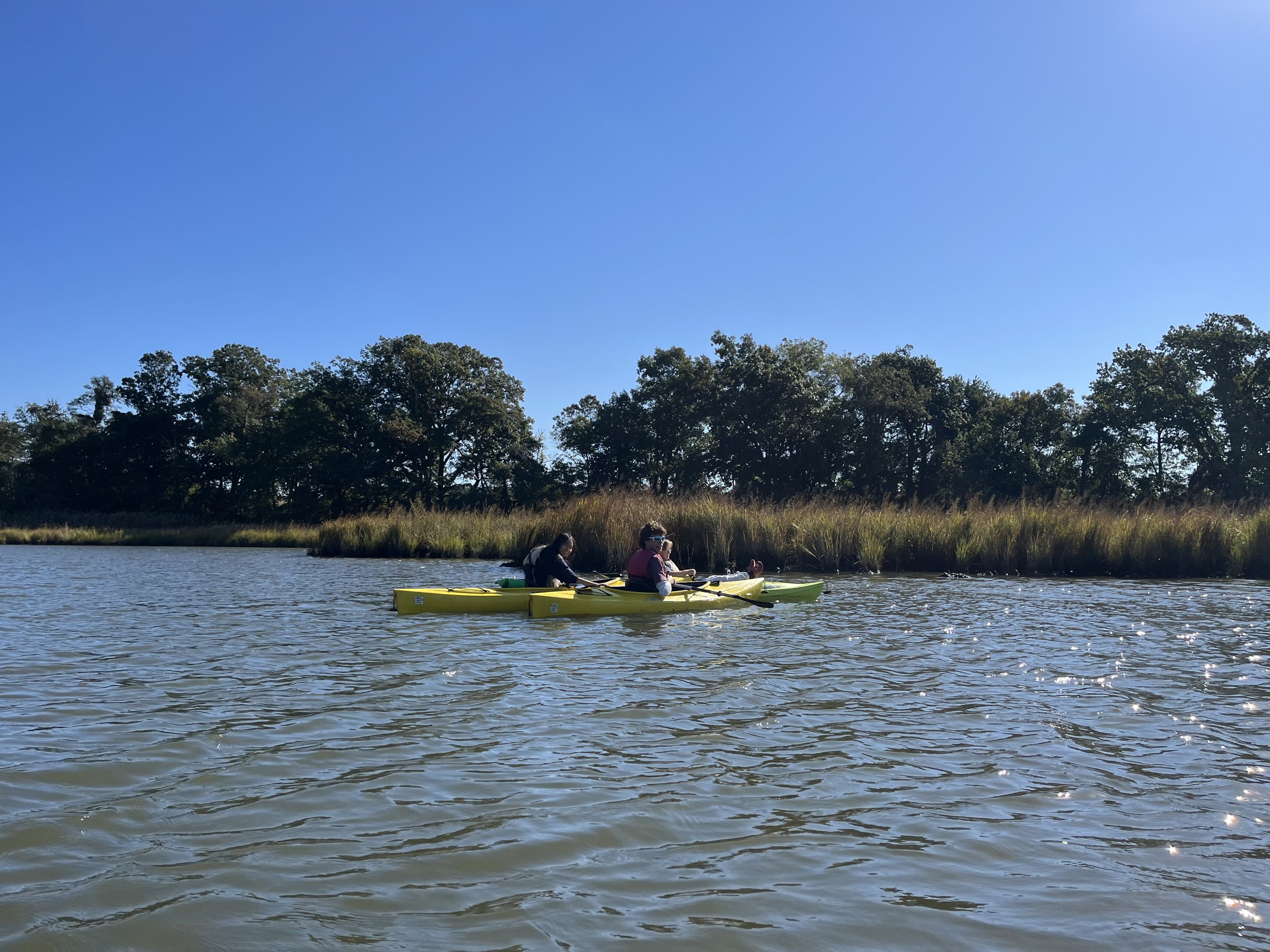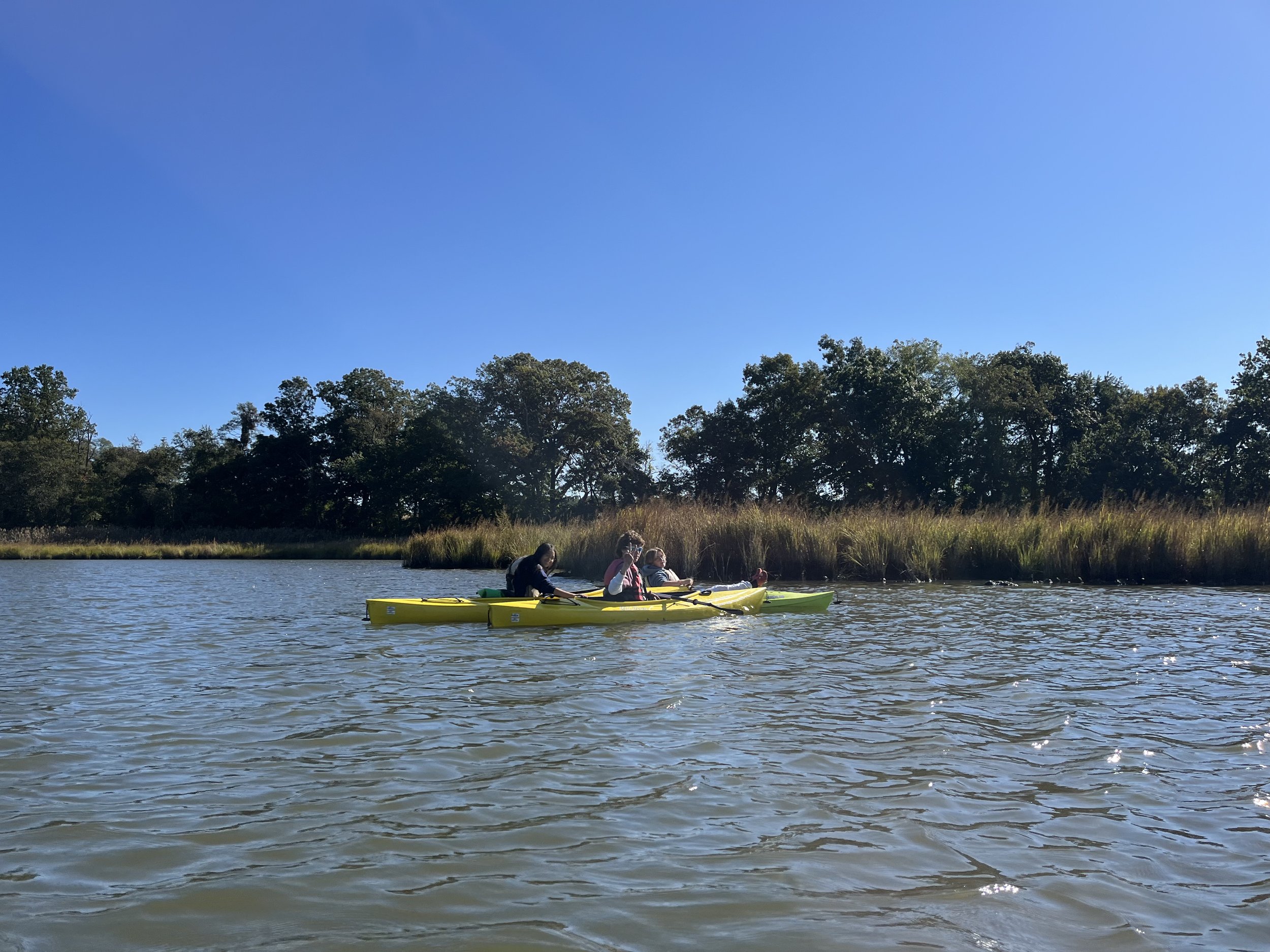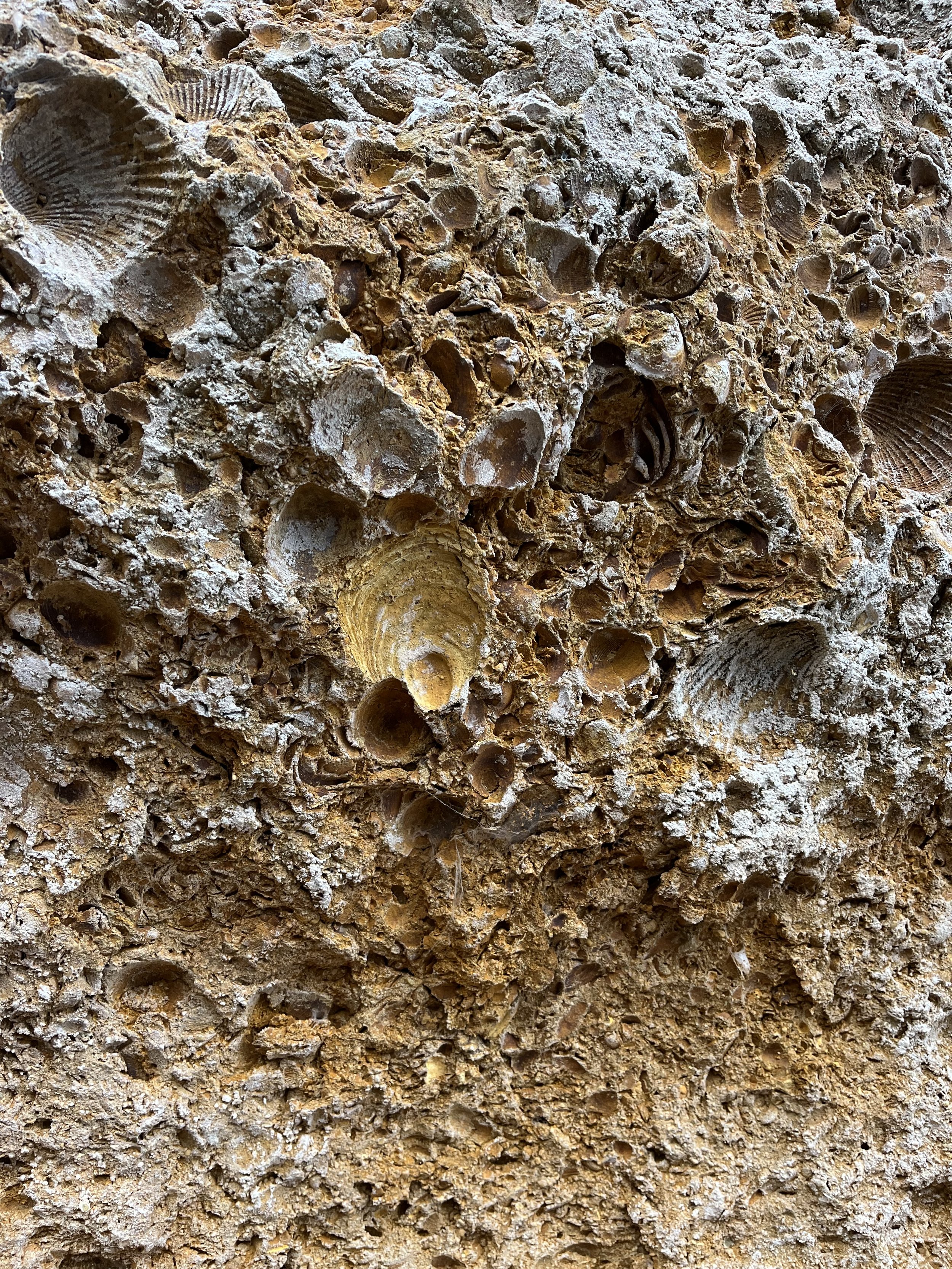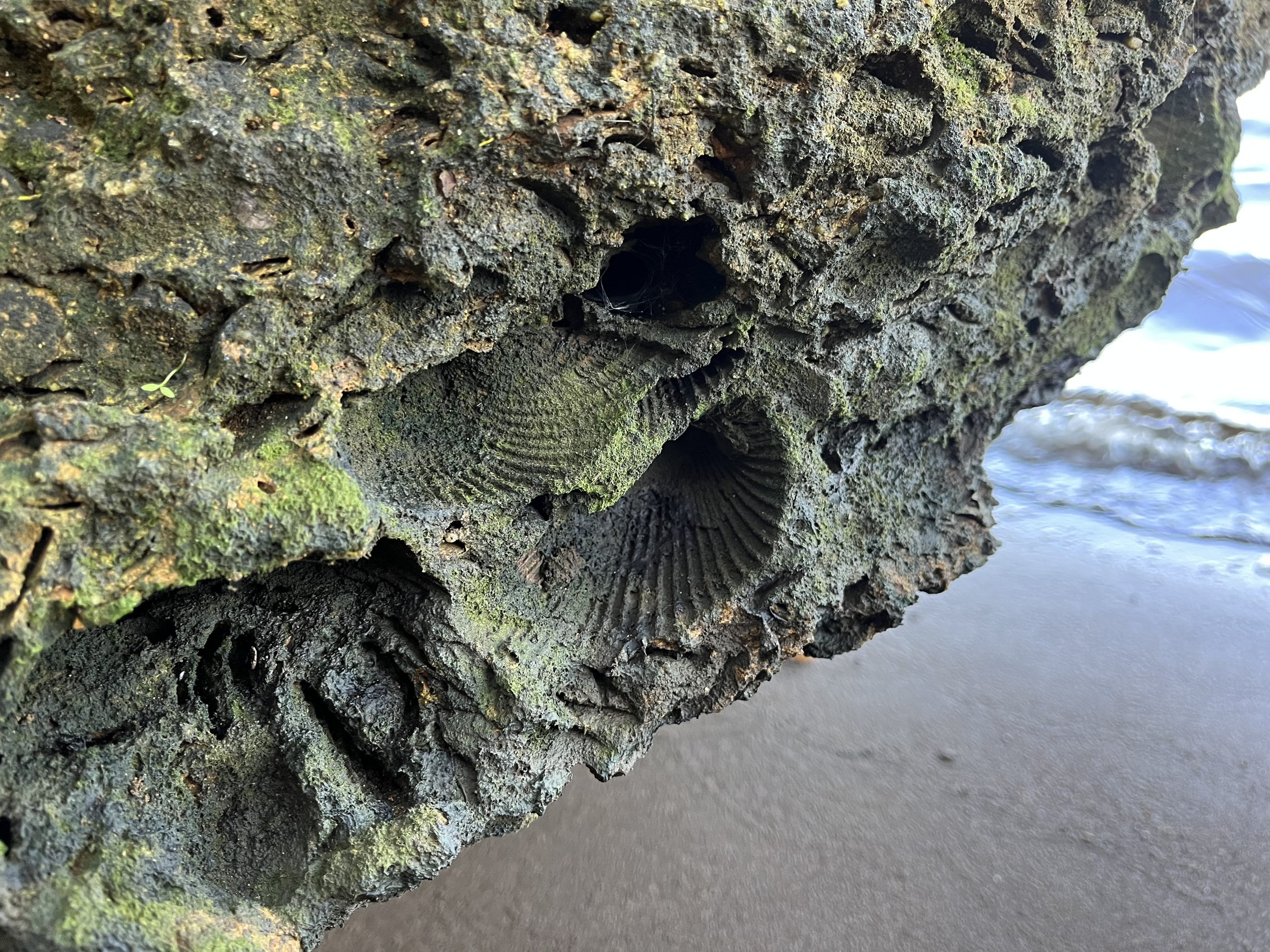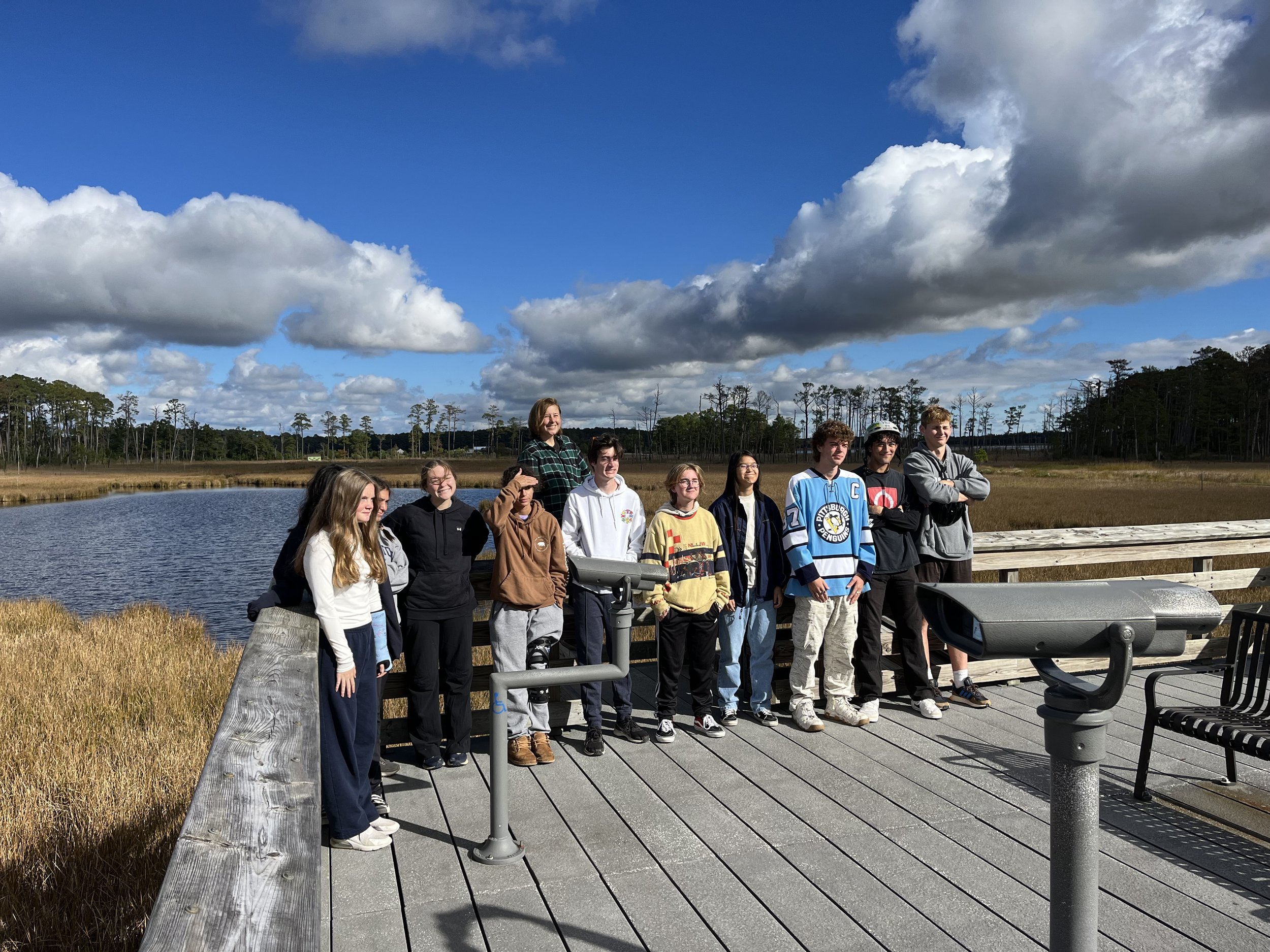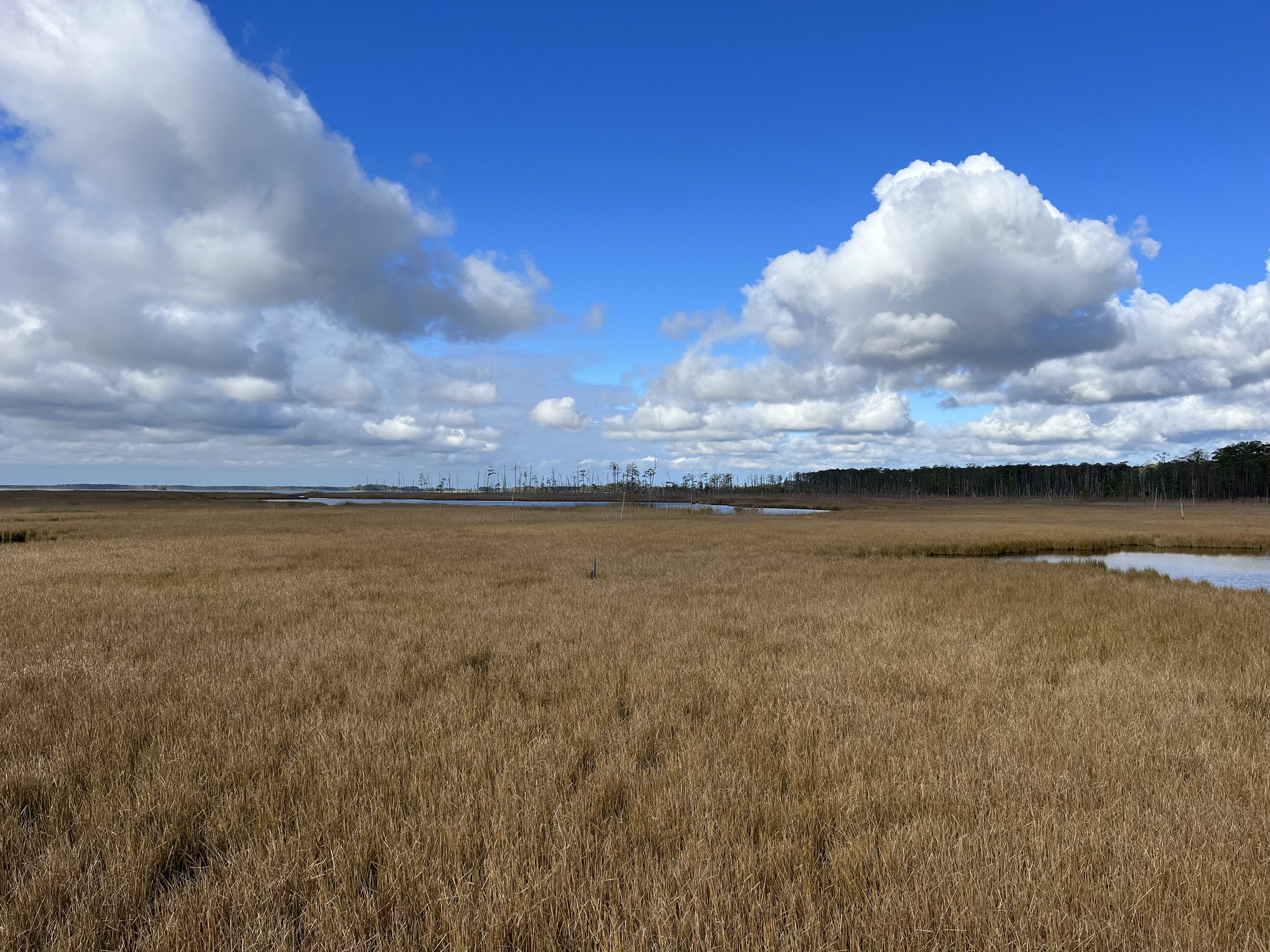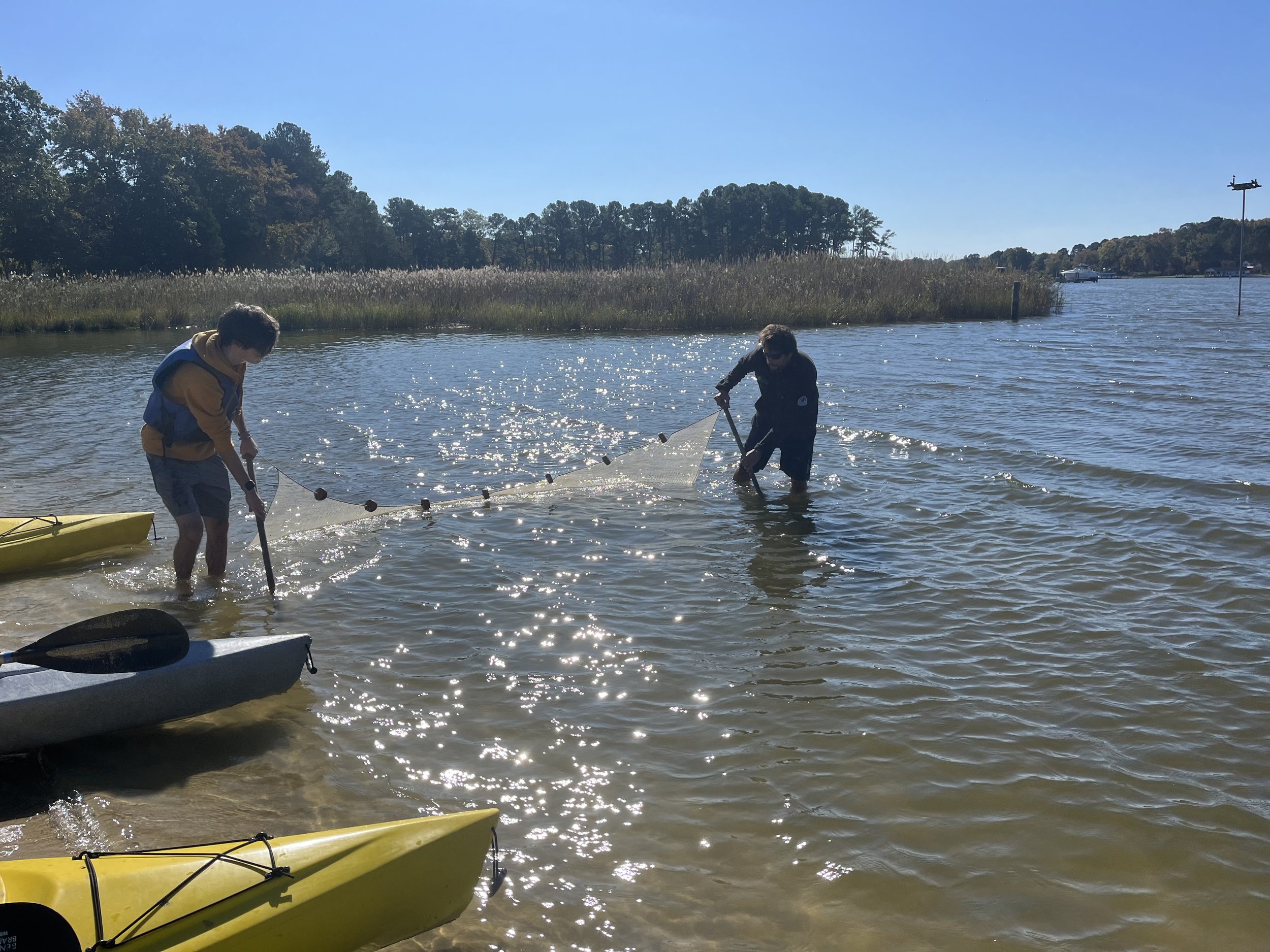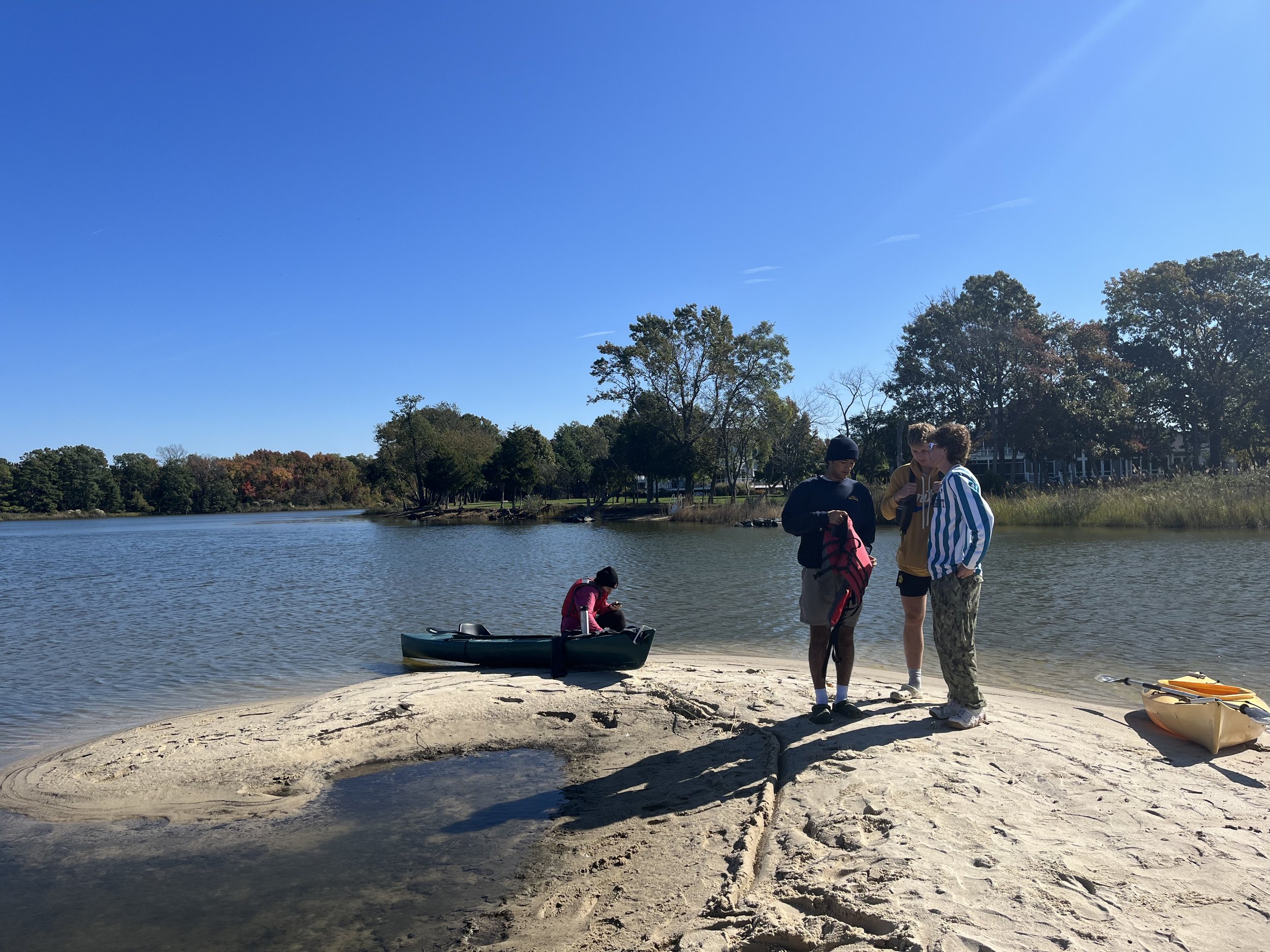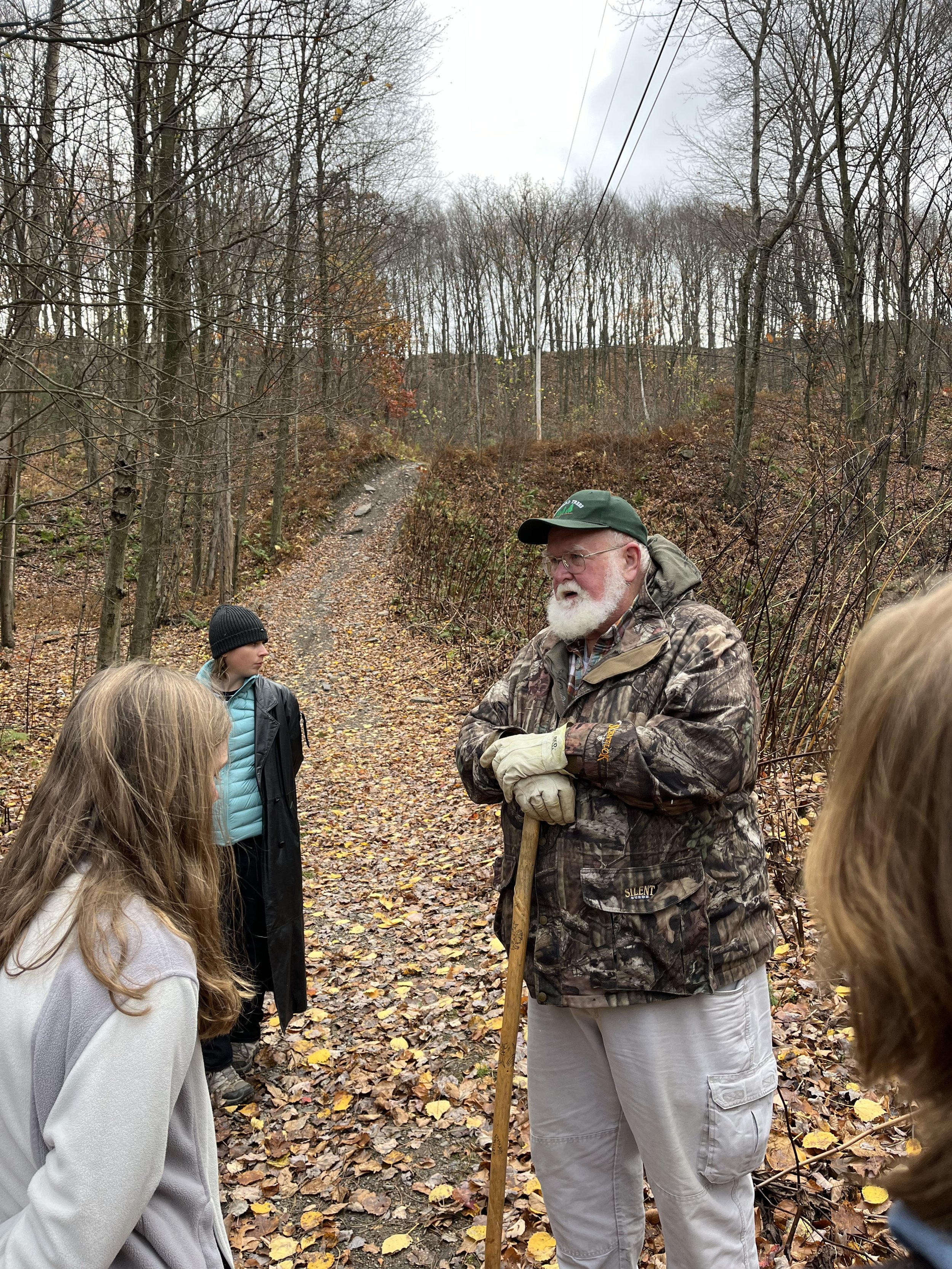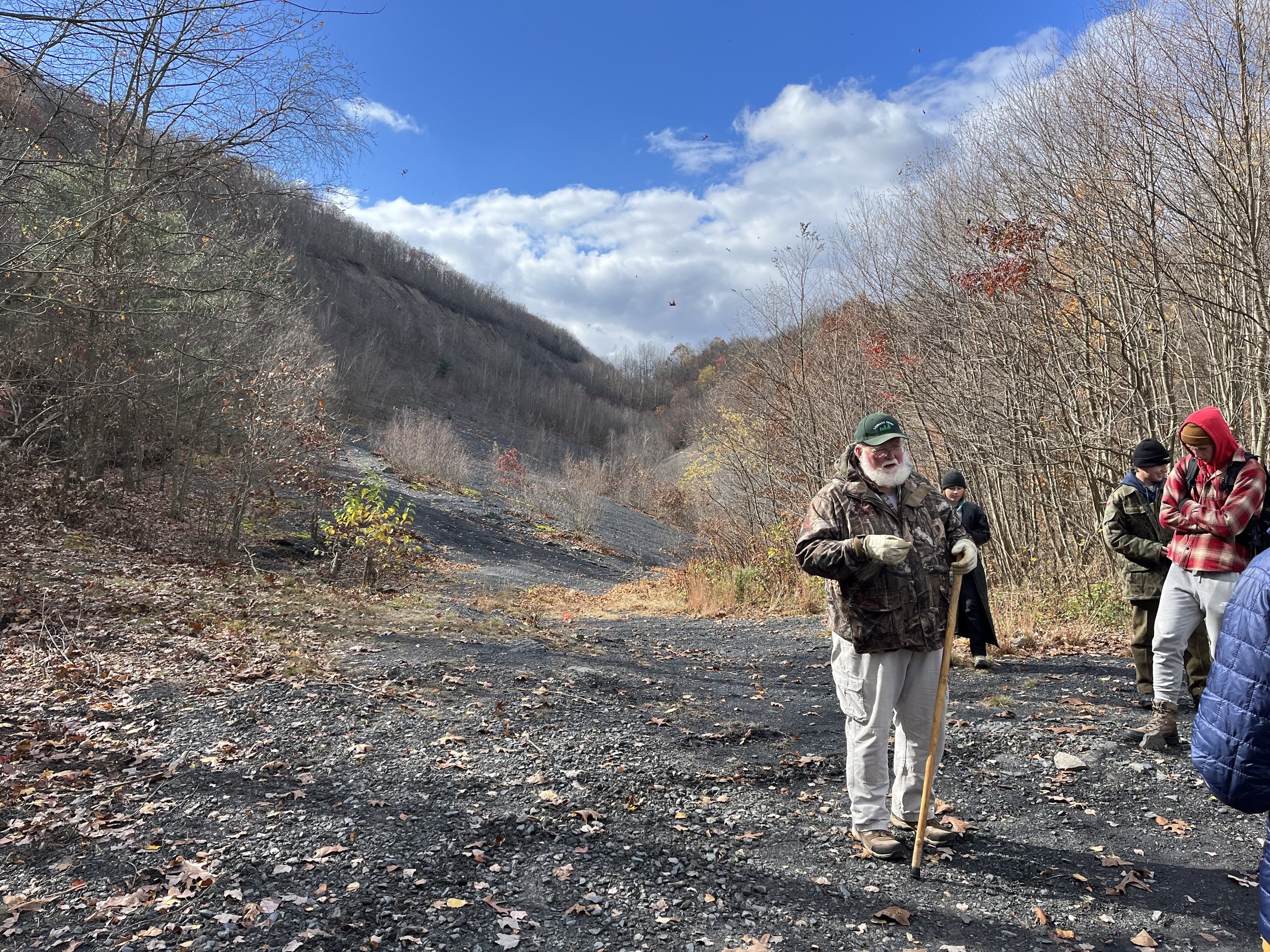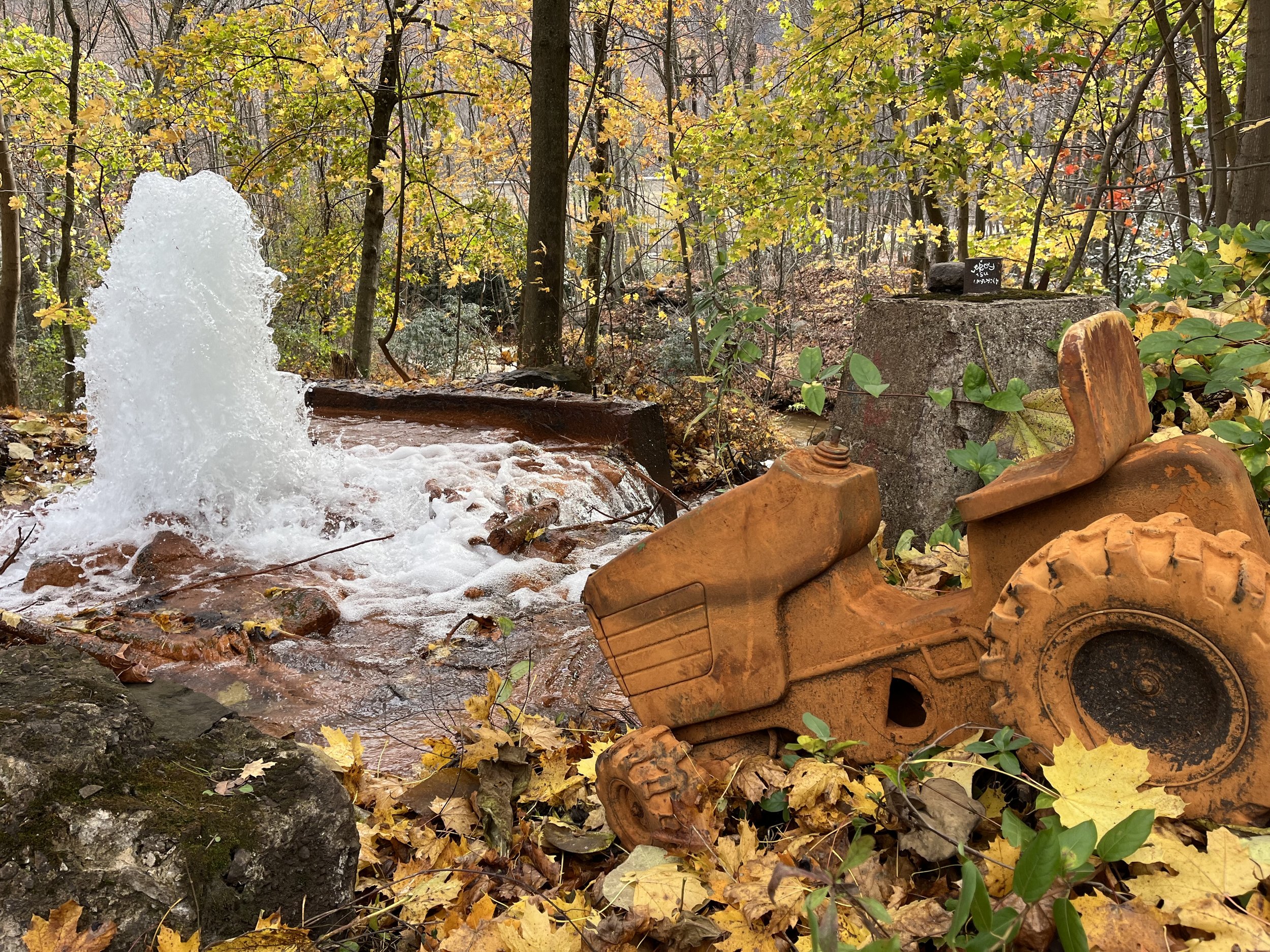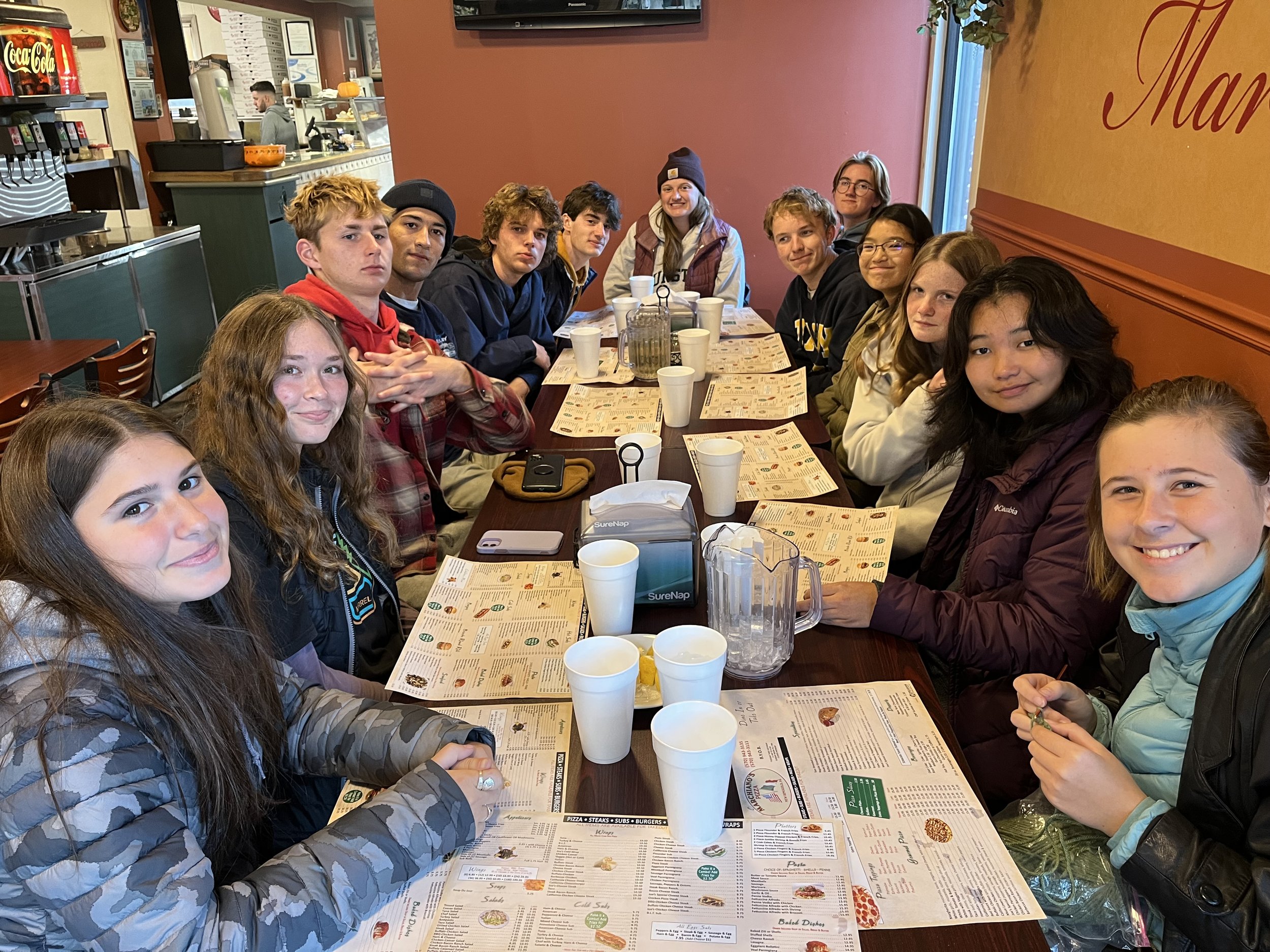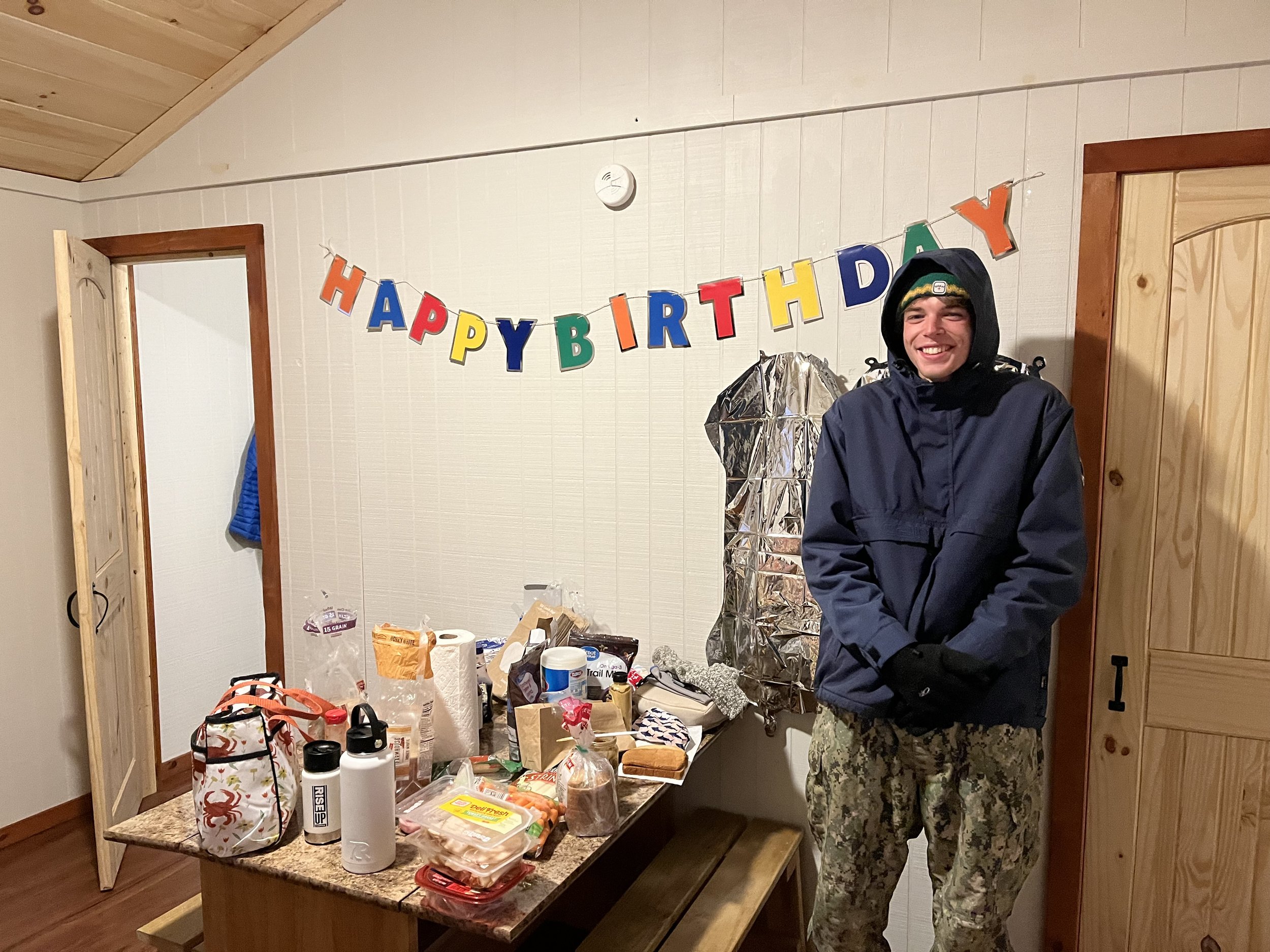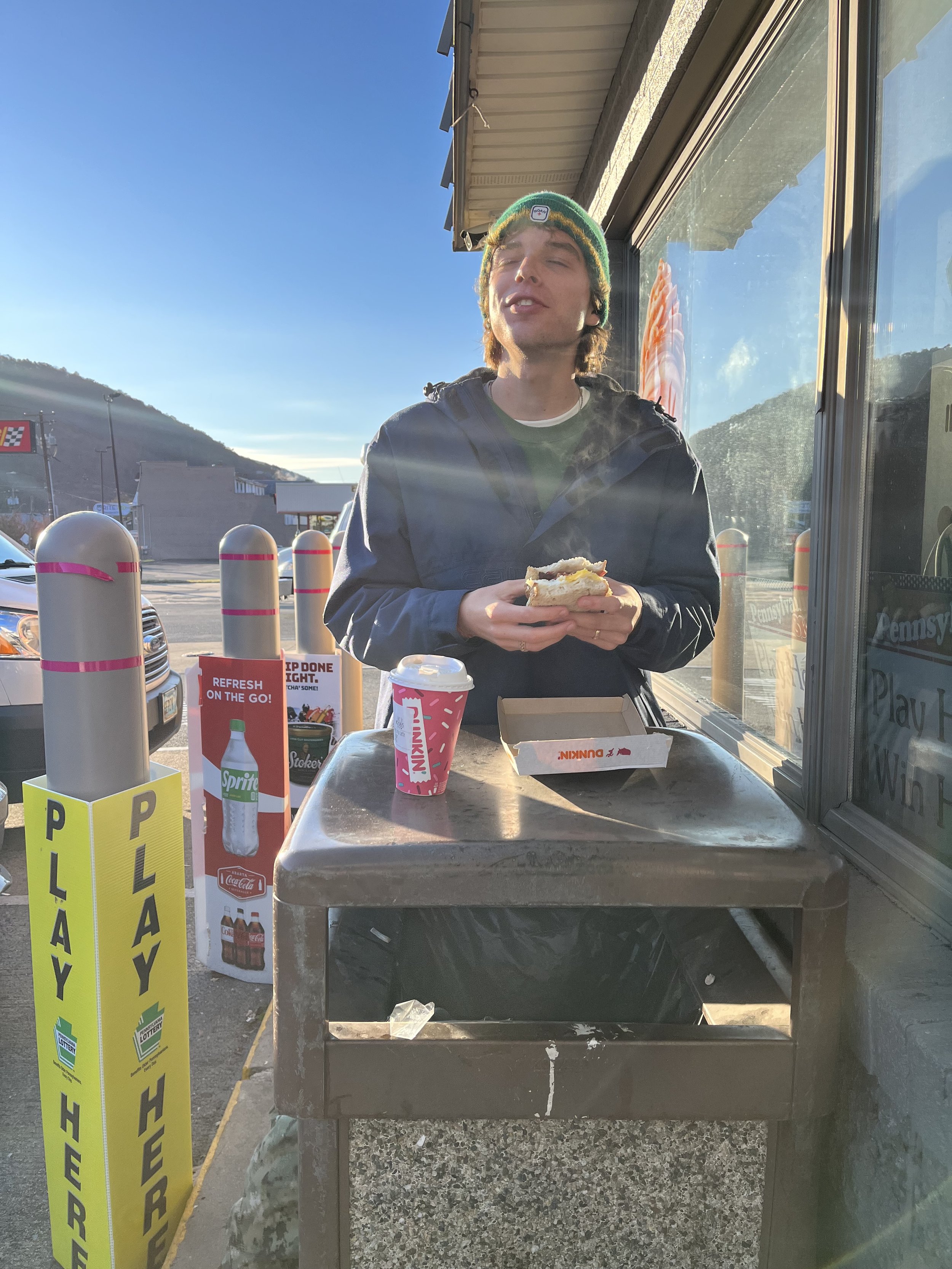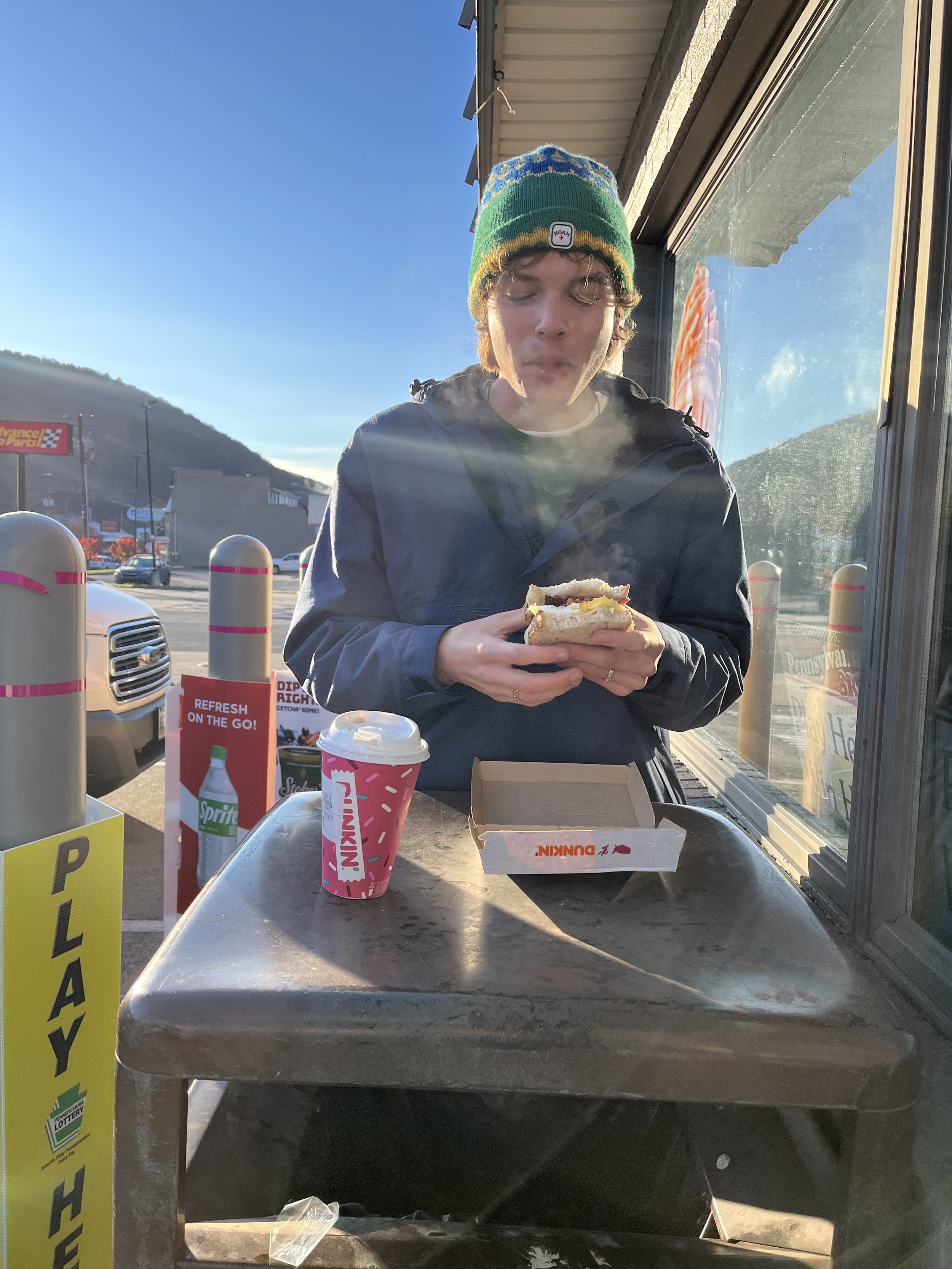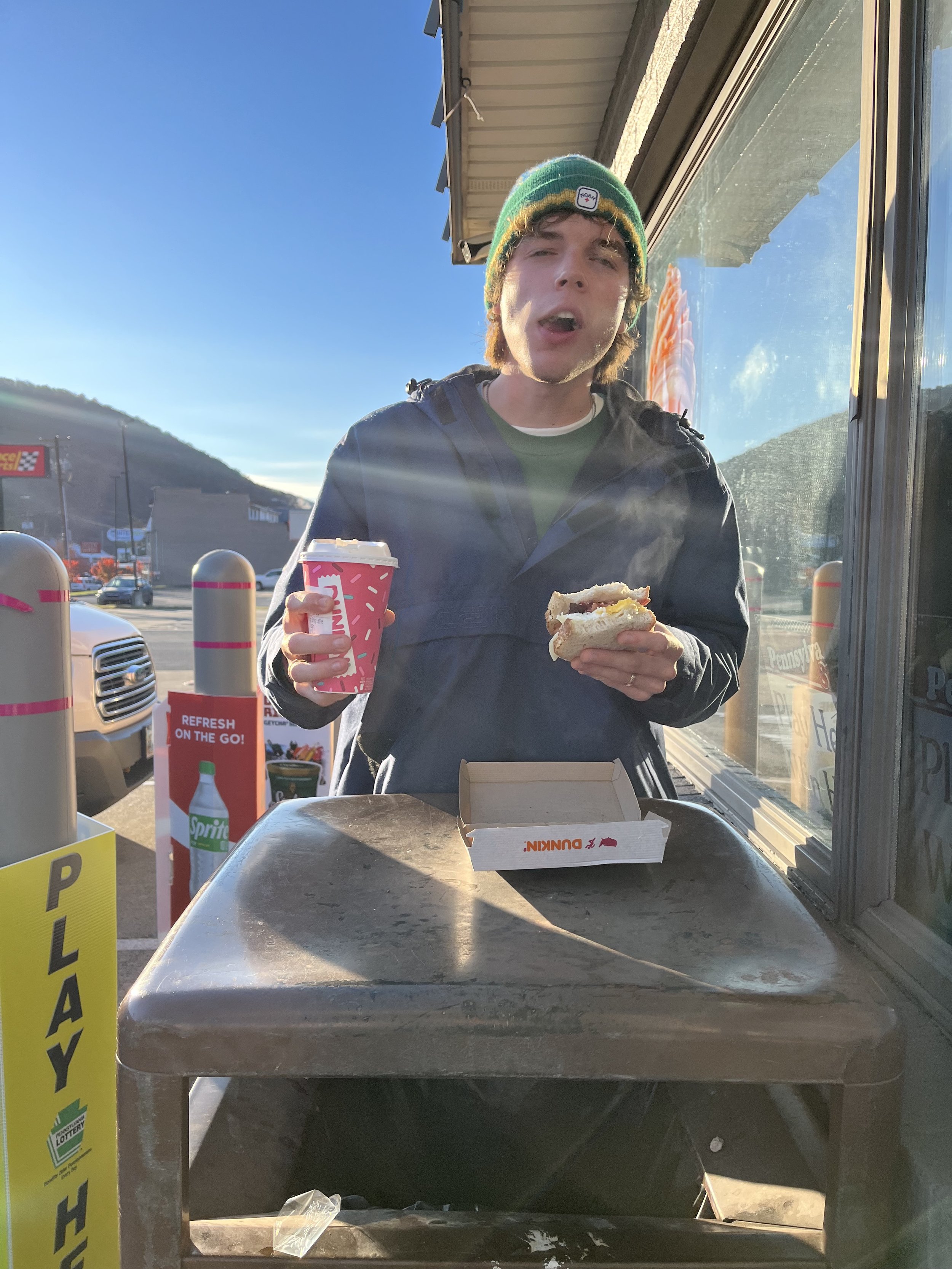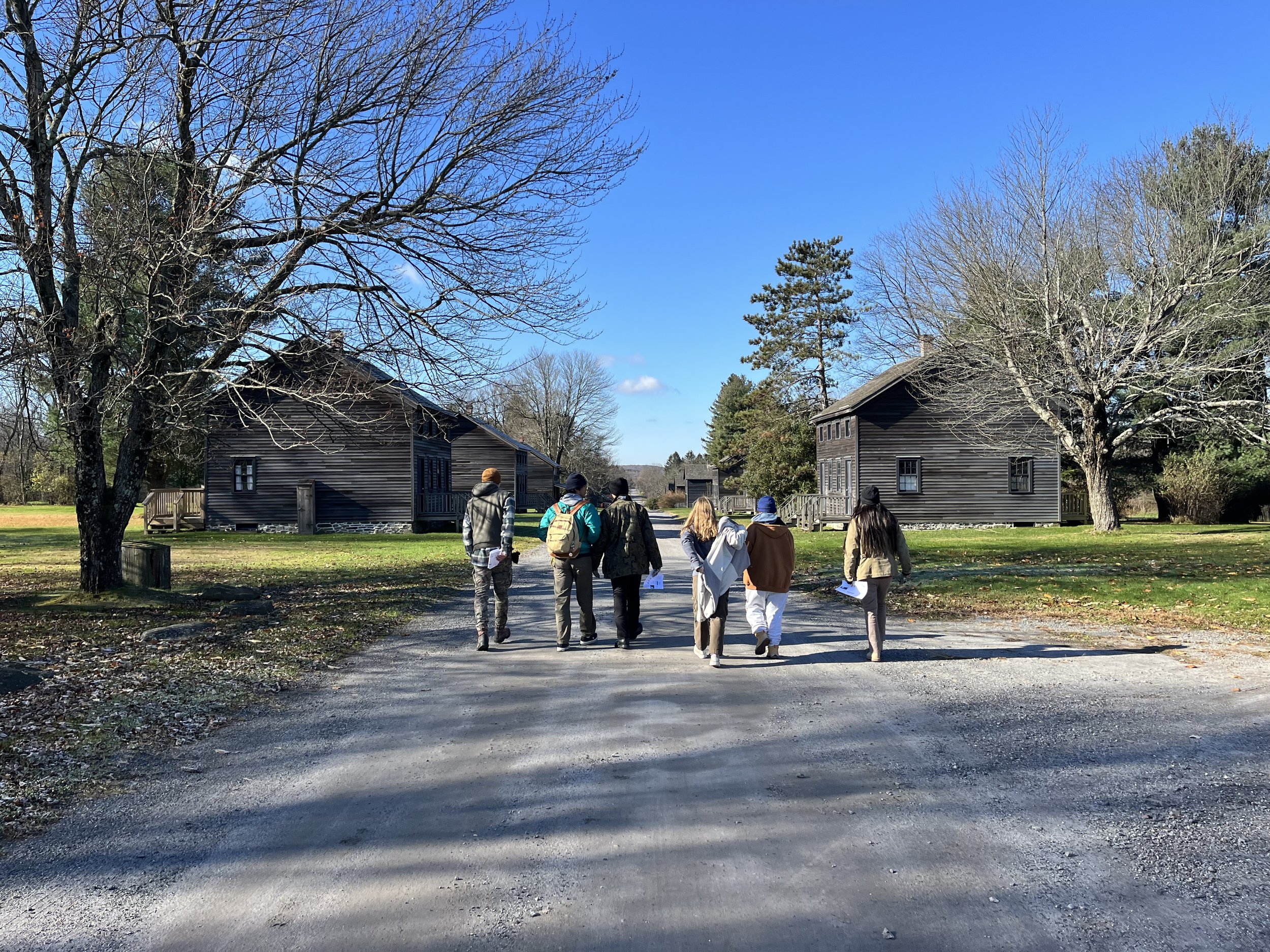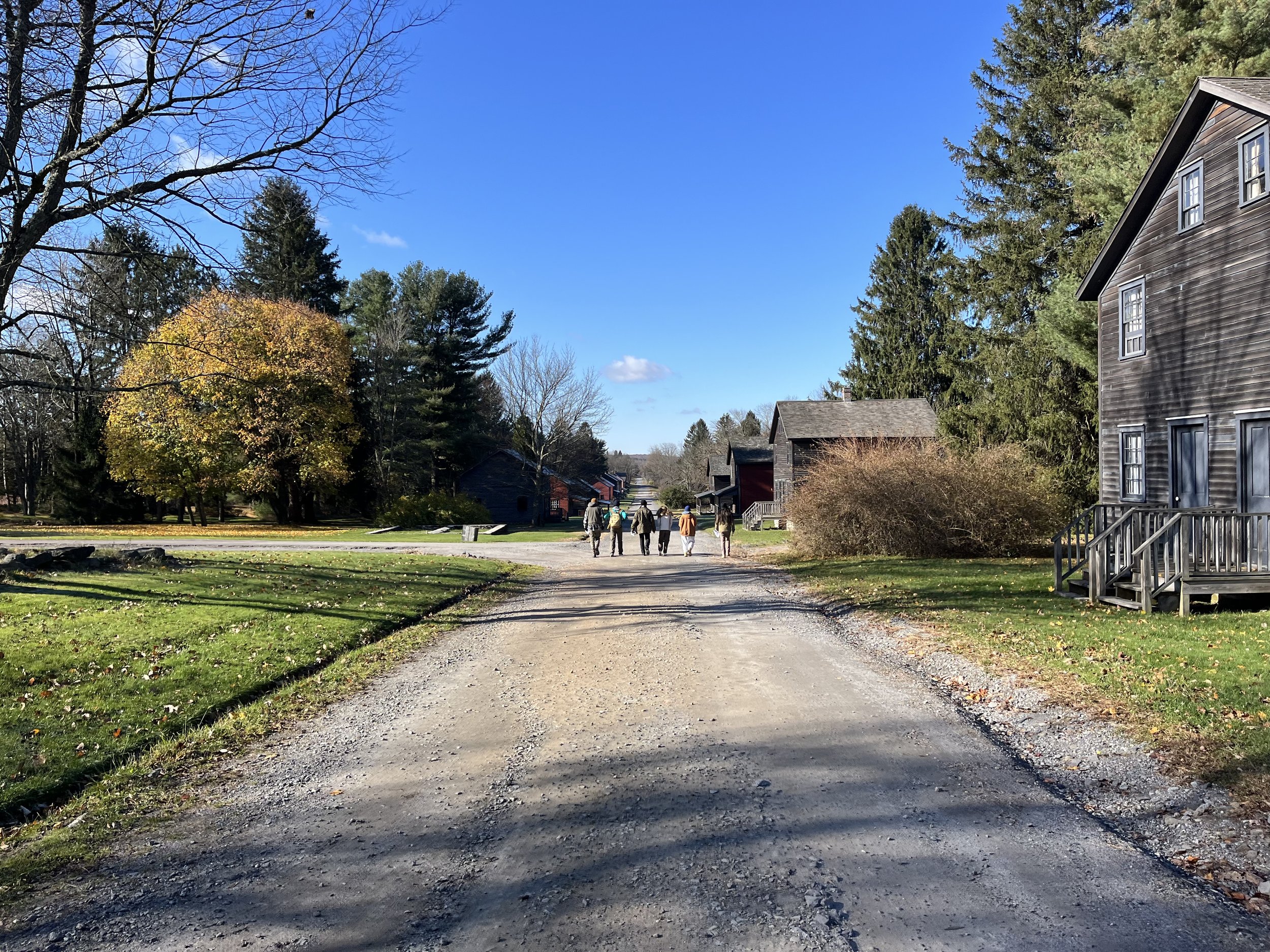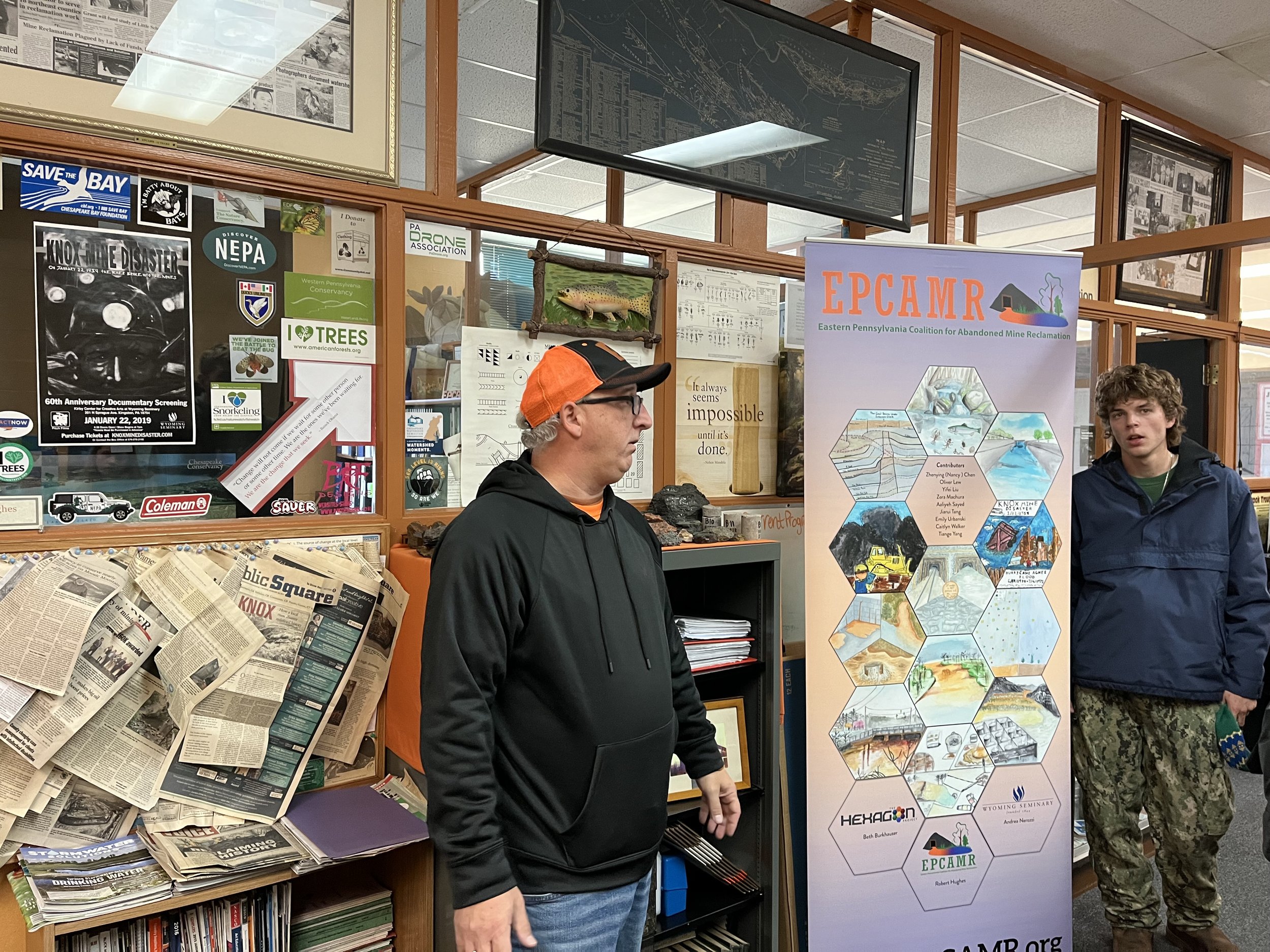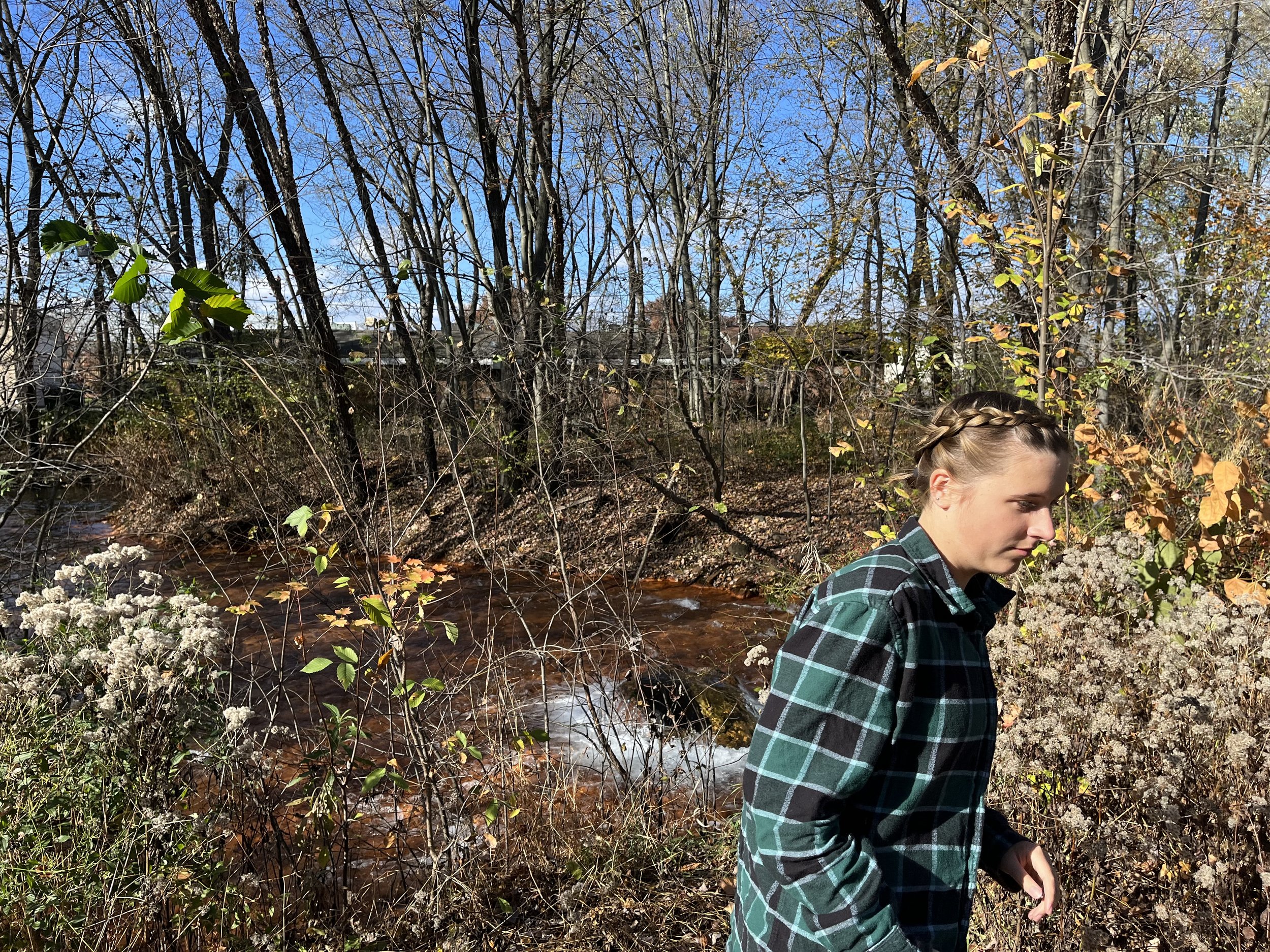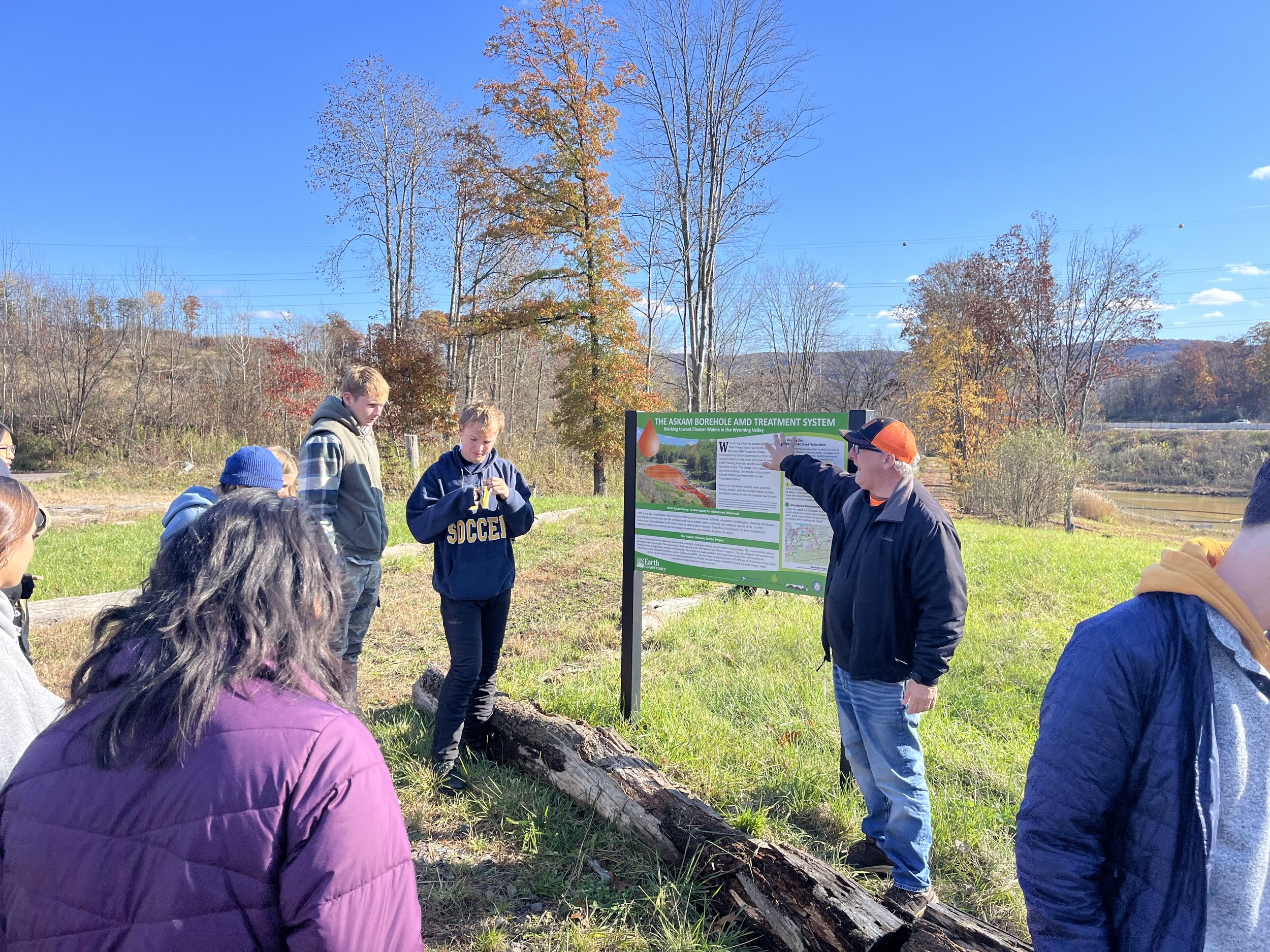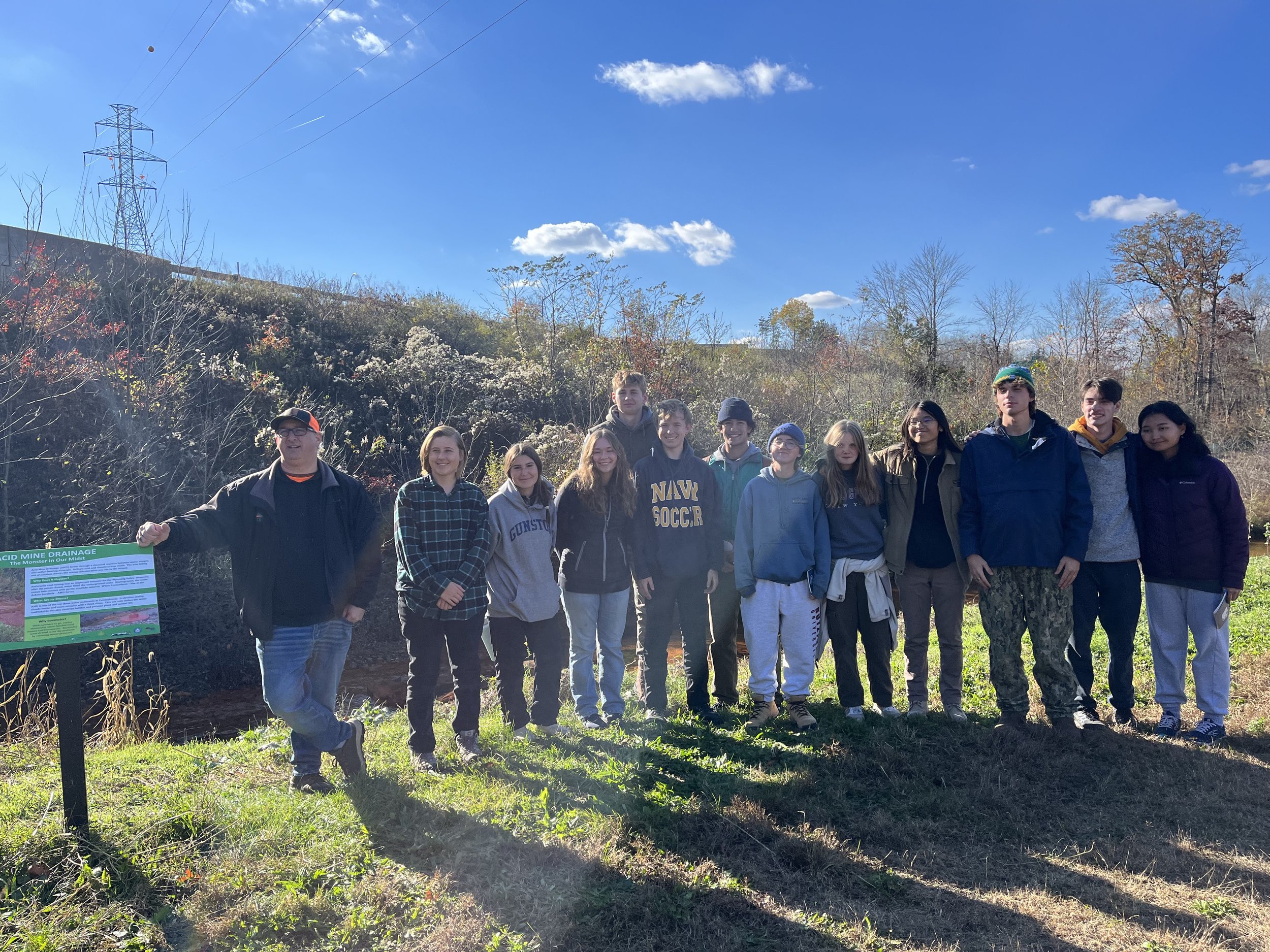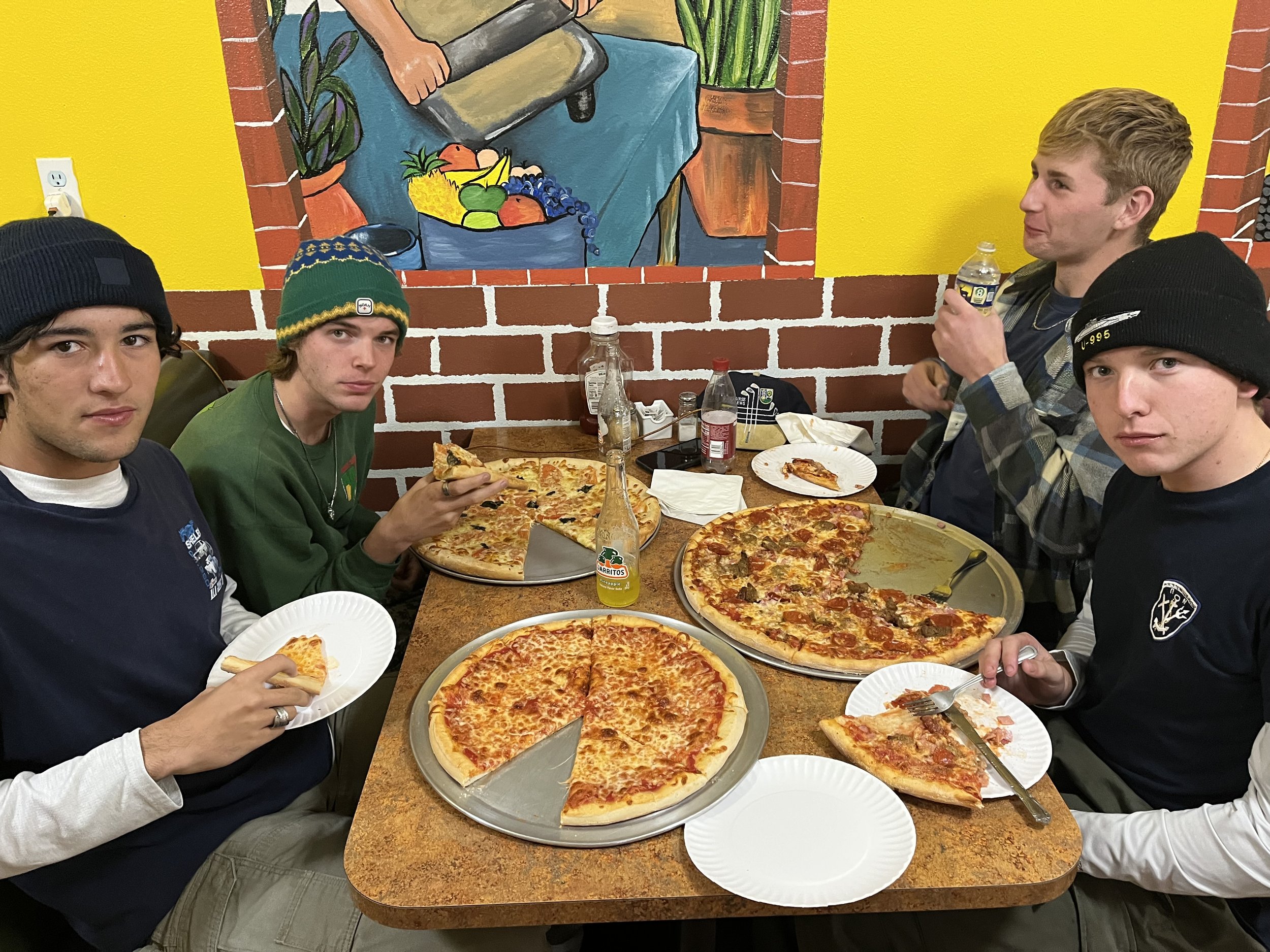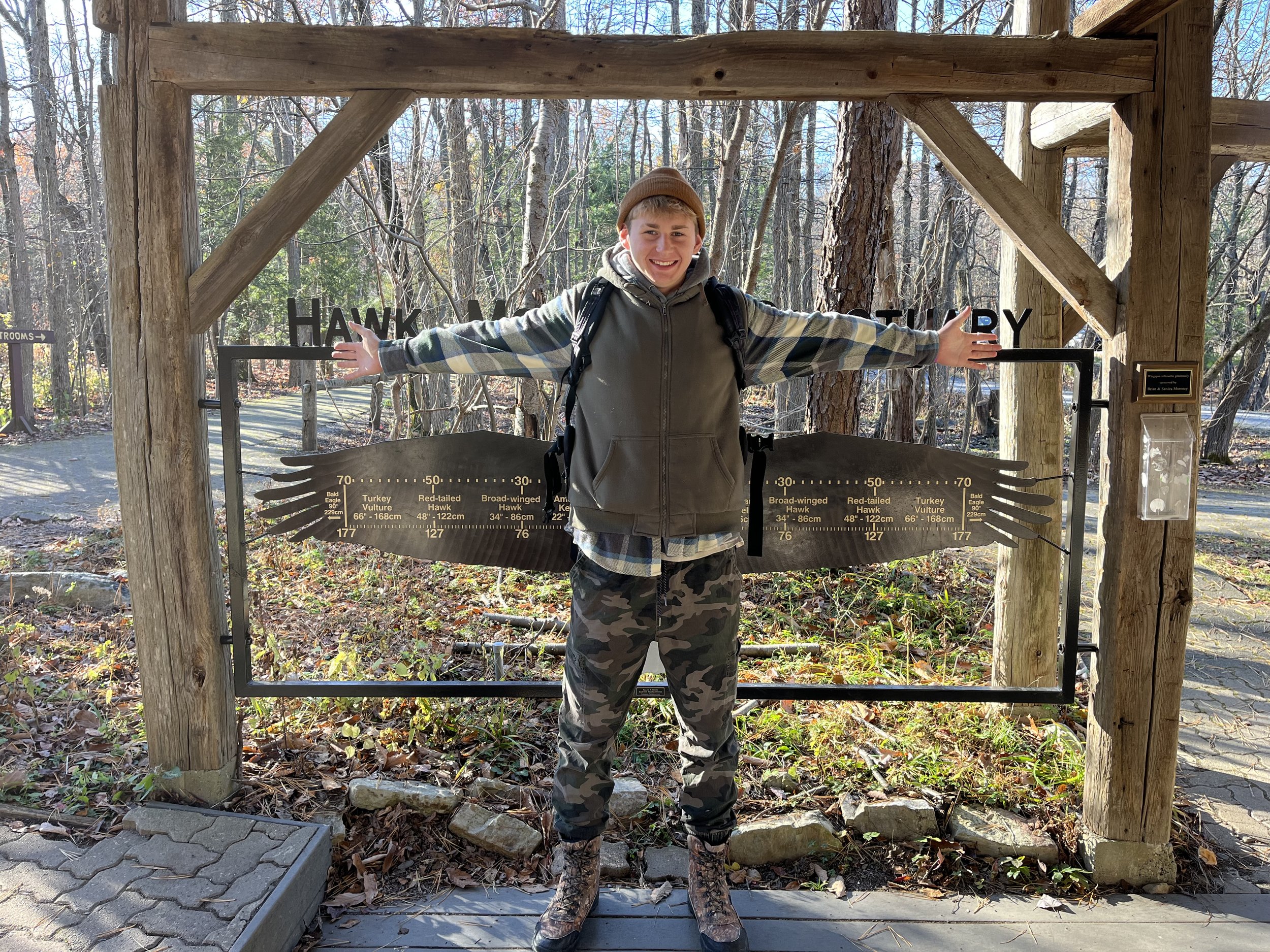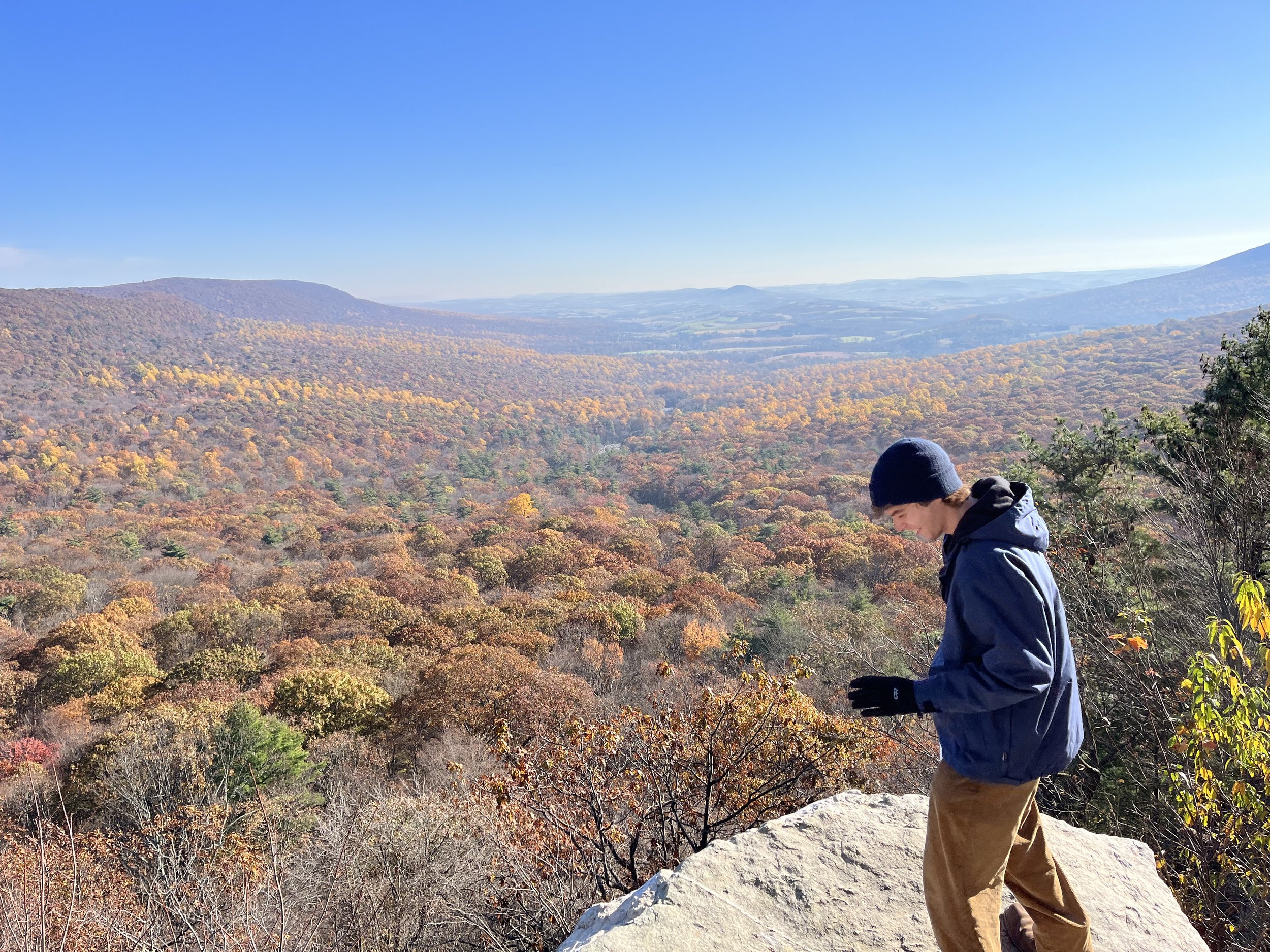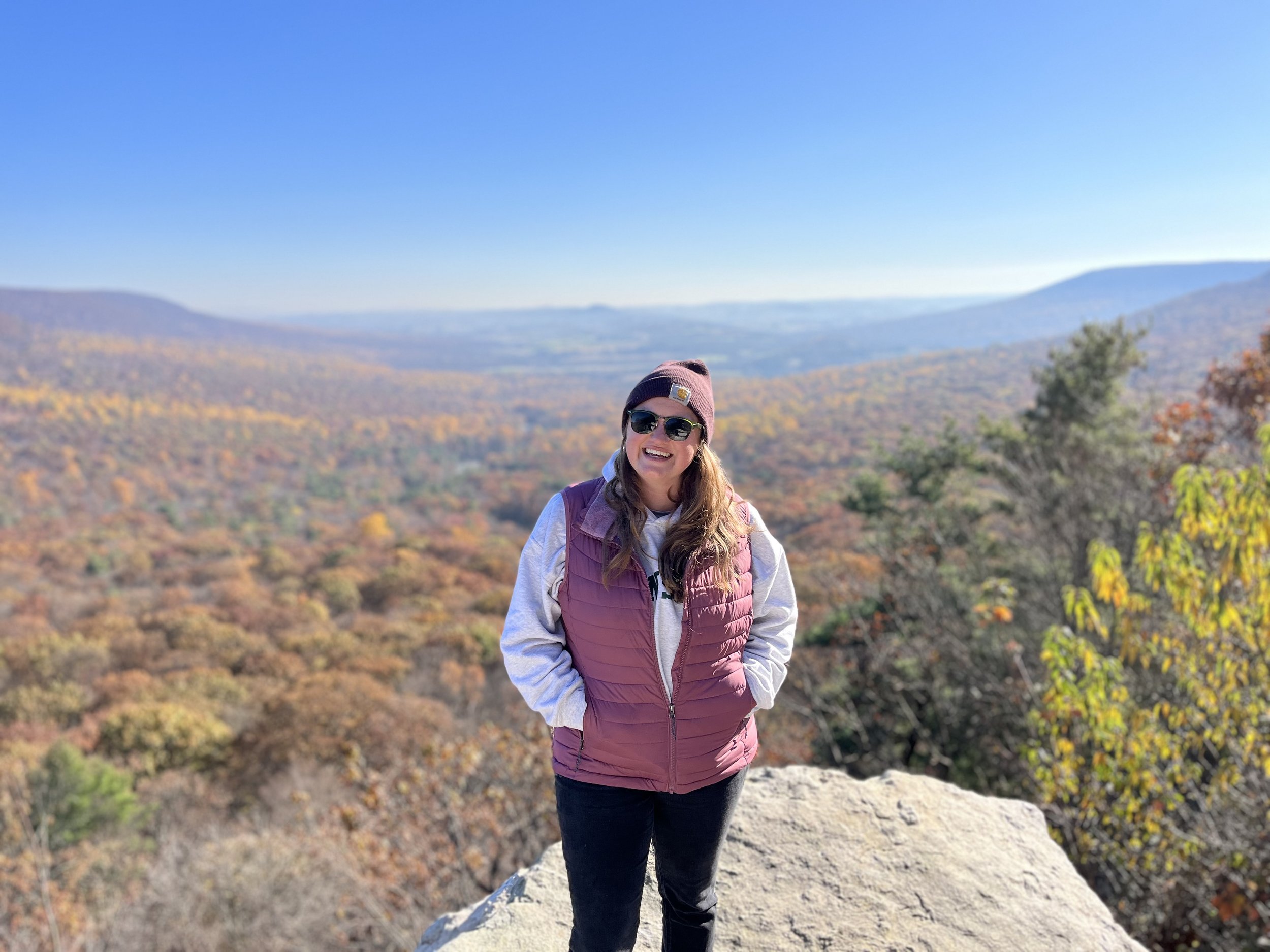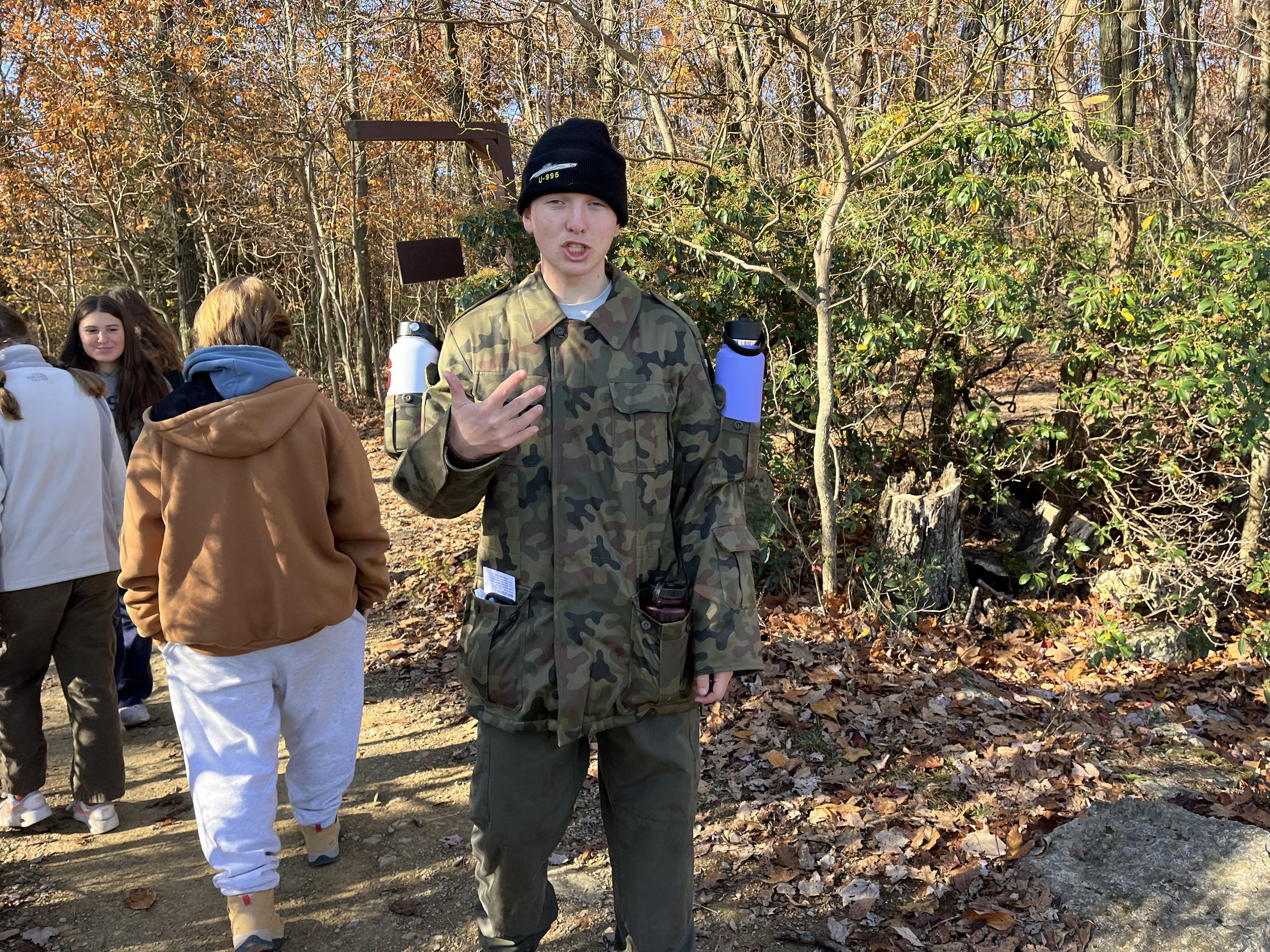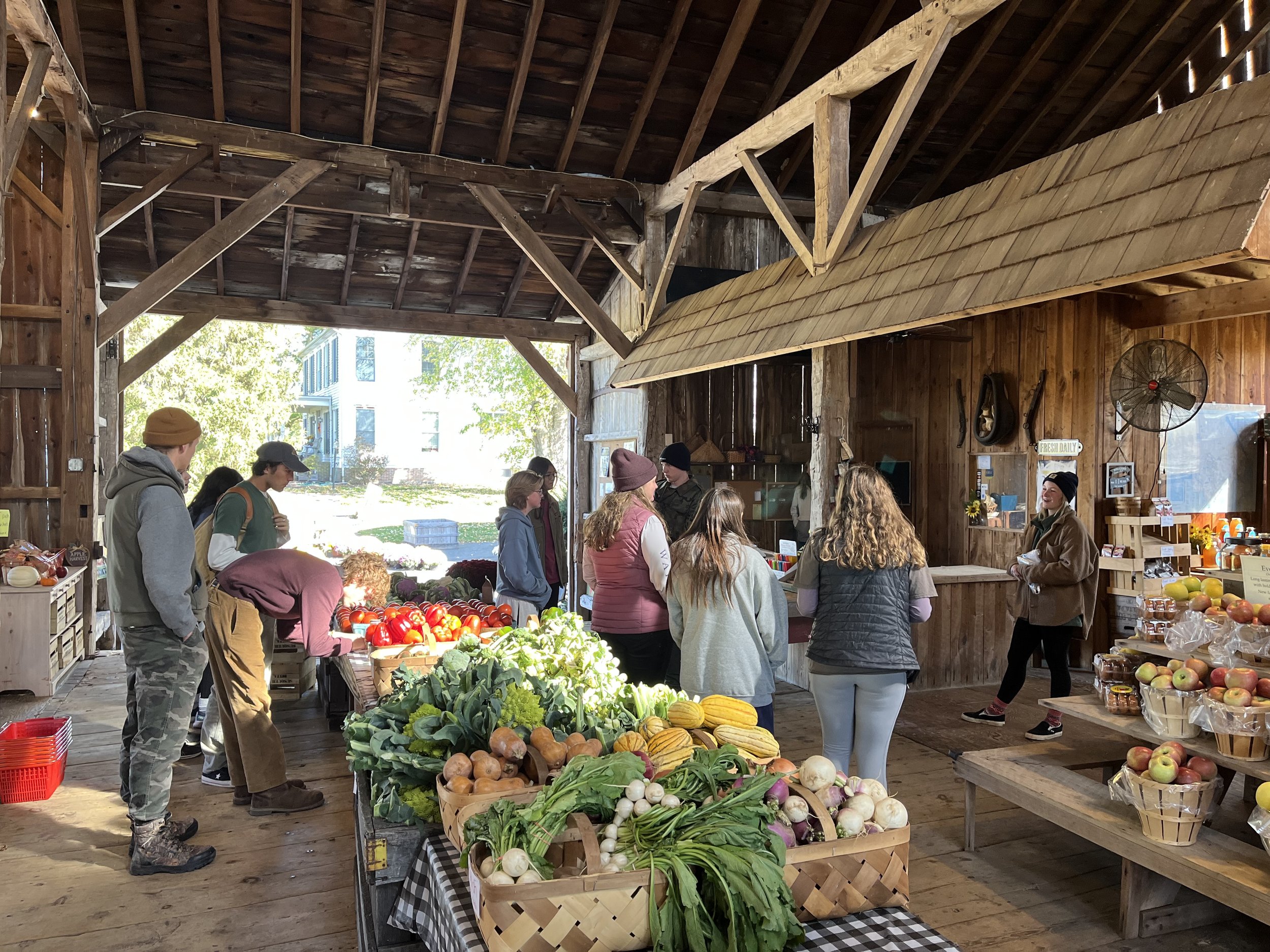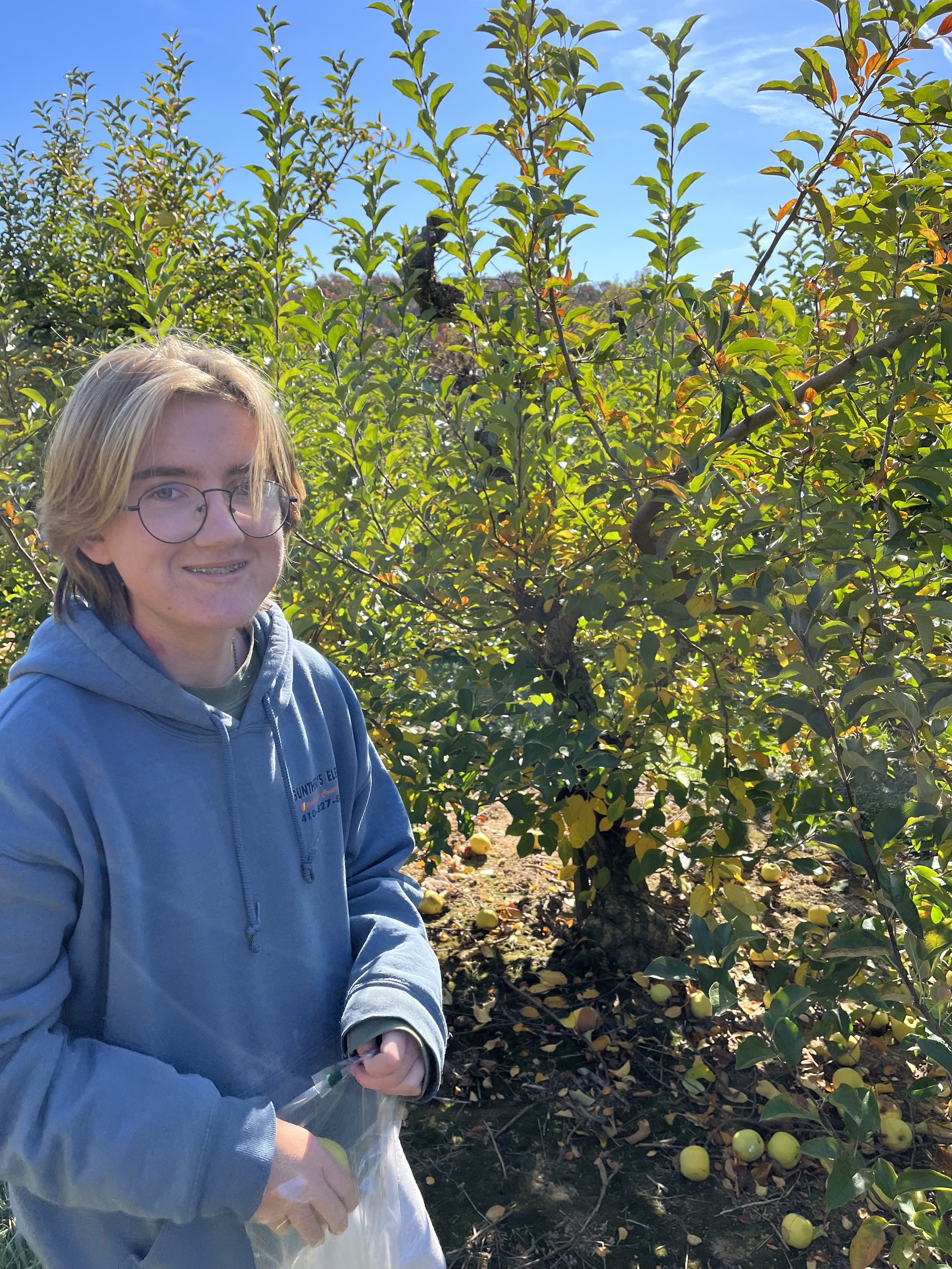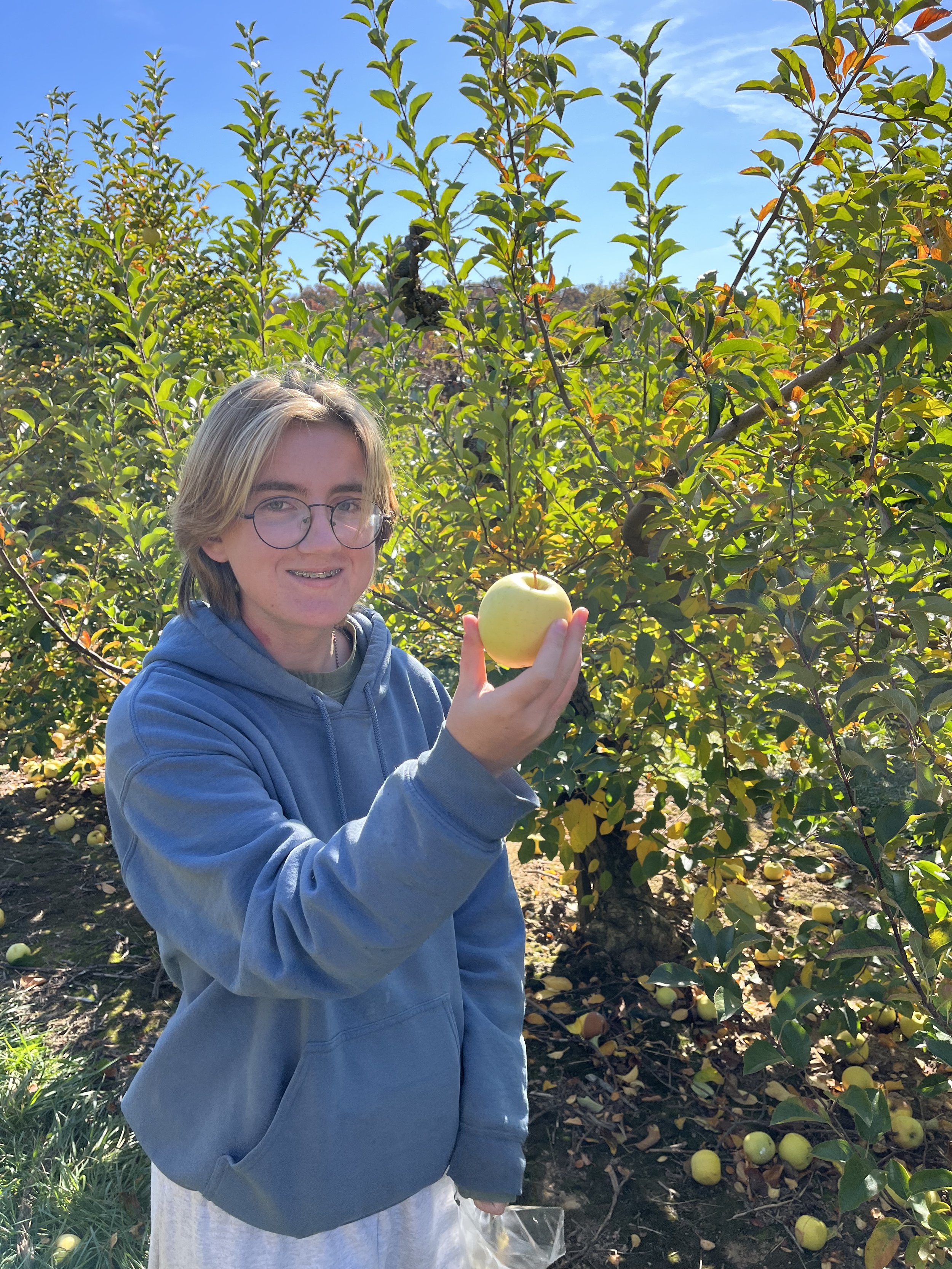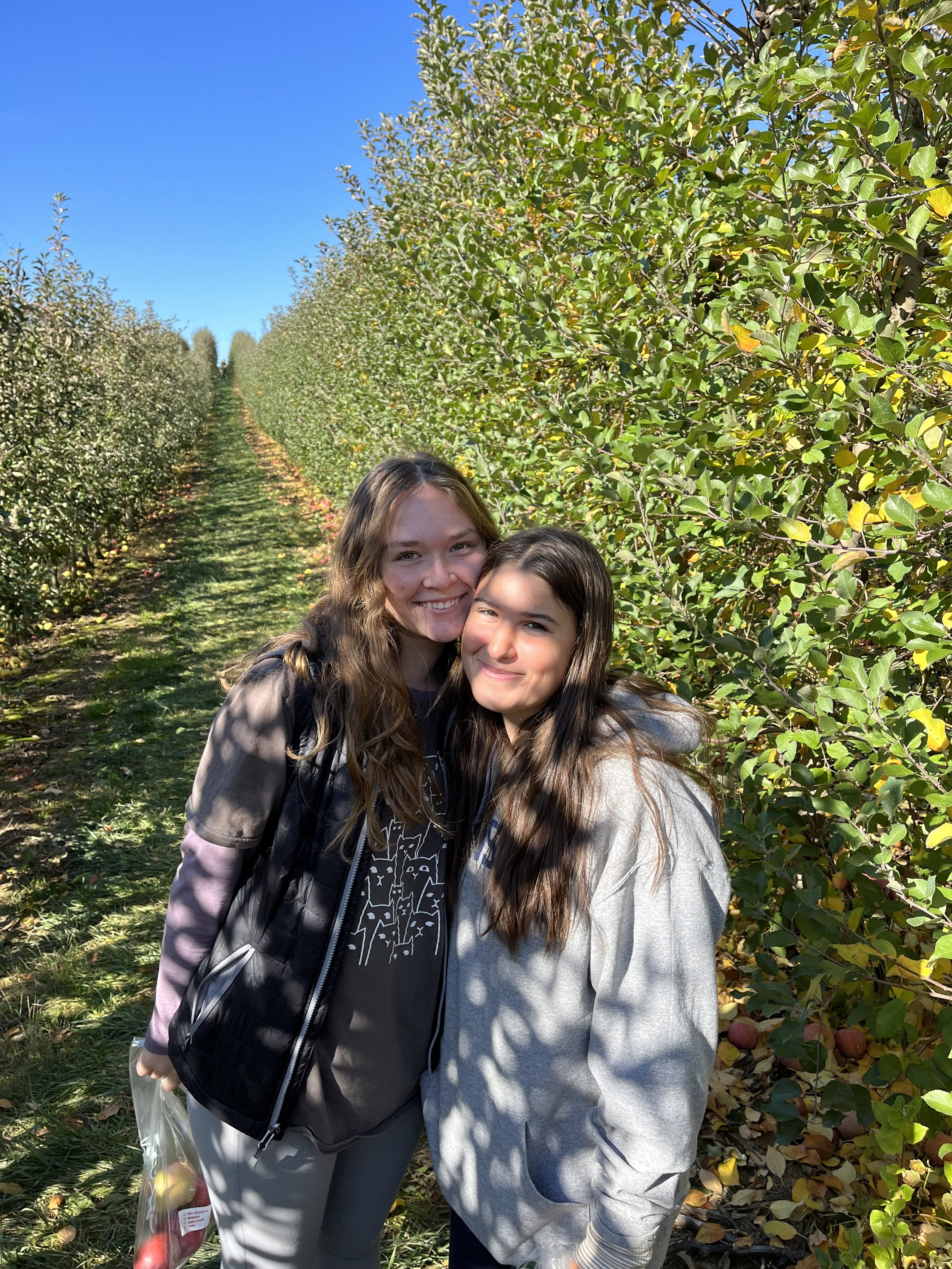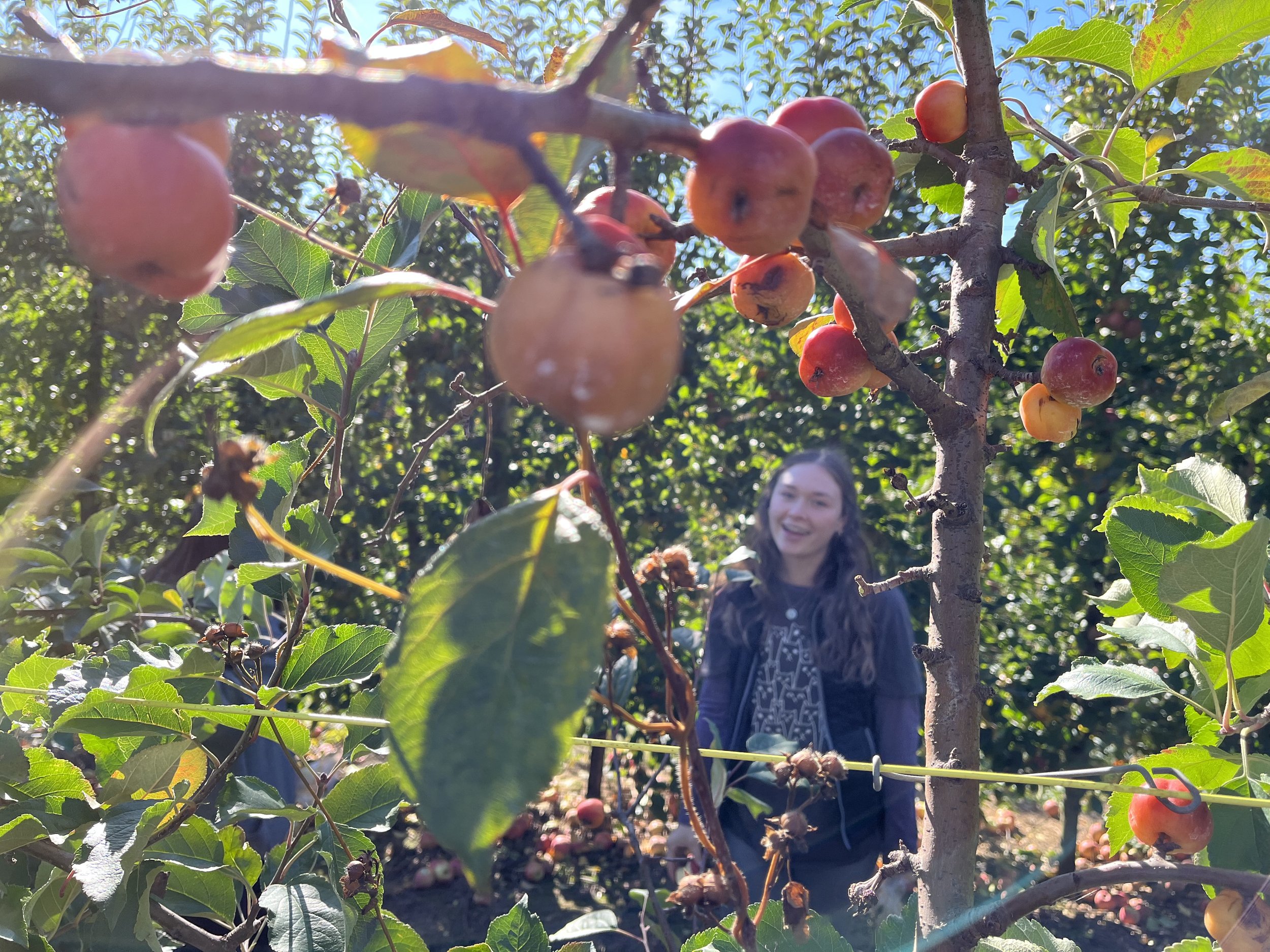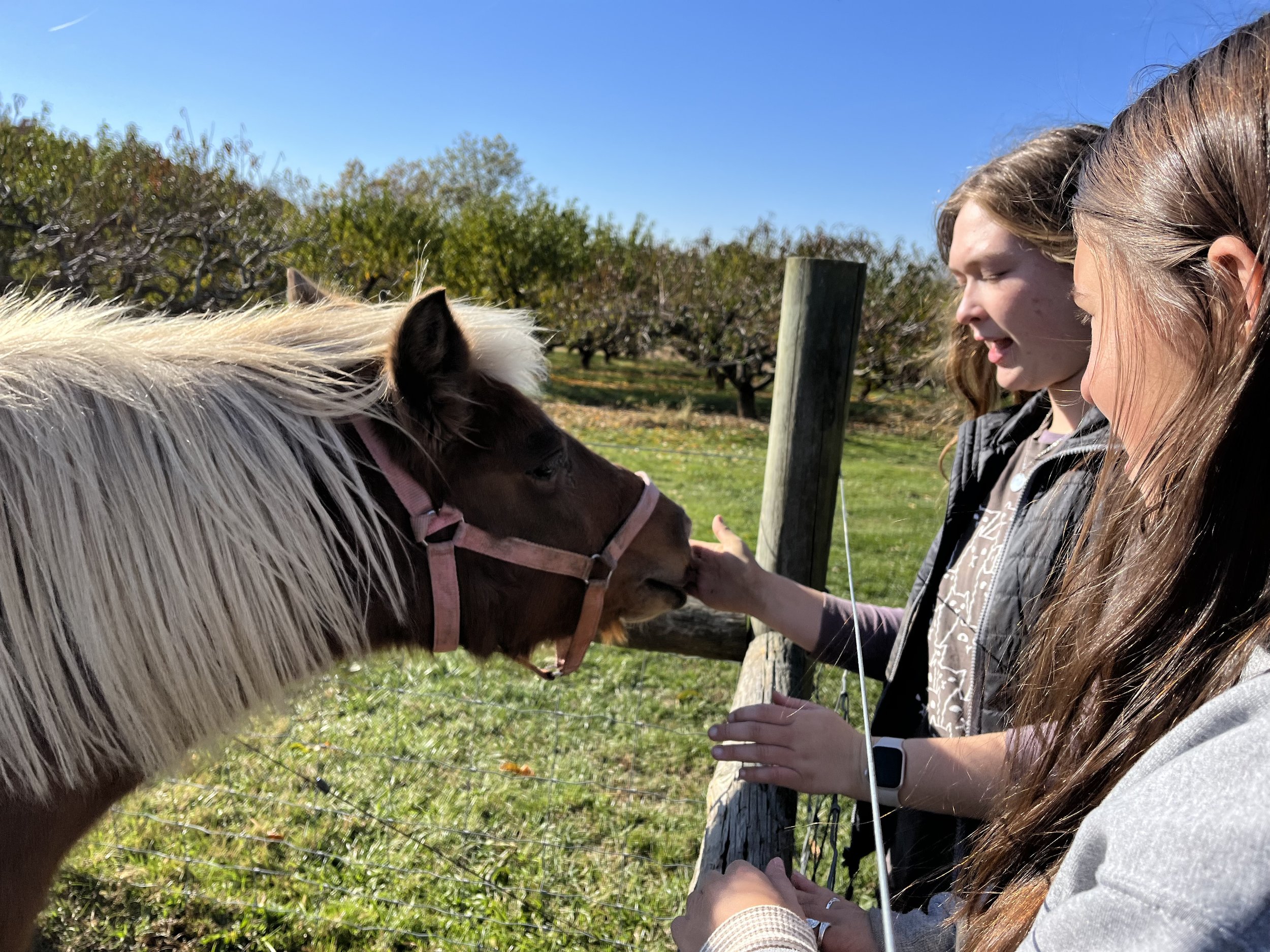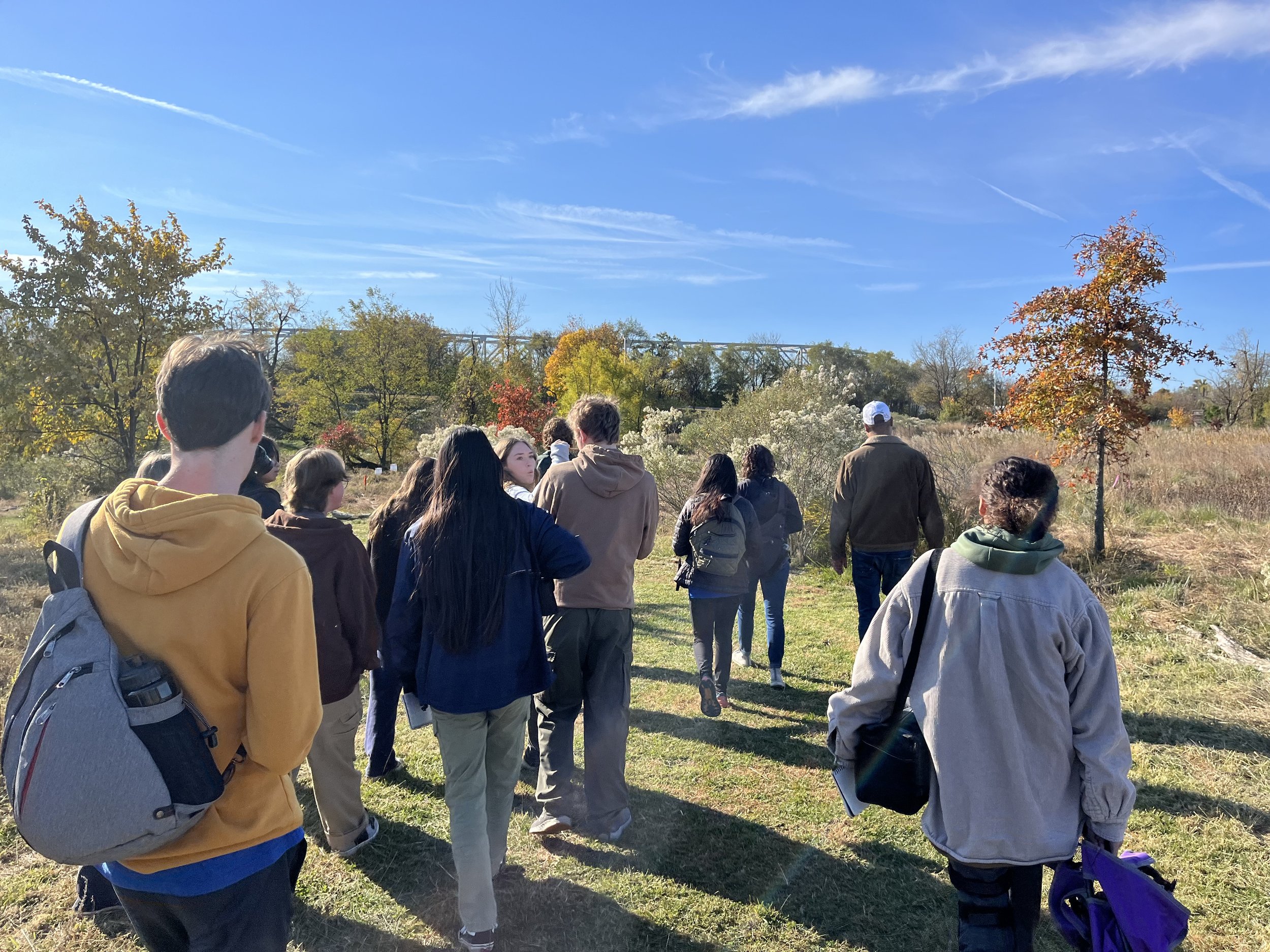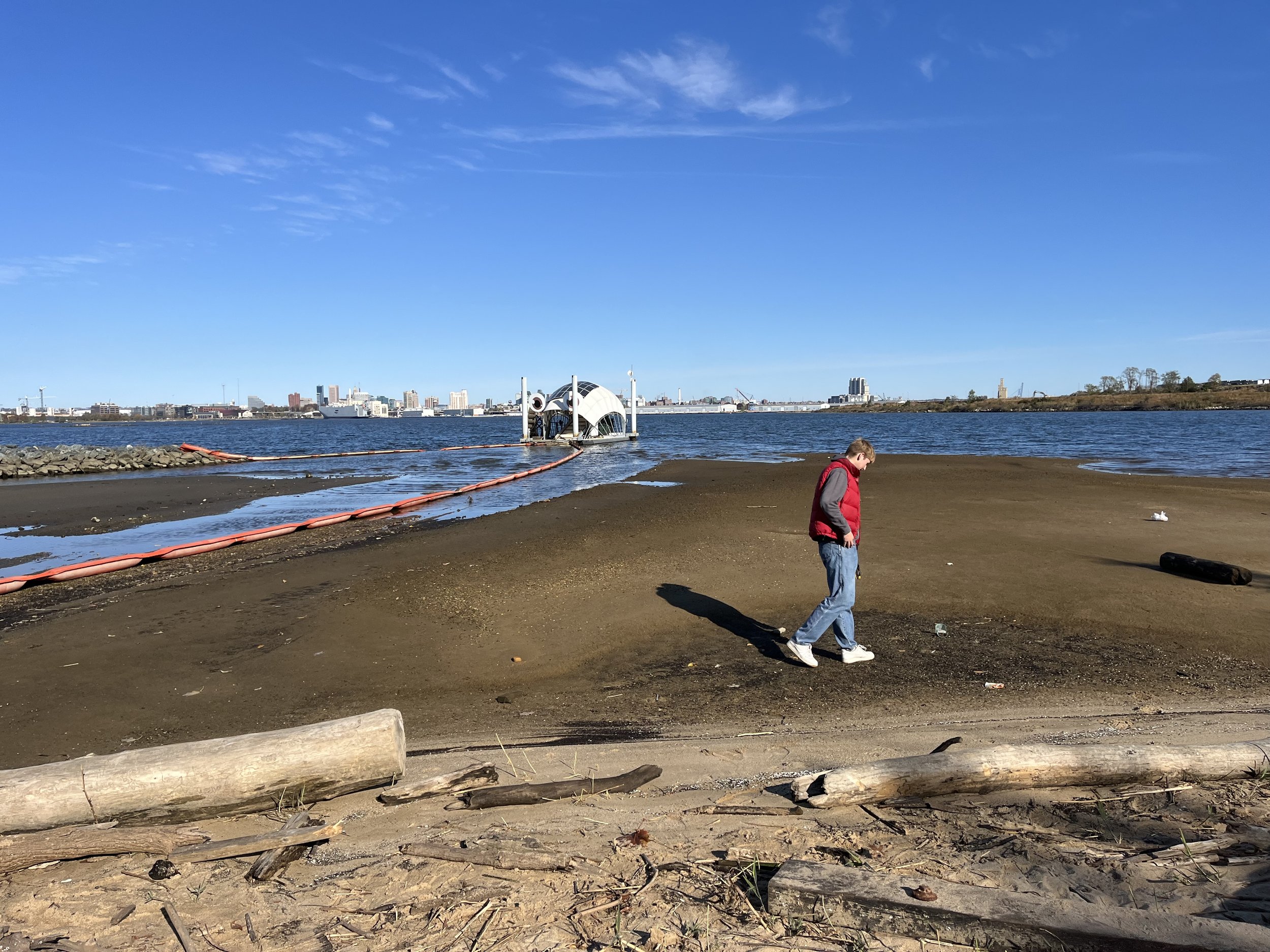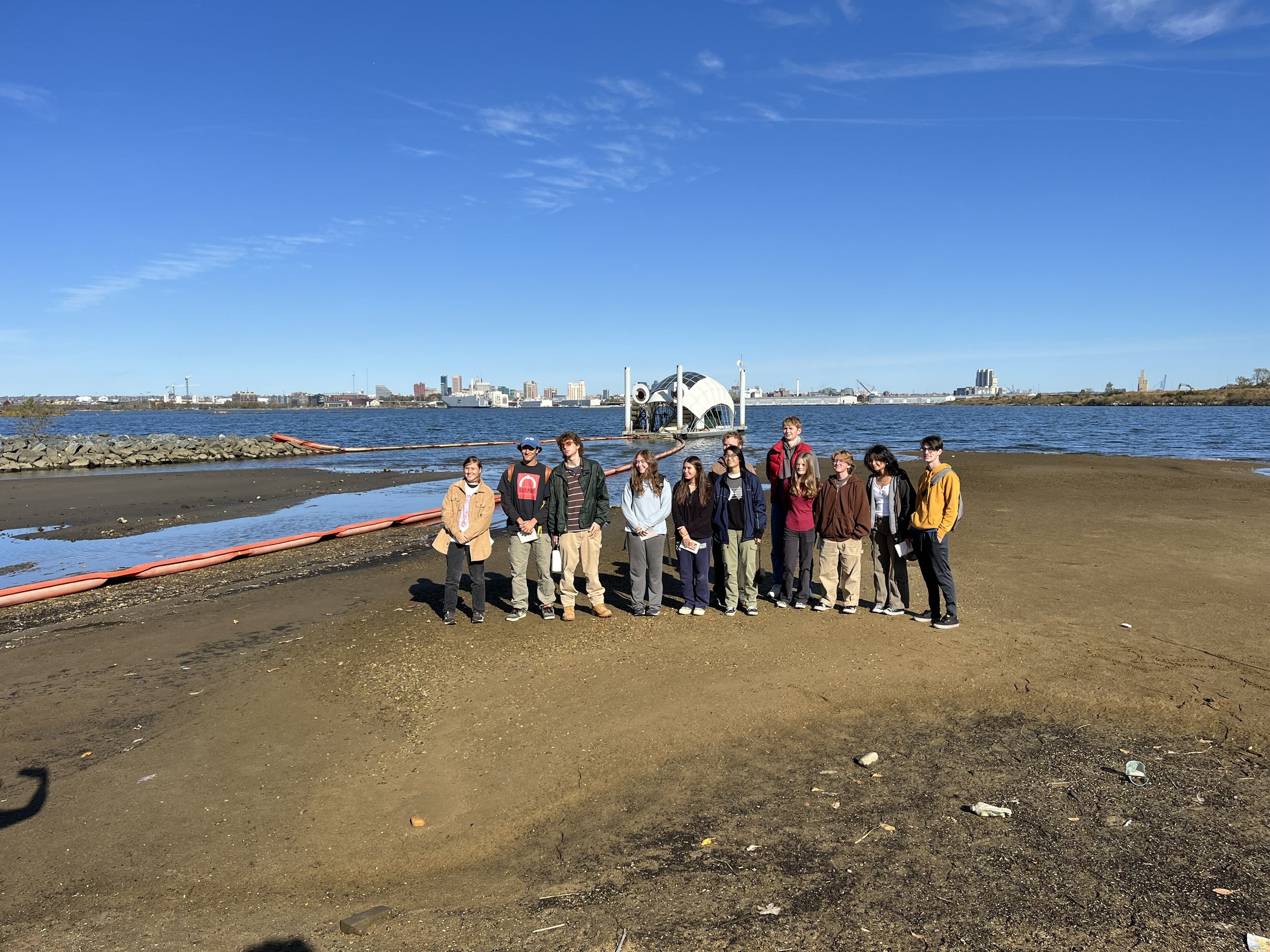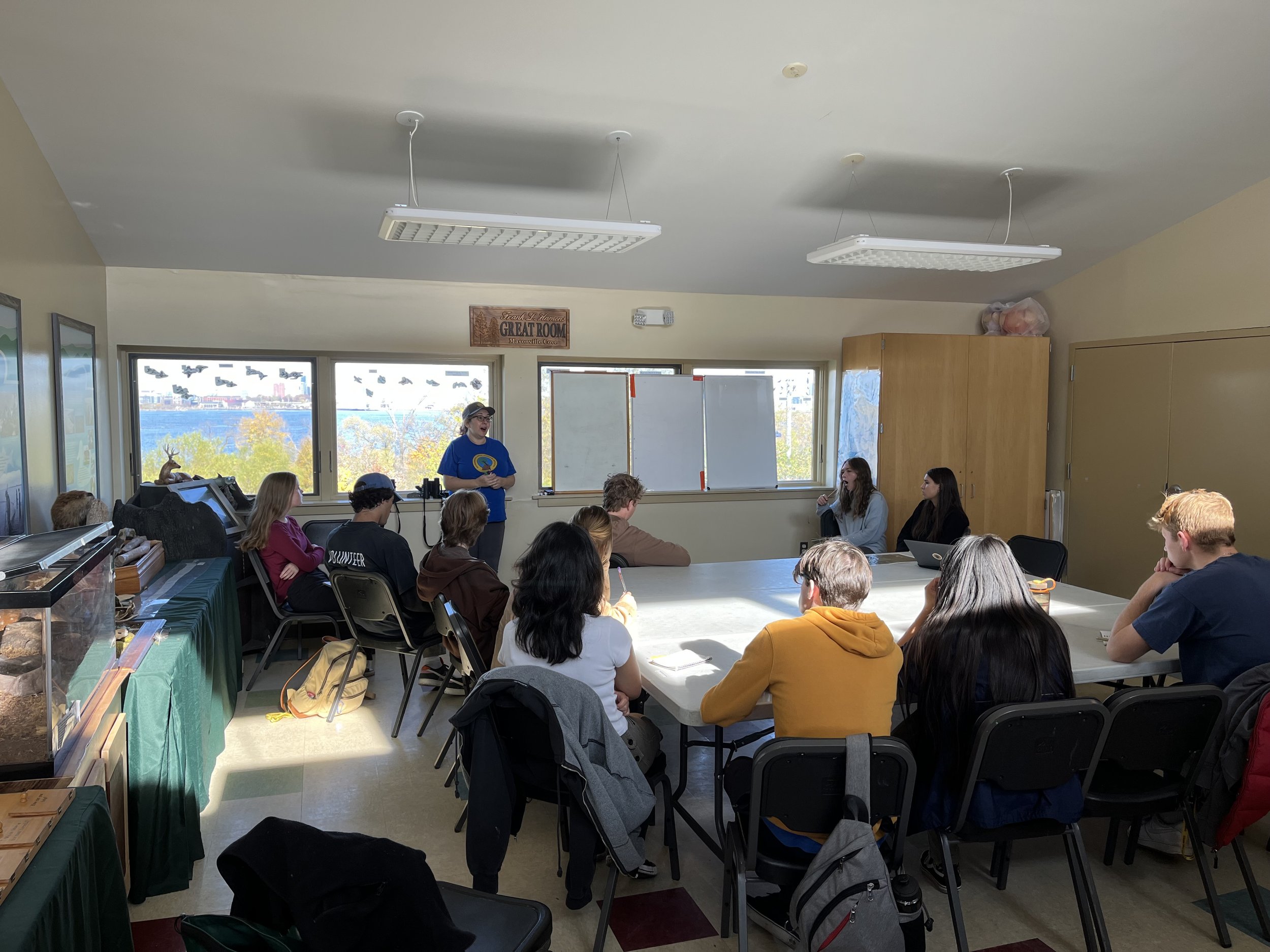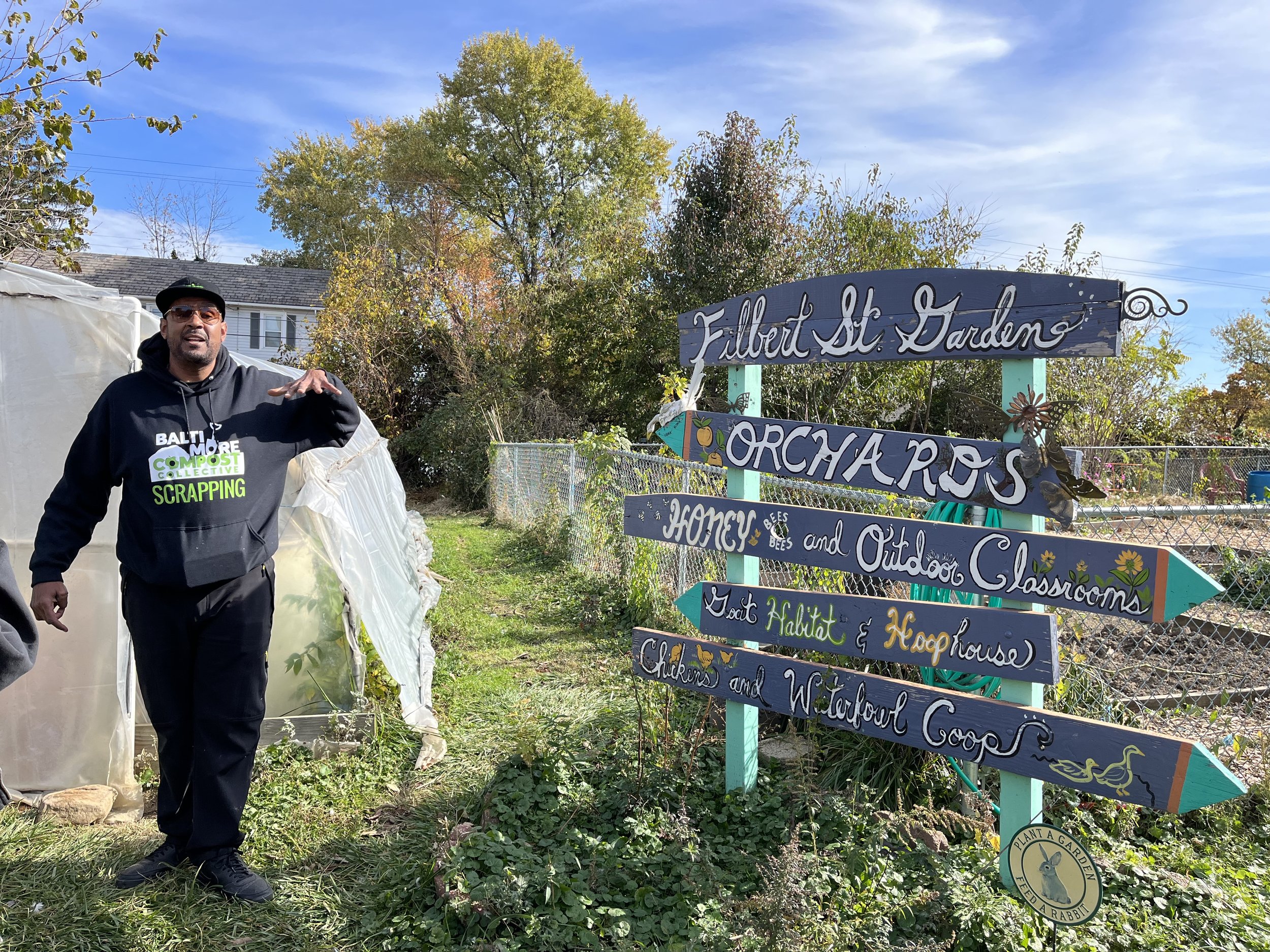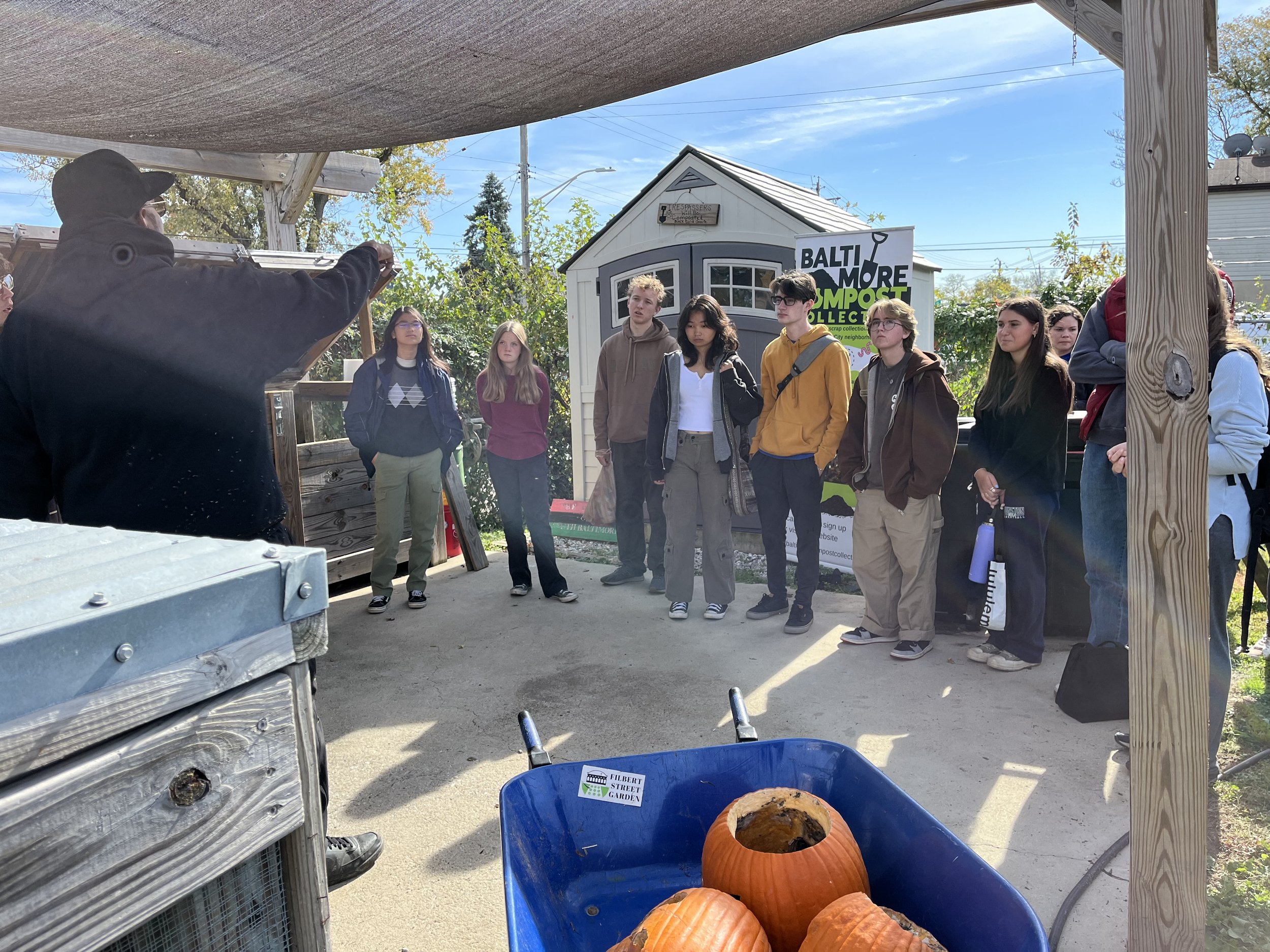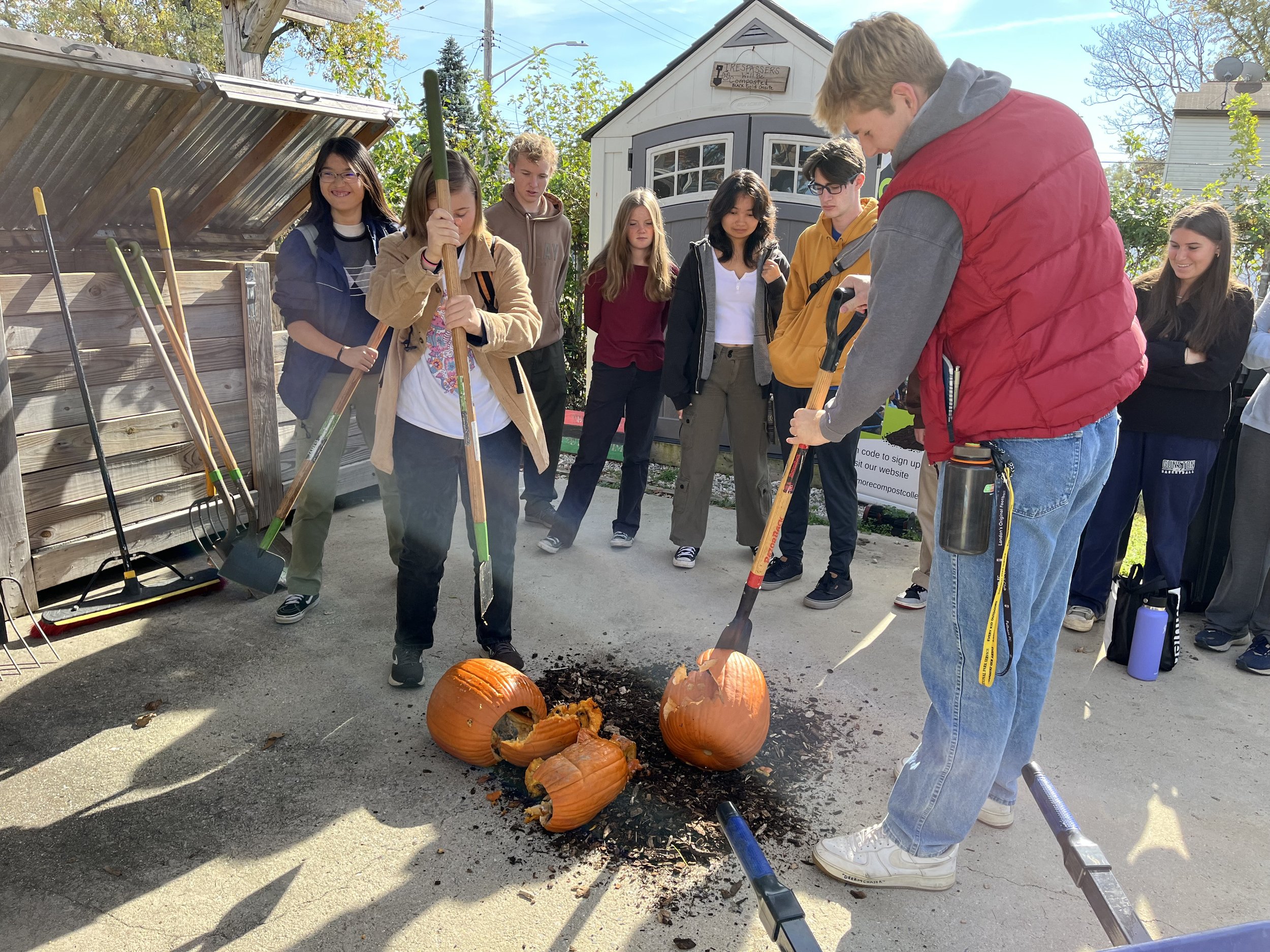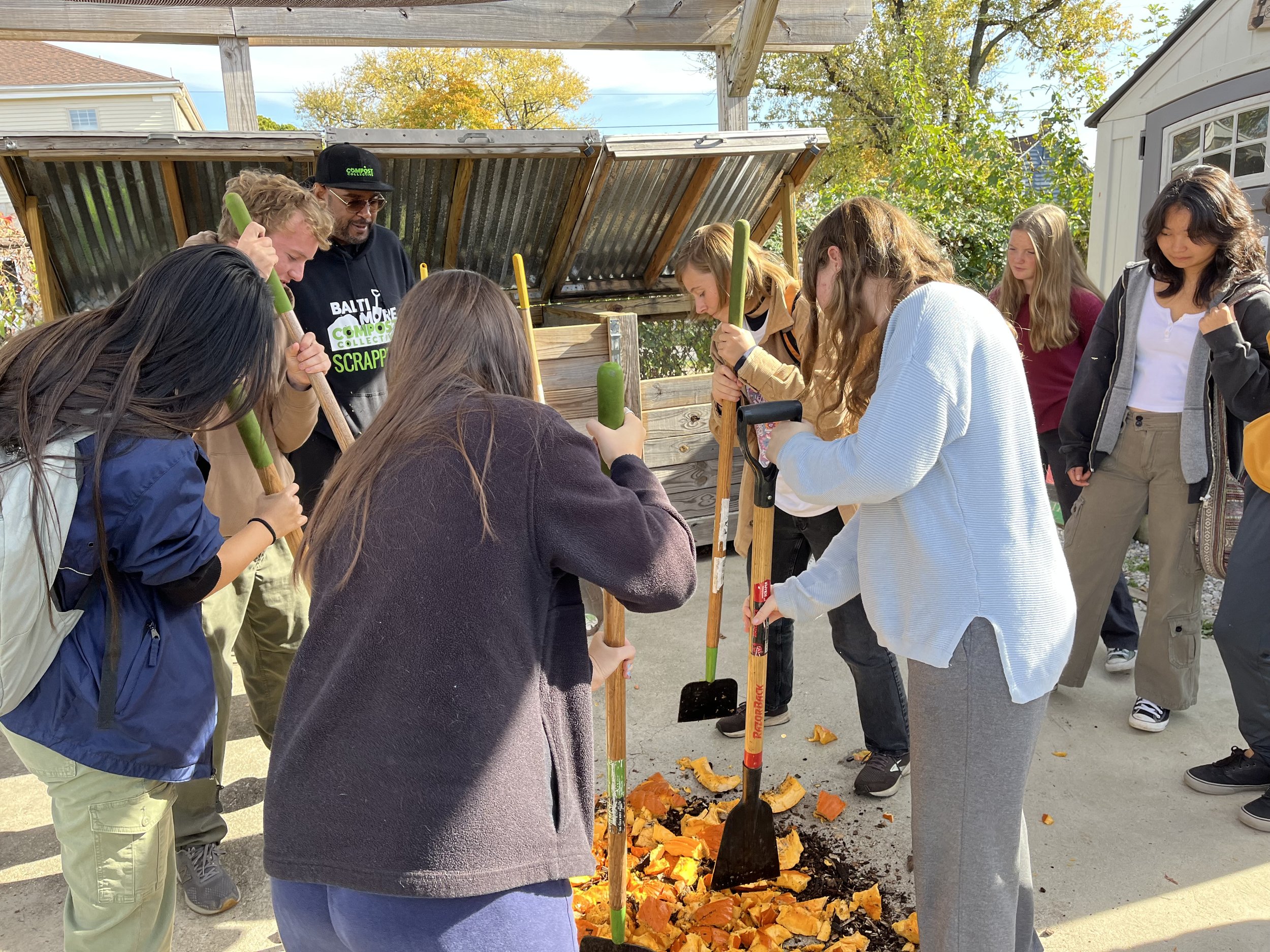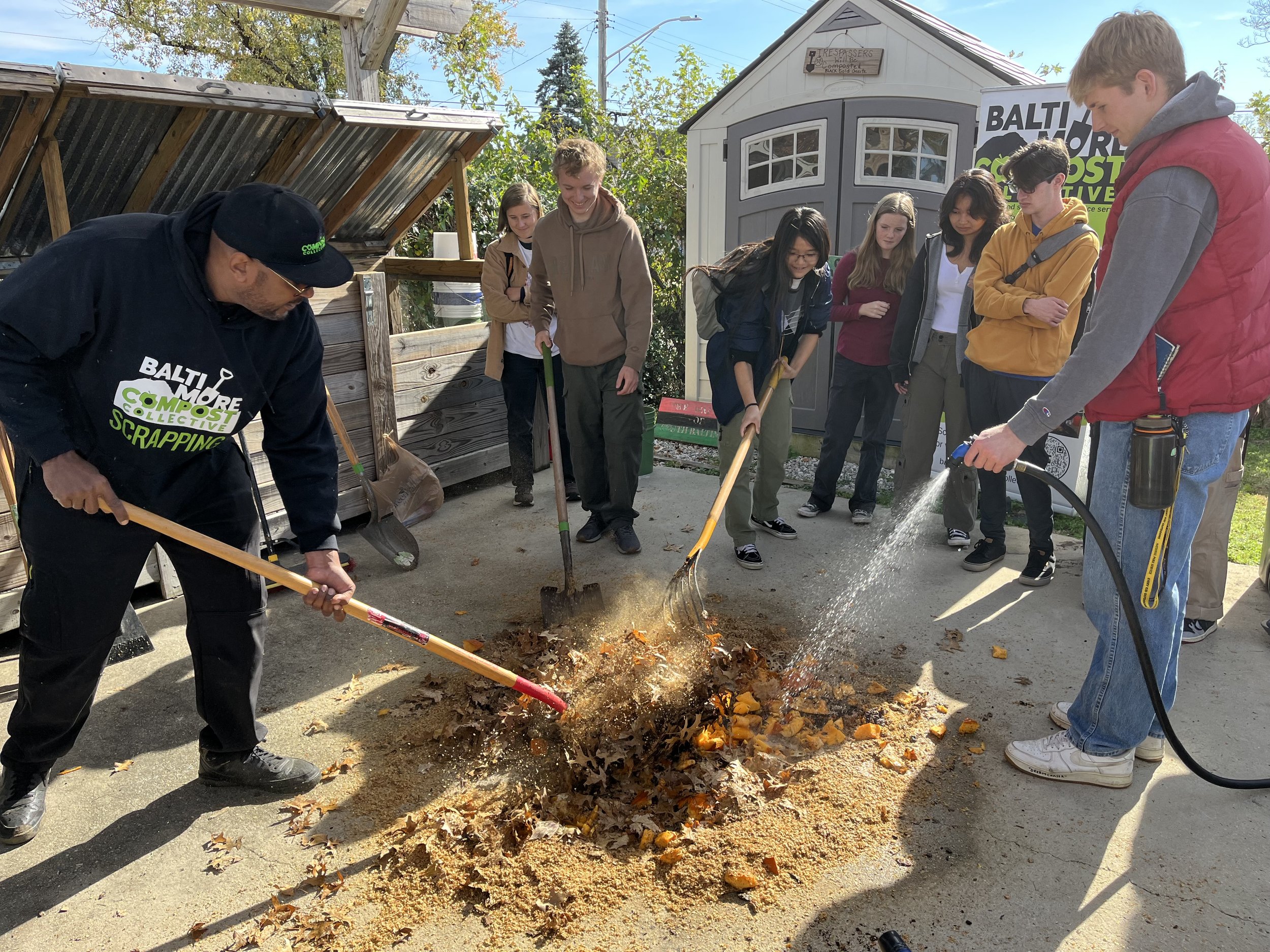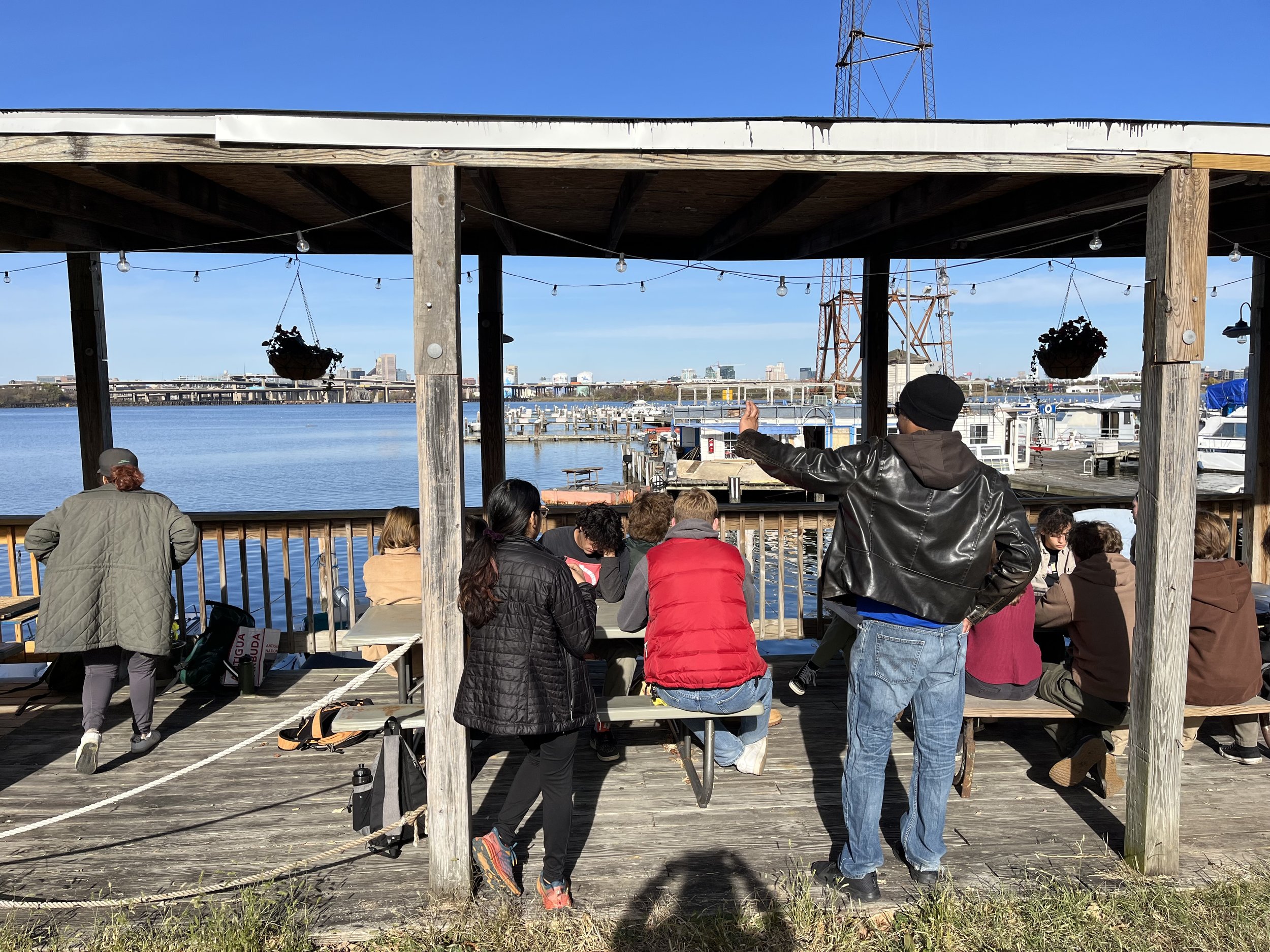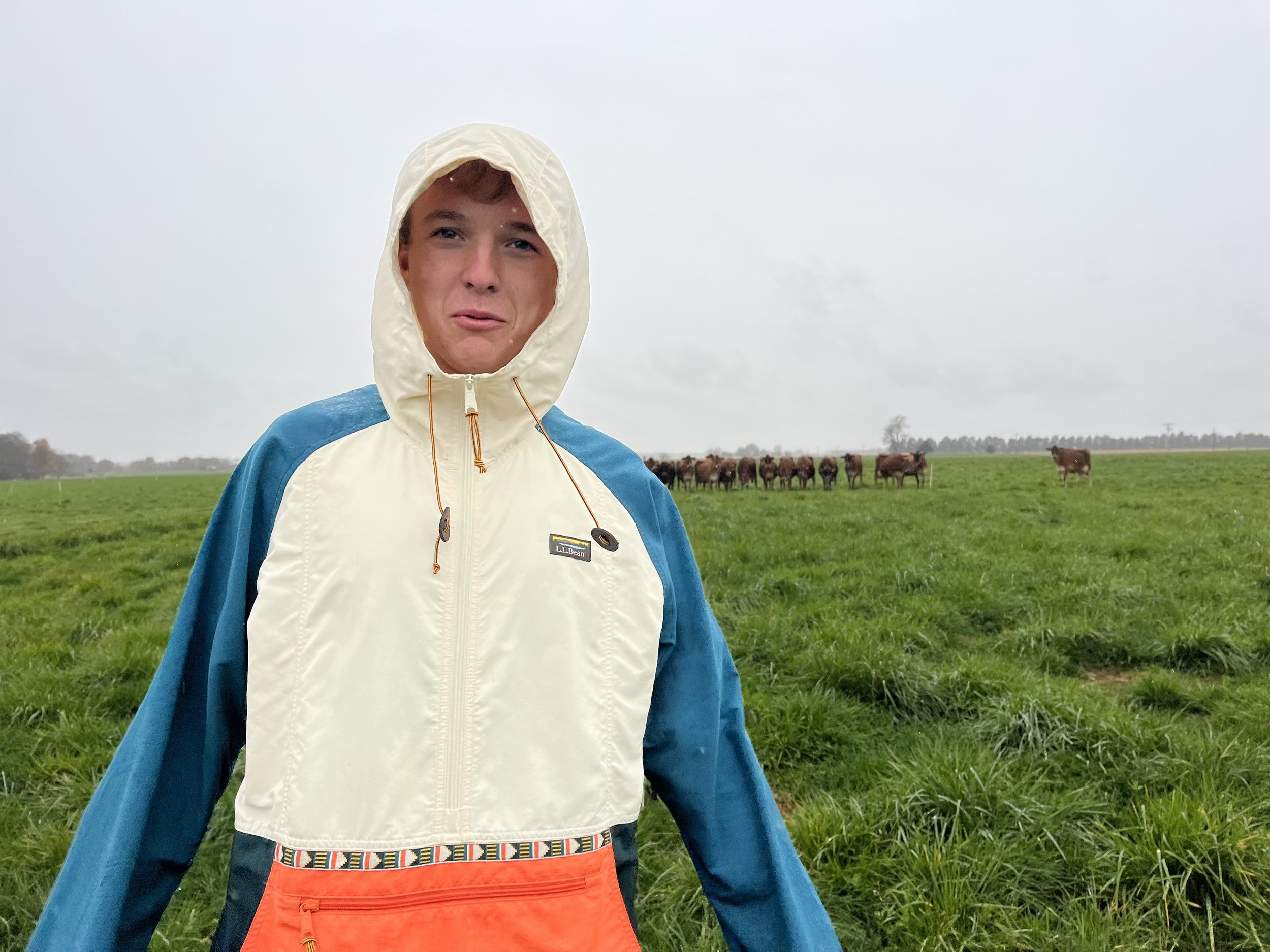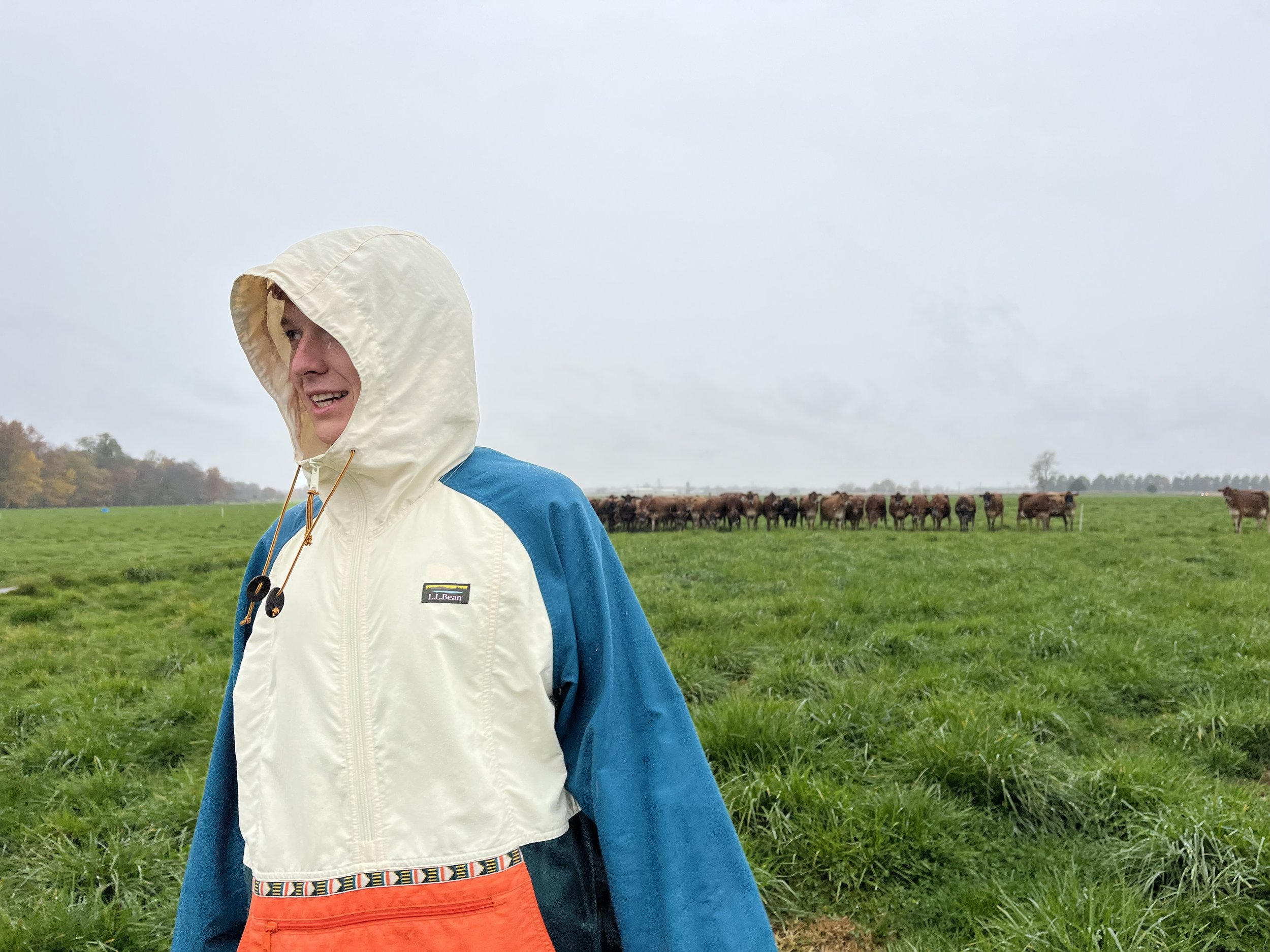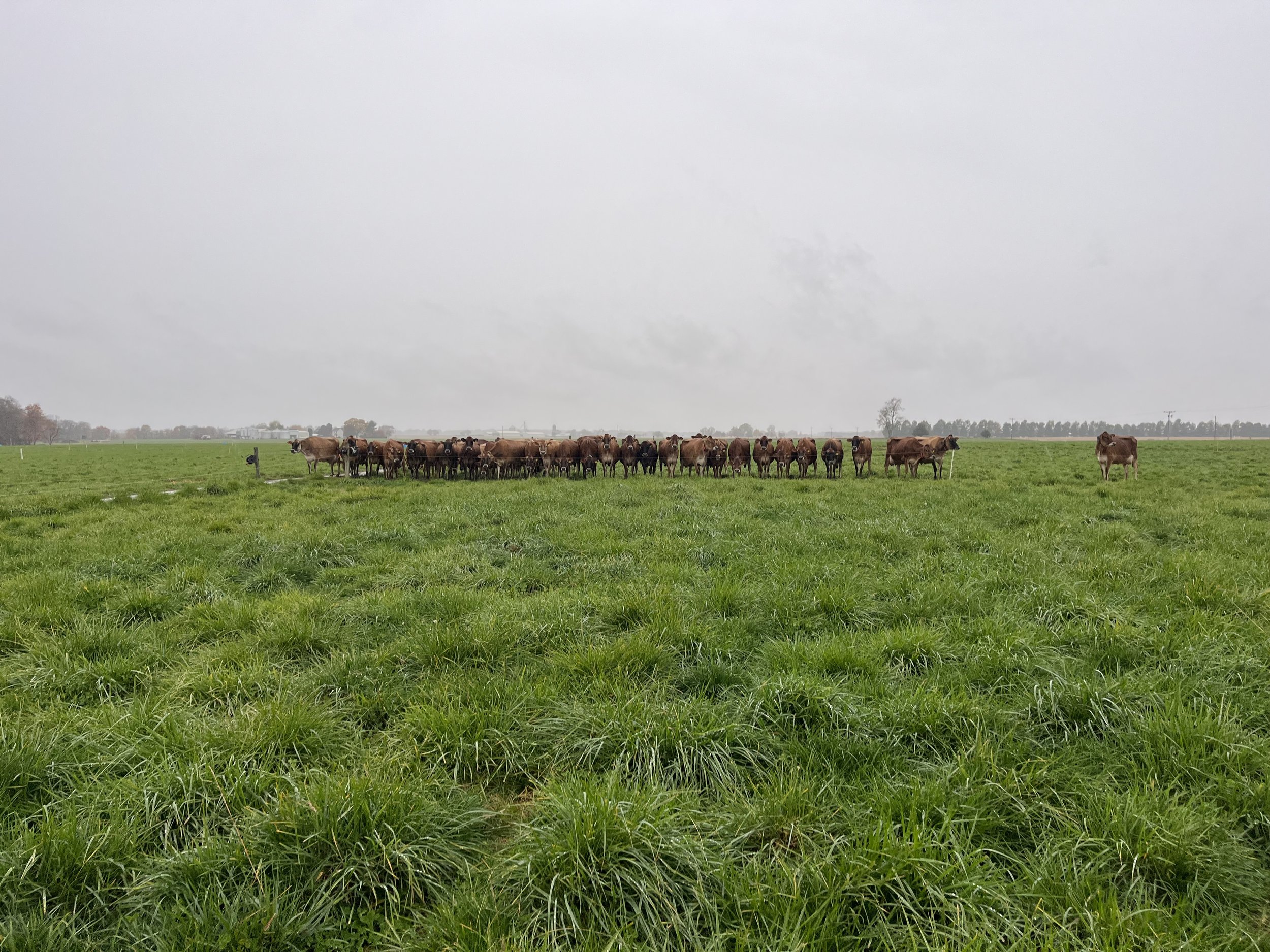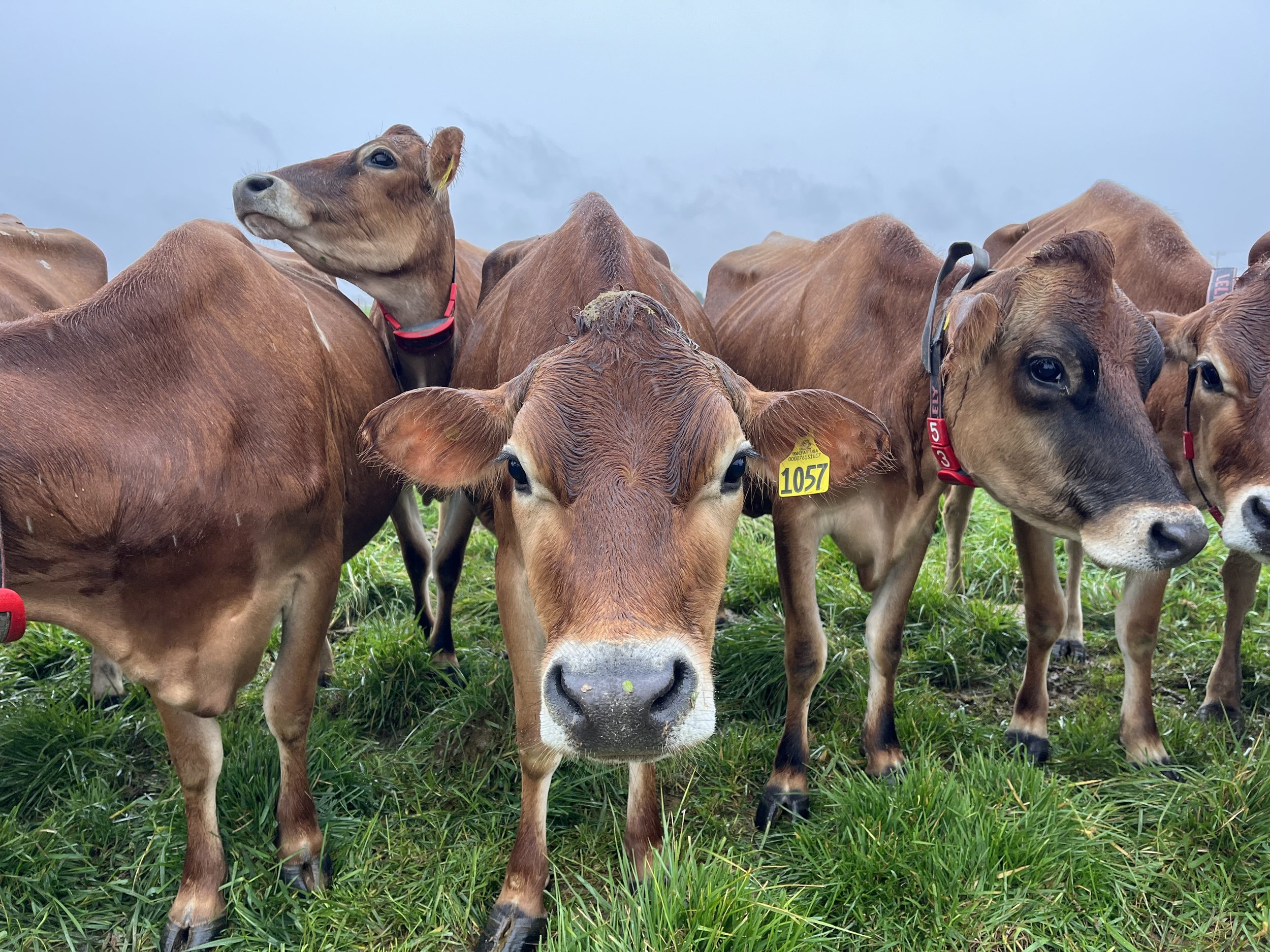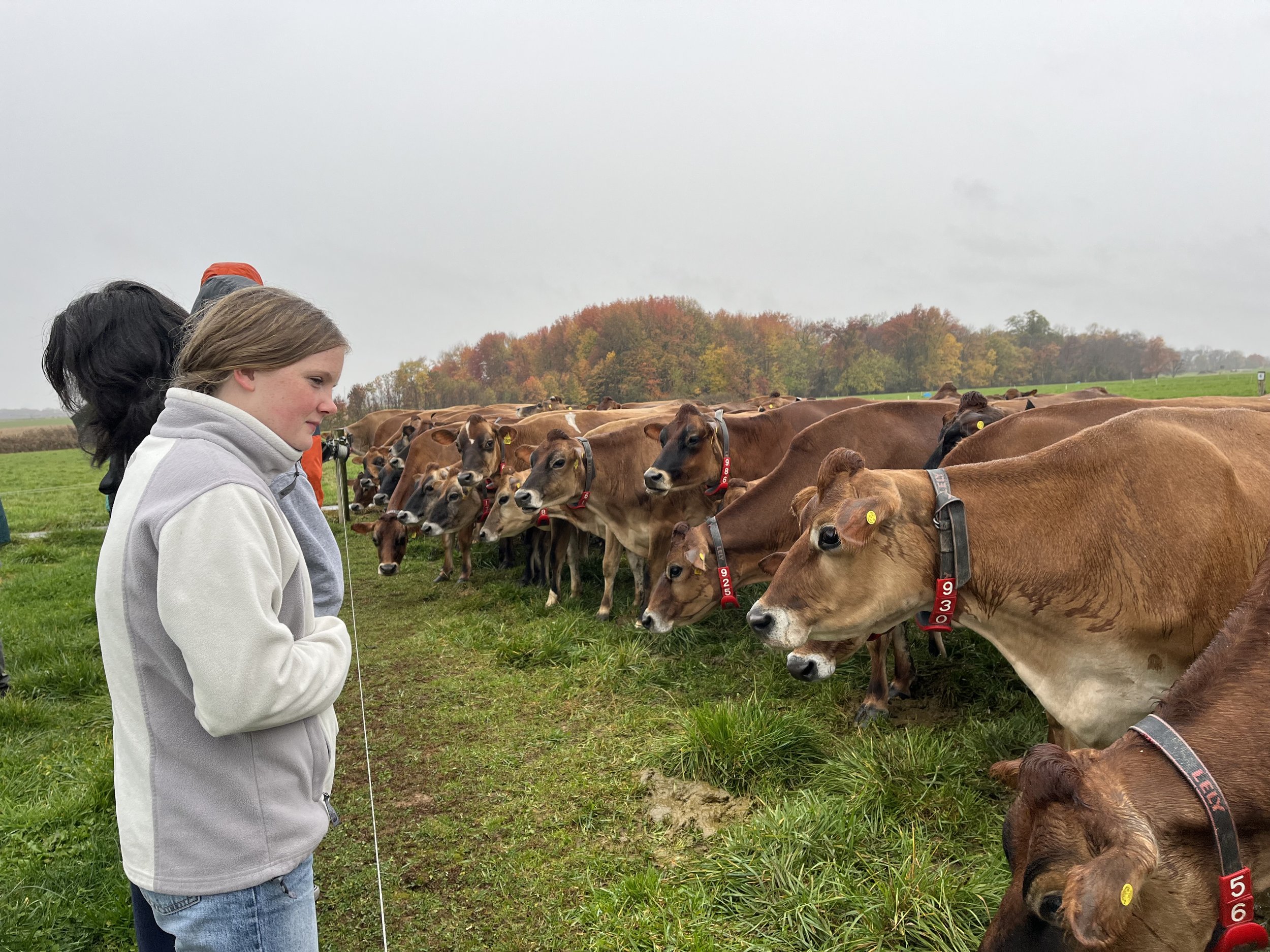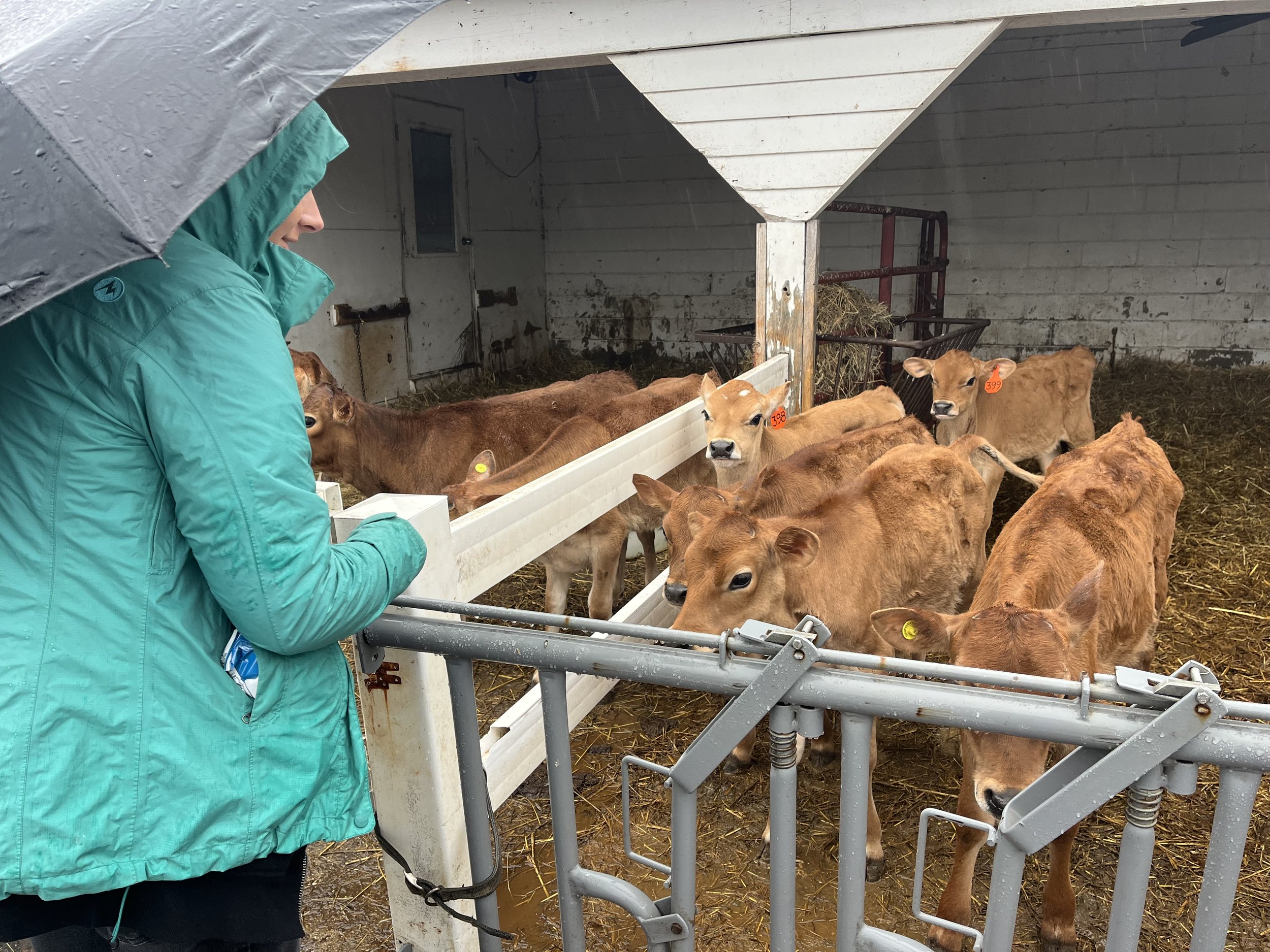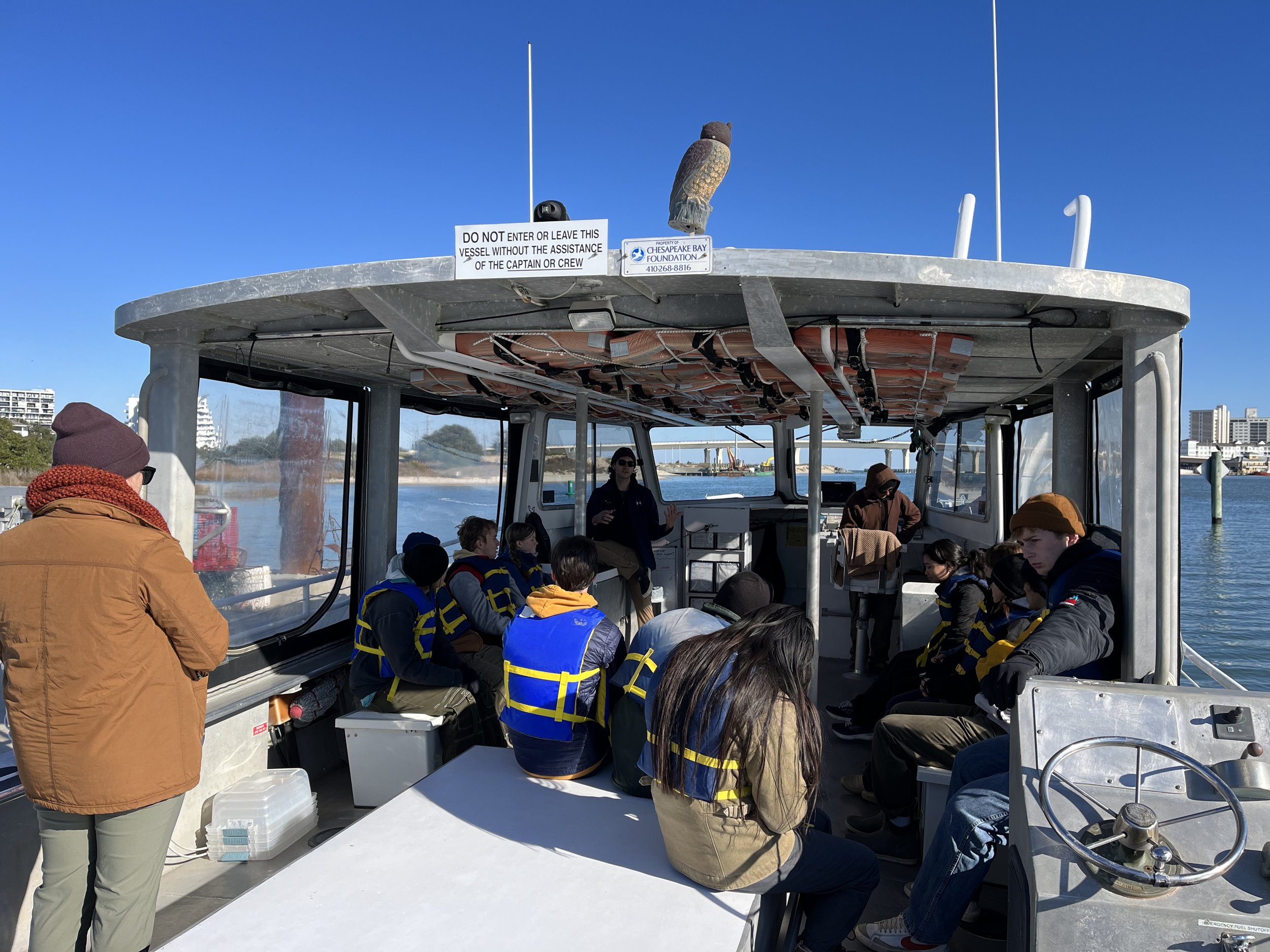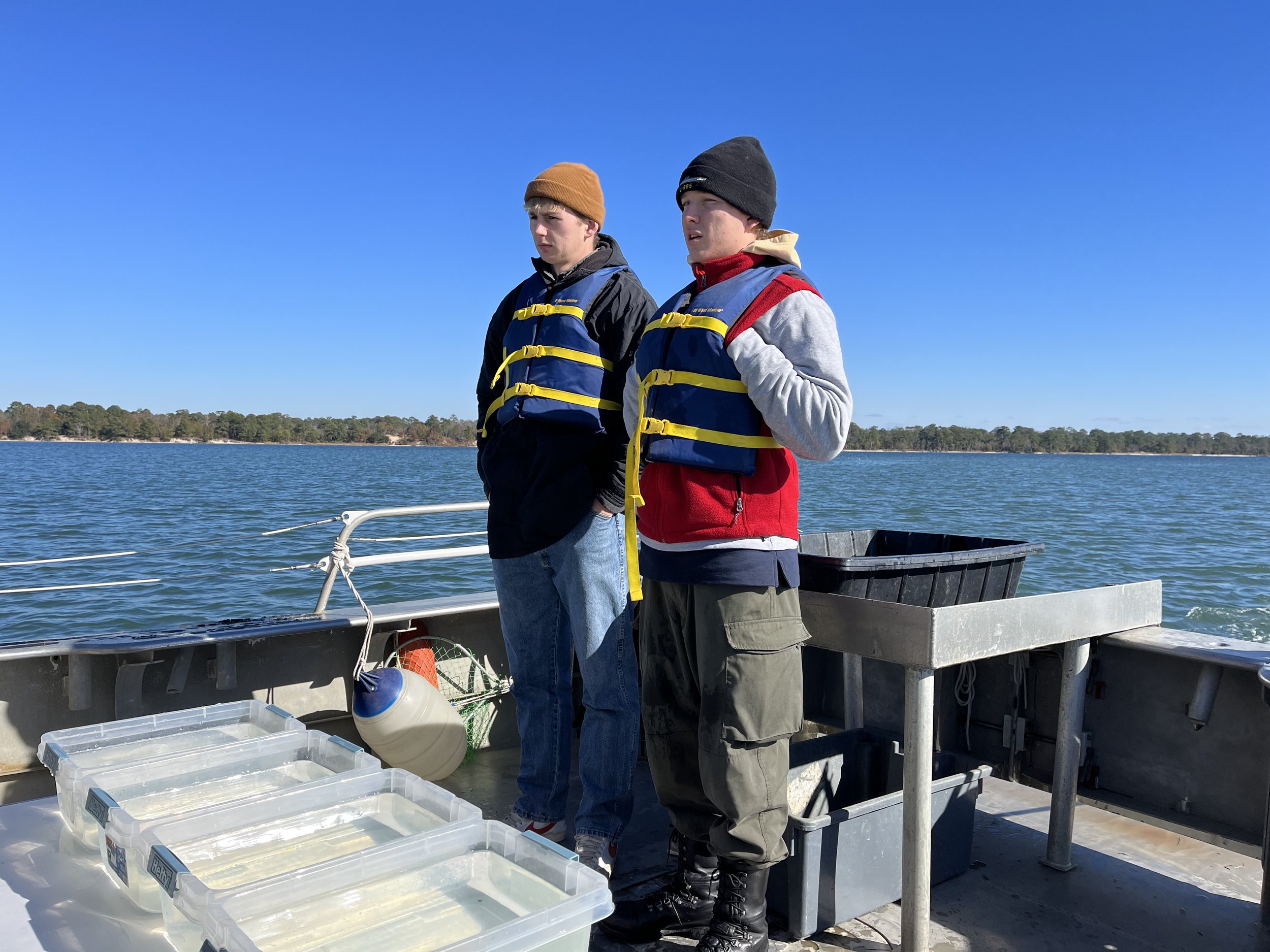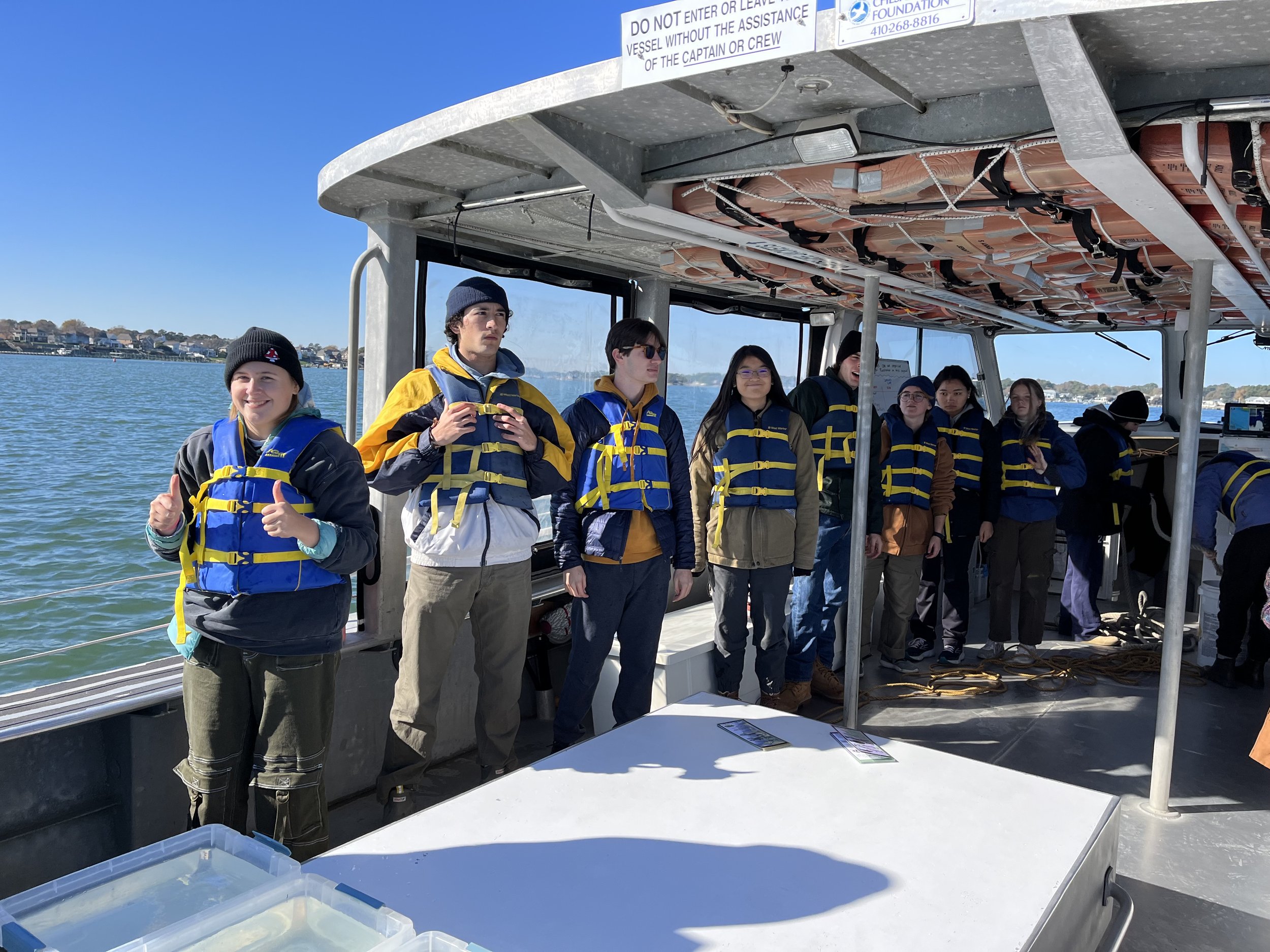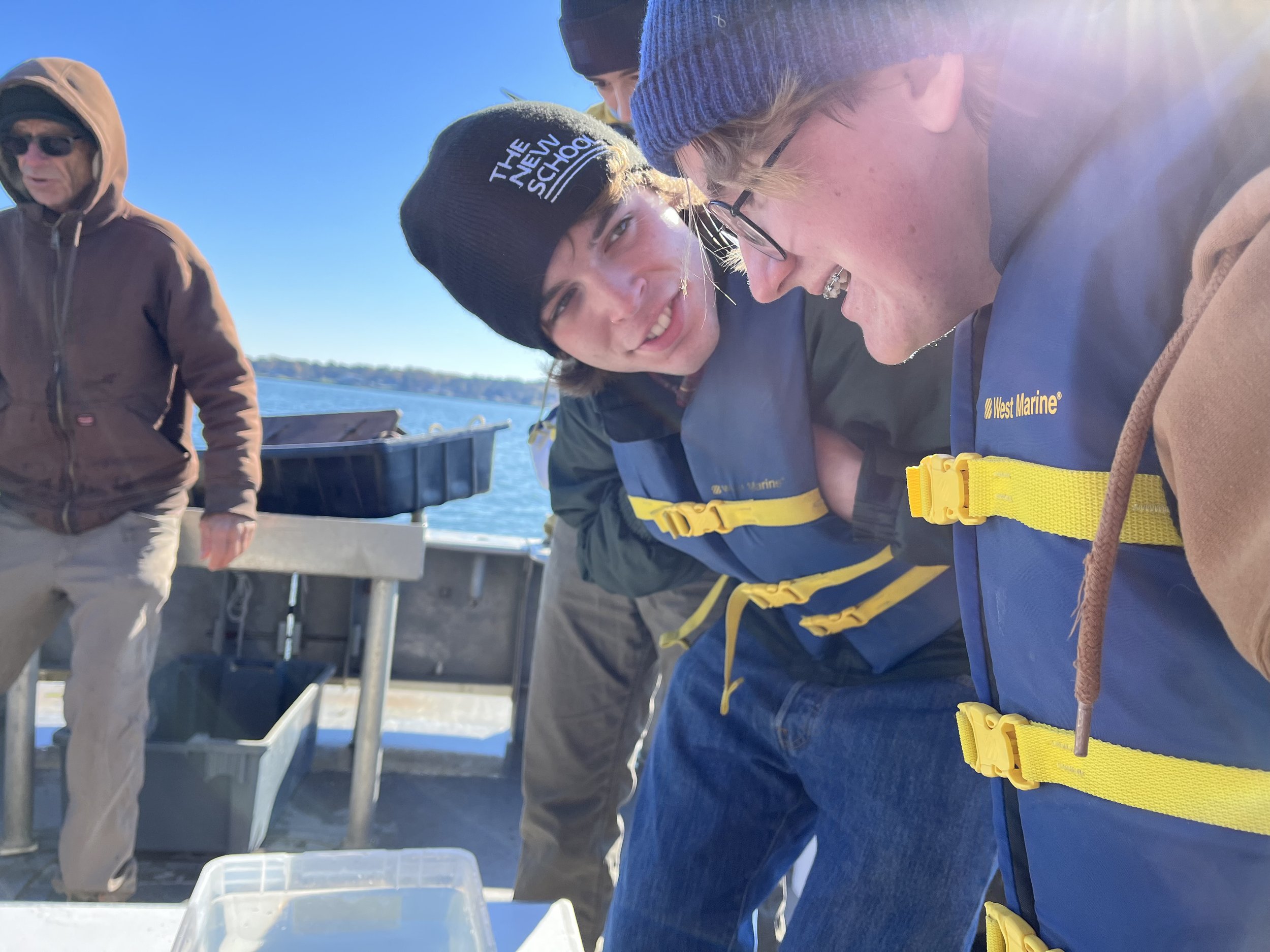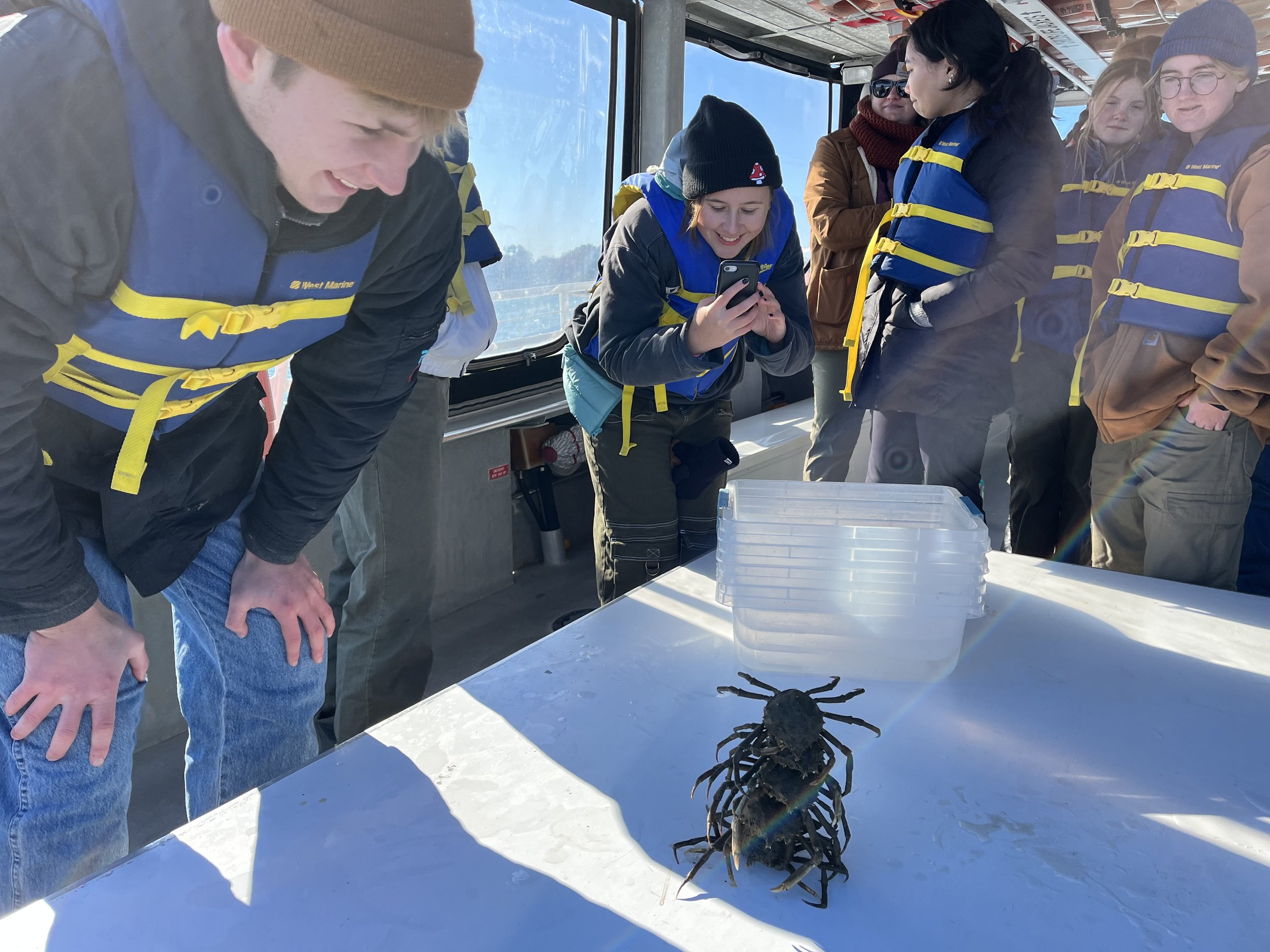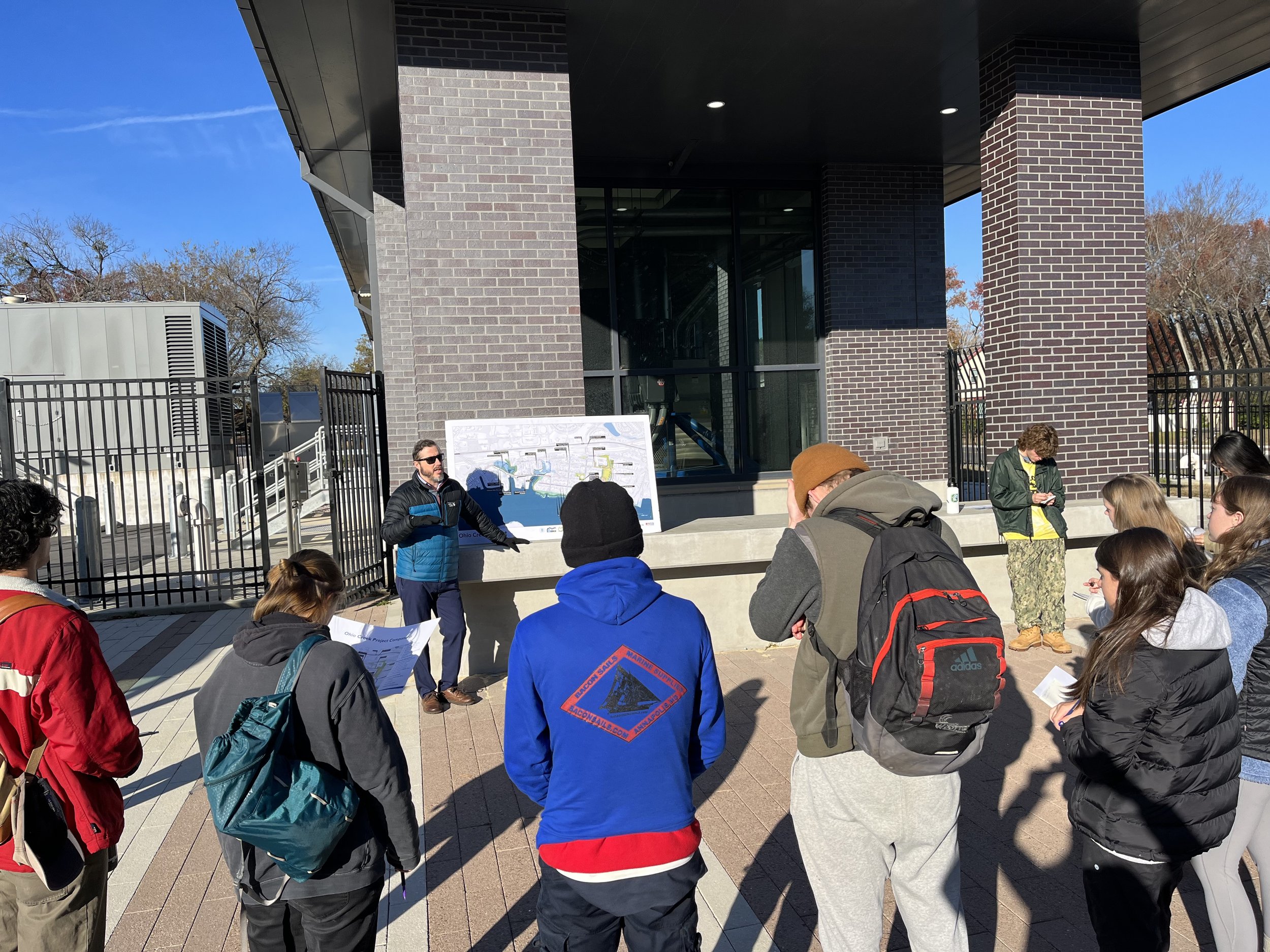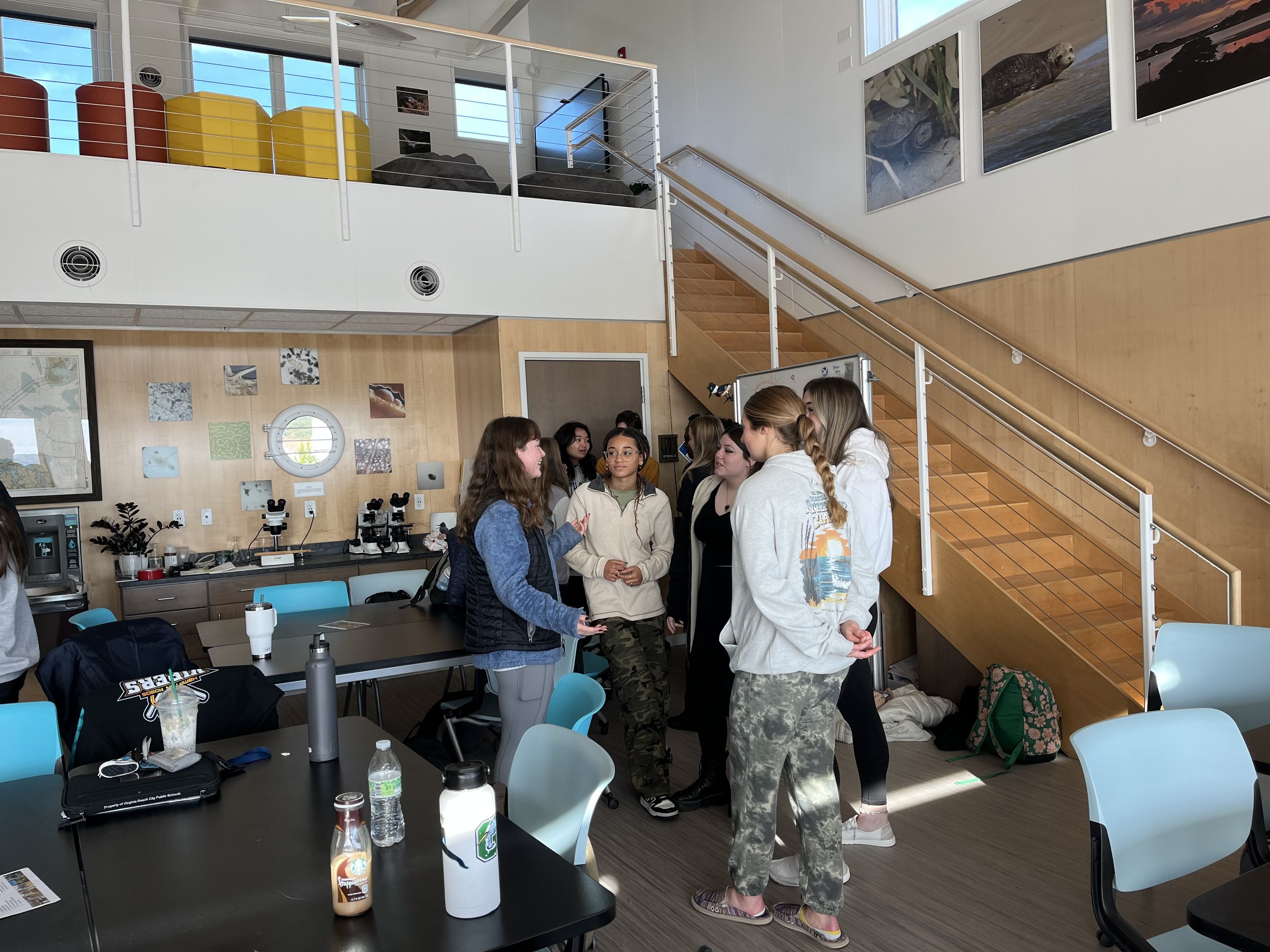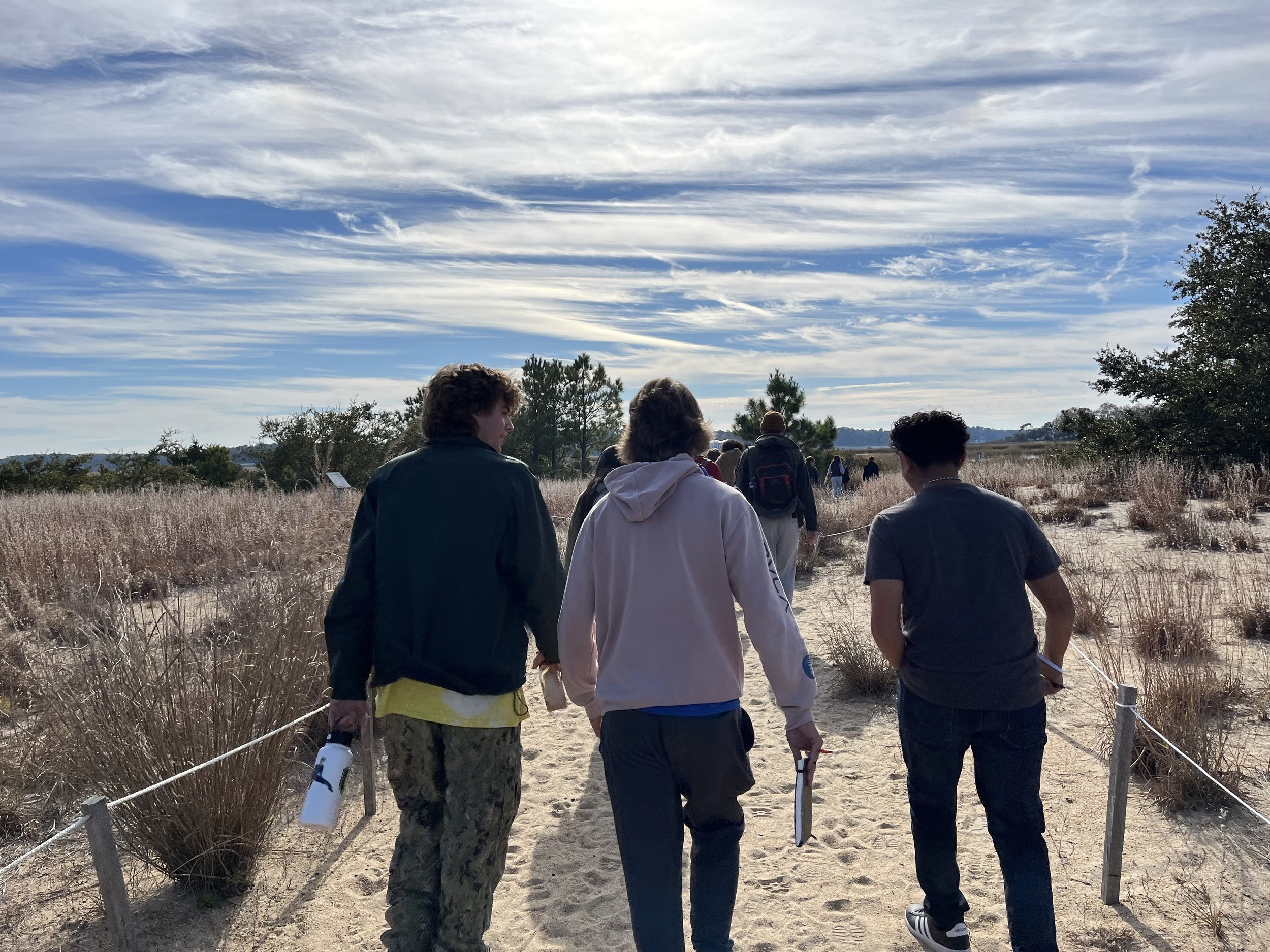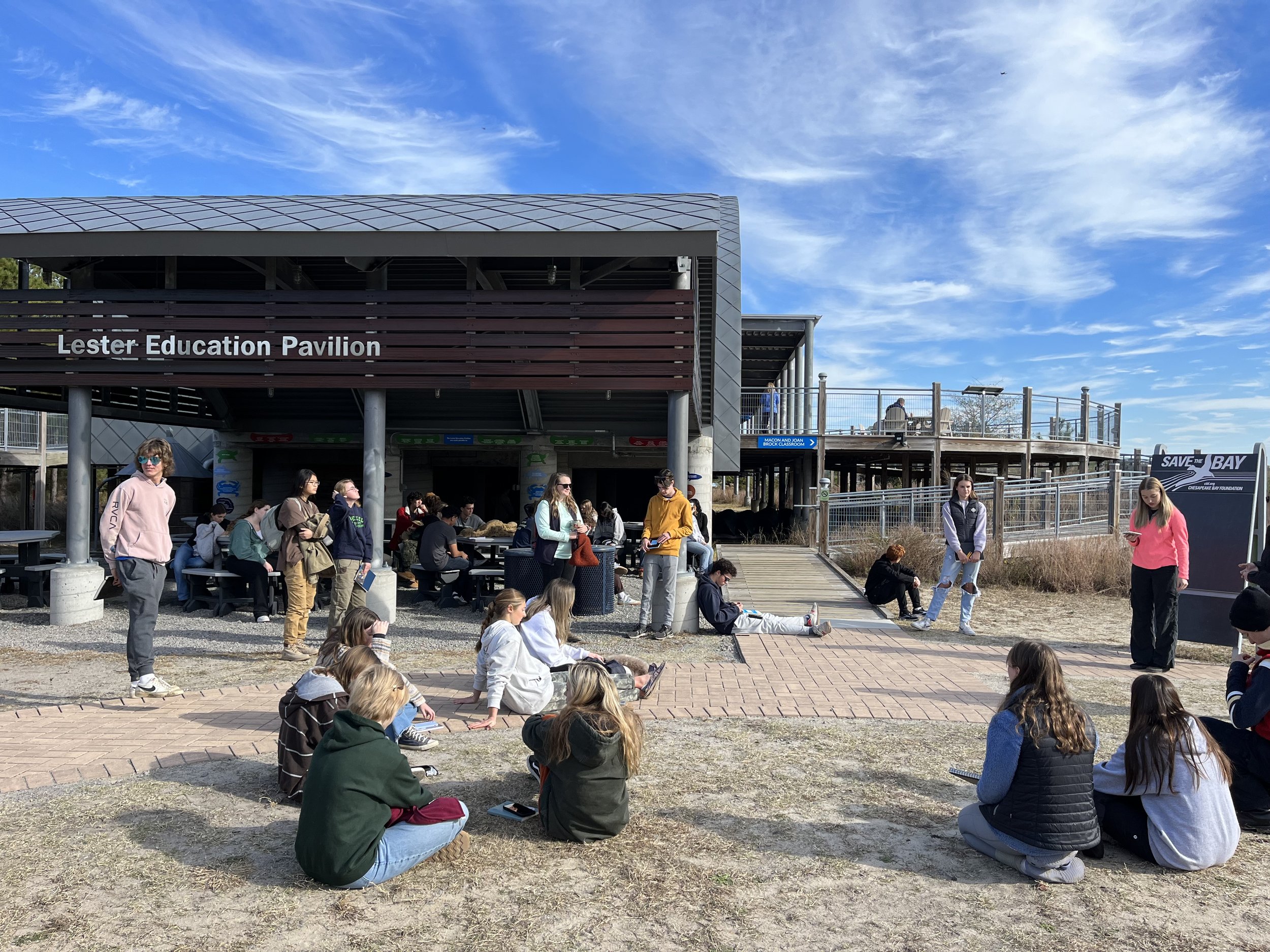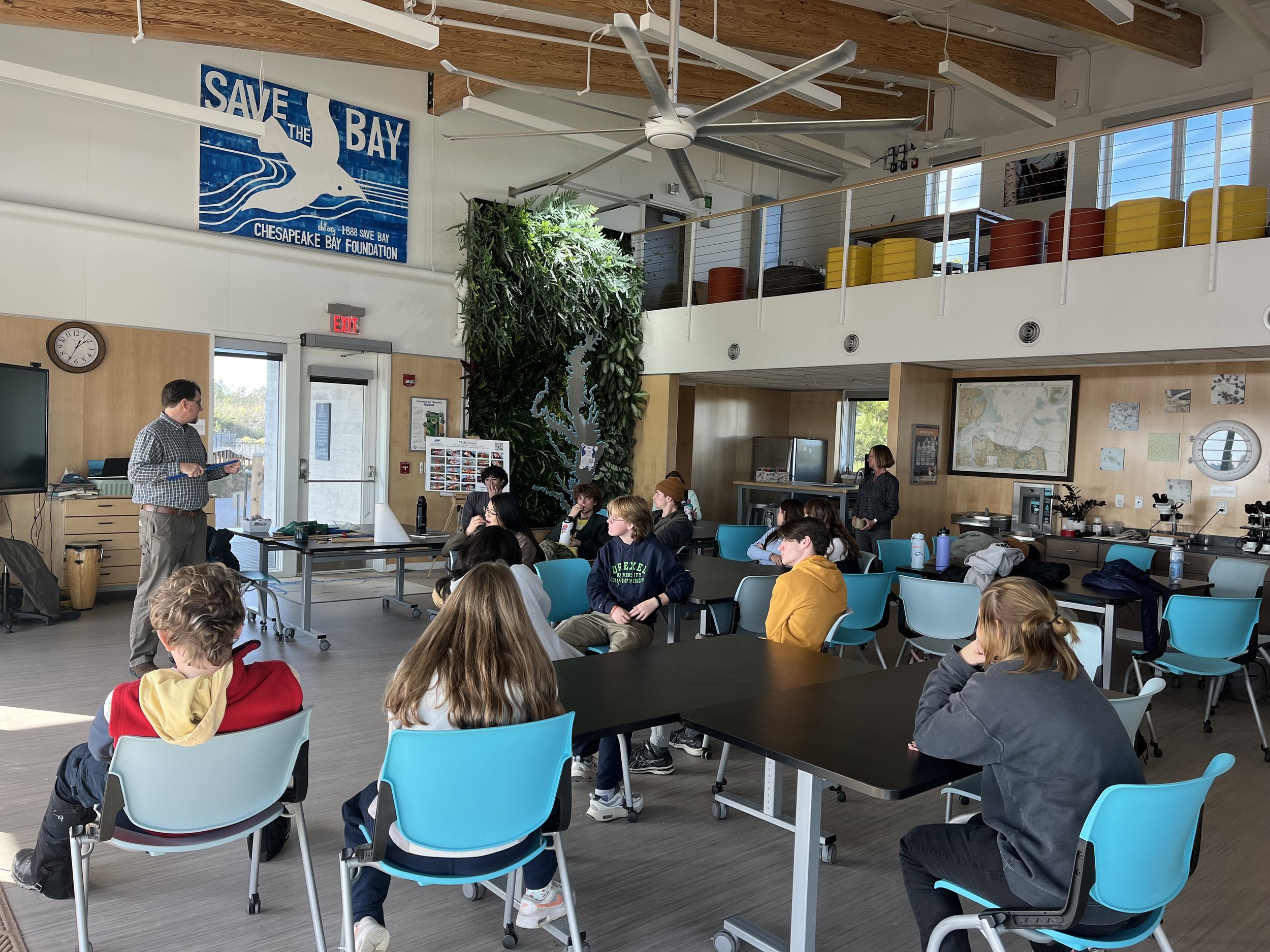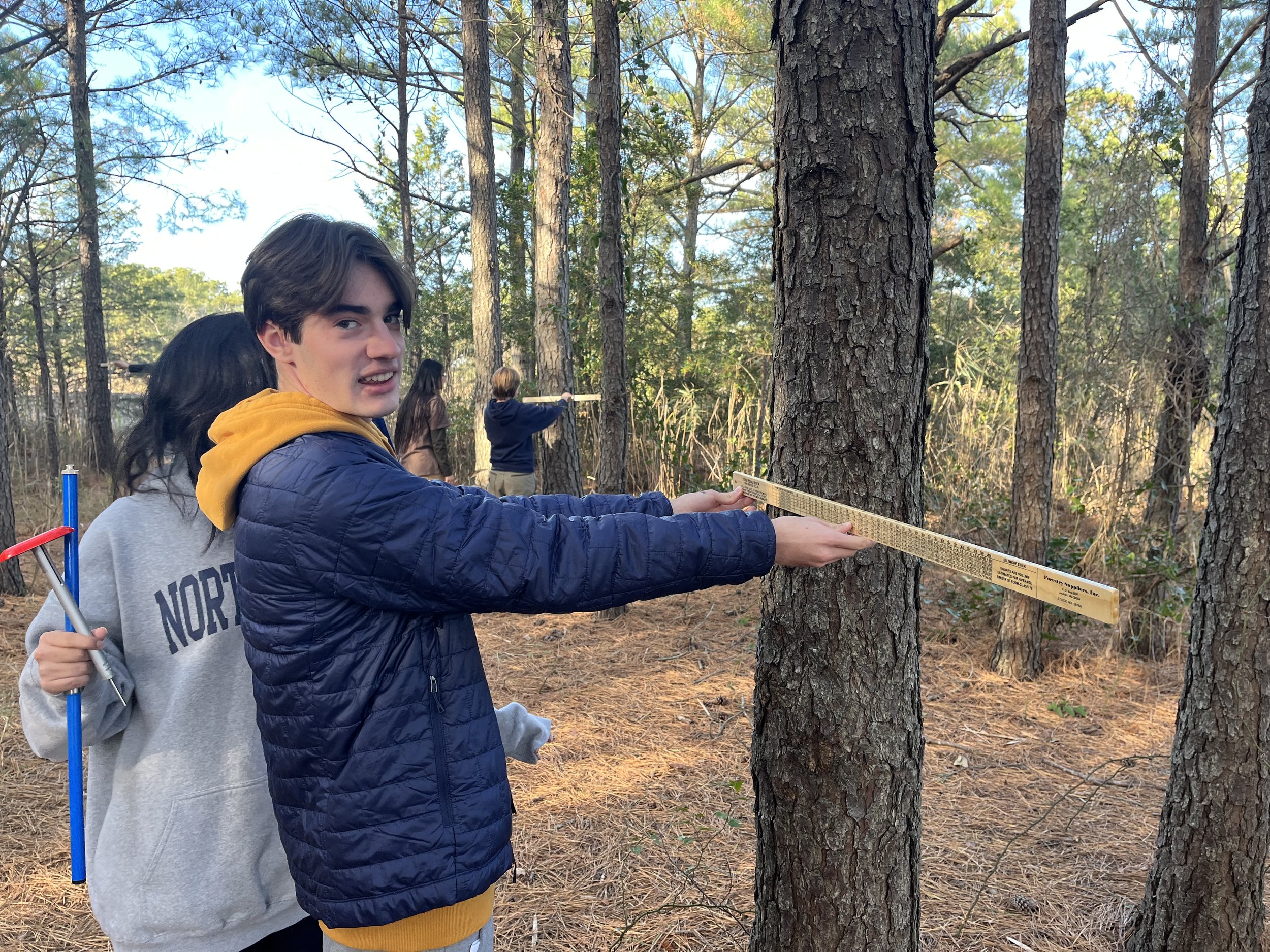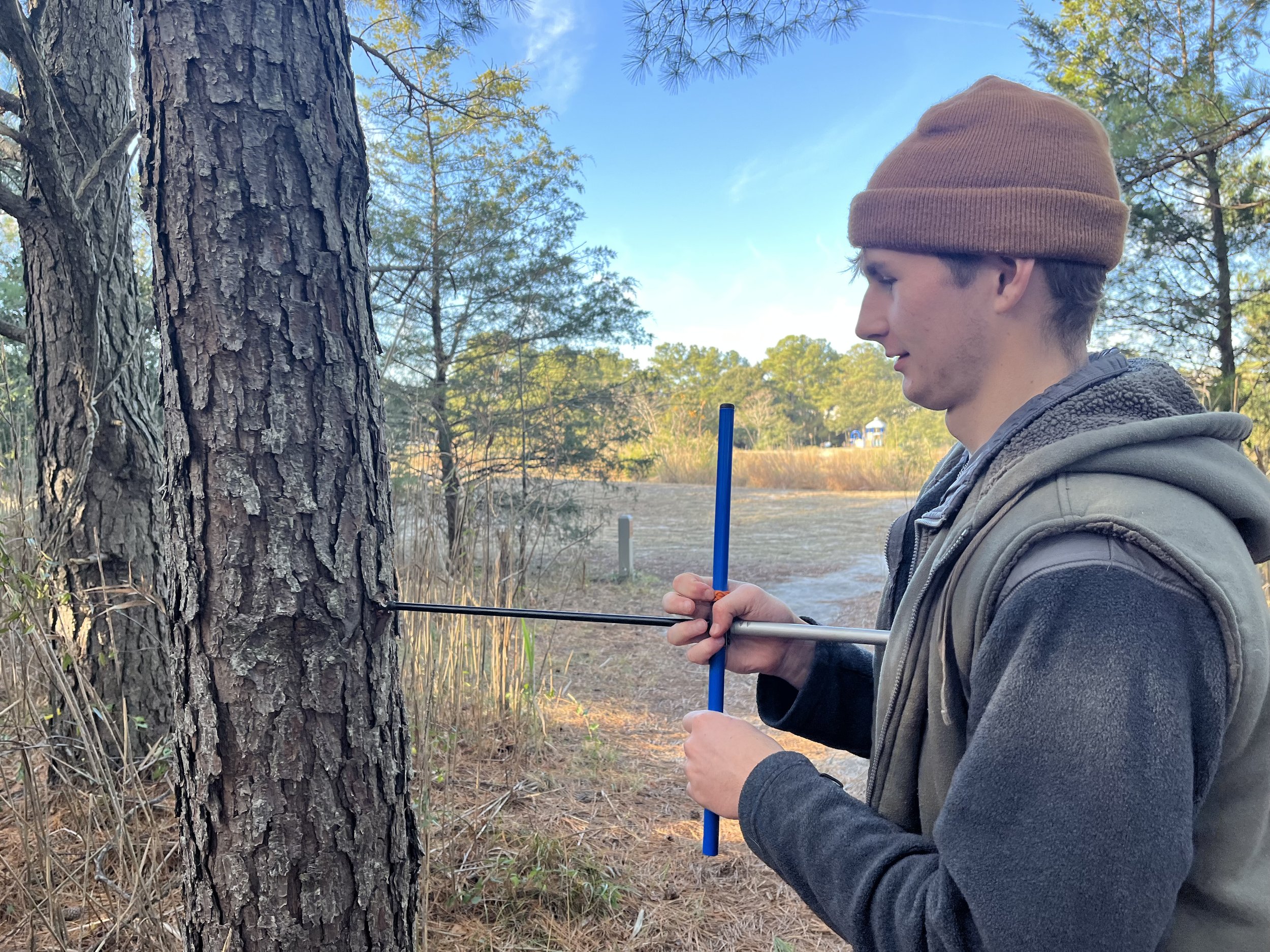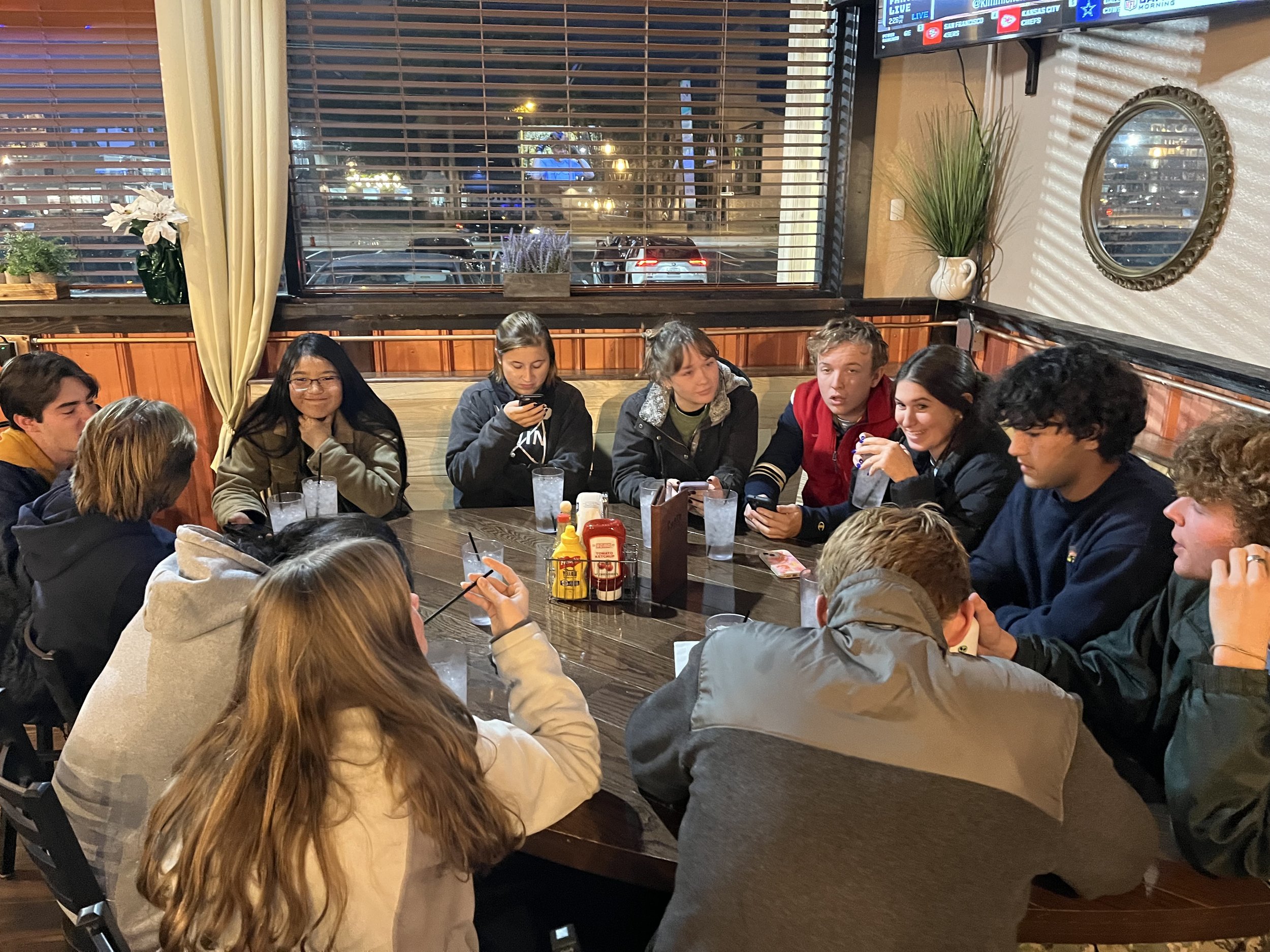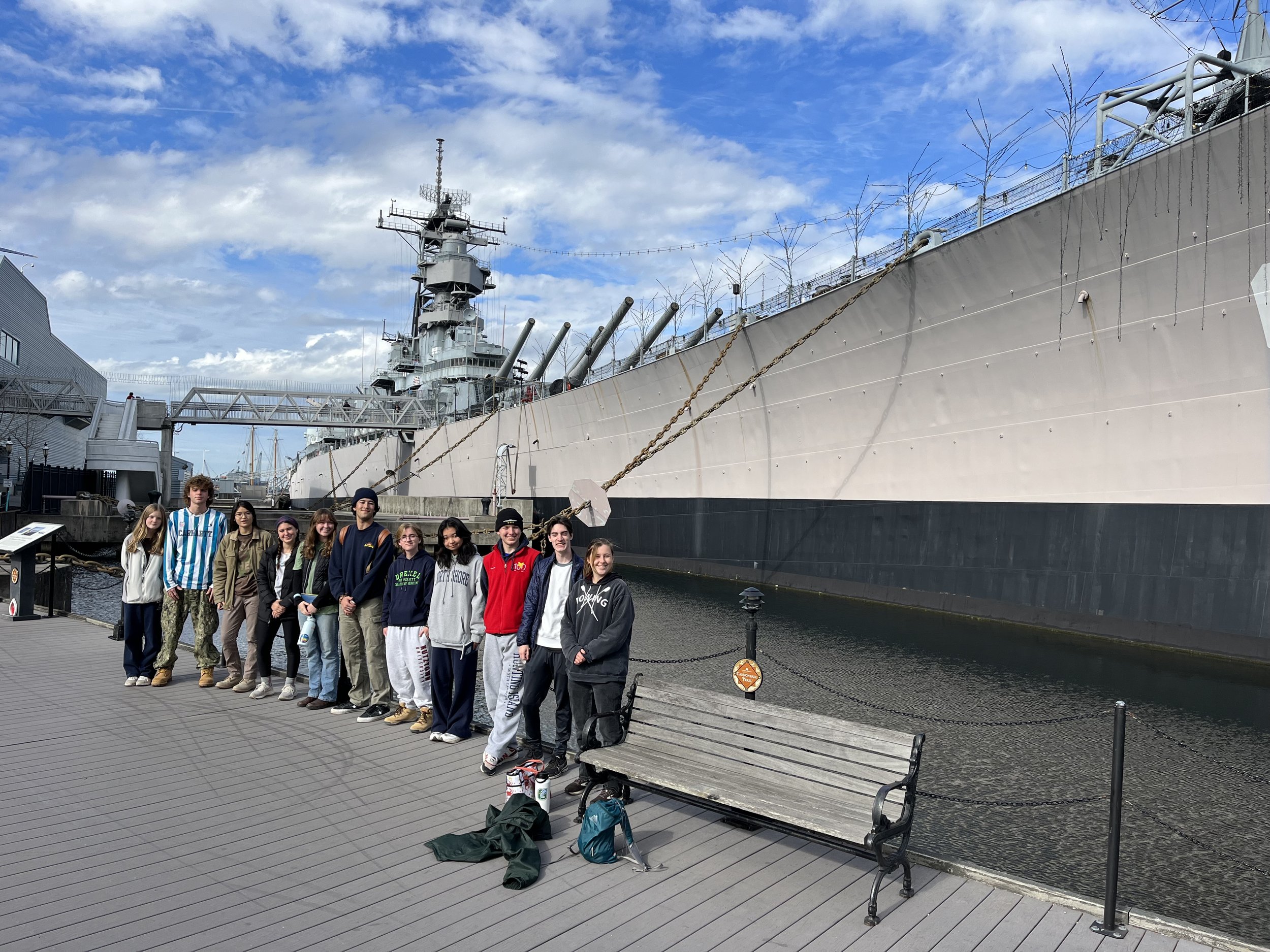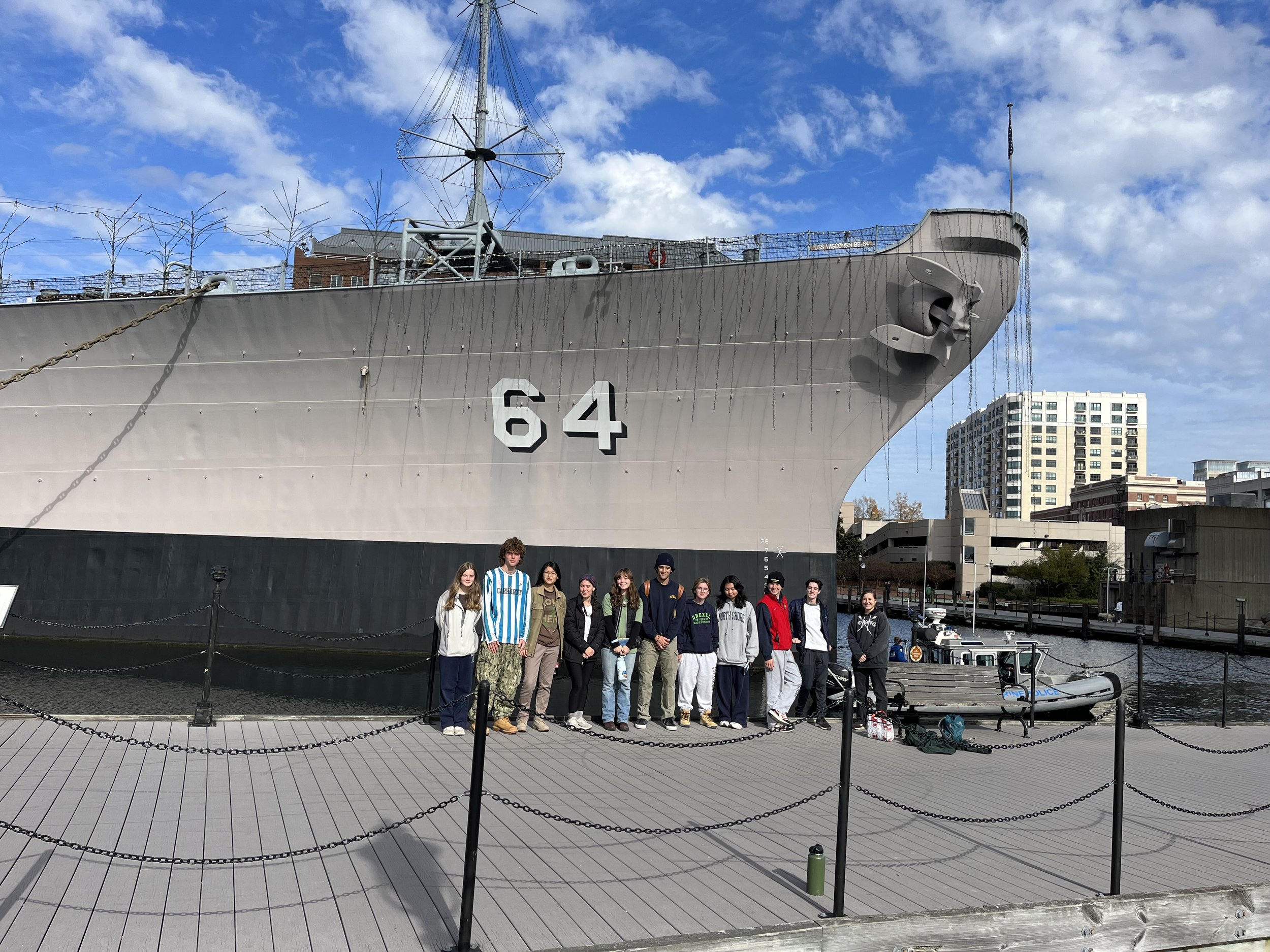2023 Weekly Recaps
Written by students from the 2023 cohor of the Chesapeake watershed semester
CWS Orientation Expedition, August 22-August 25, 2023
During our first expedition trip, we started off the week by driving to Harper’s Ferry in West Virginia, to go white water rafting. The white water rafting was a really fun way to get the group used to each other and the rapids weren’t too hard. It was really pretty seeing all of Harper’s Ferry and the mountains. After which, we made our way to the campsite and started to unload all the vans and set up camp. After we got to the campsite we chilled for a bit and then we were assigned teams to make and clean up dinner. We had tacos which my group made. The next day we went to the Savage River and talked with some really interesting people from the Department of Natural Resources (DNR) and watched them electroshock fish (which just meant stunning them) and we got to hold them. DNR does this practice to complete population data on various fish species in the headwaters of the Chesapeake. It was really cool seeing the variety of insects and how it completely changes depending on what’s surrounding the river. It can also show what quality the water is depending on the tolerance of the animals inside of it. We looked at Brook Trout and all kinds of fish. We learned a lot about the river and its ecosystem.
After that we went on an accidental stream hike and then rested and drove to a local town nearby. We were looking for a waterhole and ended up going way farther than we intended to but it was really fun to just walk in the cool water. The town we went to was Frostburg which was a really cool small town and there was this really cool bookstore. We ate pizza at this nice place. On the third day, we went on a hike that had an incredible view and we ate lunch. This was one of my favorite parts of the whole entire trip. The last day we went to climbed up a giant rock and tried to find a fossil. I ended up finding a fossil in the rocks and I was really excited even though it was hard getting up there. It was a really fun and interesting trip and it was really fun getting to know everyone and hiking. All of the stuff we learned and talked about were really fascinating and I enjoyed getting to walk around and see parts of Maryland I had never seen before. Overall it was such an incredible first trip and I’m so excited to go on more expeditions in the future.
-Lily Brantner, CWS’5, The Gunston School '25
CWS Week 1 of On-Campus Learning, September 4-8, 2023
CWS completed their first week of on-campus classes last week. The first initial classes all had proper introductions and Ms. S and Ms. V shared the specifics of each class. We study each of the same subjects that we would at Gunston, but CWS classes are specifically about the environment and the natural world. For example, a government class is more oriented on the policies that monitor and regulate nature. A literature class is focused on Bay storytelling and readings that relate to the quality, natural beauty, and systems of the Bay. Because the semester is all about environmental change and the Chesapeake community, we also have a class that helps us to build the fundamentals of leadership. In the first week, Mrs. Grabis even visited leadership class and offered her experience, skillset, and knowledge to share about her own experience as a leader.
-Shawn Barry, CWS’5, The Gunston School ‘24
CWS Week 2 of On-Campus Learning, September 11-15, 2023
We started off the week with an inspiring presentation from Mrs. Grabis, Gunston’s very own Assistant Head of School, on leadership. We talked about how to grow over time as a leader and how anyone can be a leader with enough practice. The presentation was followed by a campus tour of the Gunston School with Mr. Lewis, Gunston’s Head of School, in which we learned about the history of the land and environment as well as future projects for the school and community. On Tuesday, we made a visit to the Lawrence Wetlands, a beautiful nature preserve located in Chestertown, MD, where we went on a nature walk to experience the surrounding environment. Along with the nature walk we also explored the ecology of the lake in the wetlands, conducting research on all the different species and learning the importance of the wetlands for them. Wednesday was my personal favorite as we spent the day at the Chesapeake Bay Environmental Center located in Grasonville, MD. There we took walks along the docks, did outside environmental classes, and water-colored our surroundings mixing both science and art. To finish up the week on Friday we took boats out on Gunston’s very own Corsica River to pick up oysters. A true bonding experience for the group as we enjoyed the beautiful weather and cool bay breeze. The oysters are being grown at the school and CWS in partnership with ShoreRivers and Maryland Grows Oysters.
Listening to Mrs. Grabis was very nice because we got to hear a story that many of us could relate to and see the results. We got to connect with Gunston's leaders in a supportive way and bring hope that by the end of the semester, we’ll be excellent leaders. But following up with a very insightful tour full of Mr. Lewis's humor was also very cool. We got to see all the hidden details around campus that most people don't pick up on, such as the section of land we can’t touch because of how close it is to the water and future projects for the school. Visiting the Lawrence Wetlands was incredible as we were one of the first groups to experience and enjoy the wetland. Learning all about its history and why they created it was a treat in itself, especially if you live near Chestertown. Spending the day at The Chesapeake Bay Environmental Center was surreal. The location and weather were beautiful and we spent our time learning about the plants and animals all around us and their roles in nature. My favorite part was water-coloring on the dock, it was truly a calming experience that I can’t wait to do again. Boating on the Corsica and picking up oysters was such a fun way to end the day, as long as you don’t mind the smell. But the beautiful weather and nice bay breeze were the best way to end the eventful week.
-Ben Cook, CWS’5, The Gunston School ‘24
CWS Week 3 of On-Campus Learning, September 18-22, 2023
This past week in CWS, we went over the preparations needed for our VIMS trip and had a visit from Chester Riverkeeper, Annie Richards. Our school days followed a normal CWS schedule, we had watercolor sessions with Mrs. Pesce, and started research for our Capstone projects. During the week, we went over preparations needed for our Bay Science and Culture trip to Wachaprague, which included meal prepping and going over the packing list with Ms. Skirkanich. On Friday the 22nd, we had a visit from Annie Richards. Ms. Richards went over what her job entails: testing the water quality four times a month (in each creek/stream/main part of the Chester River), and giving the river a grade based on the results from these tests. She also went over what goes into the process of giving the river a grade: whether it is swimmable, the water quality, the land around it, and whether that land contributes to sediment runoff. Later that day, we went grocery shopping for our VIMS trip. Each of us was assigned a group: breakfast, lunch, or dinner, and in our groups, we planned a meal and then shopped for it.
This past week, I felt a mixture of excitement and anxiety. Getting ready for our first big trip created a bundle of nerves in my stomach, however, I was excited. Going over the packing list and meal prepping was minorly stressful, but it still felt surreal. On Friday, when Ms. Richards visited us, I felt a bit nervous about the fate of our local river, along with all the other rivers in the Chesapeake Bay. Although, the more we talked to her, the more I realized that there is always a solution. Something I learned from her was nonpoint vs. point sources. A nonpoint source is a source that is too broad to specify, like agricultural runoff. A point source is a source that is specific, like a single factory emitting some kind of polluting effulent. The Chester River gets most of its pollution from a nonpoint source because we live in an agricultural area with lots of runoff. However, even though a nonpoint source is not as localized as a point source, we can still educate our community about pollution in the Chester River, and what causes it. So, overall, this past week I felt a little bit of anxiety, some excitement and nerves, and a lot of hope!
-Allison Davis, CWS’5, The Gunston School ‘25
CWS Week 4, Bay Science and Culture Expedition, September 24-28, 2023
We started our trip off early Sunday afternoon when we hopped in a van and made the journey down to the Virginia Institute of Marine Science in Wachapreague, Virginia. After settling in and unpacking we made homemade pizza for our first dinner of the trip before heading off to bed. We then started our second day of the trip off with some pancakes before we embarked on our first field excursion of the trip. Our guide and captain was Sean, a native Wachapreaguer who worked for VIMS and was very knowledgeable about the local area and Virginia’s barrier islands. Sean first brought us out to the mudflats and let us roam around and collect different critters such as crabs, worms, and bivalves that lived out on the mudflats so we could observe them in the wet lab at VIMS later on. After dropping all the critters off at the wet lab, Sean took us out to one of Virginia’s barrier islands, Cedar Island. On Cedar Island we collected shells and journaled about the environment and location. Afterwards we headed back to VIMS to wrap the day up with some lab time and then had tacos for dinner. After a night's sleep at VIMS we headed out to the bay side of the Eastern Shore of Virginia in order to compare different environments. This time around we were guided and captained by a man named Edward. Edward knew a lot about the environment and different animals that lived on the bay side and was a great resource for identifying different species. While out with Edward we also used some different equipment such as a seine net and otter trawl in order to gather data on the water and capture different critters. After being out on the water with Edward we returned back to Wachapreague for some journaling and some lab time to observe more organisms under the microscope. After some time in the lab we had pasta and salad for dinner before calling it for the night. Wednesday morning we headed back to the wet lab for a plankton lab with Dr. Richard Snyder. Dr. Snyder told us about the lifecycles of plankton and the different types of plankton before showing us some samples and helping us identify plankton we found under our microscopes when we looked at the samples. After our time with Dr. Snyder, we took a trip over to the Savage Neck Dunes and took some time to admire and embrace the place and the peaceful atmosphere there. From Savage Neck Dunes we journeyed over the the Barrier Islands Center where we learned about the history of Virginia’s barrier islands. There were many different artifacts from an assortment of the islands that worked to tell the story of the inhabitants who lived and worked on the barrier islands. After our time out we cooked hamburgers for dinner and then began cleaning the dorm we had been staying in for the past few days. Thursday morning we packed up and then worked to finish cleaning up the dorm before packing up in the van to head back to Gunston. We had a long journey back but stopped for a little to explore Cape Charles before climbing back in the van and driving back to Gunston.
I thought the week at VIMS was very interesting and a great experience. I was able to learn a lot about Virginia’s barrier islands, their importance , their history, and the science behind them. I really loved going out in the field spending time finding and collecting critters to look at later in the lab as I found it really interesting to see all the different things that lived in this very unique area of the east coast. Overall, I think the trip was a great experience that allowed me to learn about Virginia’s barrier islands and that environment in a very hands on way which I will definitely remember.
-Aiden Dunlap, CWS’5, The Gunston School ‘24
CWS Week 5 of On Campus Learning, October 2-6, 2023
Last week in CWS we worked in our normal classroom activities with a few exceptions. On Monday, Mr.Breto visited our leadership class. He spoke to us about leadership in sports. On Tuesday, we had Green and White Day. CWS students participated in the day’s events just like any Gunston student. On Friday, we went to Millington Waterfront Park, in Millington, MD with Sultana Education Foundation to do a kayaking trip on the upper Chester River. We went up river to the very headwaters where we found our path was blocked by fallen trees. Then we went down river and had a discussion about land management. We were able to observe a few waterfront properties and discussed how the way they maintain their land impacts the waterway.
From our visit with Mr. Breto I was able to gather a few things that I had not thought of before. I learned that there are a lot of different kinds of leaders on a sports team other than the “Captain.” It is up to each individual to play their own role on the team. I really enjoyed our paddle on the Chester and thought more about how the land impacts the water. I learned that it is important for each person who lives along a body of water to maintain their property to avoid negative impacts on the waterway.
-Thomas Callahan, CWS’5, The Gunston School ‘24
CWS Week 6 of On Campus Learning, October 9-13, 2023
This week we started off by going to Foreman’s Branch Bird Observatory on Tuesday. This facility is part of the Washington College River and Field Campus. We were able to learn about bird banding, bird migration, and factors that are threatening bird populations. That same day we also went to the oyster hatchery at the University of Maryland’s Center for Environmental Science at Horn Point in Cambridge. We learned about how oysters are raised in a lab setting. Then on Wednesday and Thursday we were on campus and we lucky enough two workshop days to catch up on assignments. On Friday we went kayaking with Sultana Education Foundation out of Rolphs Wharf in Chestertown Maryland. On that paddle we learned about colonial settlement on the middle Chester River and were also able to see fossil imprints along the banks of one part of the river.
I enjoyed the week because I like being in the field. I found the week to be a fun and relaxing break. It allowed us to learn while also giving us the opportunity to play catch up with our studies. It was also really neat to see specific scientific studies happening in the real world right down the road from Gunston.
-Harrison Dunstan, CWS’5, The Gunston School ‘24
CWS Week 7 of On Campus Learning, October 16-20, 2023
One of the main events we did this week is that we went biking. We biked through Blackwater National Wildlife Refuge and along the way we made stops that gave environmental and historical context of the place. We learned that the marsh is slowly going away. That the nutria has been eradicated from the area. We saw a lot of different patches of ghost forest. But, we also learned about the environmental importance of marshes as they protect against storm surges. Marshes are also top tier habitat for Blue Herons. On the historical side we learned that the land there used to be used for a lumber farm and then as a fur trapping spot. Additionally, we explored the life and times of Harriet Tubman who was born and raised in Blackwater.
We also had the opportunity to go on our last kayak of the semester on Thursday of this week. It was a tougher paddle because we paddled against the wind both ways. This paddle was on the opening of the Chester right be Kent Island so it looked a lot different than our other paddles. There were lots of boats and houses because that area is prime real estate. We learned a little about how that area was developed. We learned that before the bridge there were less people but with the Bay Bridge lots of people went to the Eastern Shore to live and commute over the bridge for work.
Overall, the week was cool and interesting. I liked looking at all the scenery, especially when we were biking.
-Rowan Lutz, CWS’5, The Gunston School ‘24
CWS Week 8 of On Campus Learning, October 23-27, 2023
This week we went on many campus excursions and got to hear from many guest speakers. On Monday morning Mr. Lewis visited our government class to talk to us about the Constitution and other elements of our government. Later that day, Dr. Asprion visited us as our guest speaker for our leadership class. There we learned of the different qualities and types of leaders in our community. Seven of our CWS members were inducted into the National Honor Society on Tuesday morning after achieving the qualifications, with a total of eight students overall being a part of the association. The next morning, Dr. Bill Schindler from the Modern Stone Age Kitchen came to Gunston for a campus foraging session. Throughout our session, we were able to learn about the characteristics of different plants and tree species on our campus. Thursday we went on the boats to take pictures of a local oyster reef on the Corsica River, we were unable to get the pictures but were still able to enjoy and pretty and peaceful morning boat ride.
I thought this week was very fun and educational. We got to learn about multiple different subjects from many different people in different fields. I really enjoyed being able to go outside the classroom and learn in a different setting. I thought the information from the foraging session was very interesting and helpful and something I would have never thought about and/or learned if it wasn't for CWS. Something I learned during the foraging session was that every plant has toxins that can either be deadly or harmless and that all plants use them and other methods to protect their seed. An example we learned about a tree on campus—the Black Walnut. When they are young their seed is protected and they are very toxic, once they mature their toxicity lowers and it is possible to get the seed out and eat it.
-Victoria MacGlashan, CWS’5, The Gunston School ‘25
CWS Week 9, Land Use and Energy Expedition, October 30- November 3, 2023
This week we prepared for our trip to Pennsylvania and then made our way north to learn about land use and energy in the watershed. Tuesday was spent preparing for our upcoming expedition and on Wednesday we departed for Pennsylvania. Our first stop was an old coal mine and a tour of the surrounding area. The next day we got to explore what was previously a mining village and learned about the lifestyle of miners and their families. Then we met with local environmental activist Bobby Hughes where we learned about acid mine drainage and how that affects the community. Finally, on Friday we packed up and had two final stops on our way home. The first was a hike up Hawk Mountain, what was previously a sand mine turned into a recreational and conservation area. Lastly, we stopped at Susquehanna Orchard and learned about their agricultural practices while spending time picking apples before heading back to Maryland.
This trip was eye opening for me. We spent significant time learning about the conditions that mining communities as a whole are under and the effects of the industry. Not only were the miners at significant health risk during and after the job, but the villages created by mining companies for their families were usually set up with unjust conditions. However, meeting with people like Bobby Hughes was very inspiring, seeing the work he is doing for his community and the impact he has already made gave me a lot of hope for the future of the Chesapeake Bay. Finally, spending the last day in places like Hawk Mountain and Susquehanna Orchard really helped me connect with the area and spend some time exploring it.
-V McCluskey, CWS’5, The Gunston School ‘25
CWS Week 10 of On Campus Learning, November 6- November 10 2023
The week started with a visit from Andrew Maraniss for our biannual In Celebration Of Books. His speech was very inspiring because I learned that to be a true leader is to talk about topics you know that some people will receive poorly, but to share about them just because they are important to you. On Tuesday we continued the week with a normal day of classes before our Head of School, John Lewis, came to talk to us about public speaking, which really helped me grasp new ideas for my capstone presentation. What was especially fun was when we went to Baltimore all day on Wednesday. Here, we visited the Baltimore Composting Collective and its picturesque farm and garden, where we saw goats, ducks, and more. I also was intrigued by the hands-on learning of how to compost correctly. Before this however, we spent time at Masonville Cove, an urban wildlife refuge, and had some time to speak with and get a lesson from their staff. Finally, on Friday, we visited St.Brigid’s Farm, where we were acquainted on the ins and outs of dairy farming in relation to equipment and regulation.
The week was packed with many activities and I really enjoyed all of them. Some of my favorite CWS memories were made during the week, such as the Baltimore trip. I learned a lot about determination and leadership from our ICB speaker and Mr. Lewis that has definitely inspired me and provided me with some new positive practices. I also have learned so much about topics I dont think about often, such as where milk goes when a cow is milked, and the four ingredients to make effective compost. Overall, I am able to say I am much more informed after the week.
-Katherine Sadler, CWS’5, The Gunston School ‘25
CWS Week 12, Urban Climate Change and Coastal Resilience Expedition to Norfolk and Virginia Beach, November 27- December 1, 2023
This week we made our final trip to Norfolk and Virginia Beach. On Tuesday November, 28 we visited Historic Jamestowne and learned about the settlements there and walked around their ruins. We learned about what it would have been like to live there, and the history of the area. On Wednesday we went out on a boat with Chesapeake Bay Foundation and explored Hampton Roads. We learned about the effects of runoff from impervious surfaces on the Bay. Then, we got a tour of the Brock Center, the offices for CBF in Virginia Beach, and learned about all the ways it manages to be a fully sustainable building. On Thursday, we went to Chesterfield Heights, a neighborhood in Norfolk, where we learned about flood mitigation and got a tour of all of the various systems used to lessen the impact of floods in the area. On Friday, we visited the Nauticus Museum, where we explored the BattleShip Wisconsin and walked through the museum exhibits. We learned about the maritime industry, the military, and the environment of the Hampton Roads area.
I really enjoyed learning about different communities and the efforts they take to be sustainable. It was really interesting being able to talk to kids from other schools about environmental issues and being able to hear new perspectives. I loved exploring Battleship Wisconsin and learning about how they manage to be sustainable without many of the resources we have access to. I learned that the Navy processes all of the plastic waste that is generated by the people on board, to ensure it isn’t disposed of improperly.
-Nina Johnston CWS’5, The Gunston School ‘25
